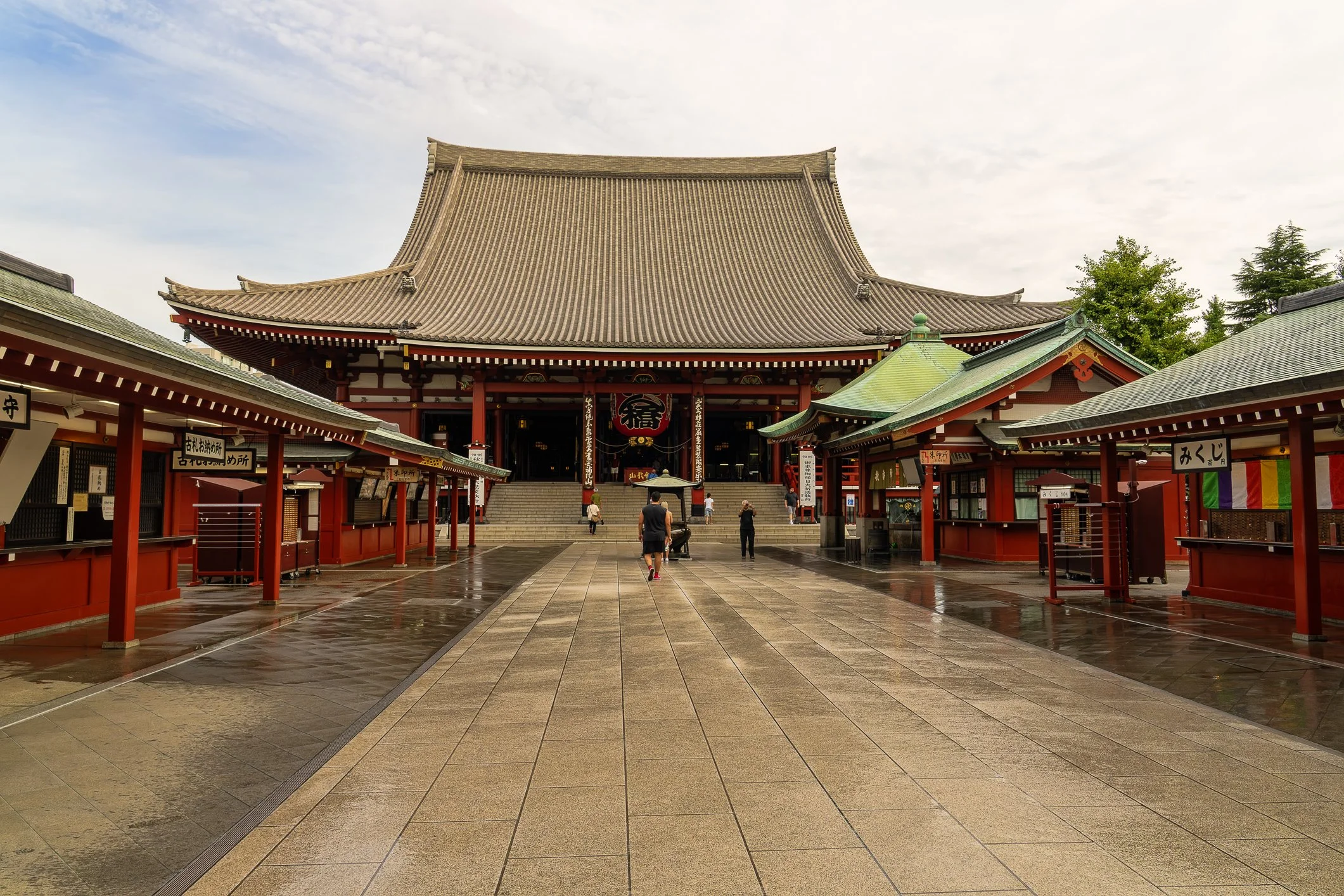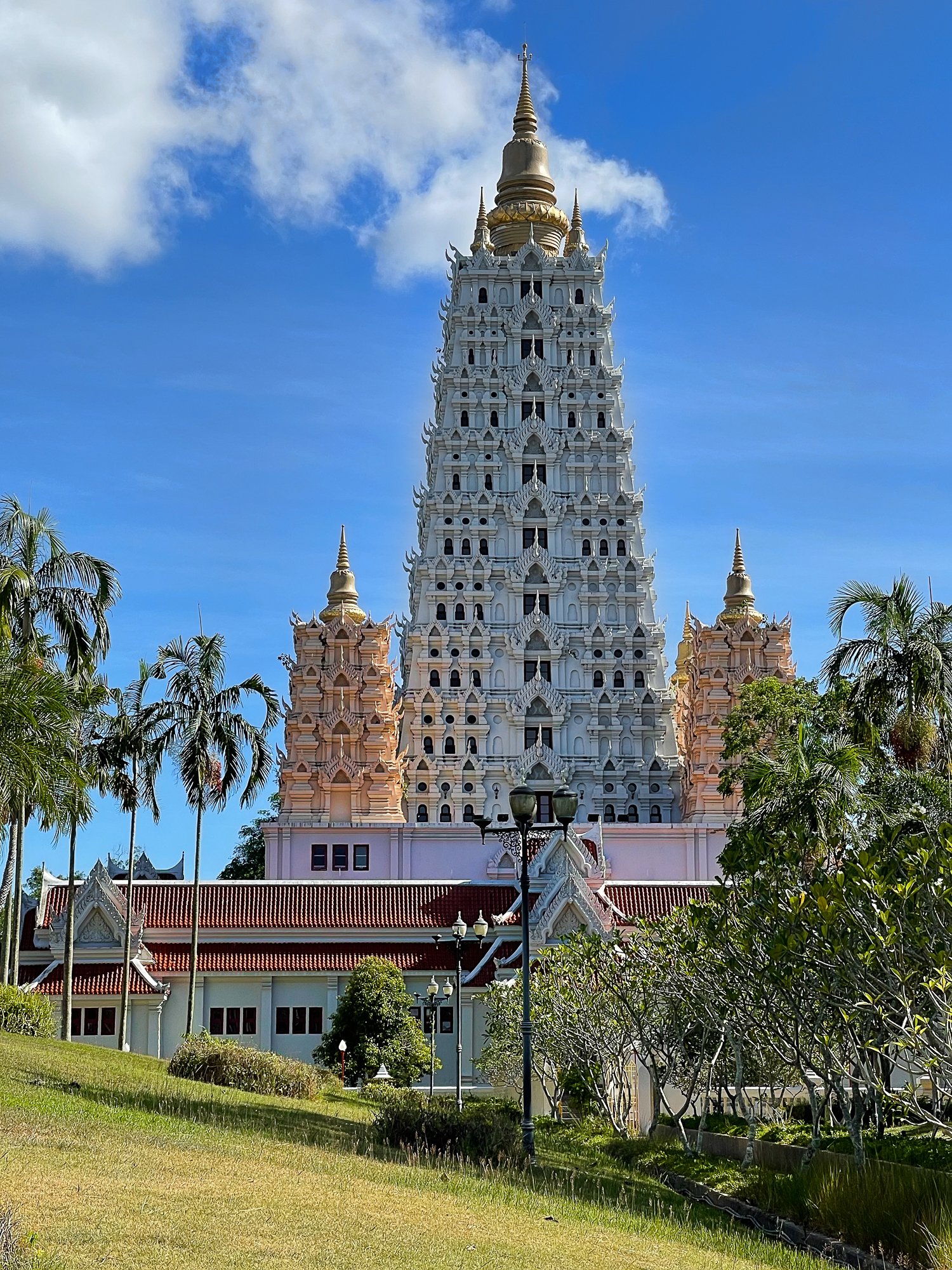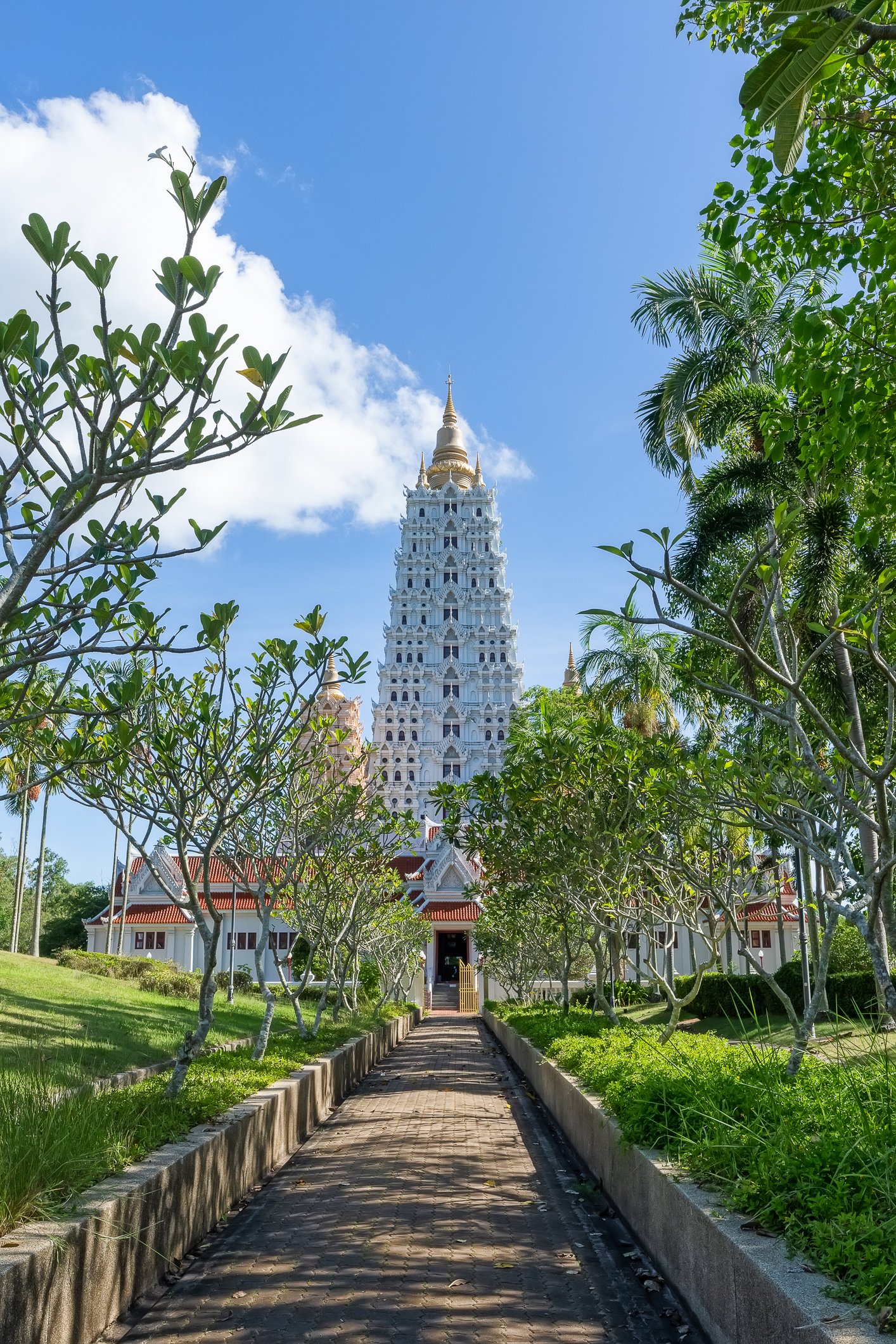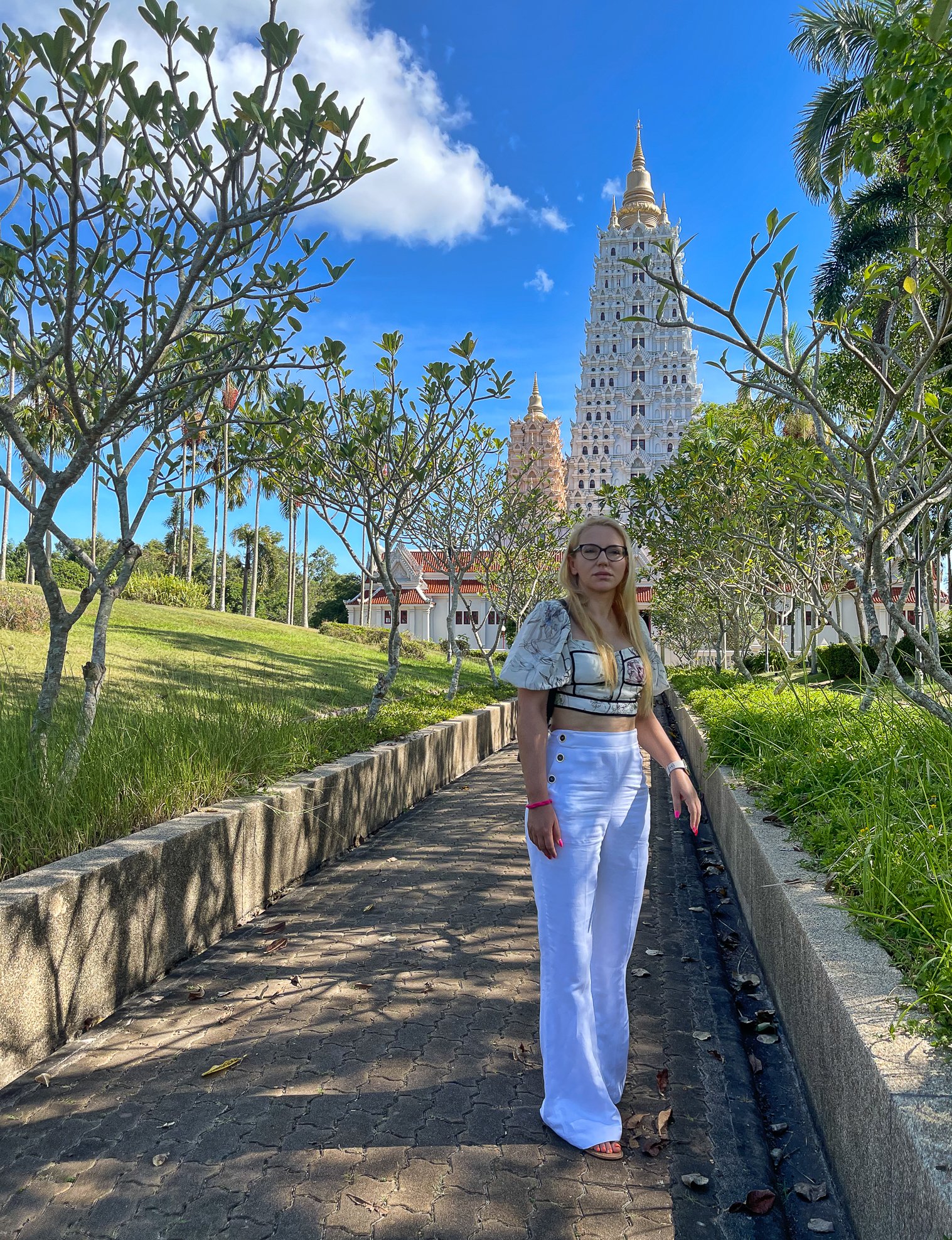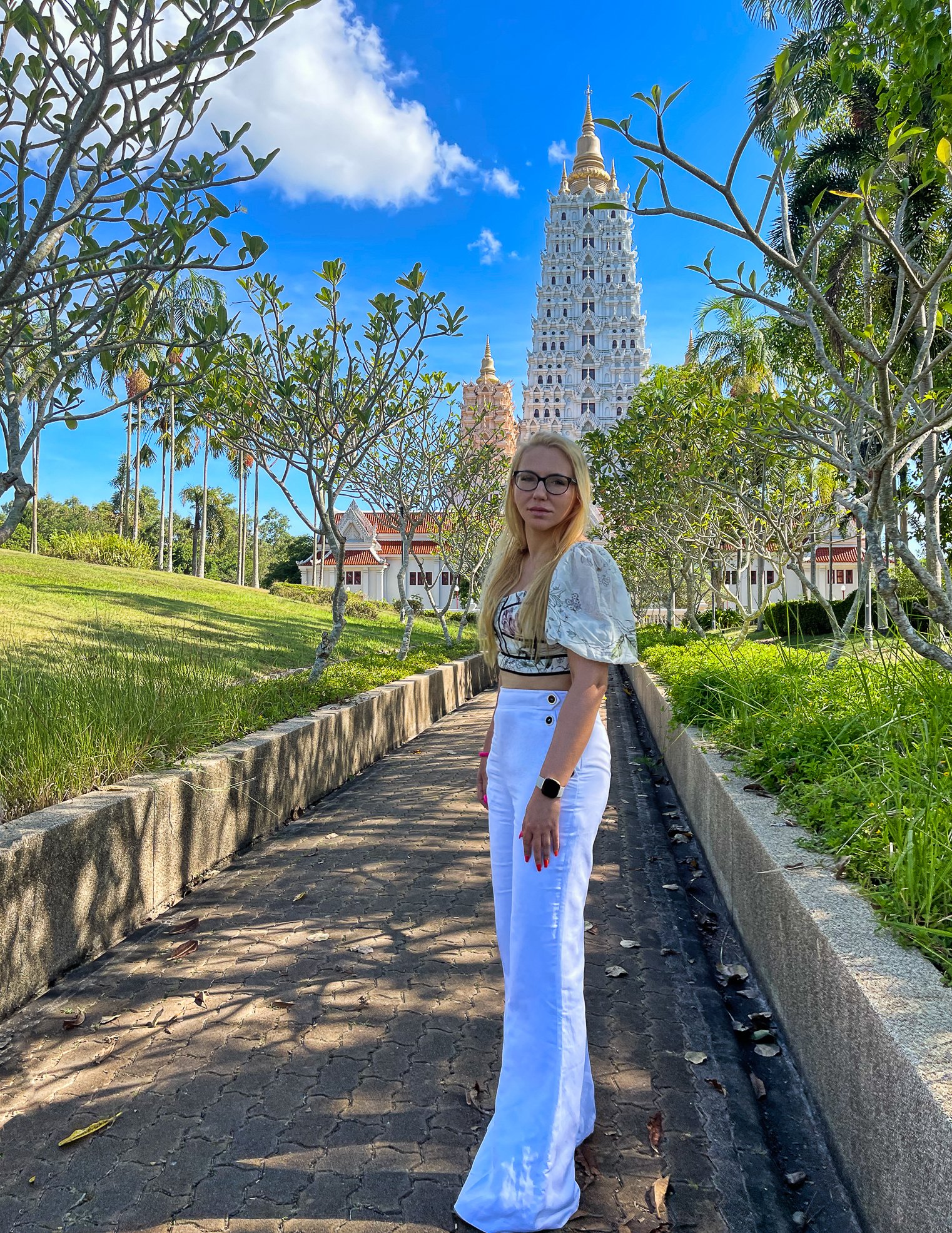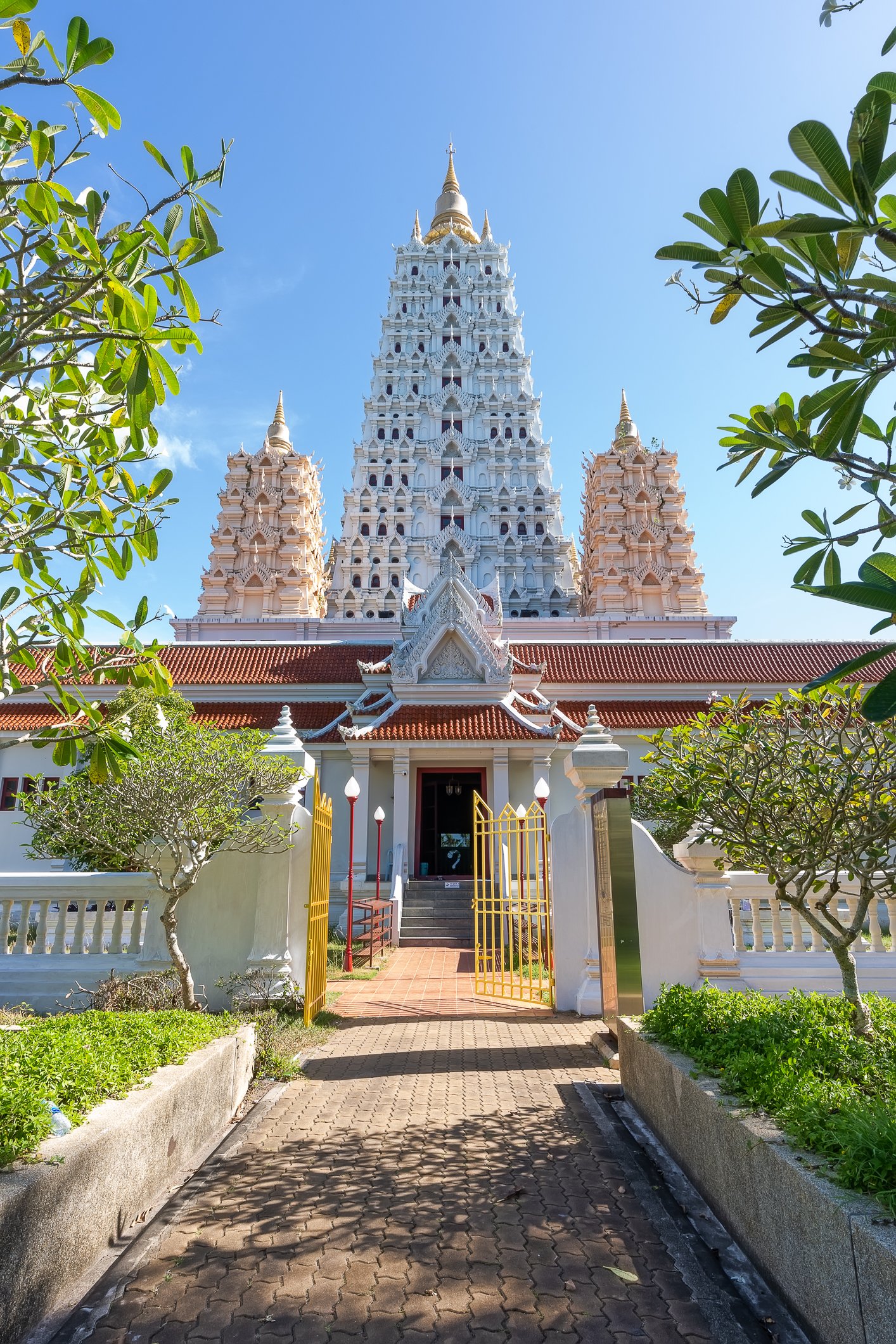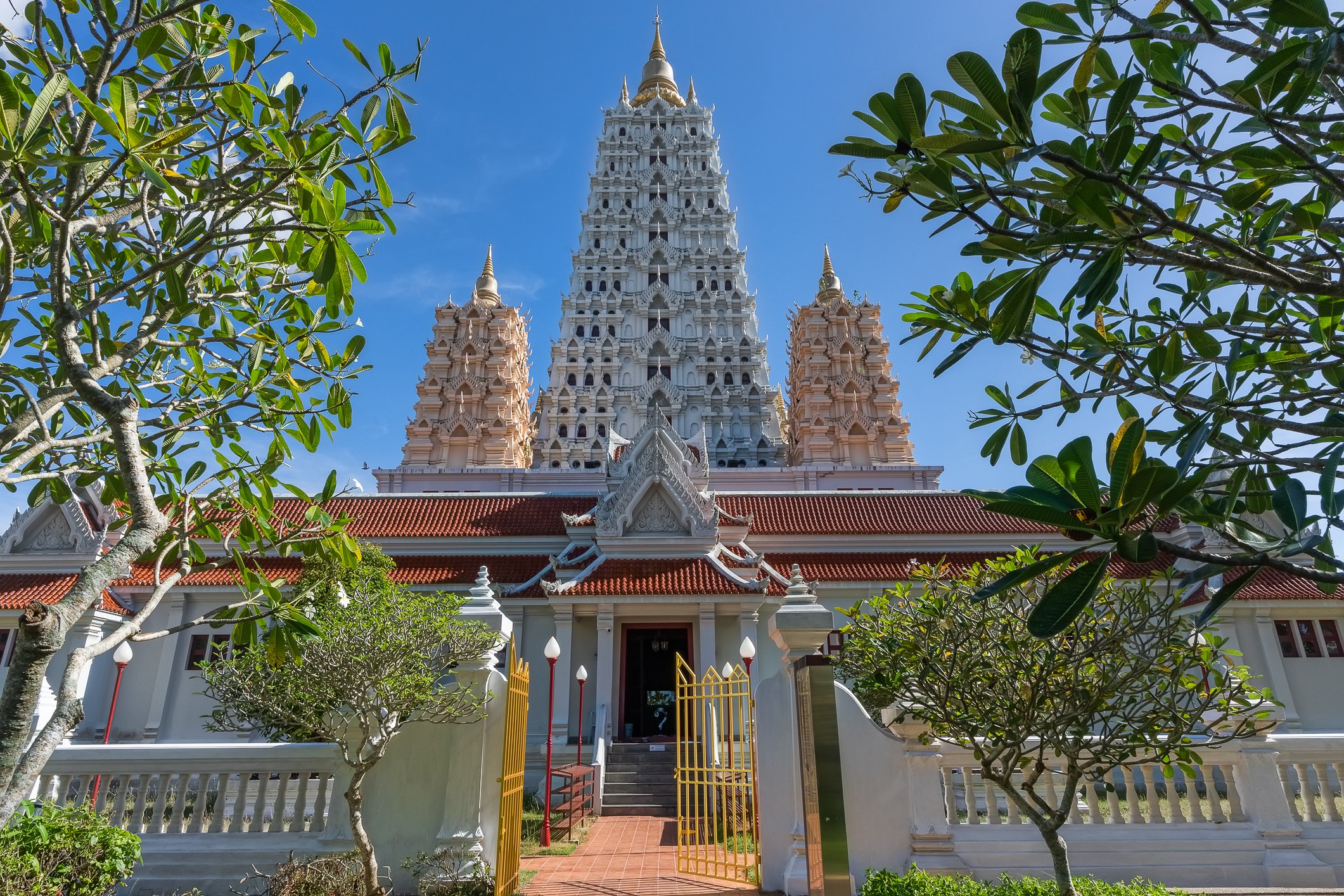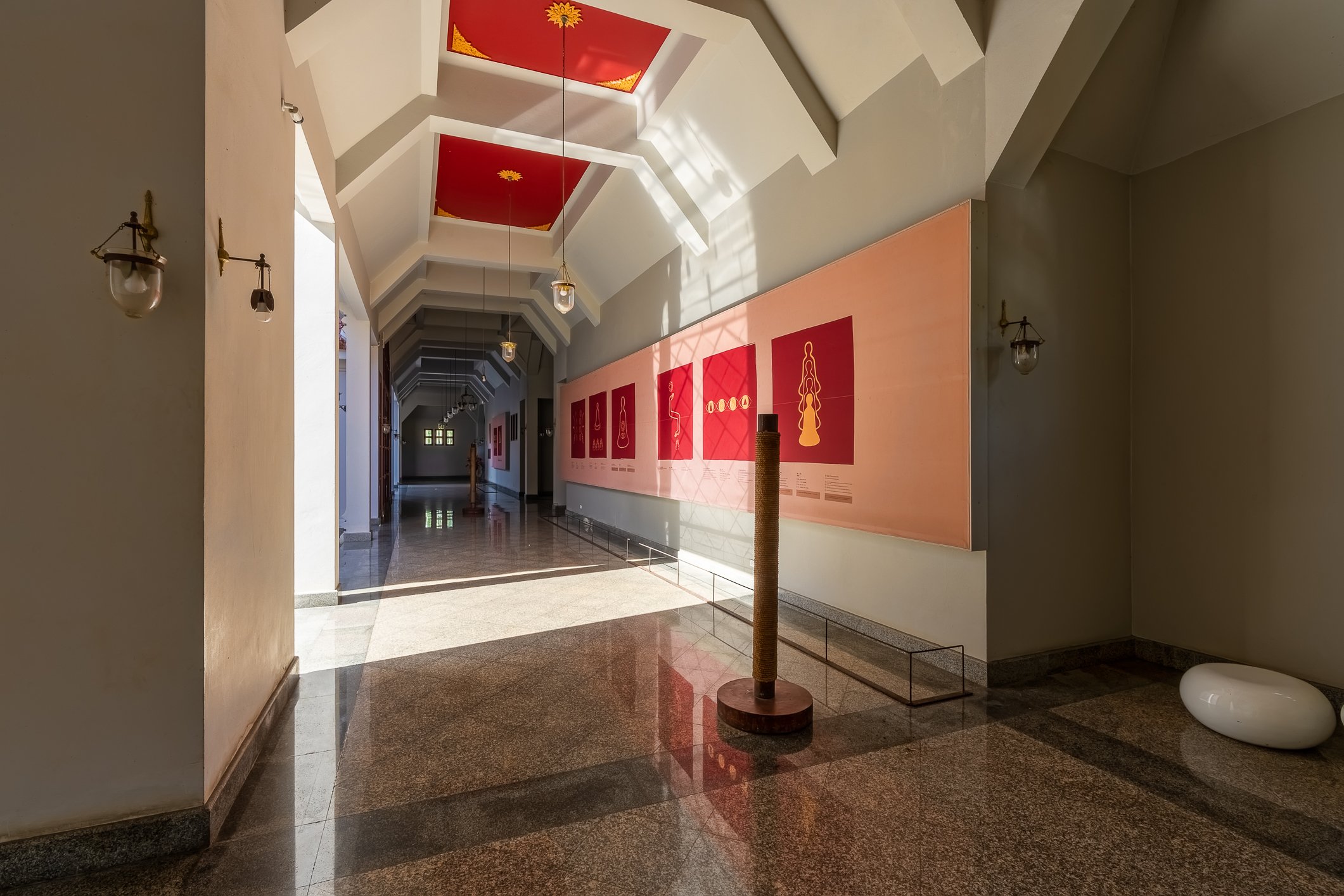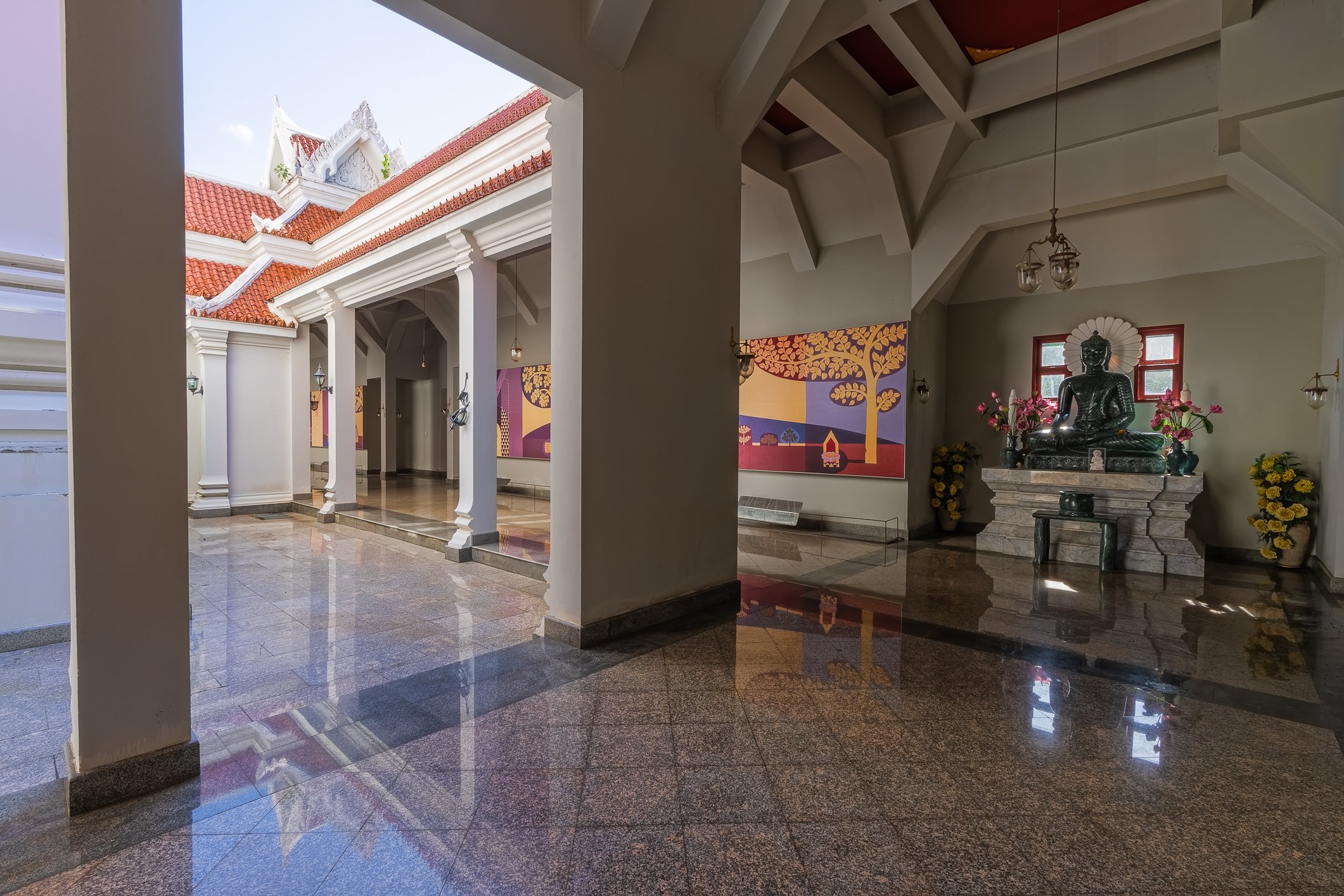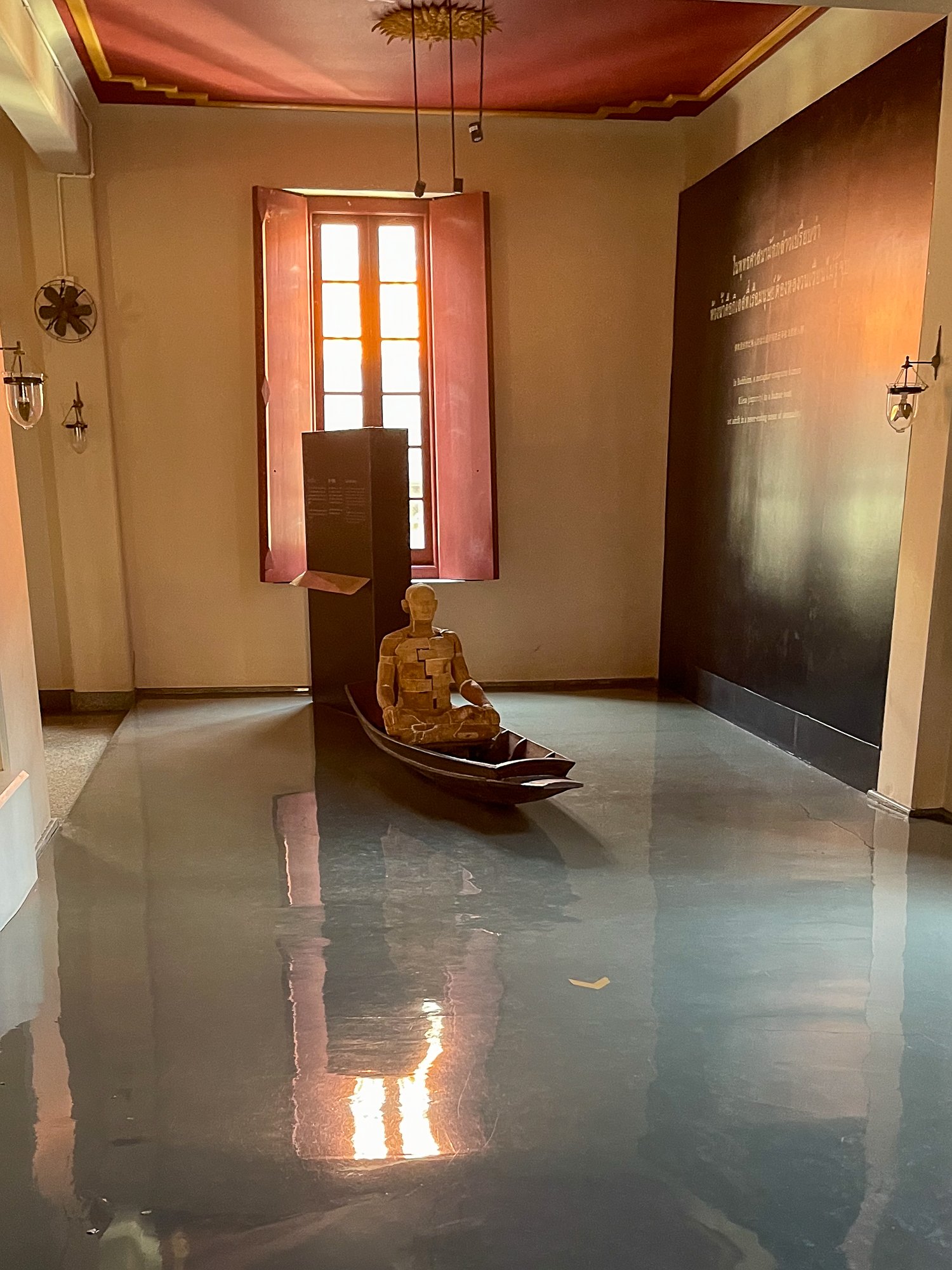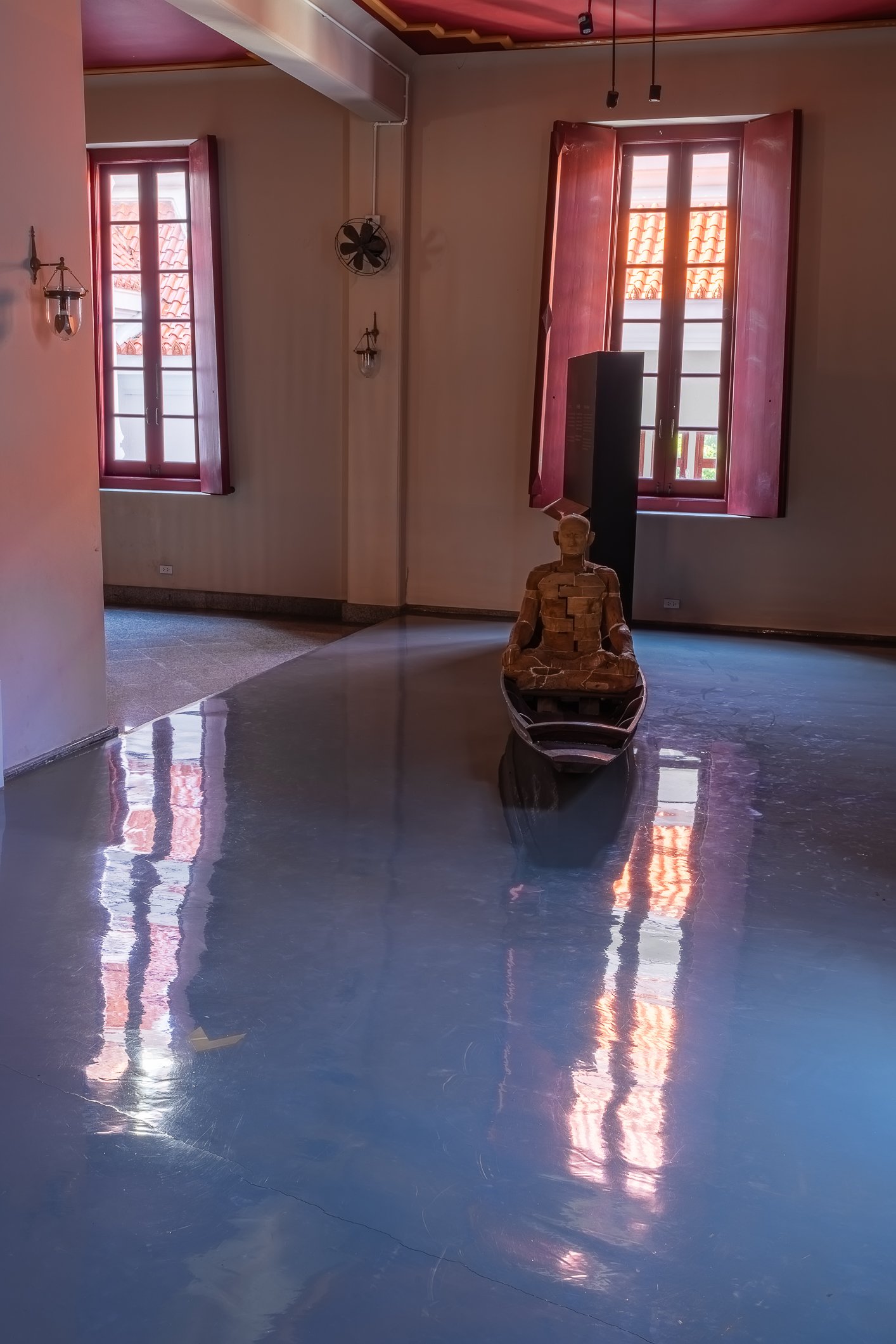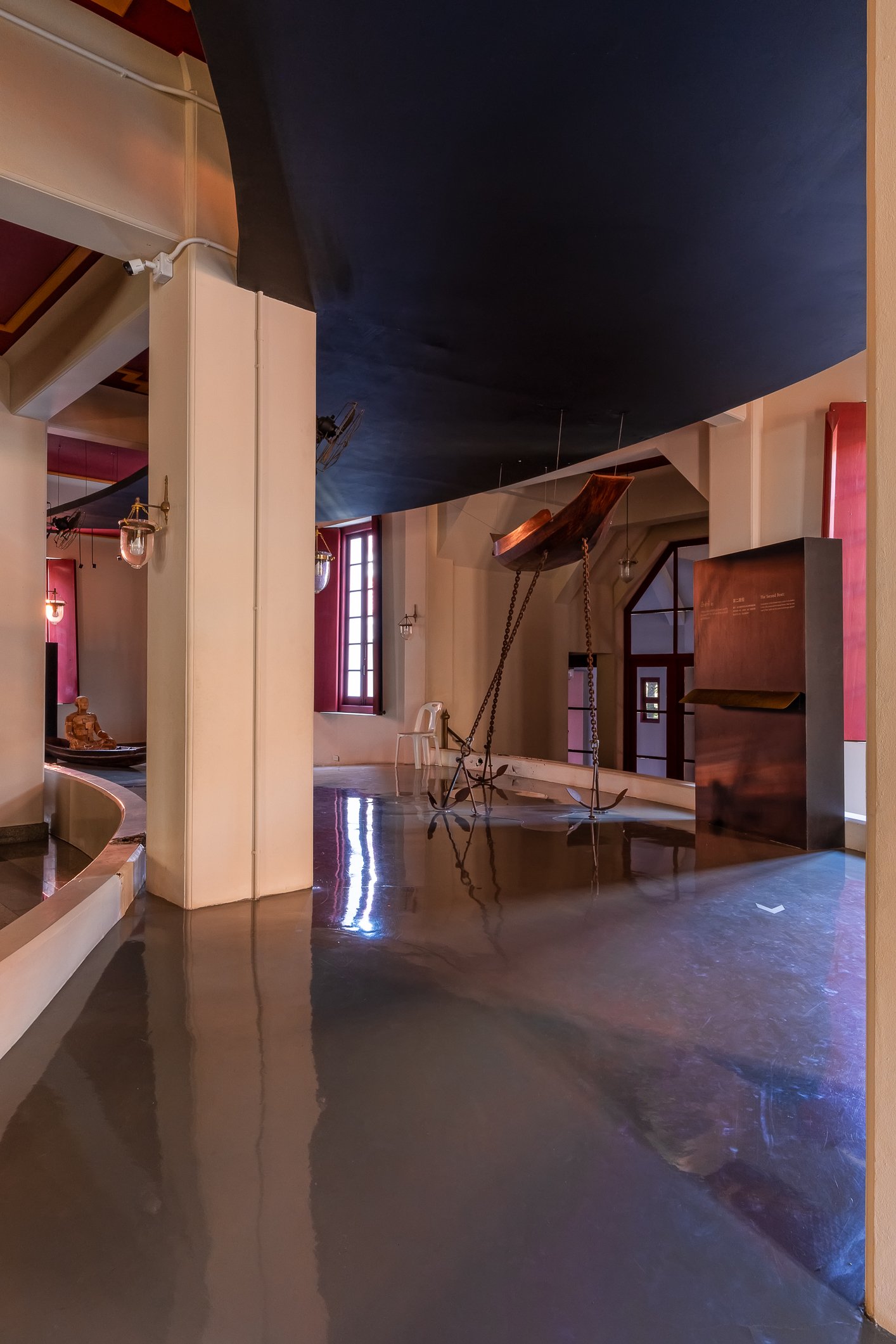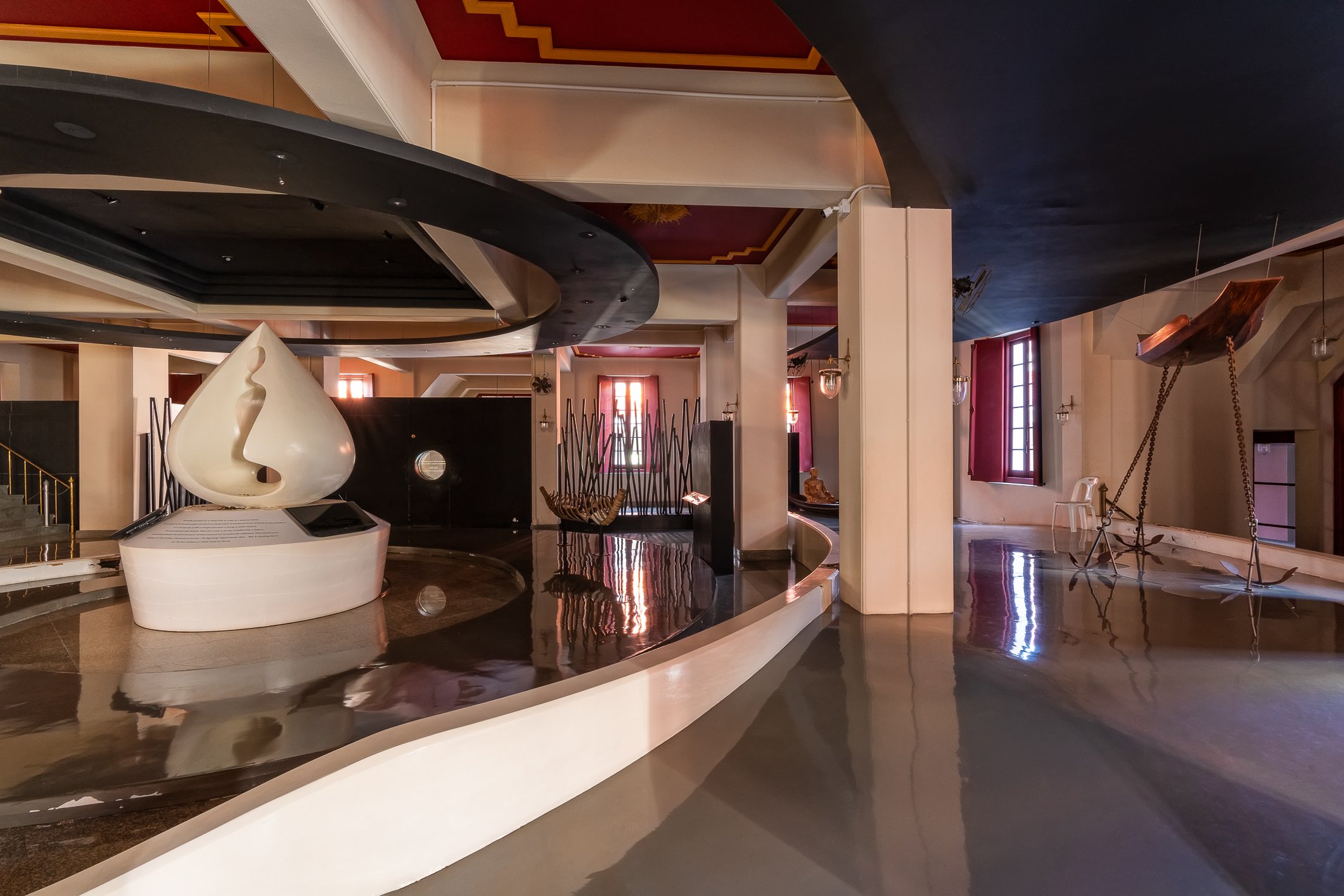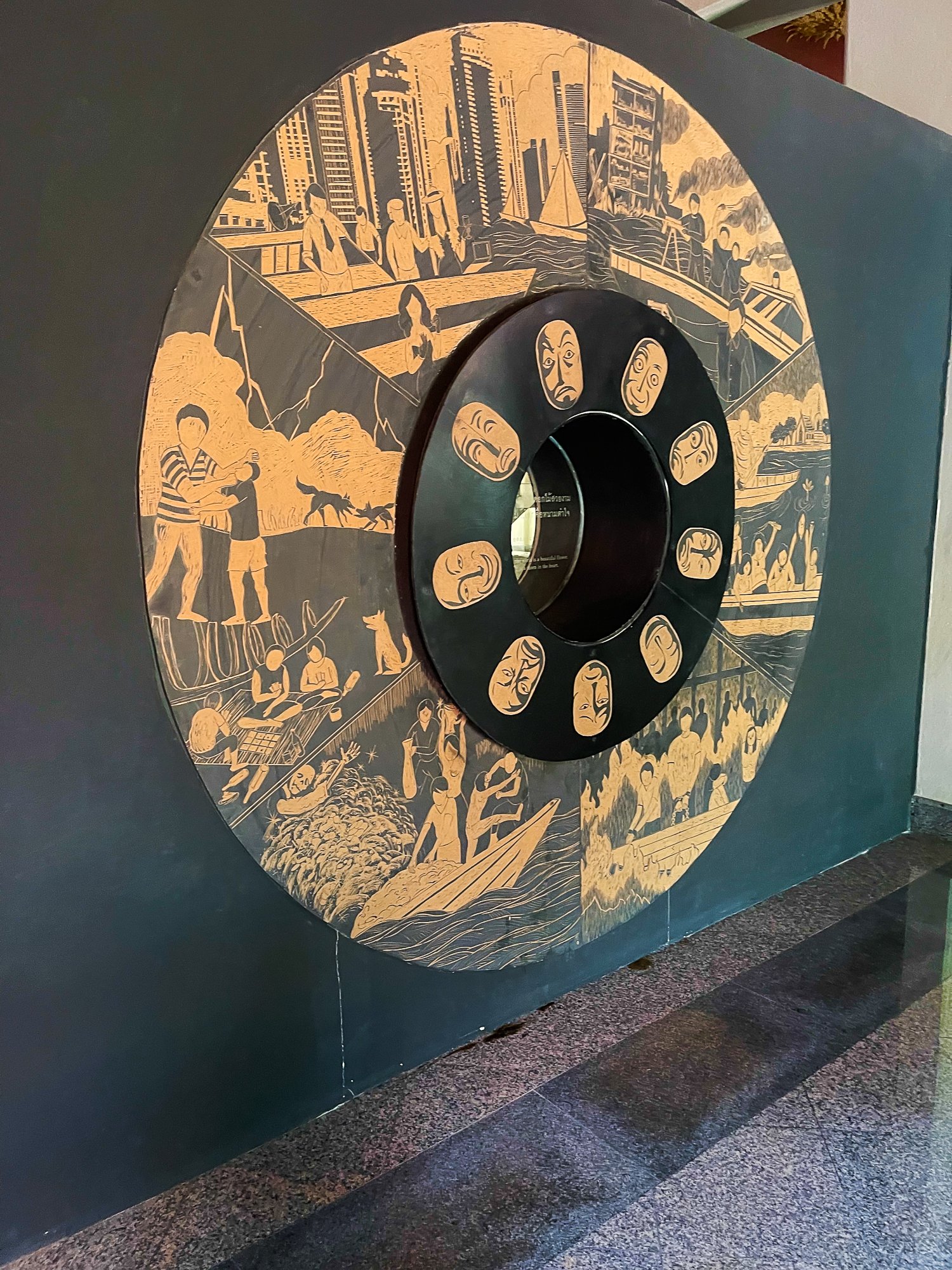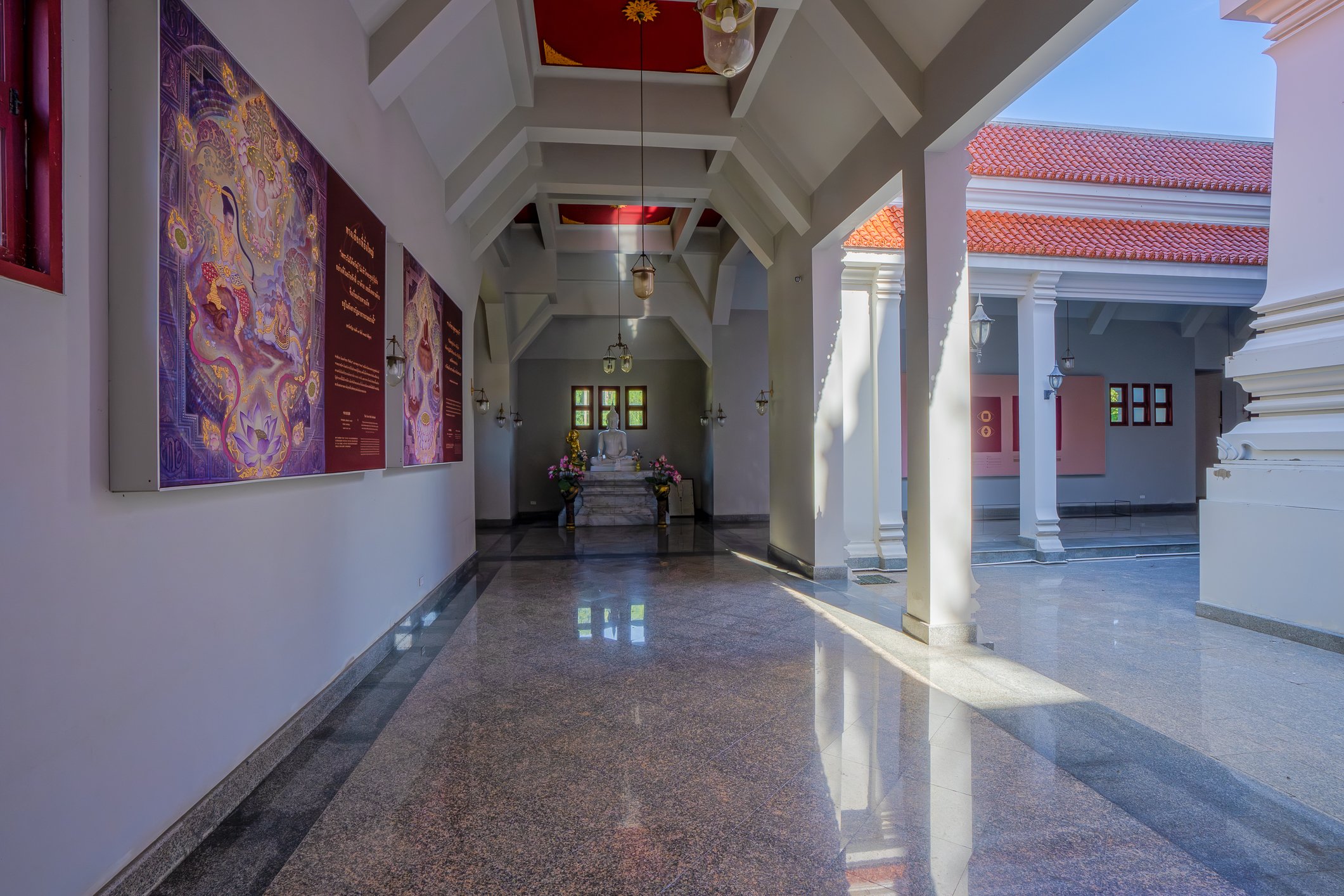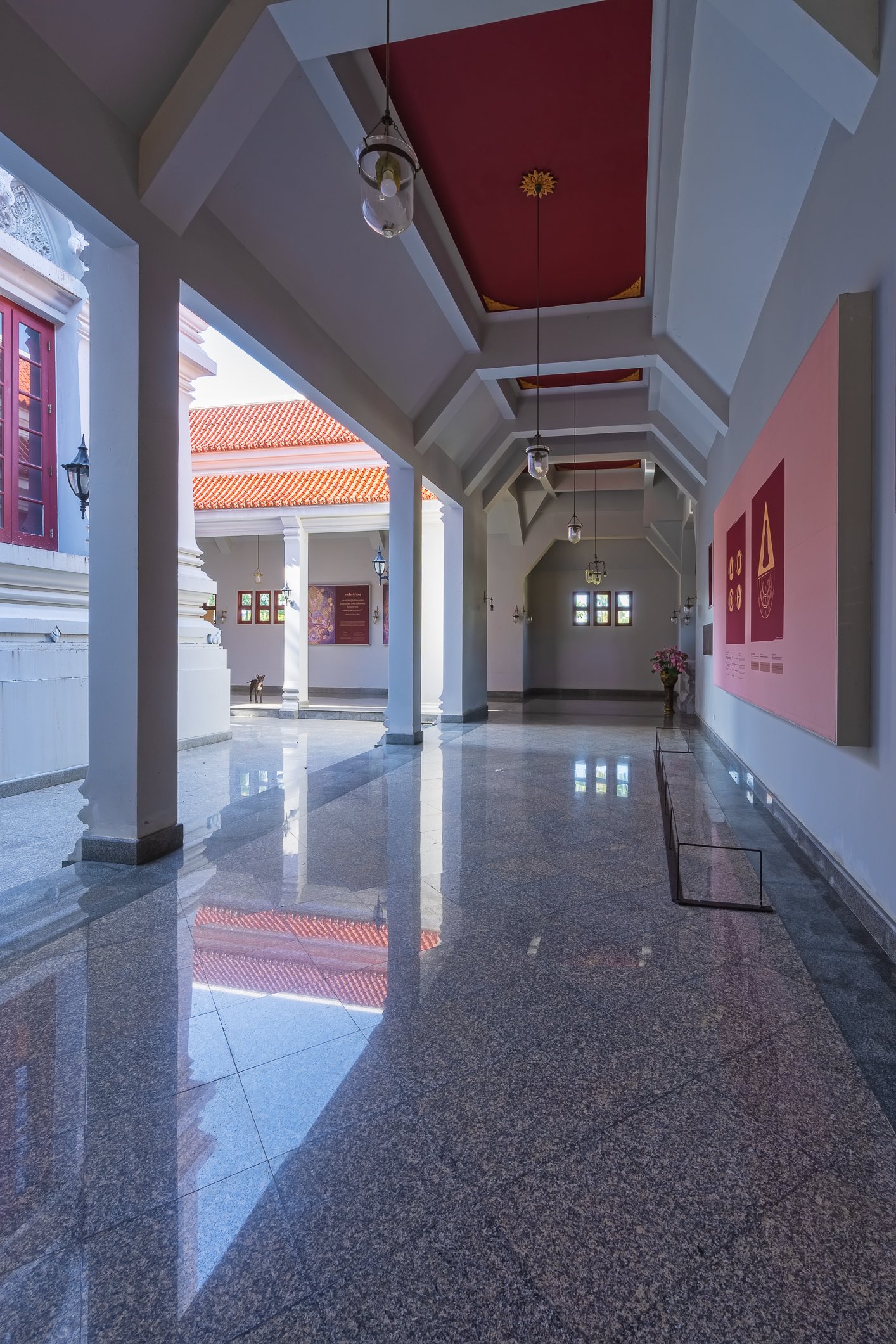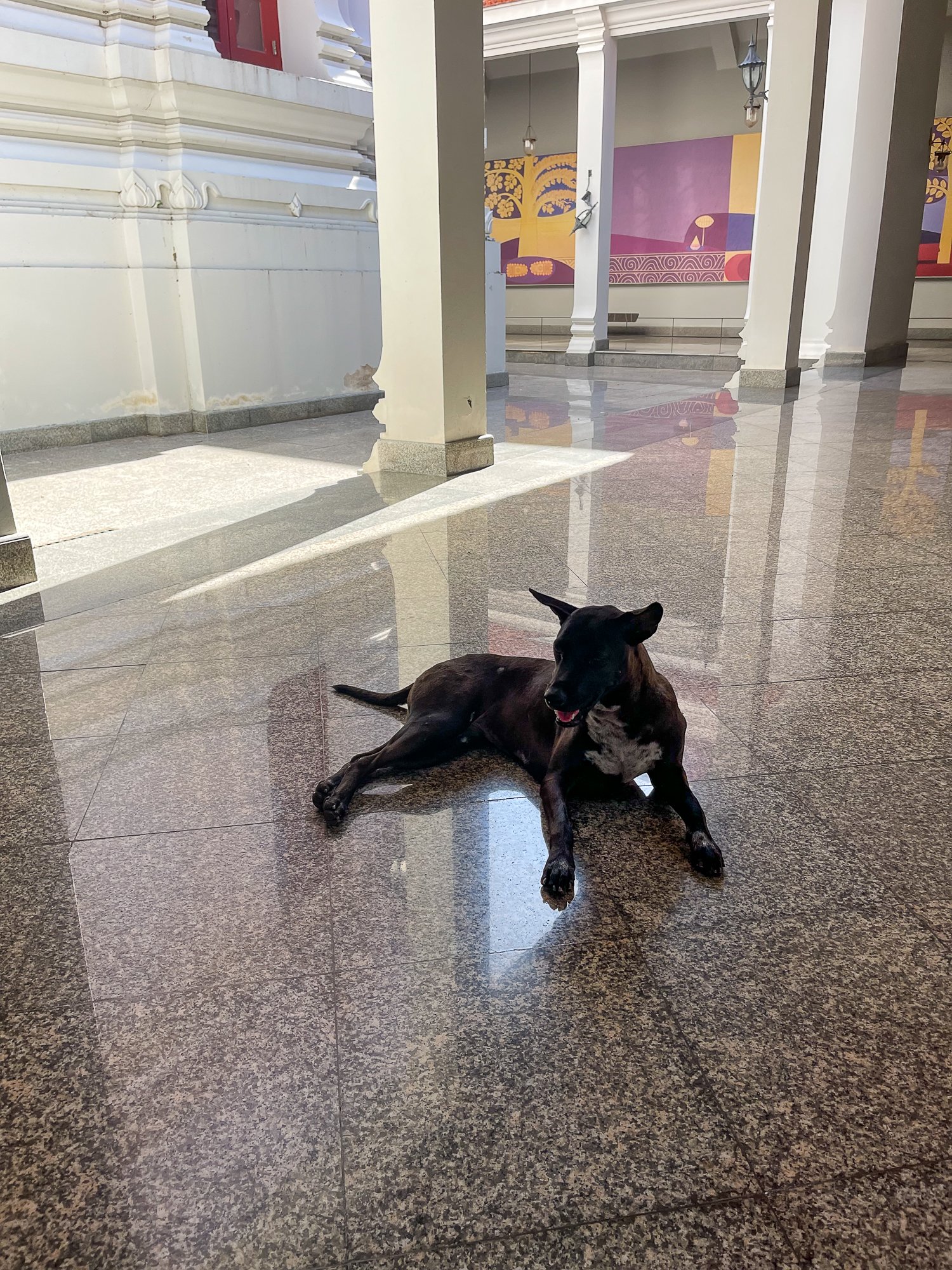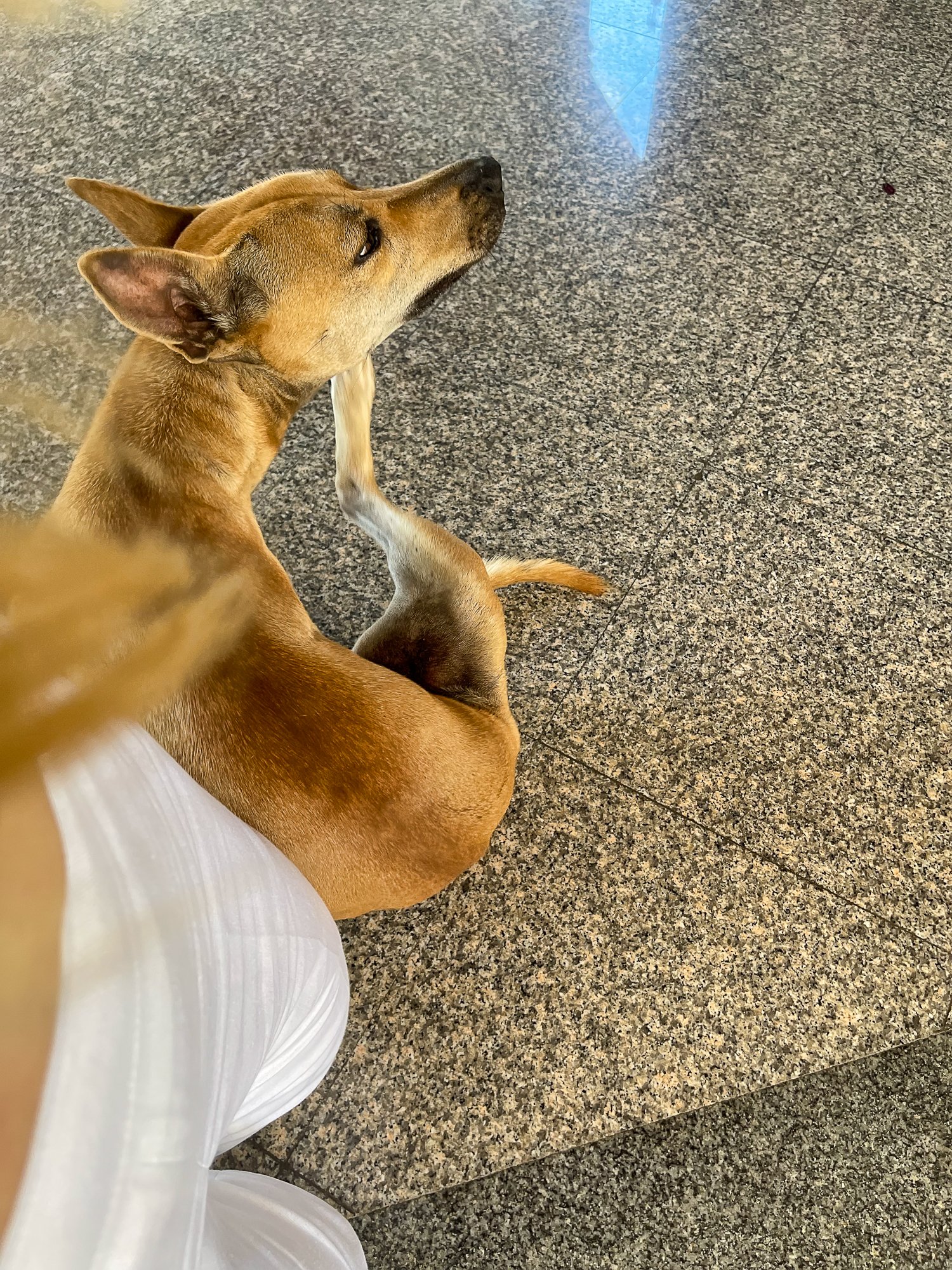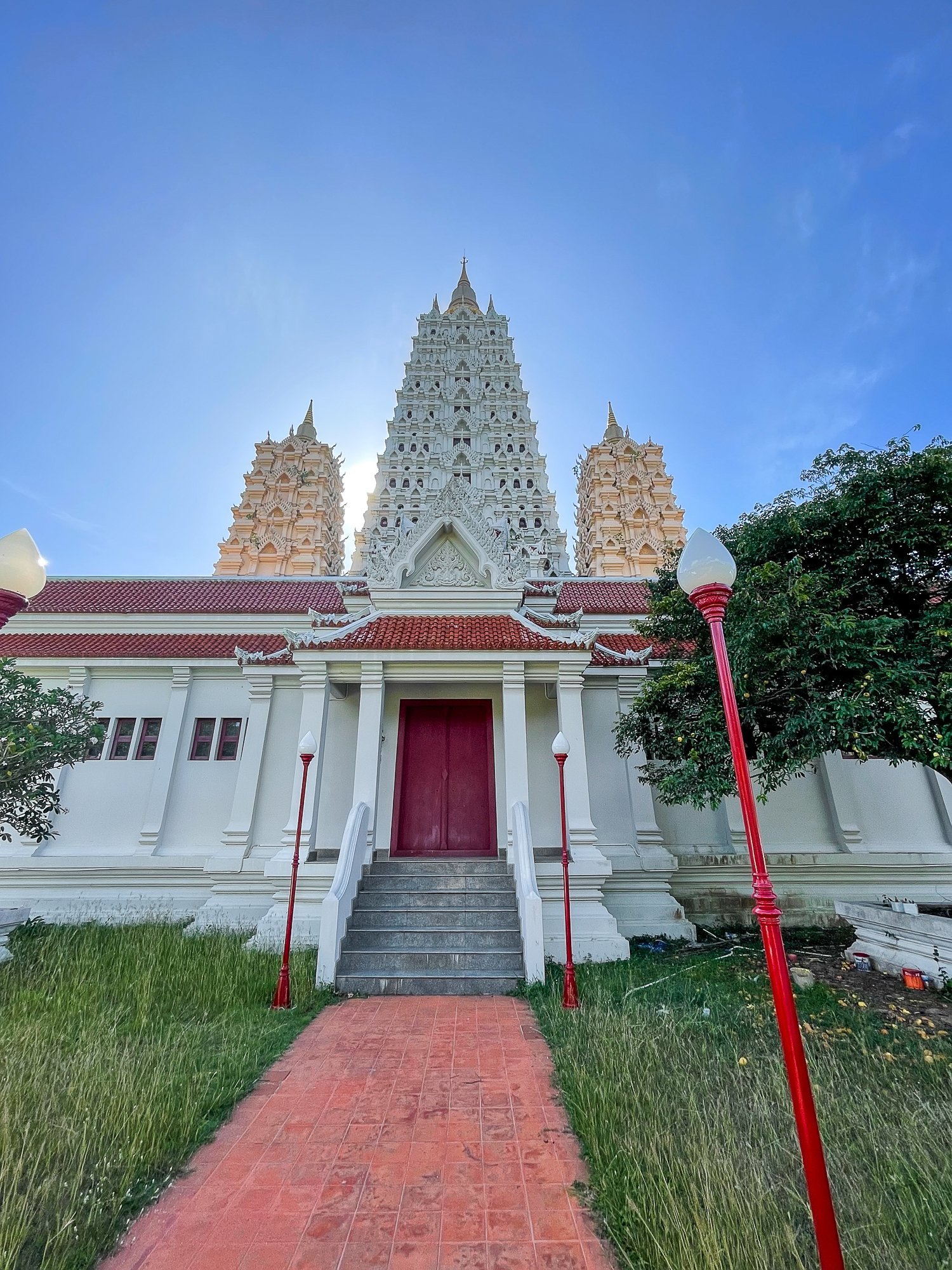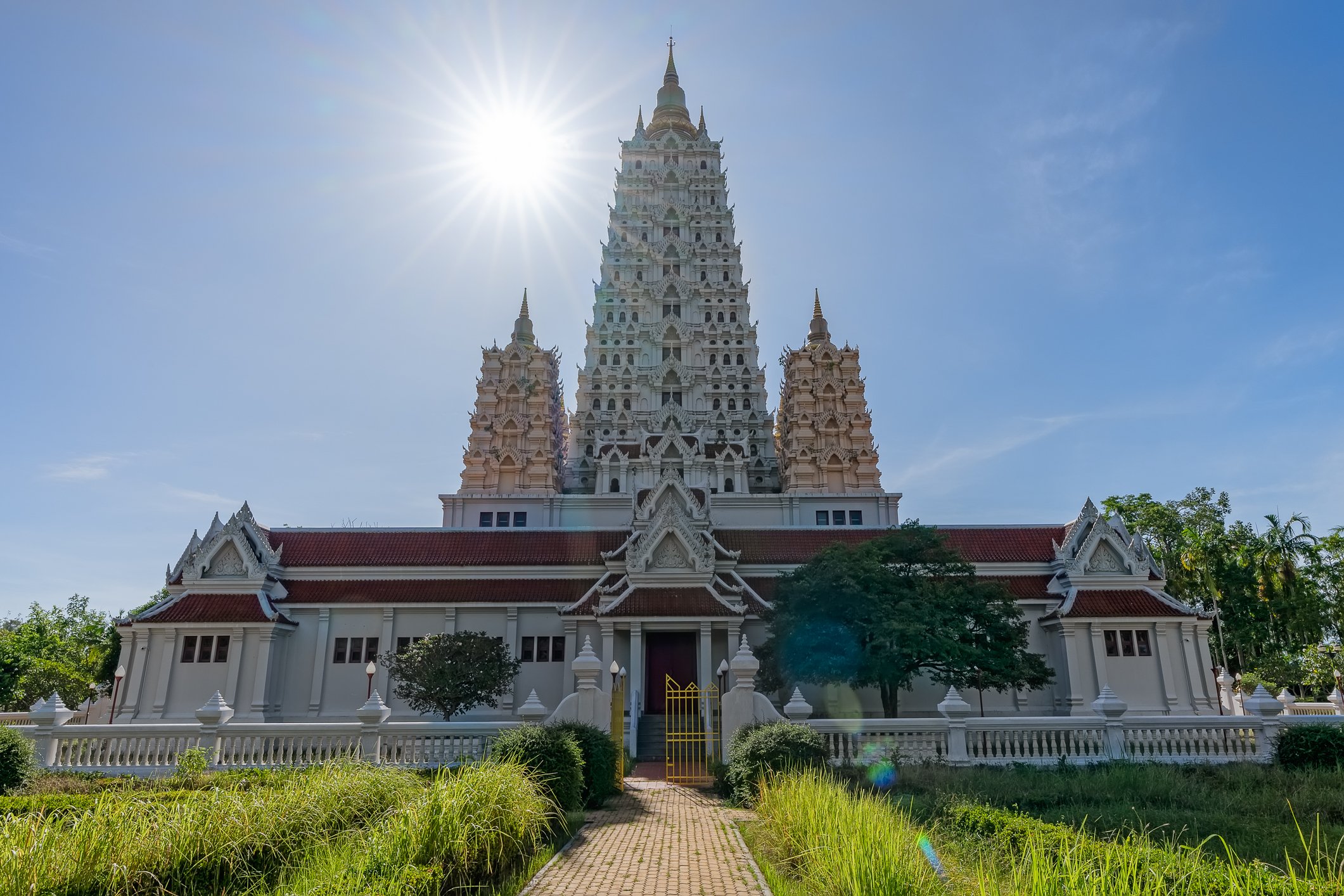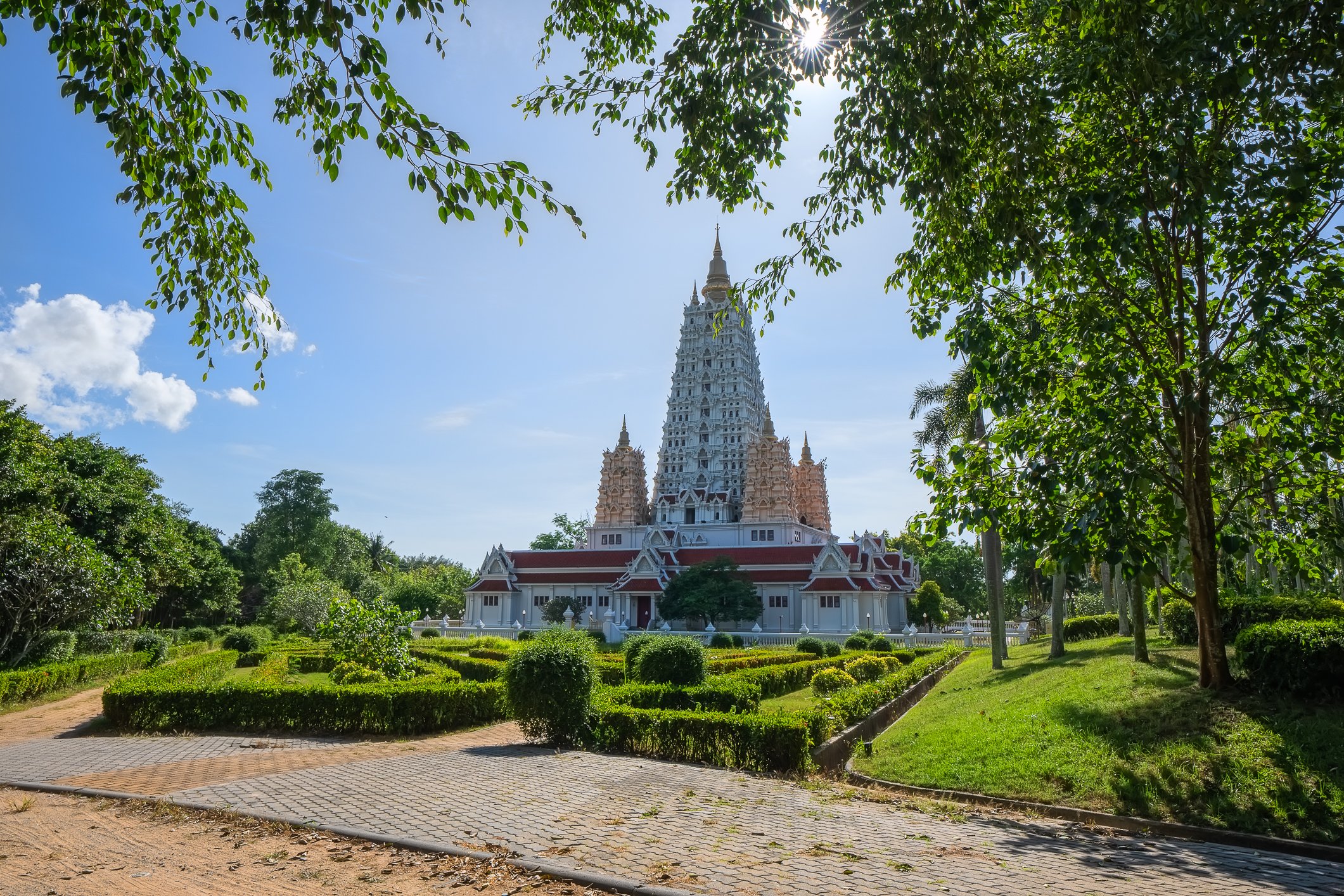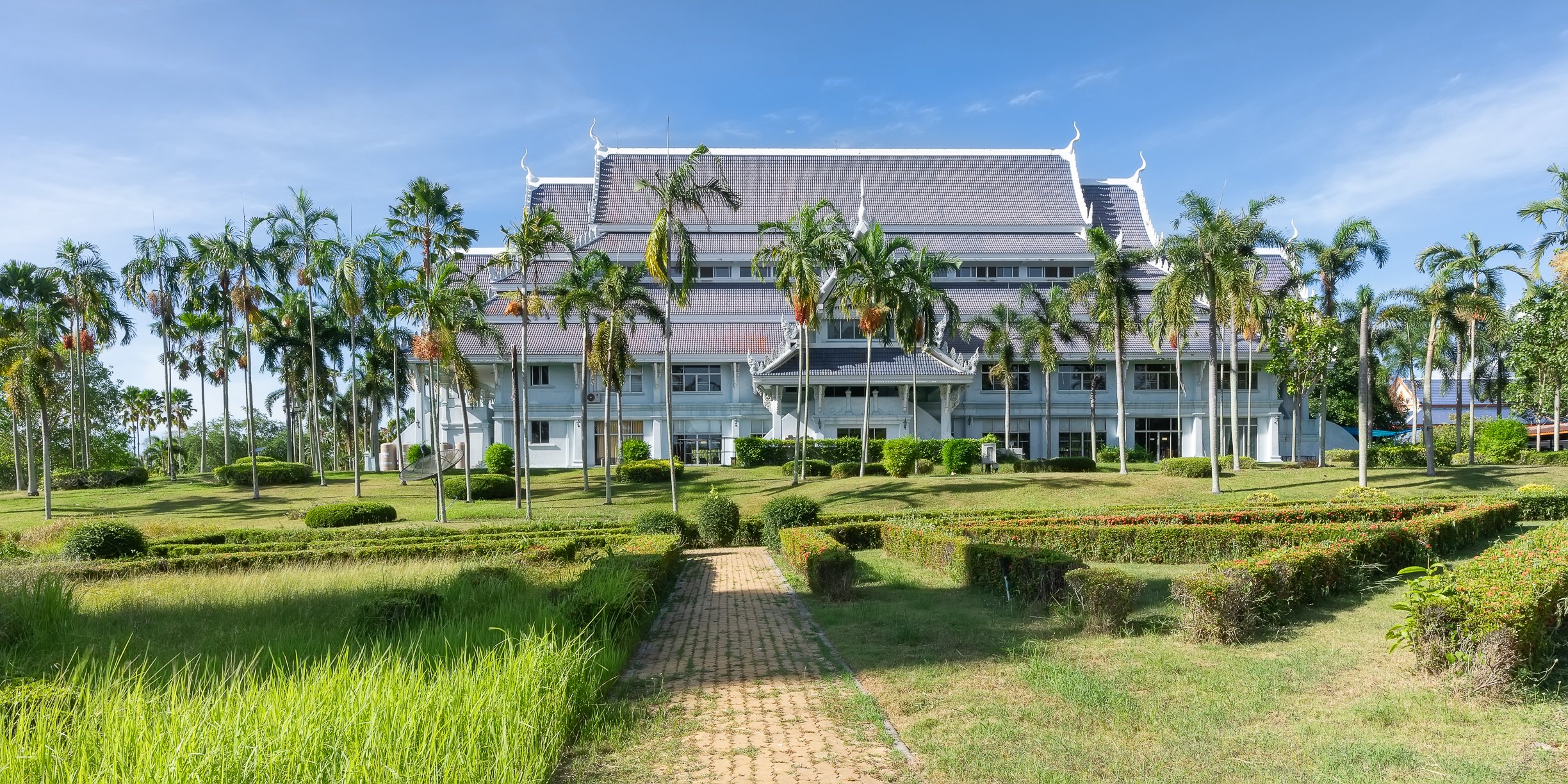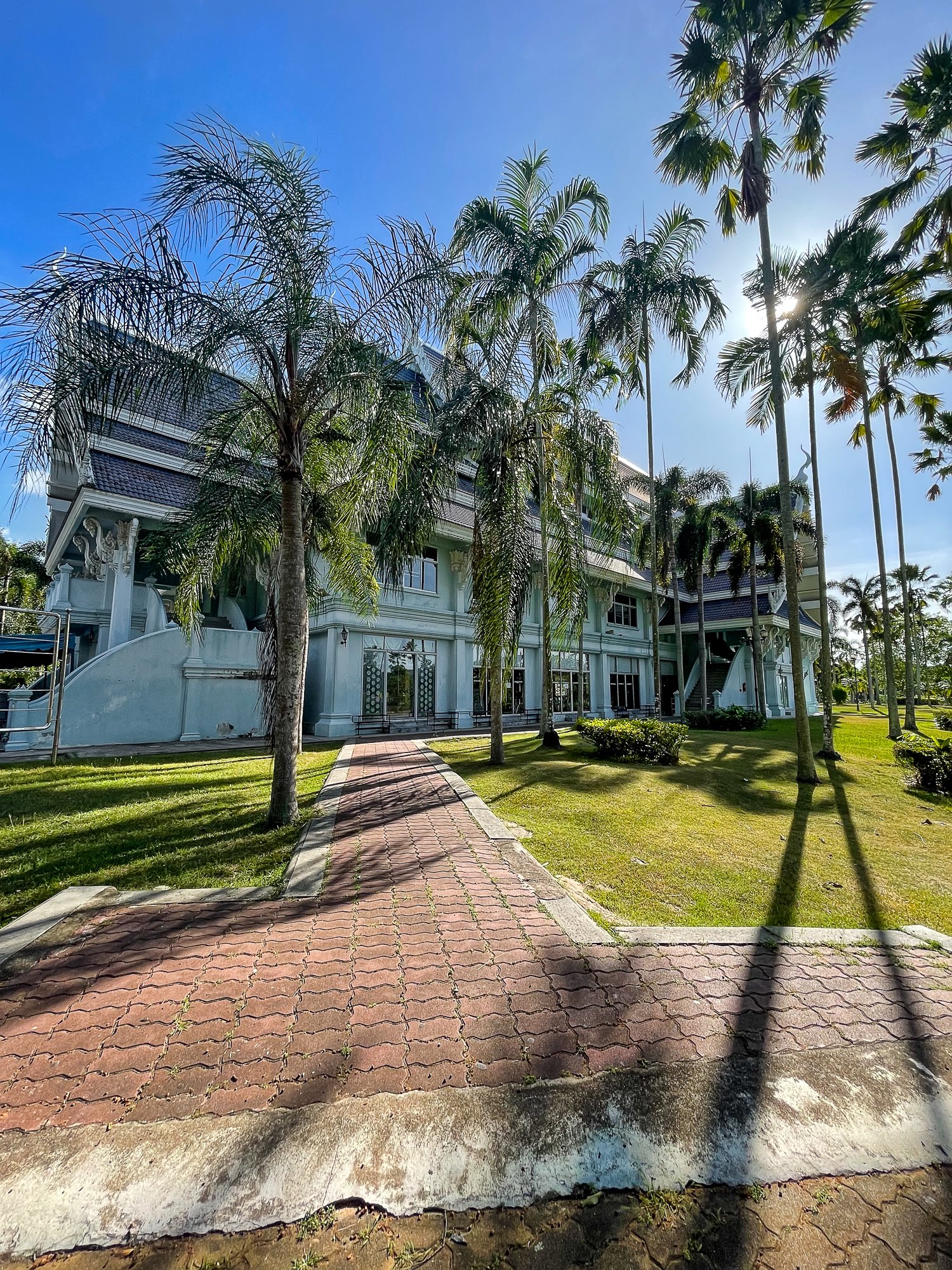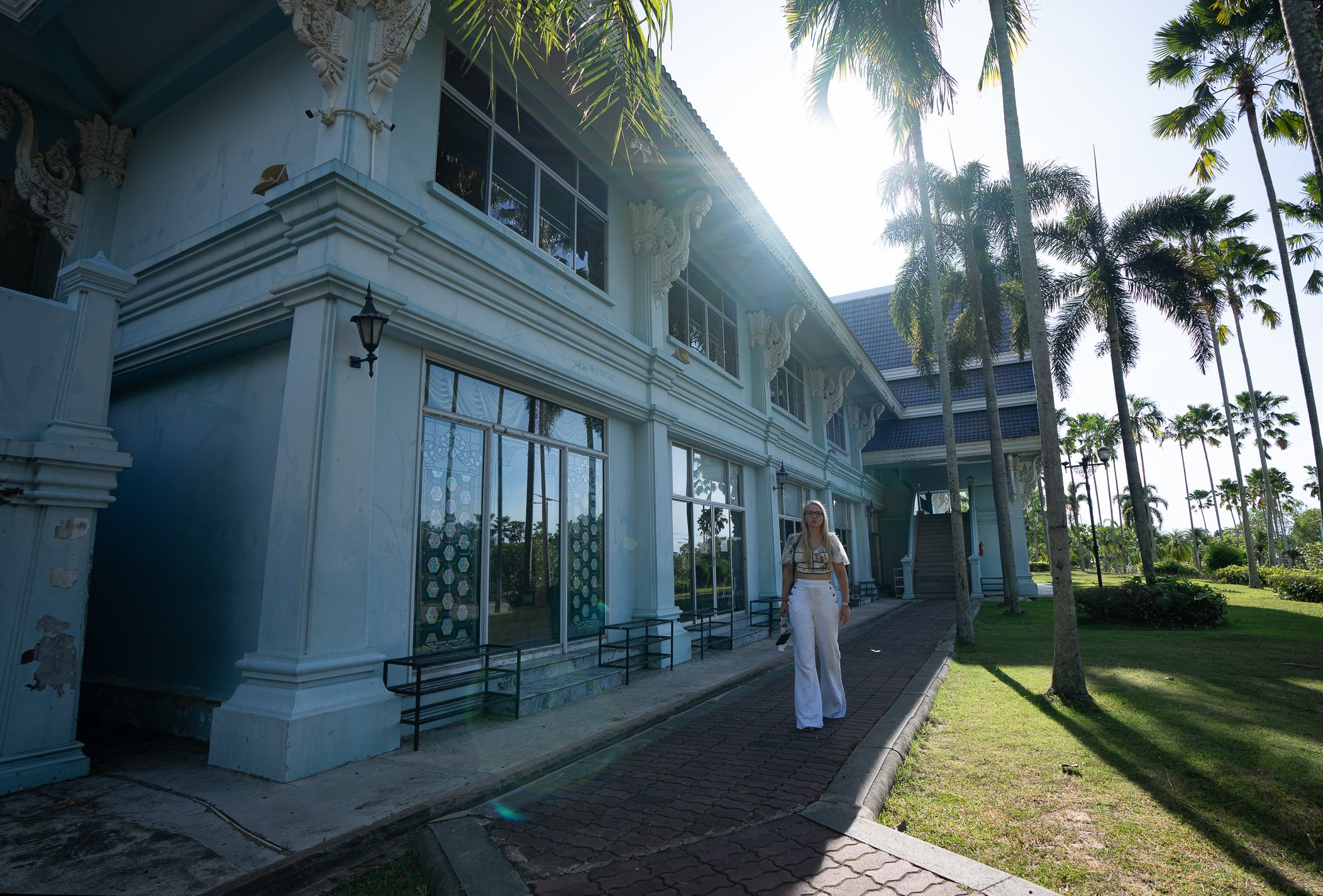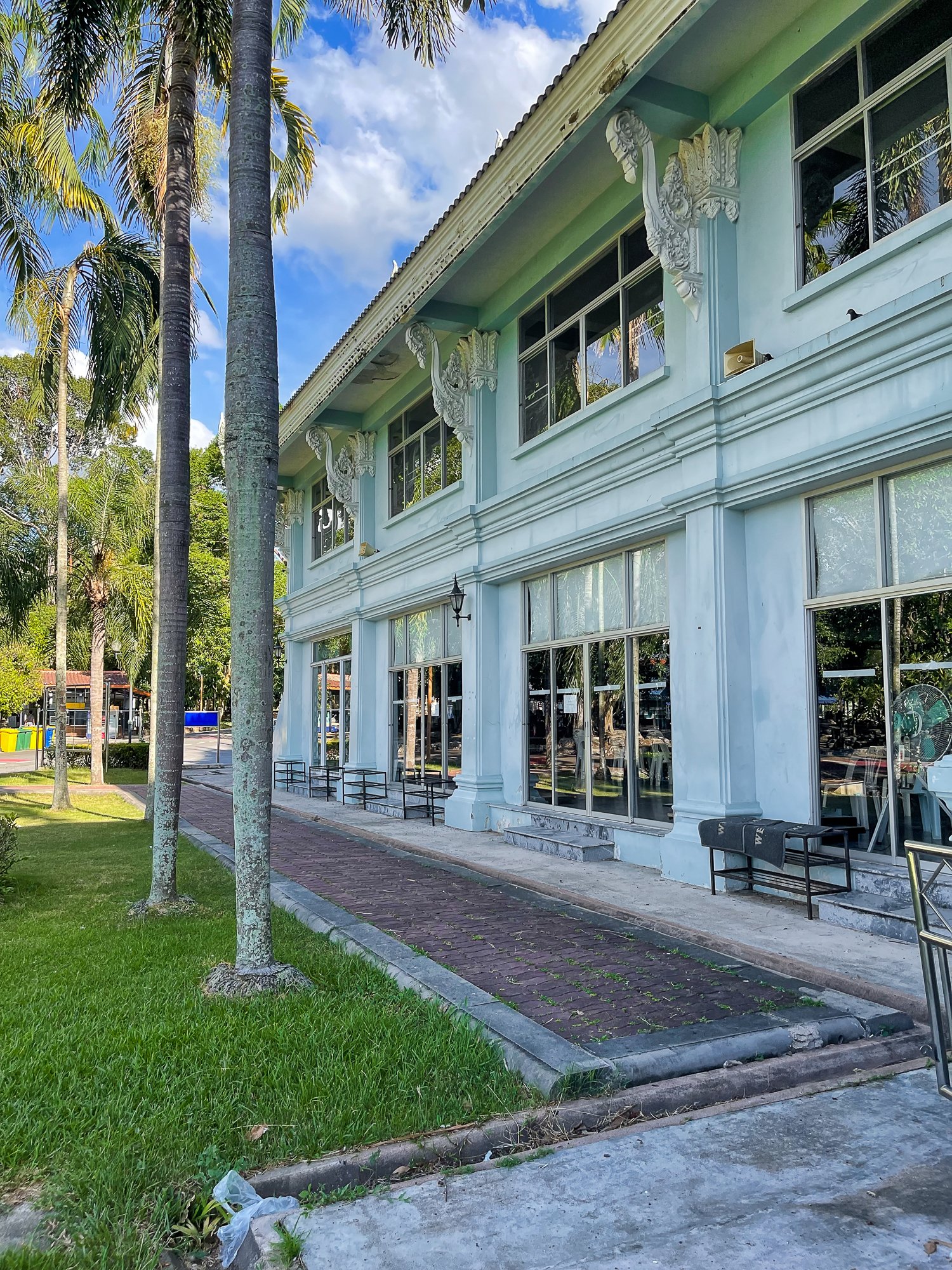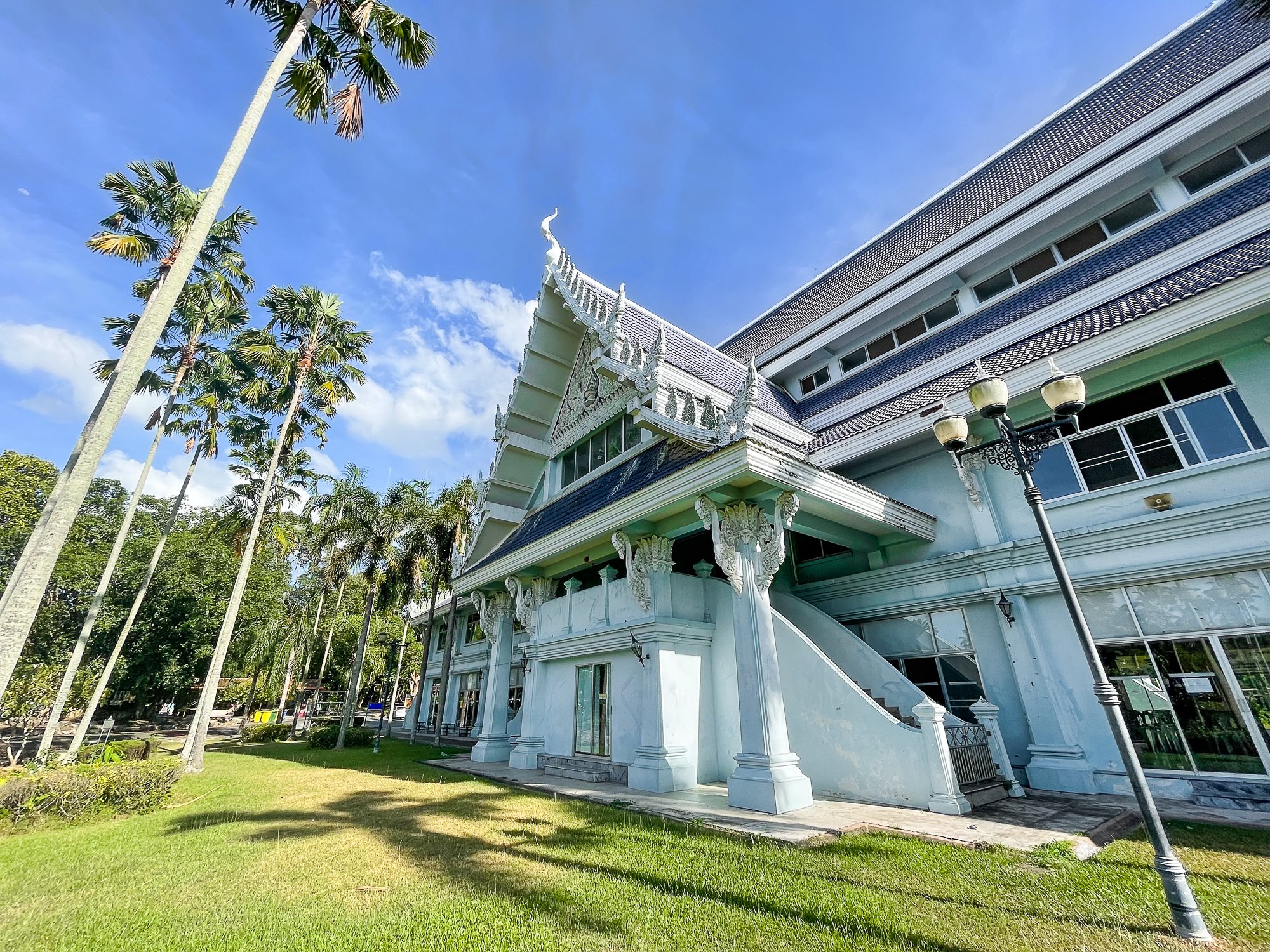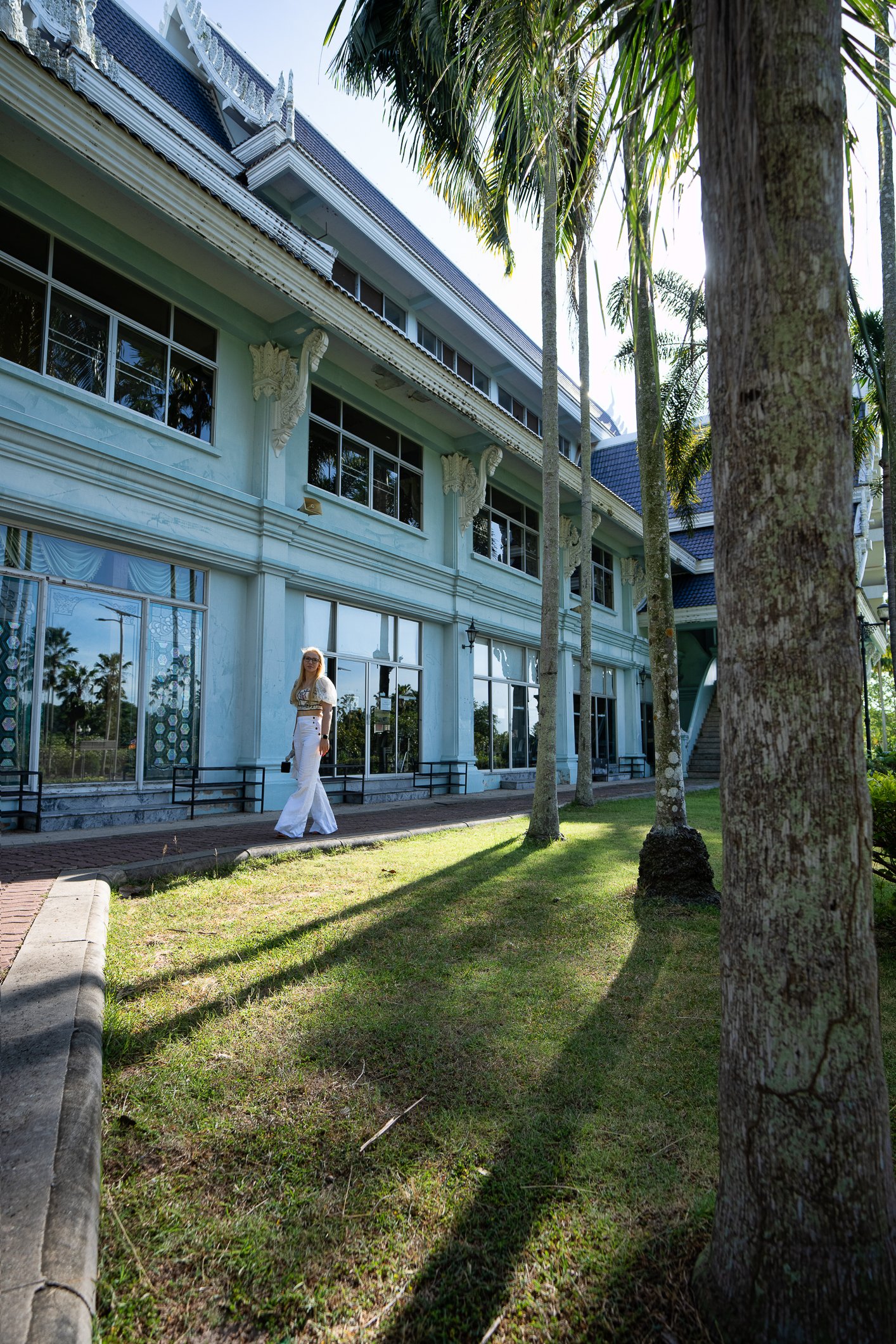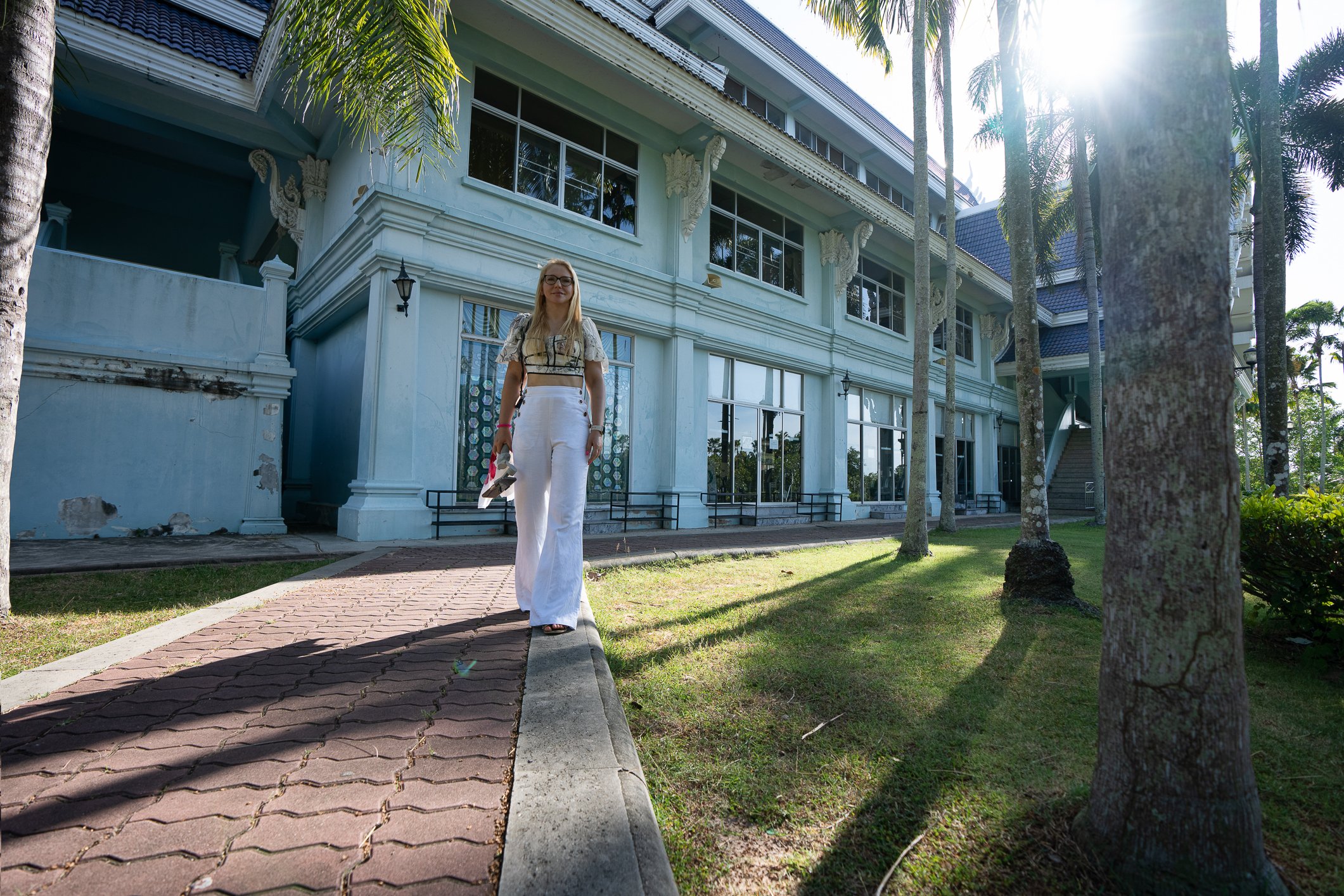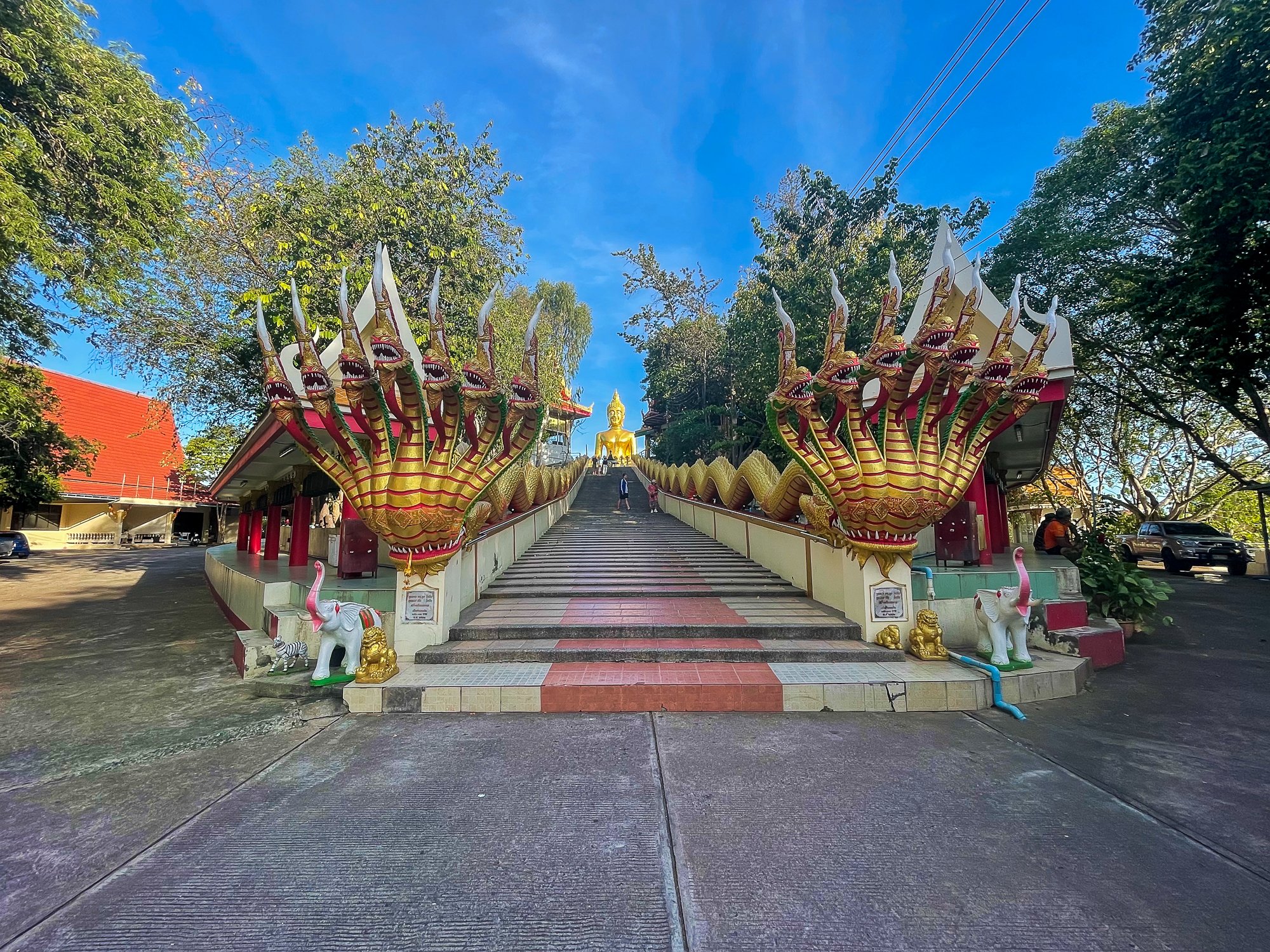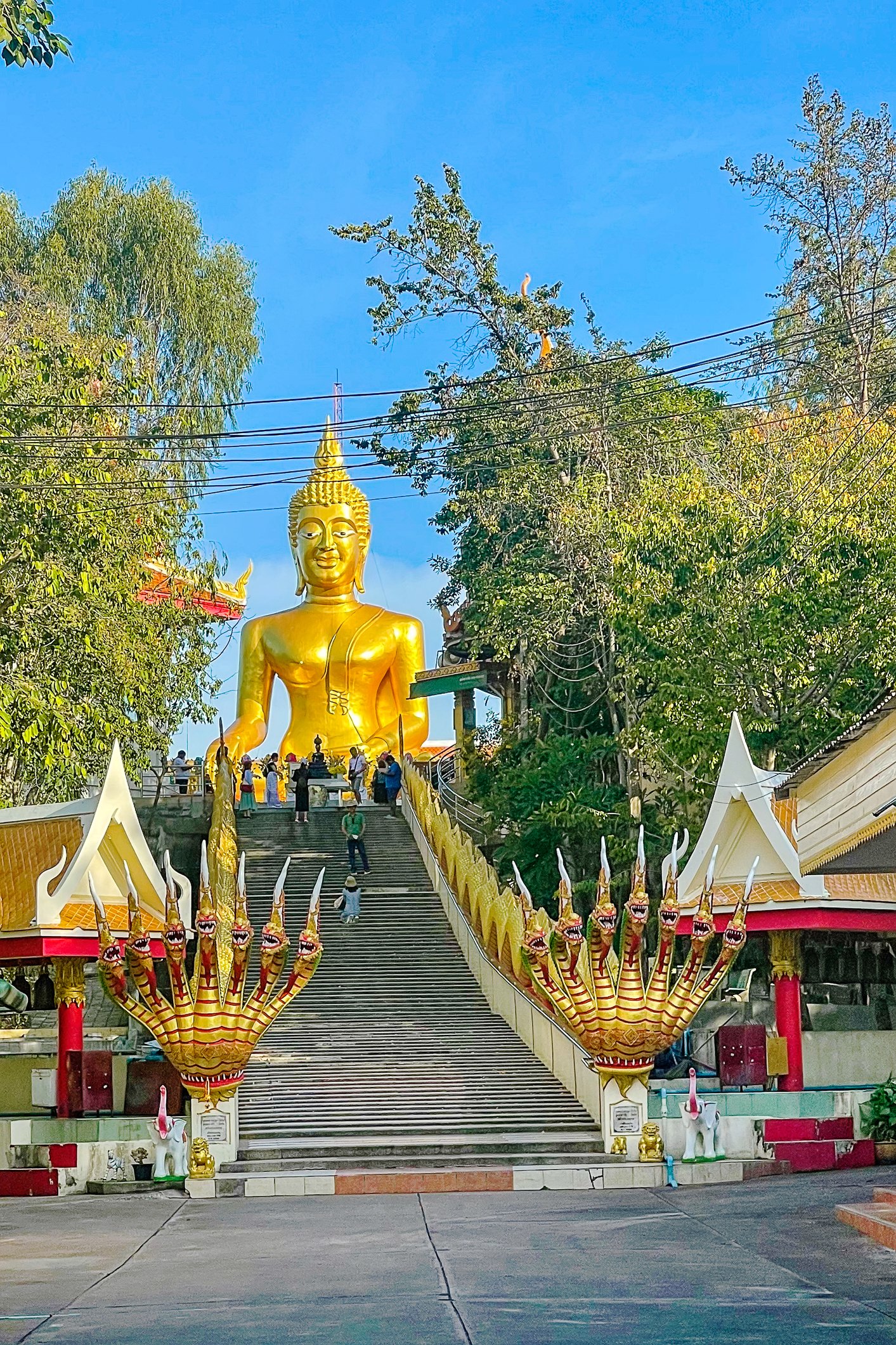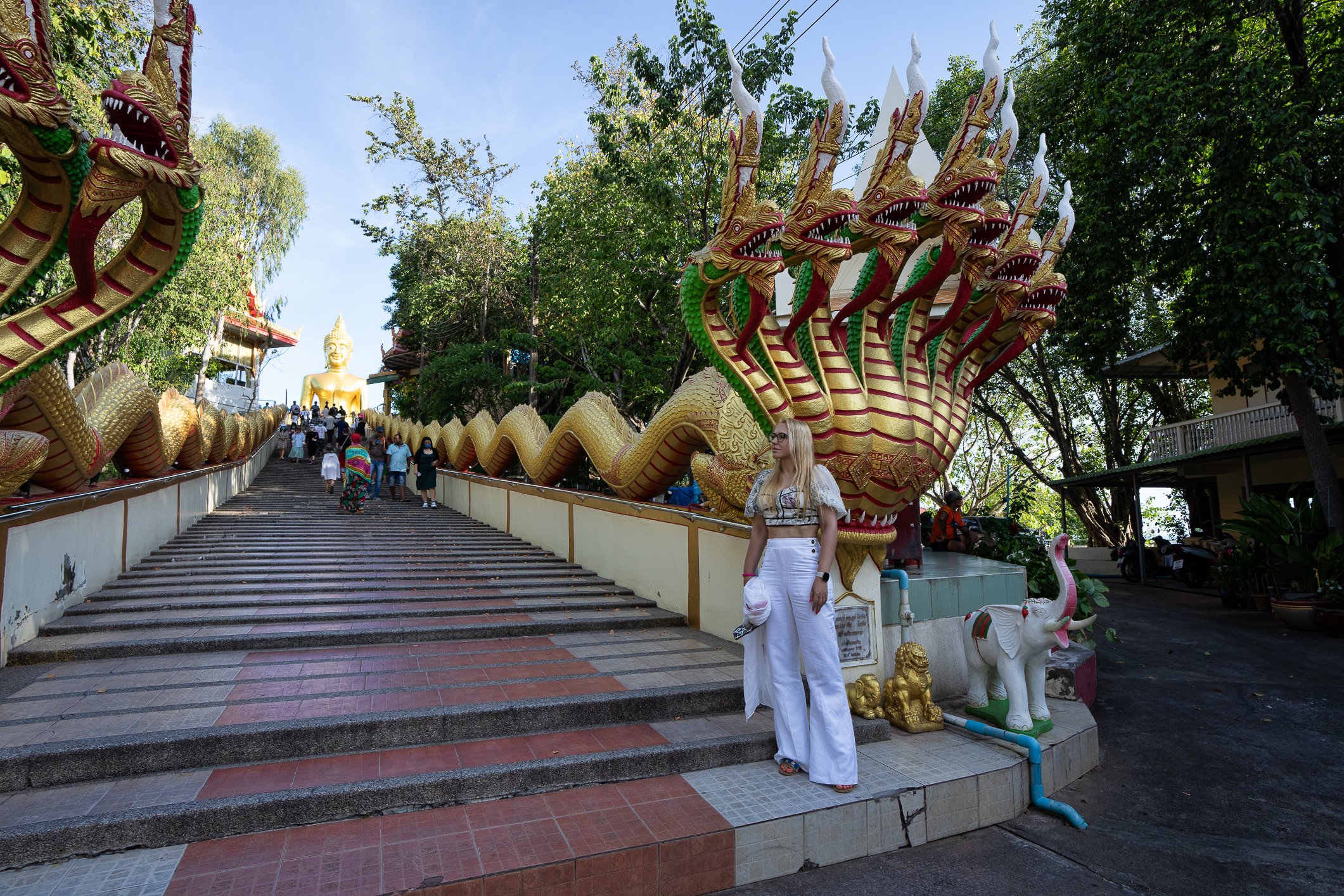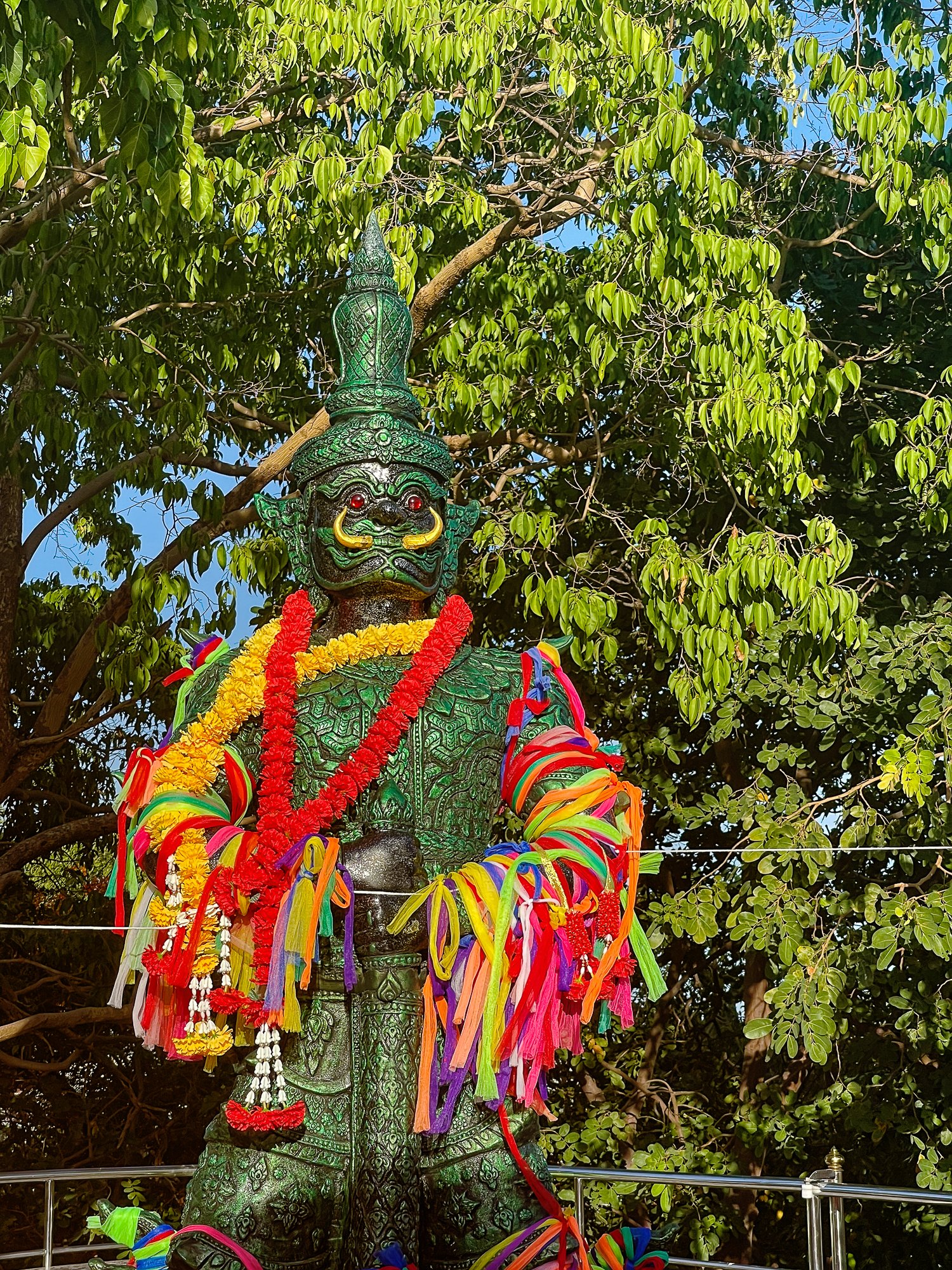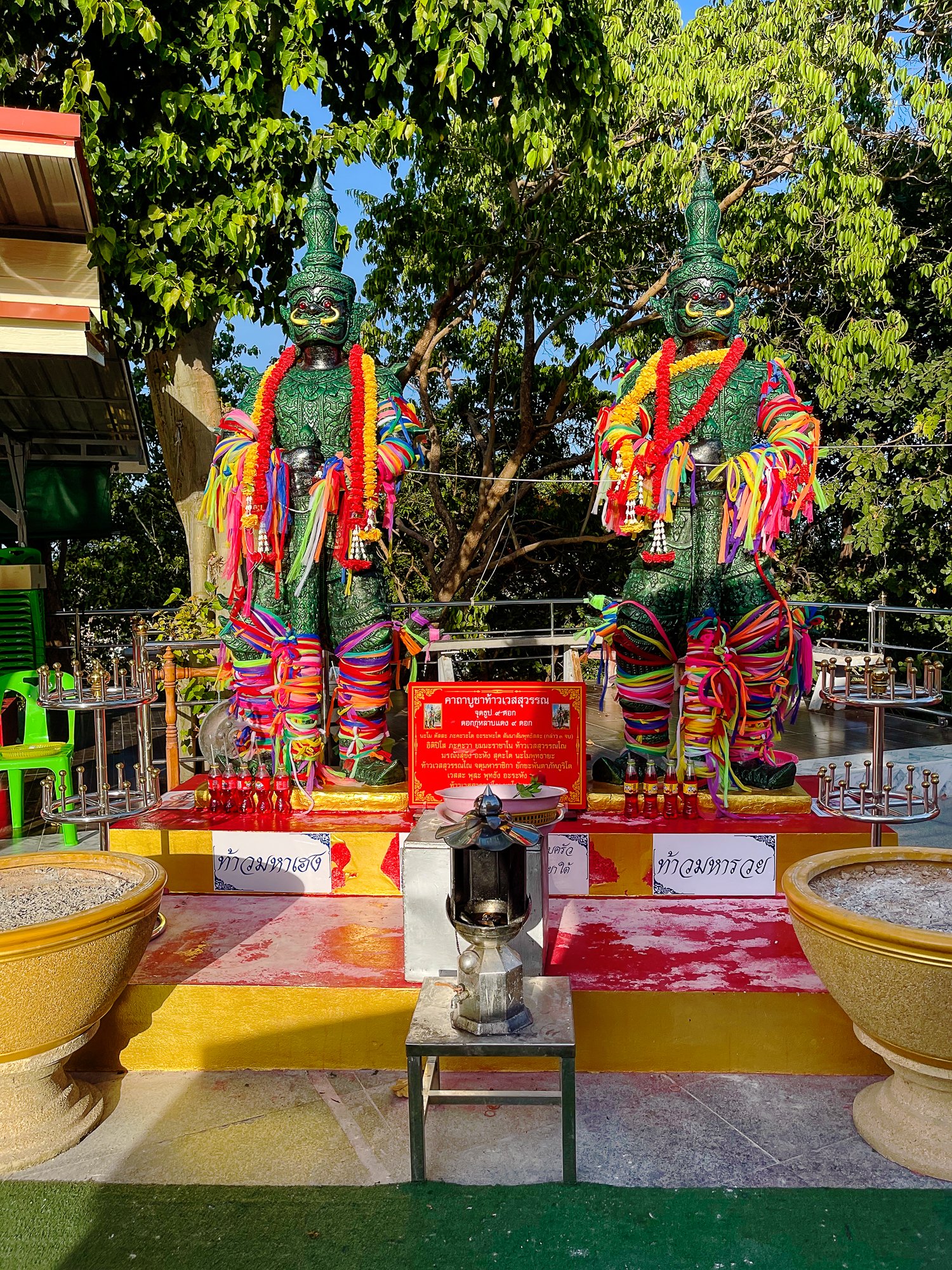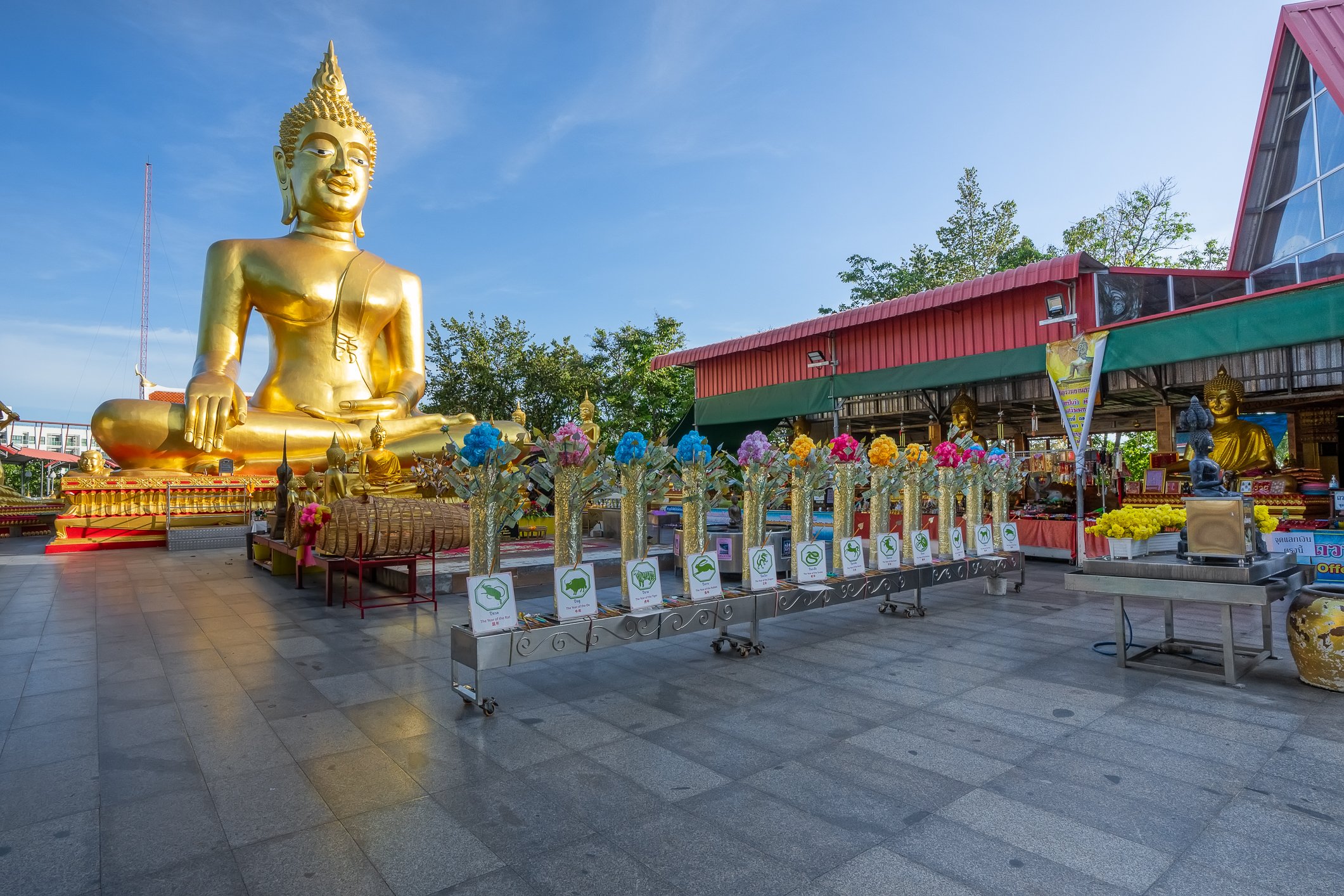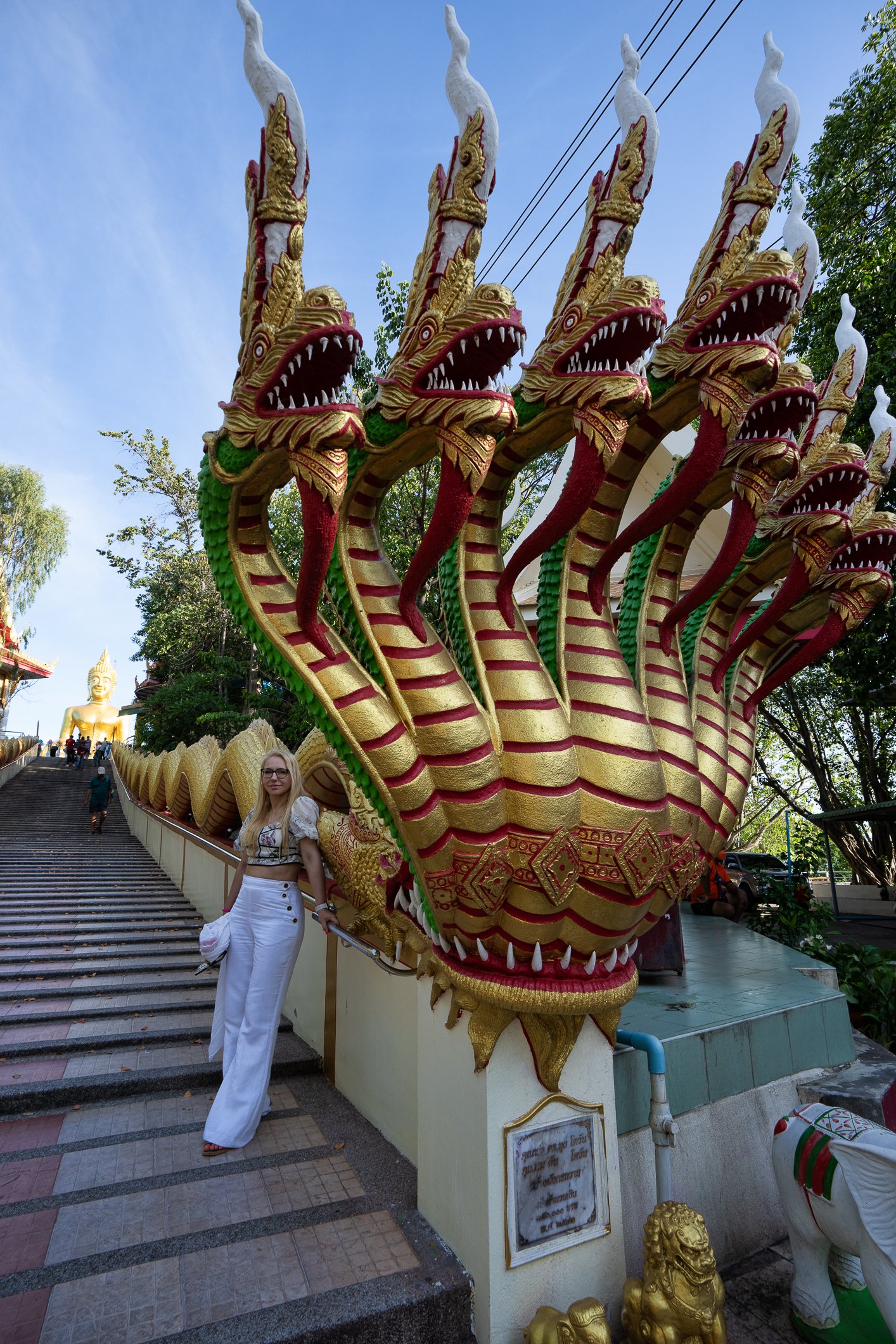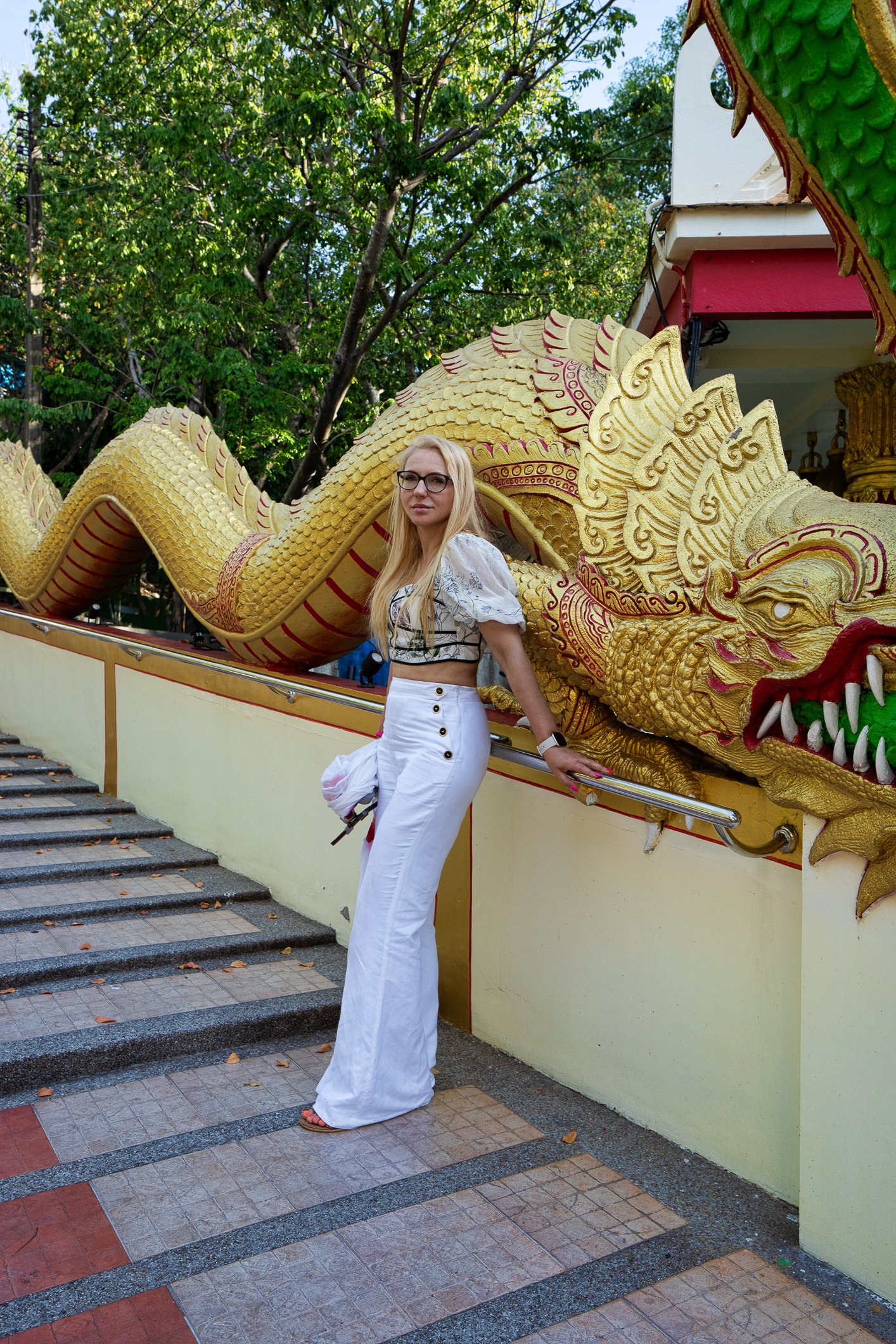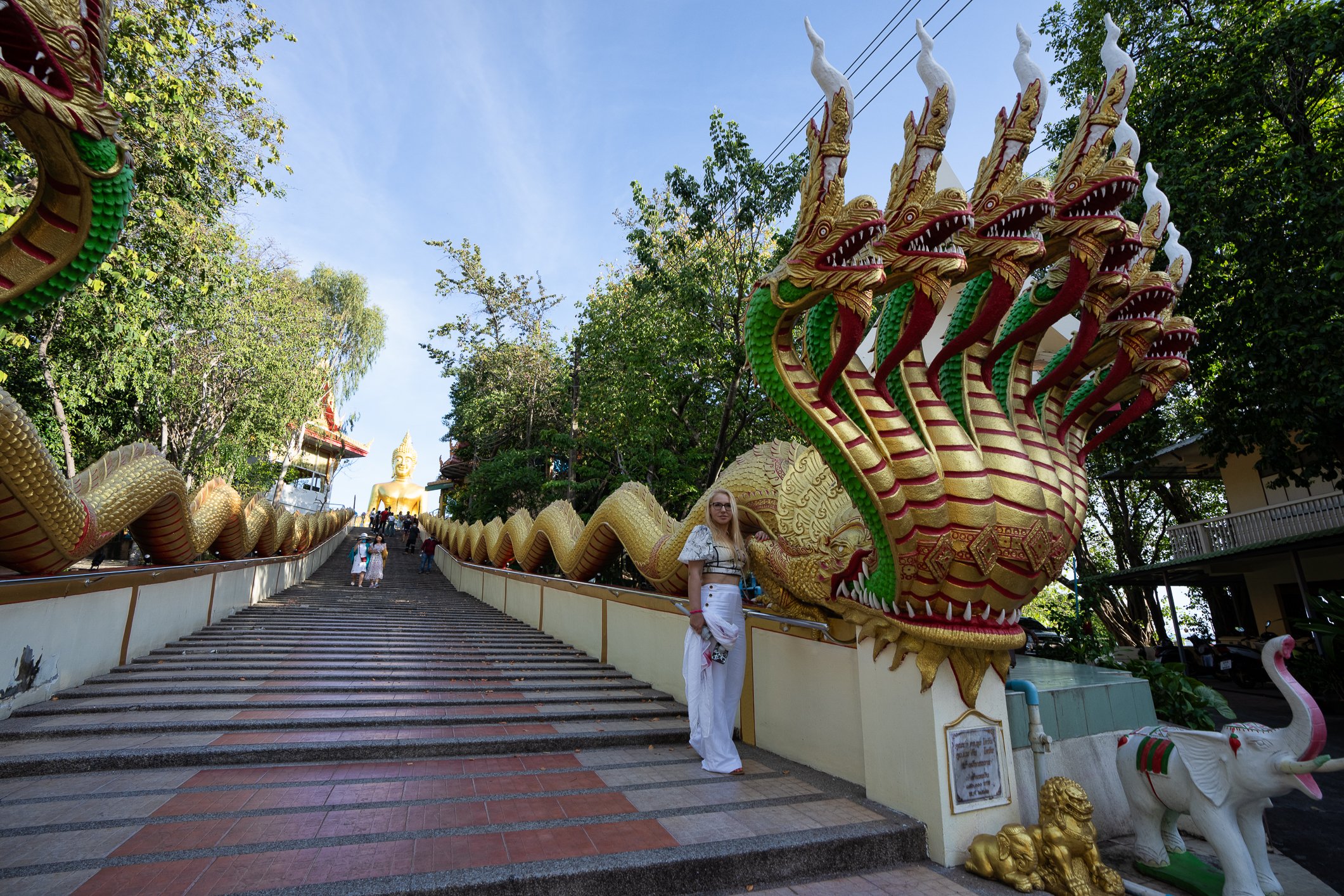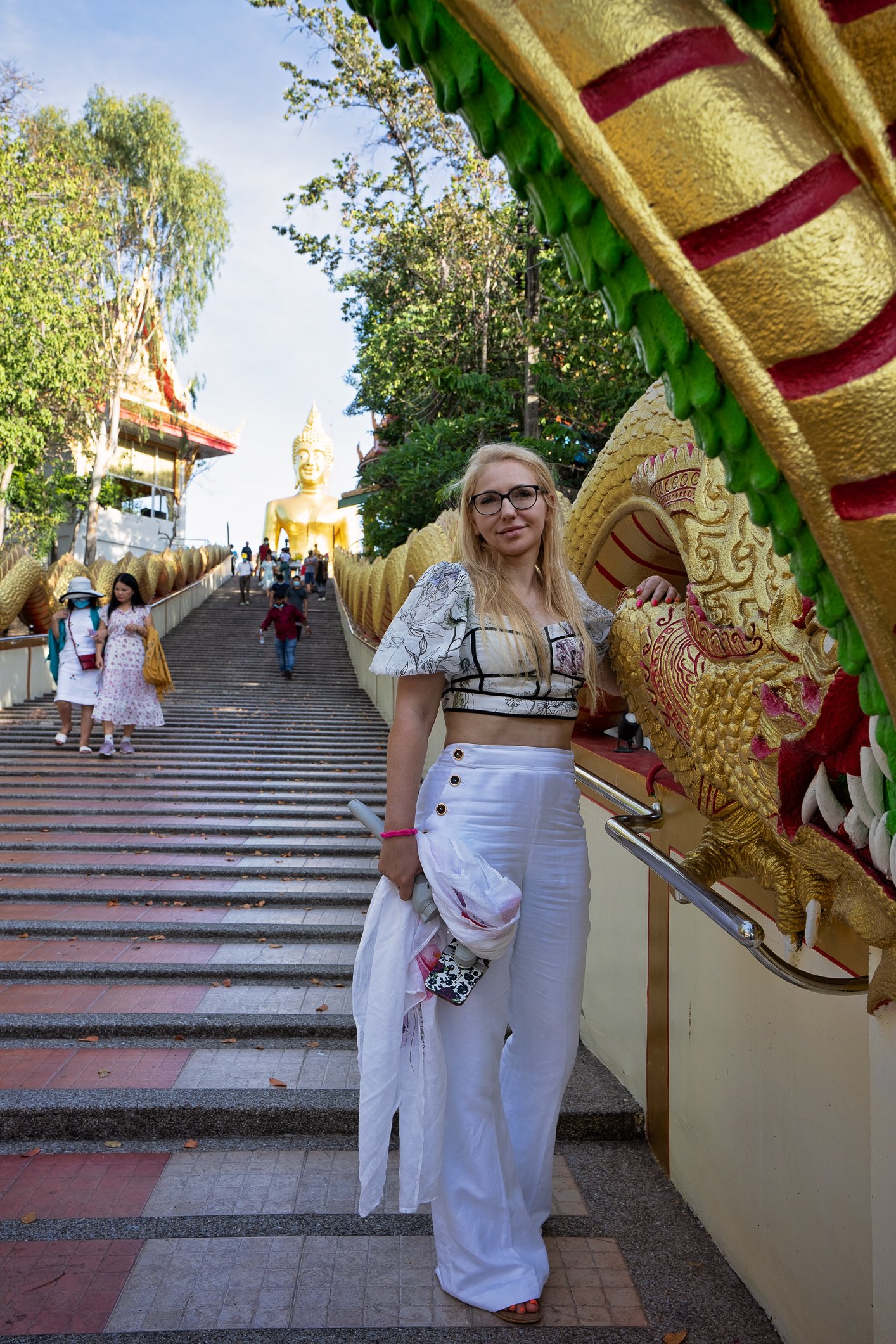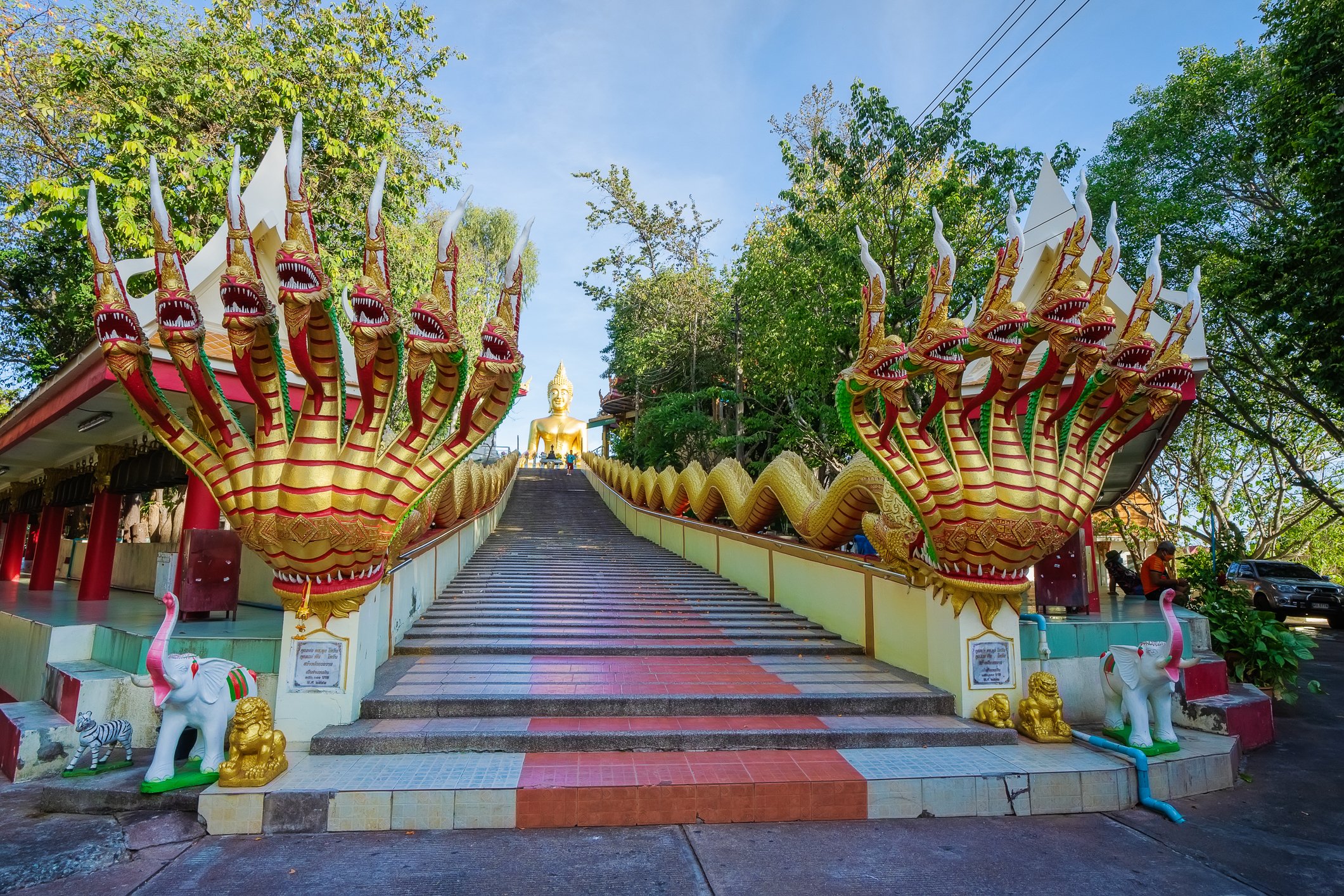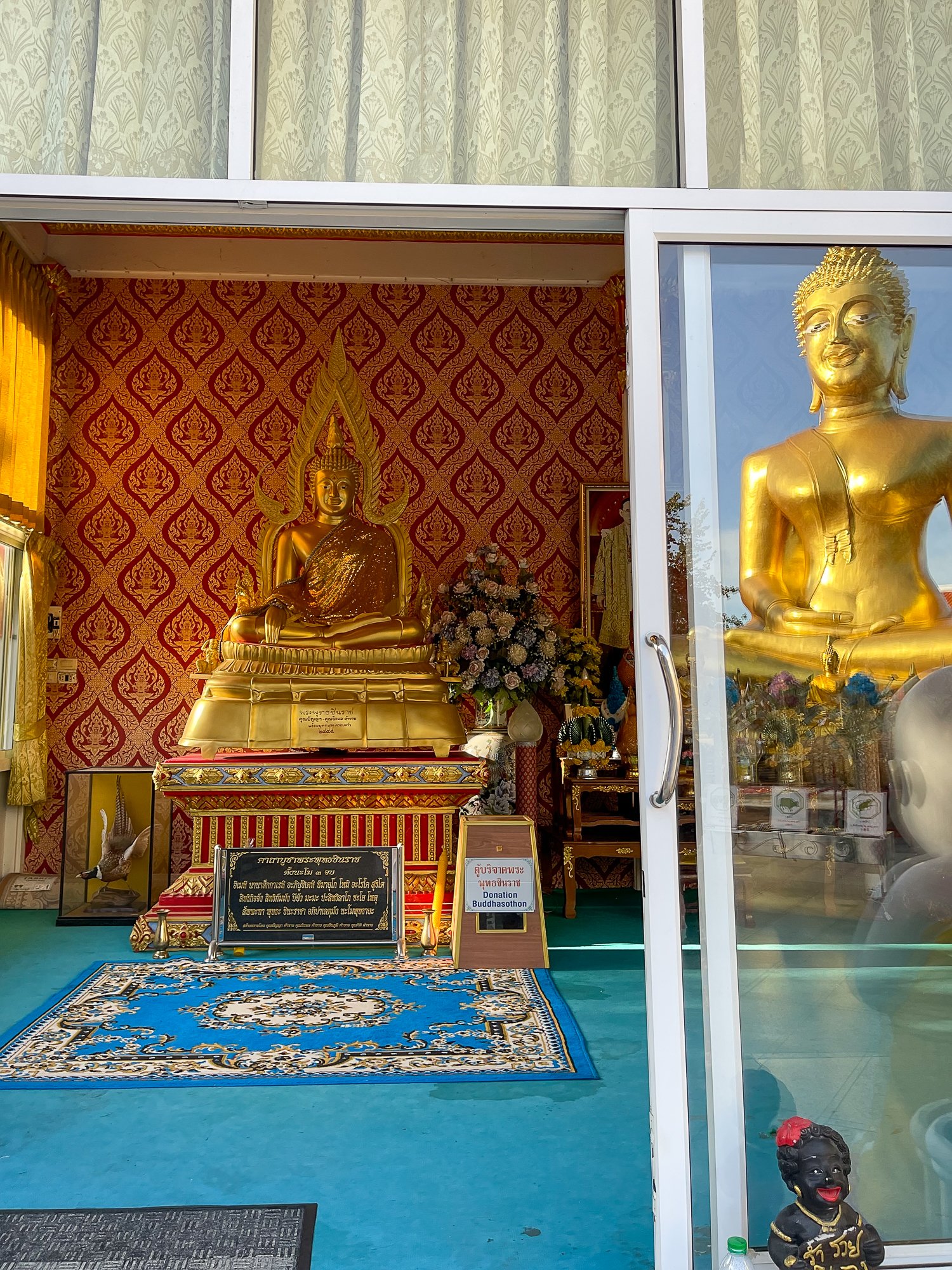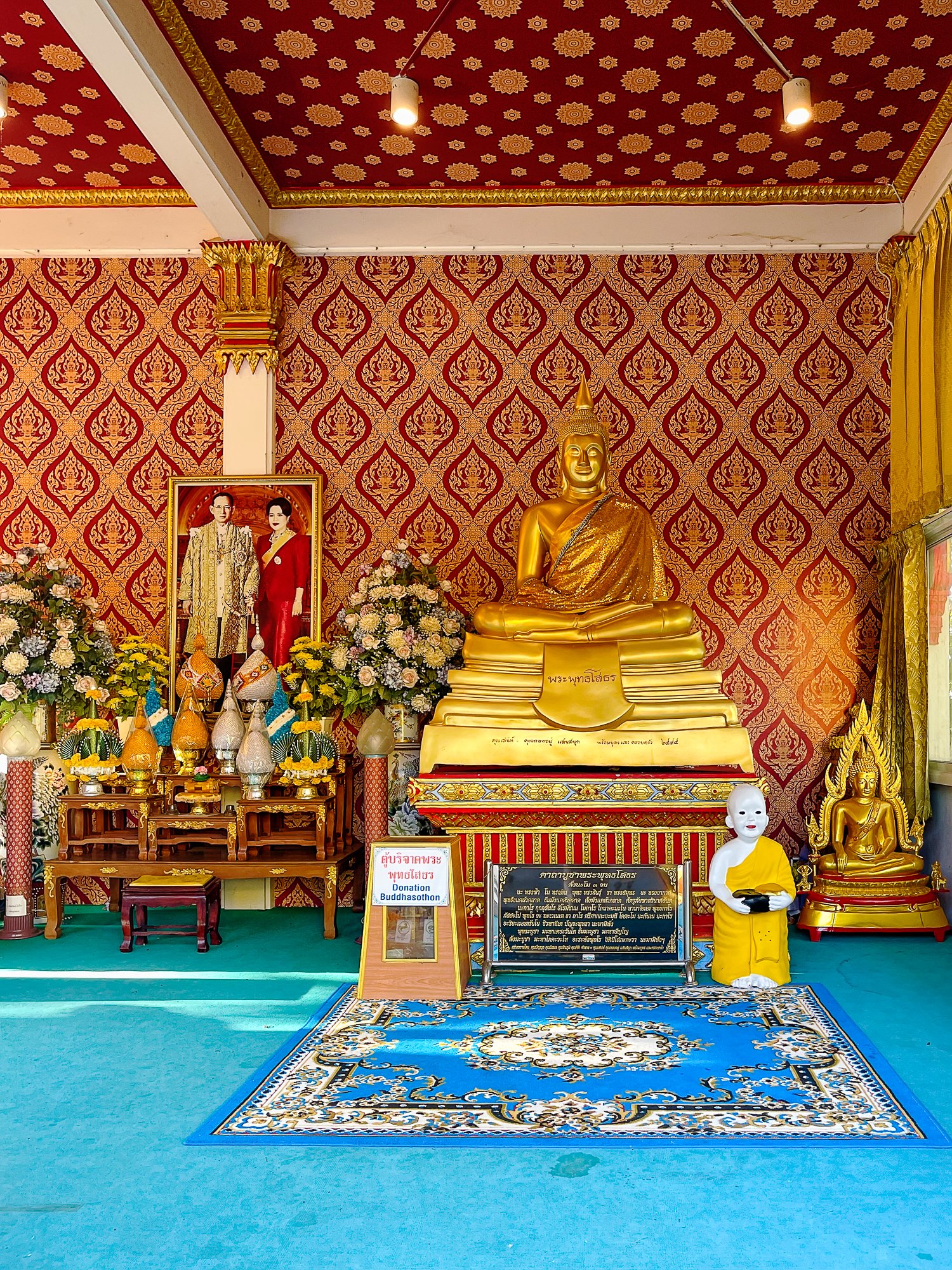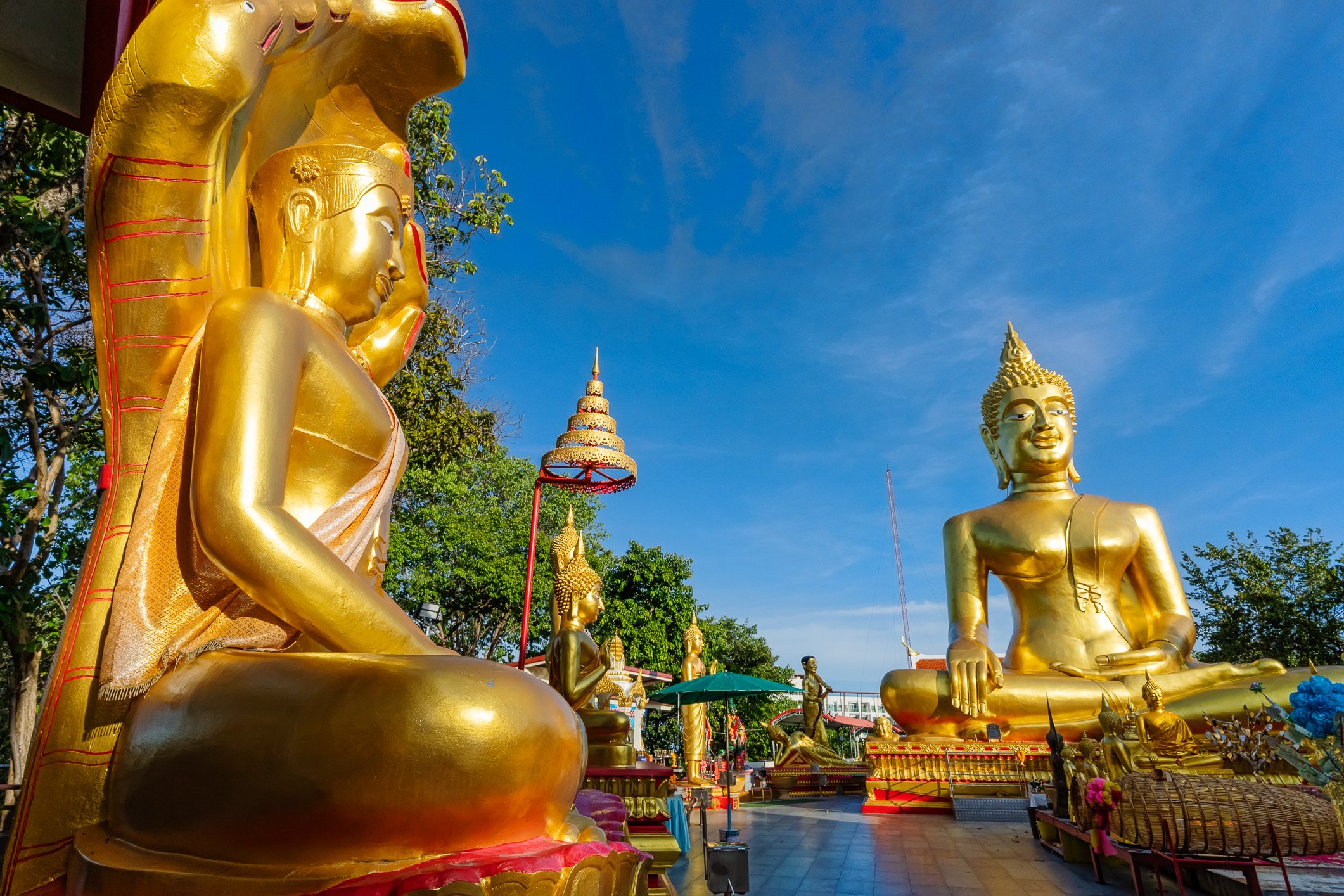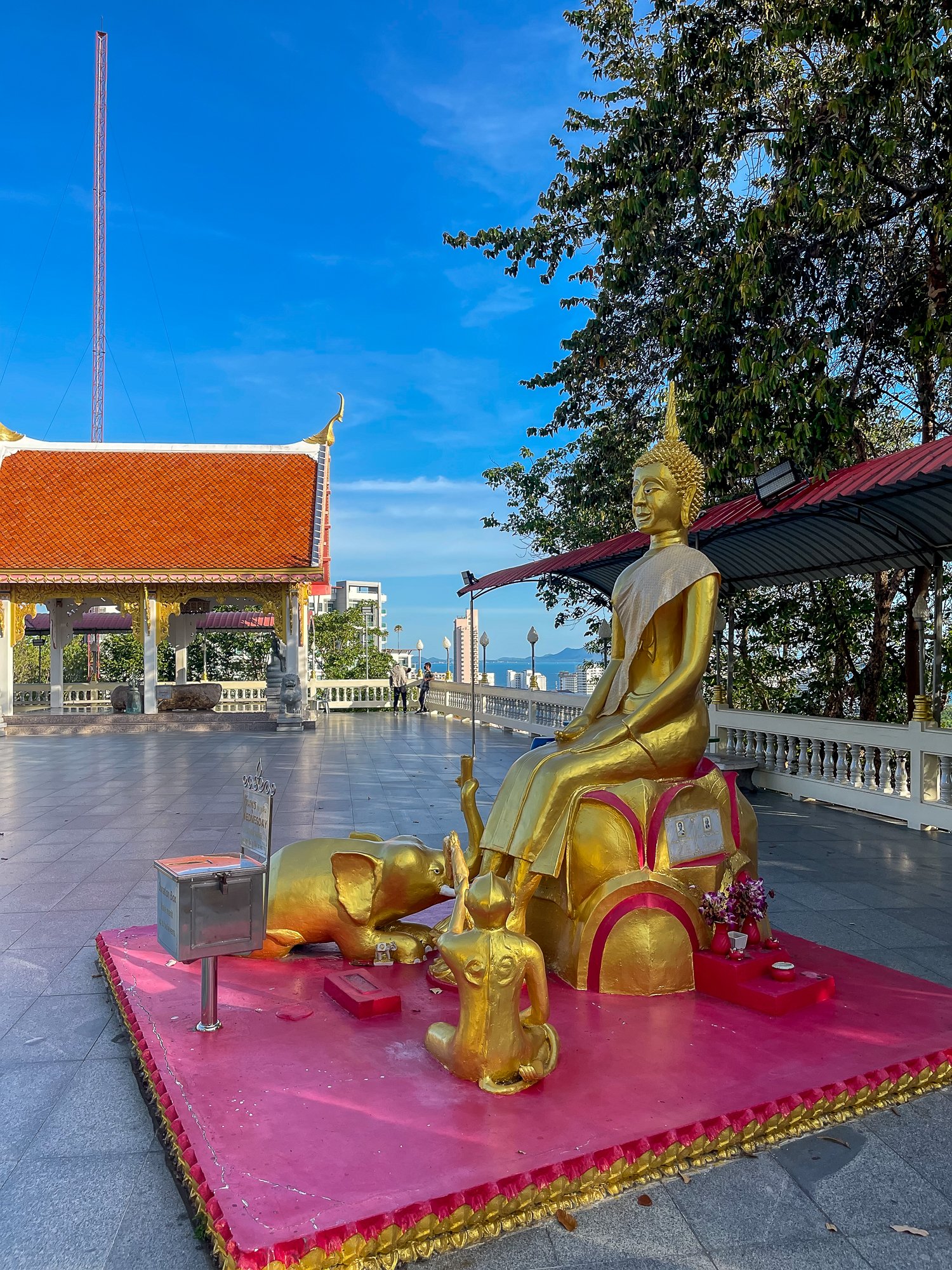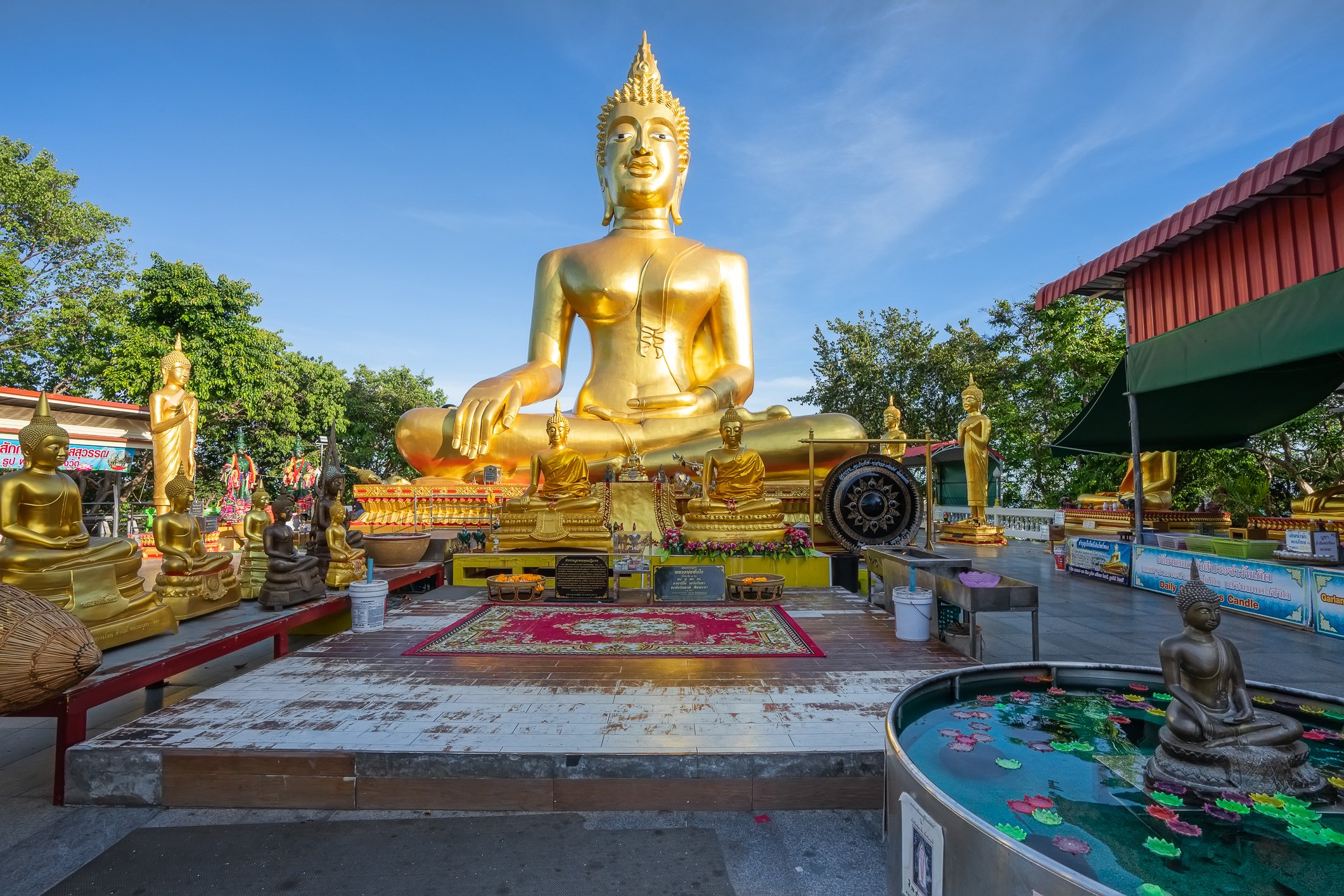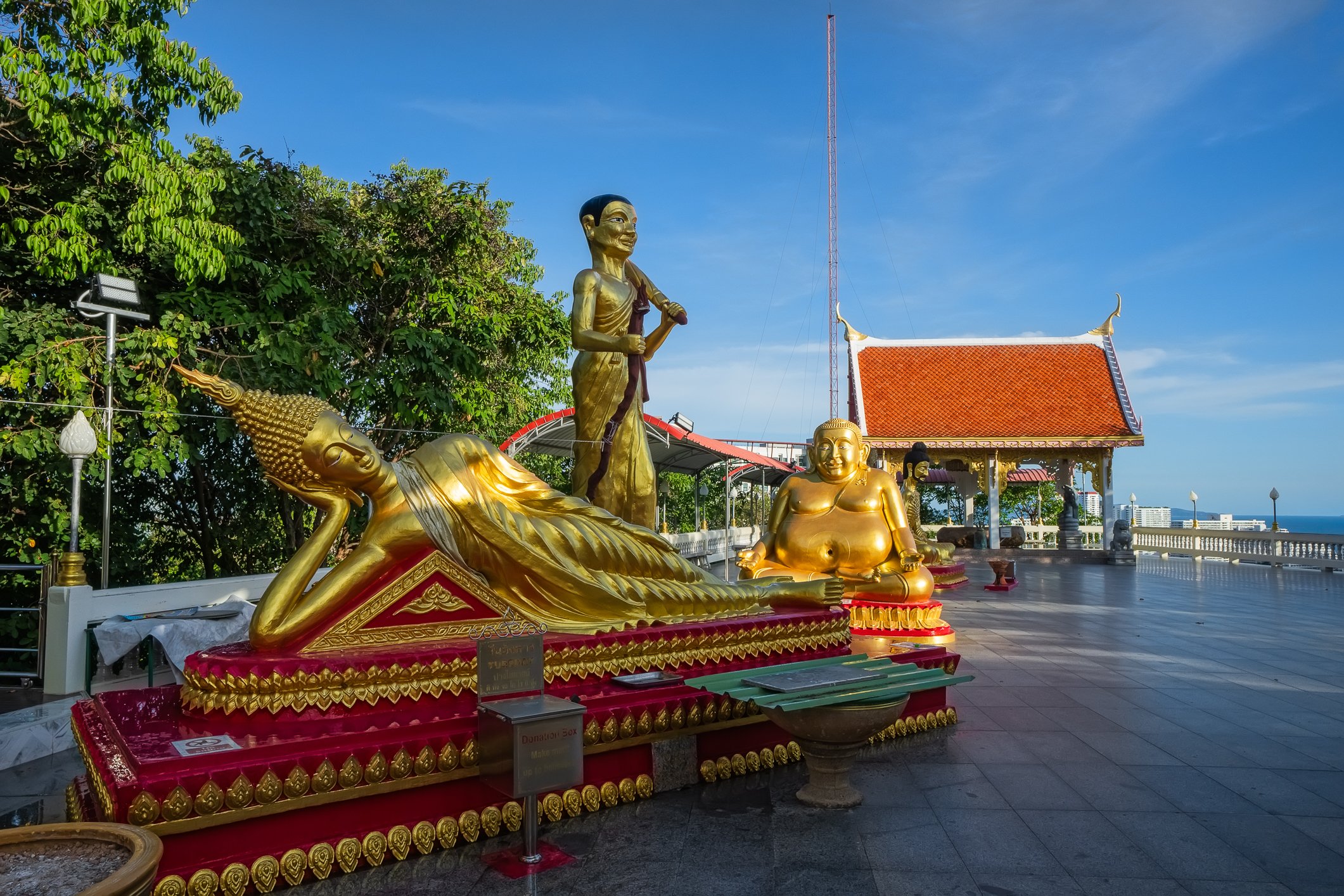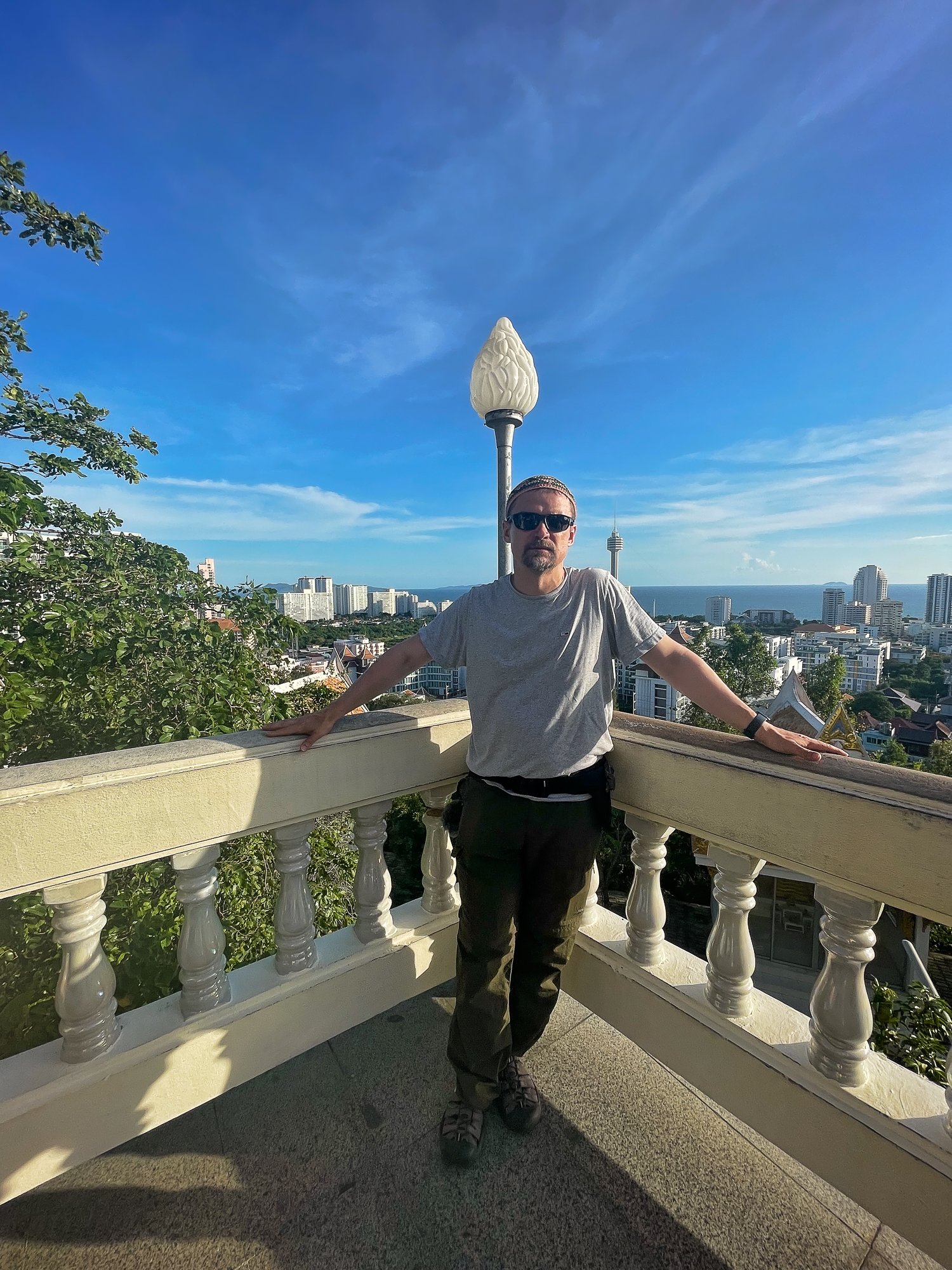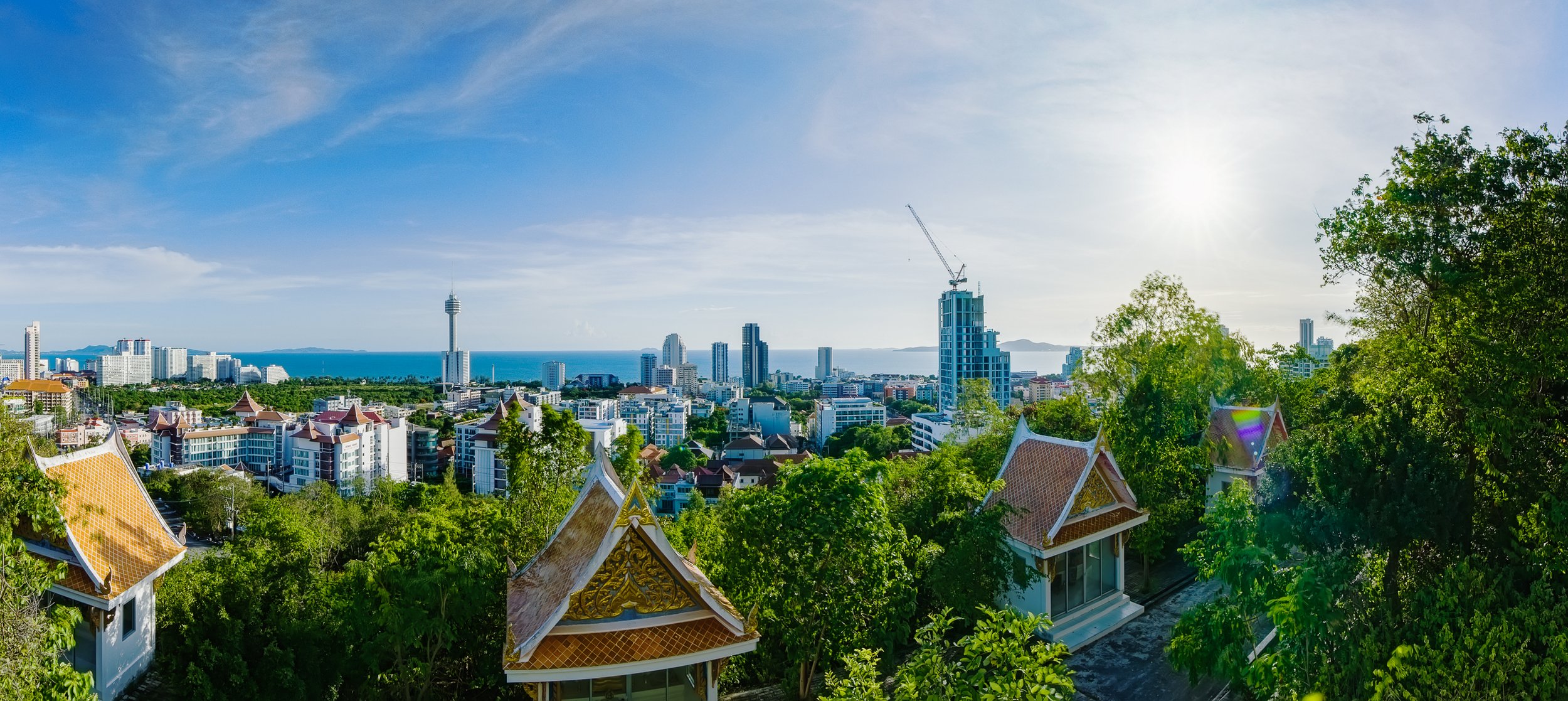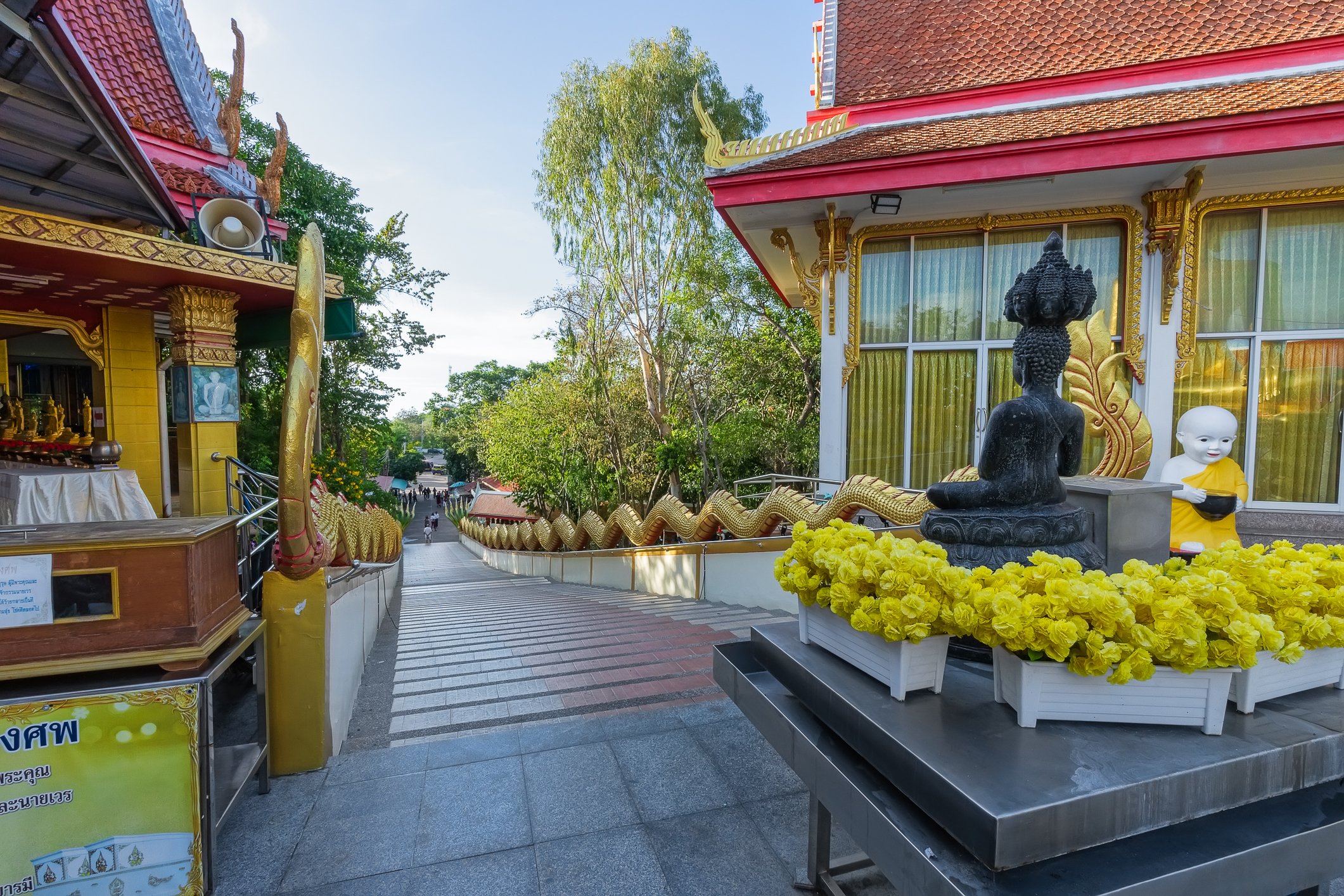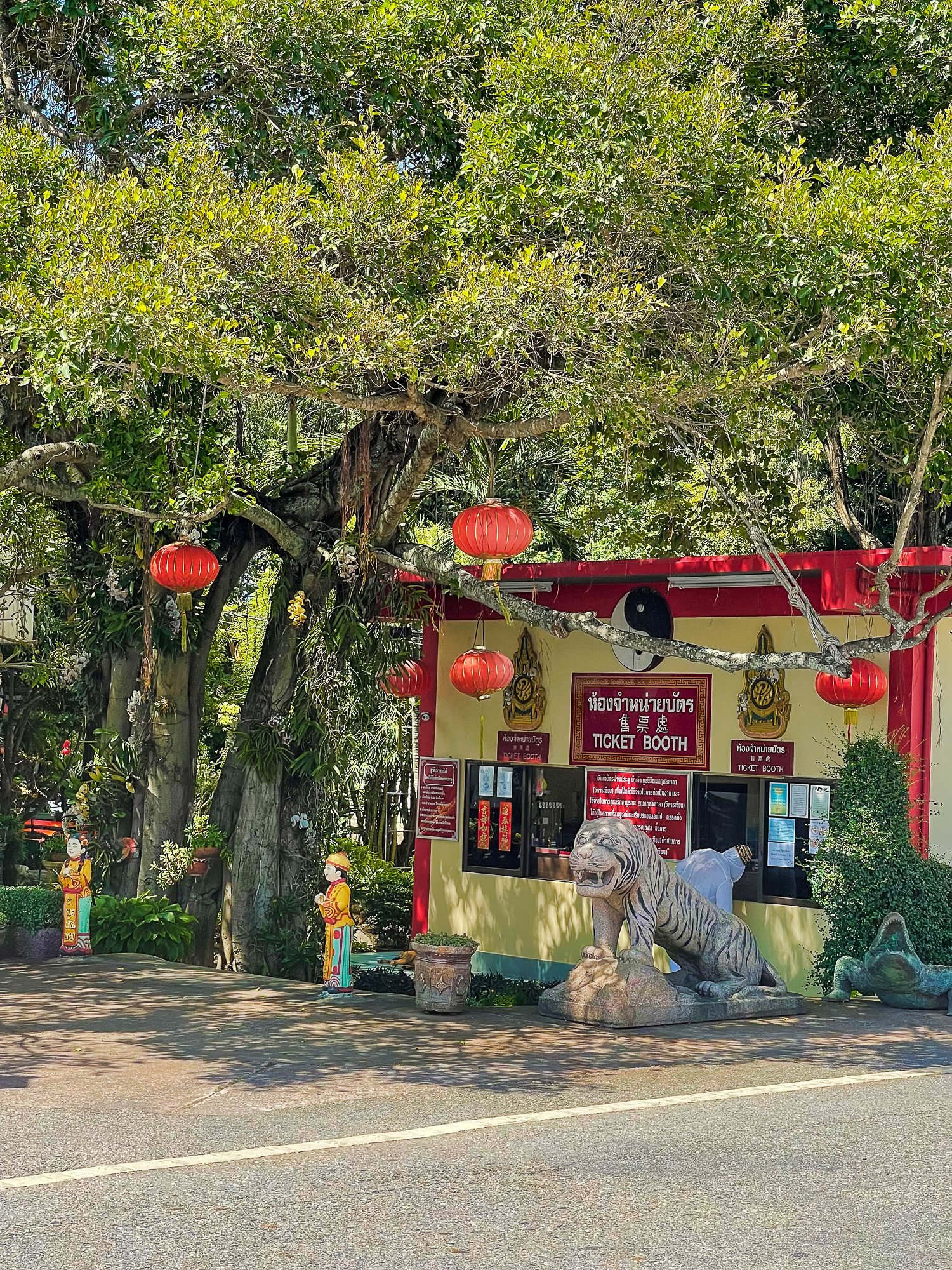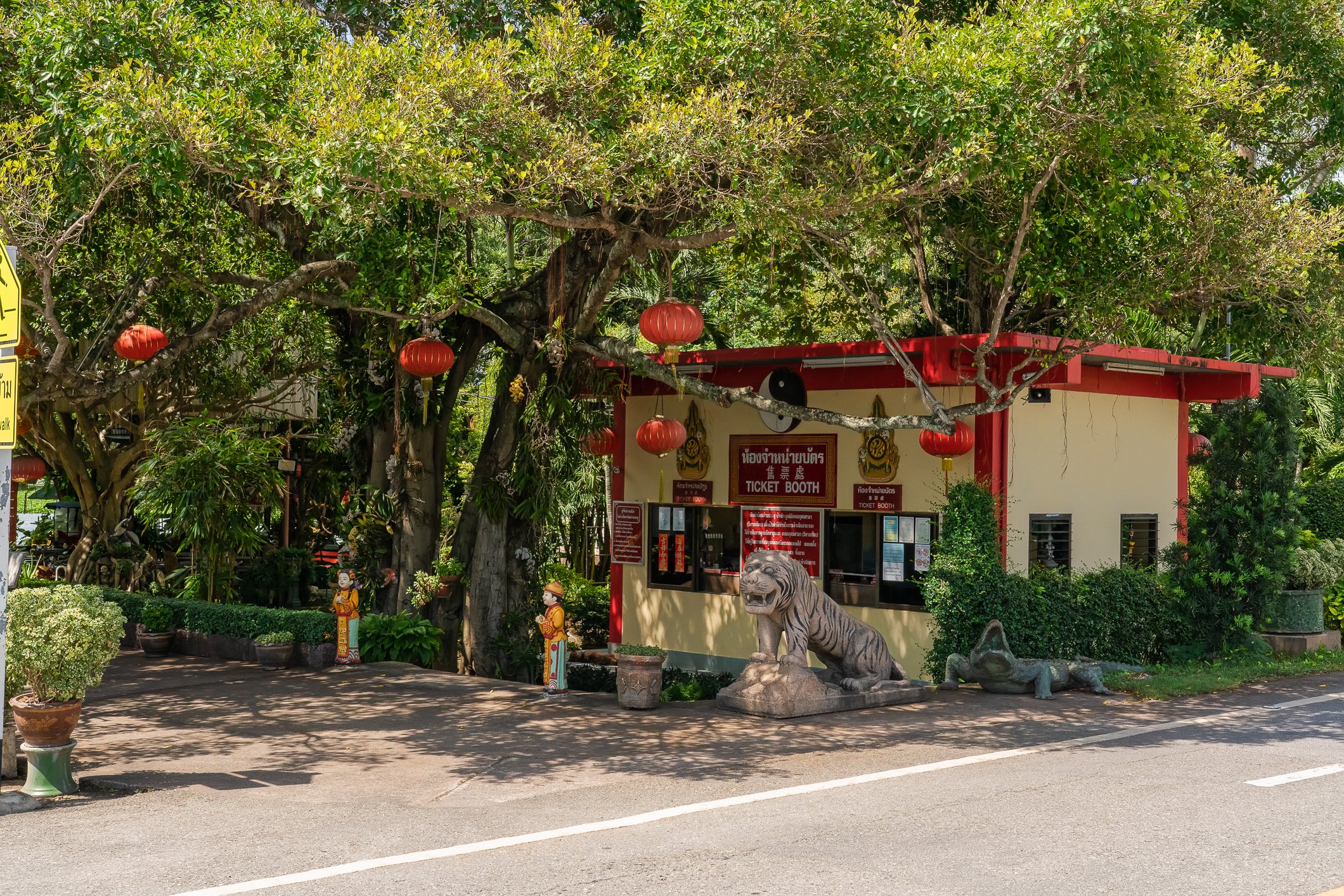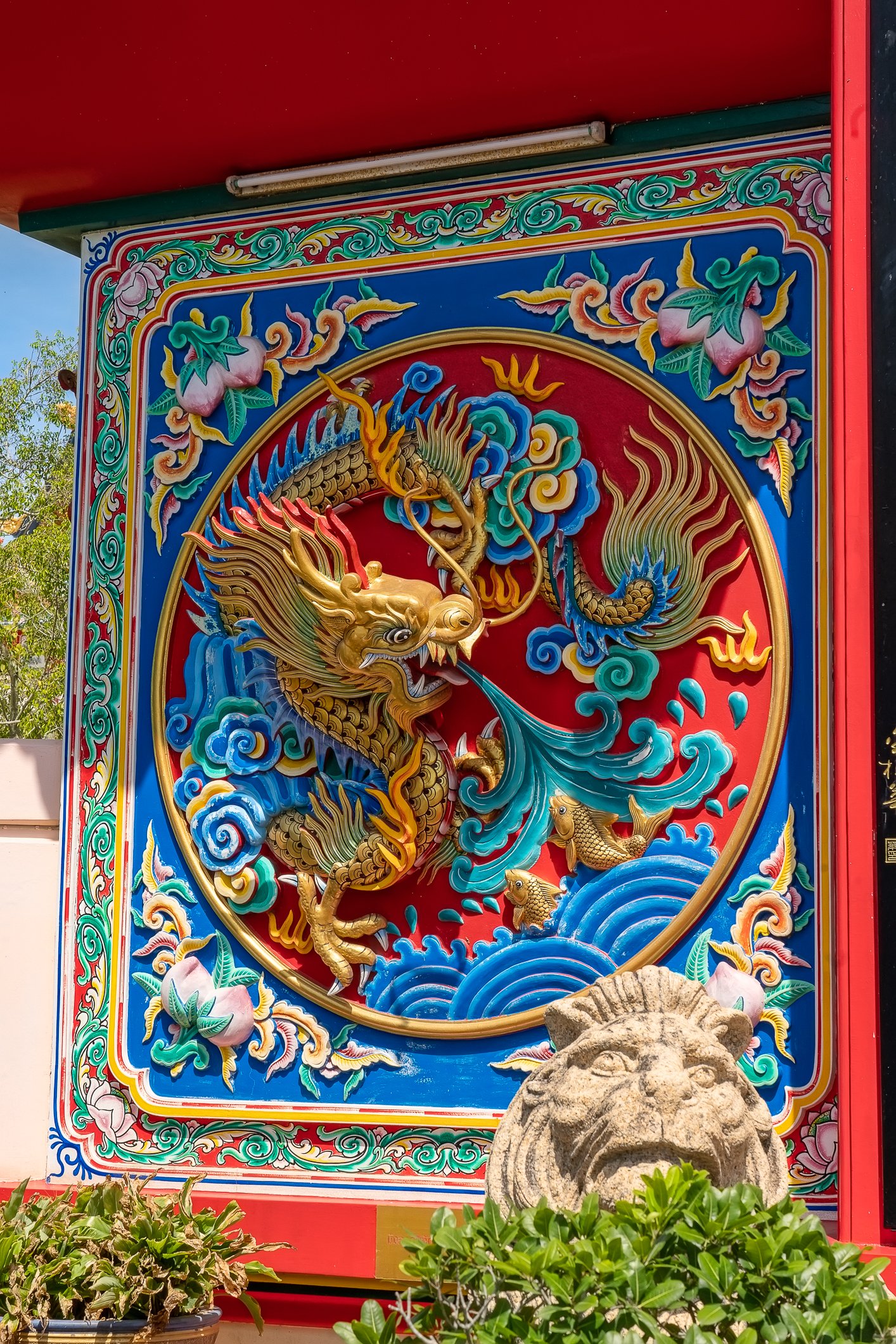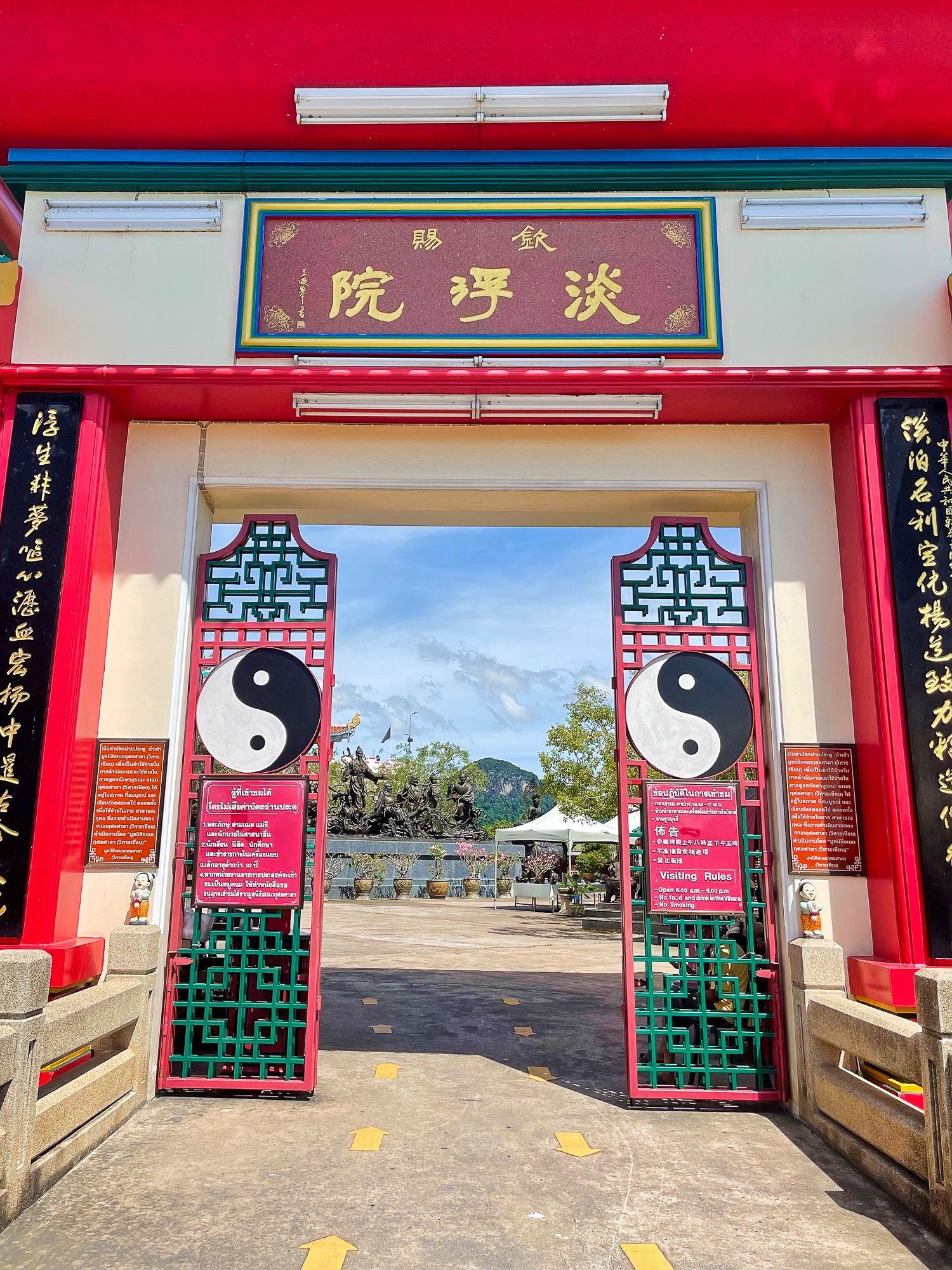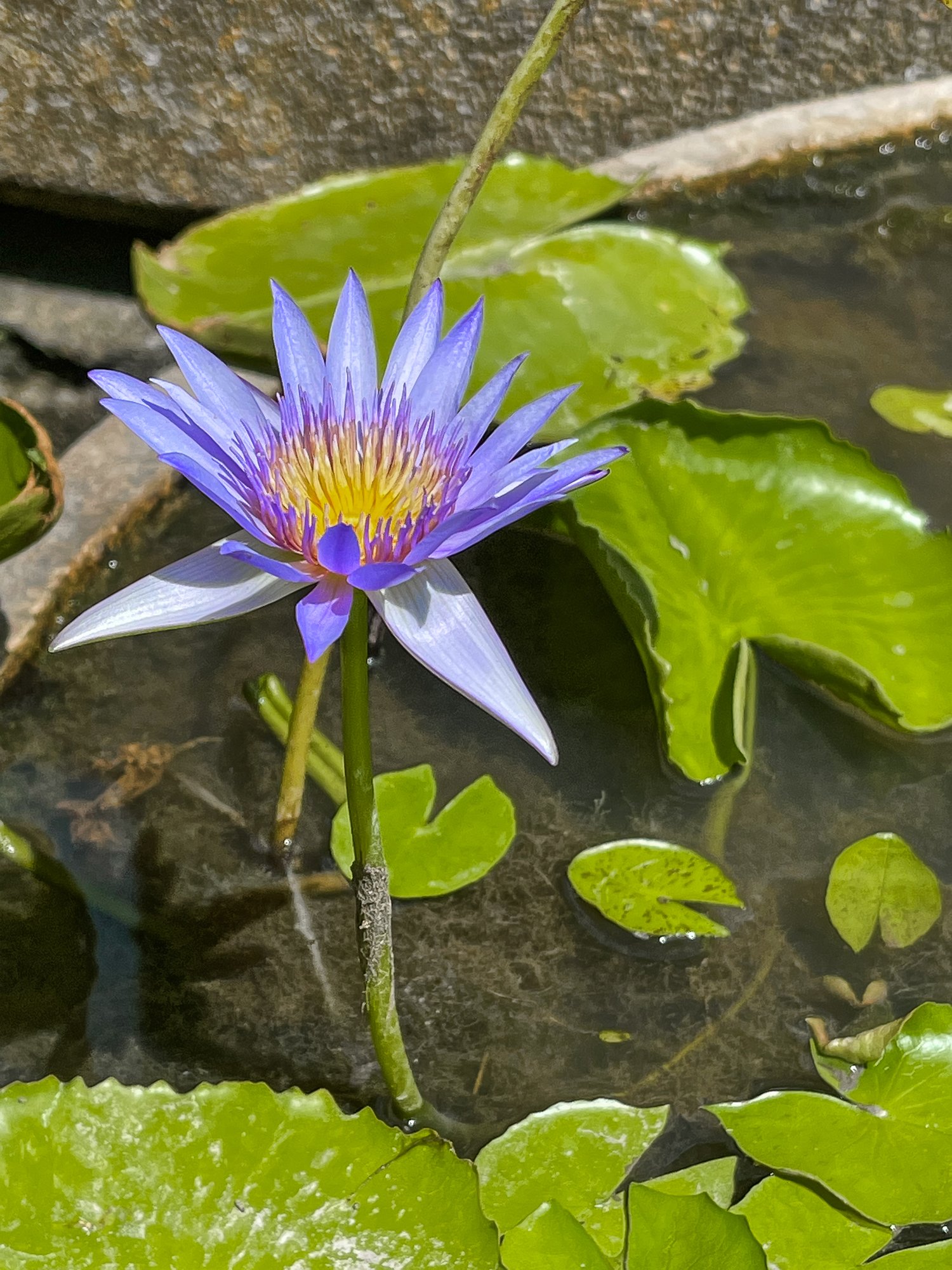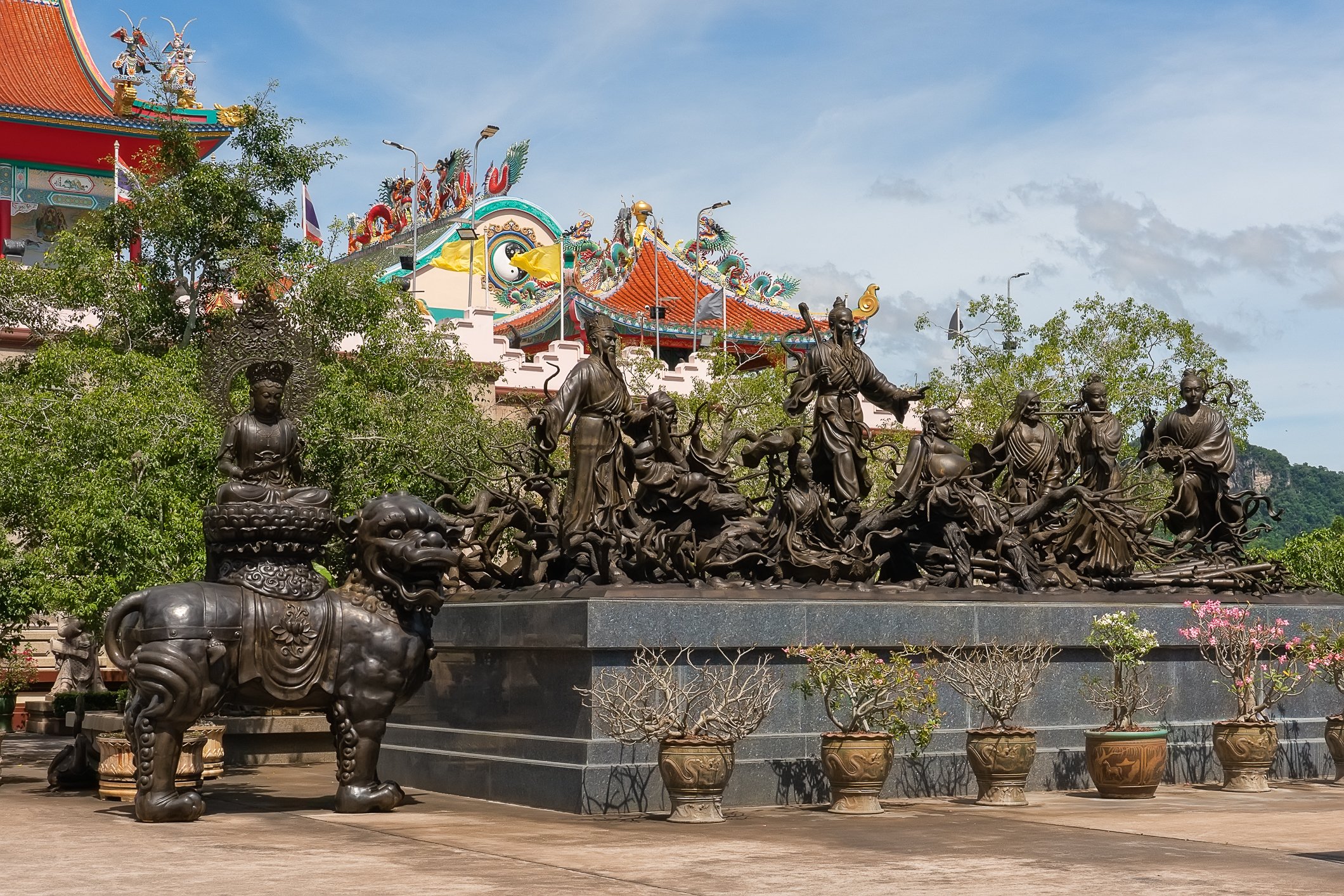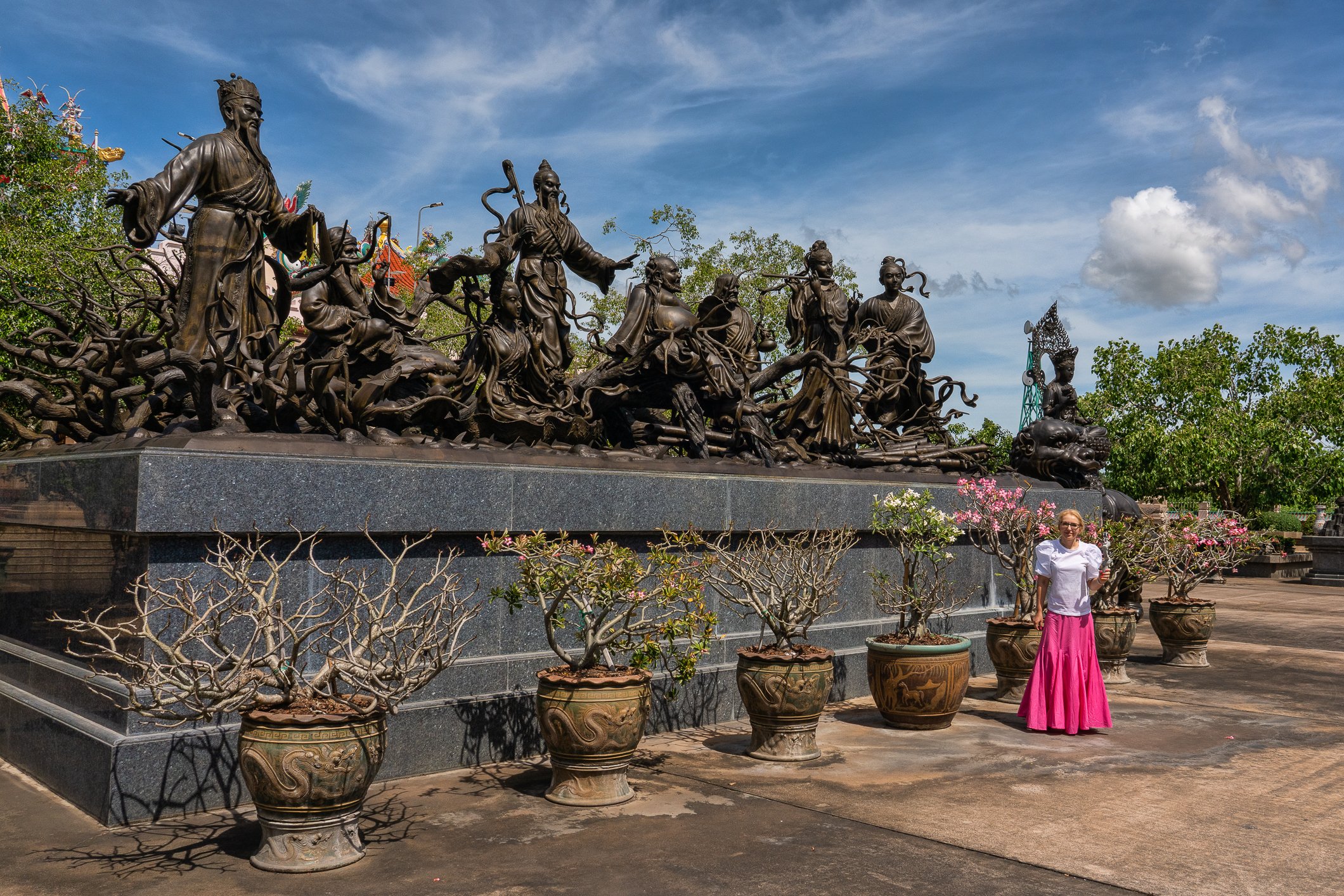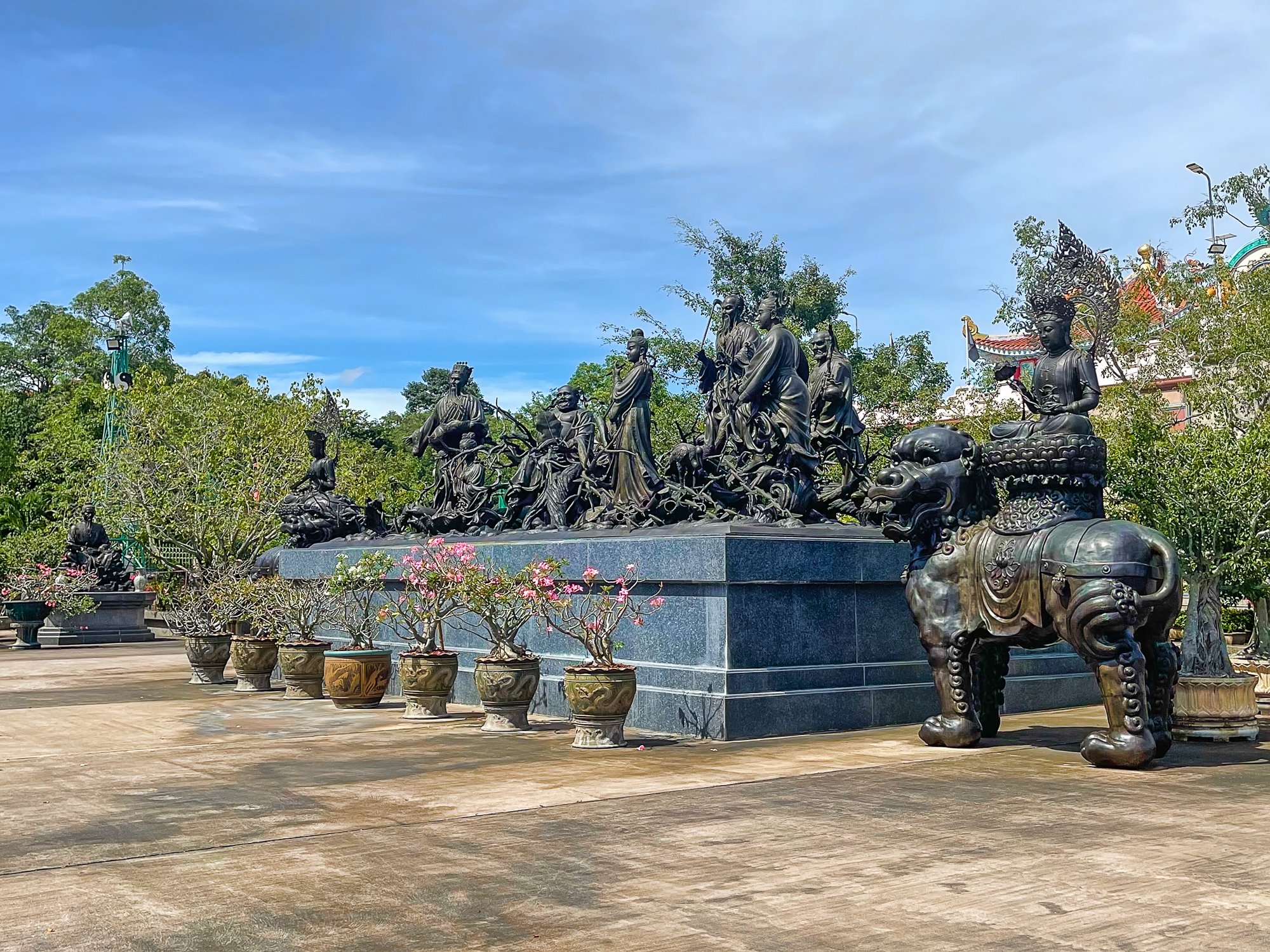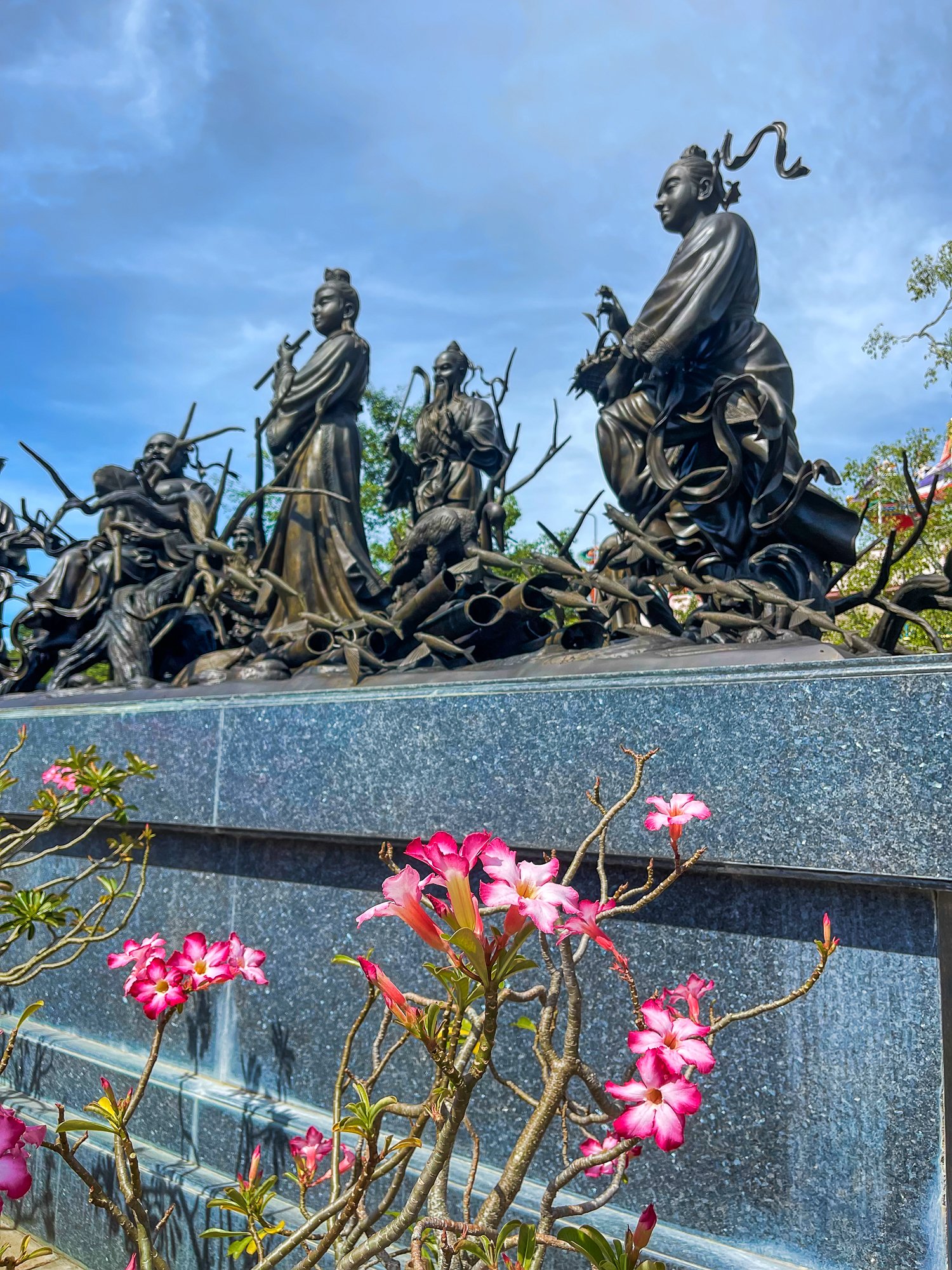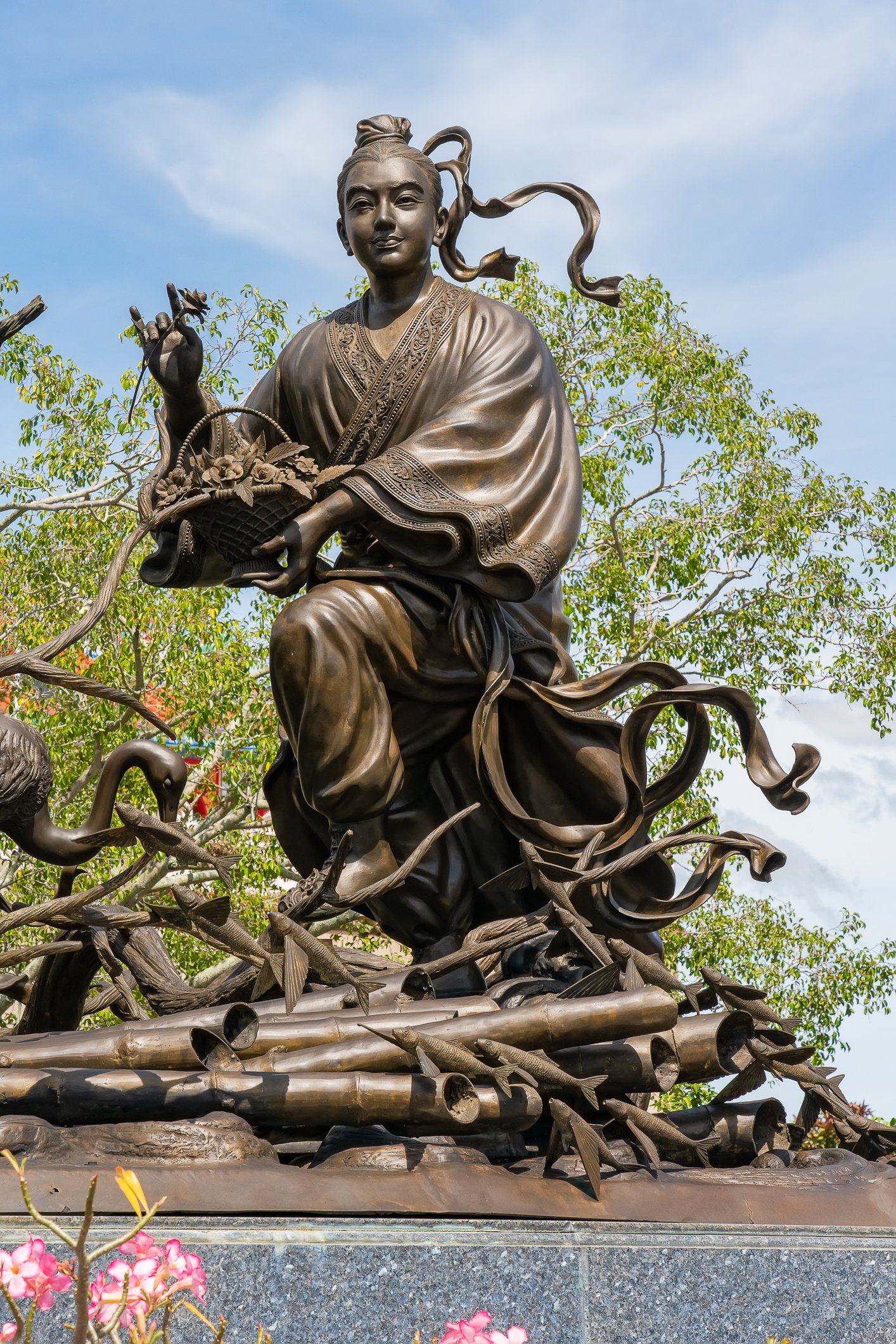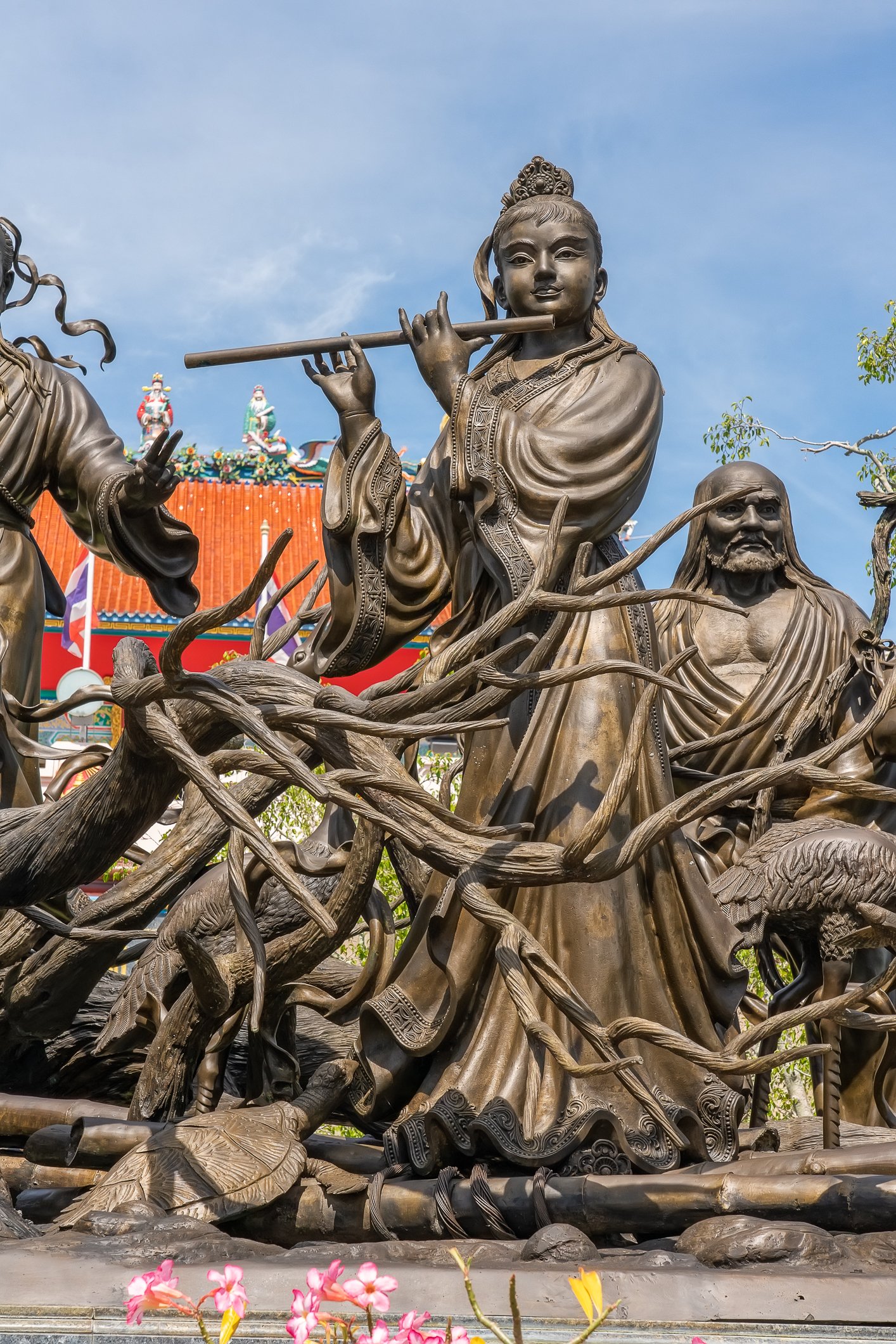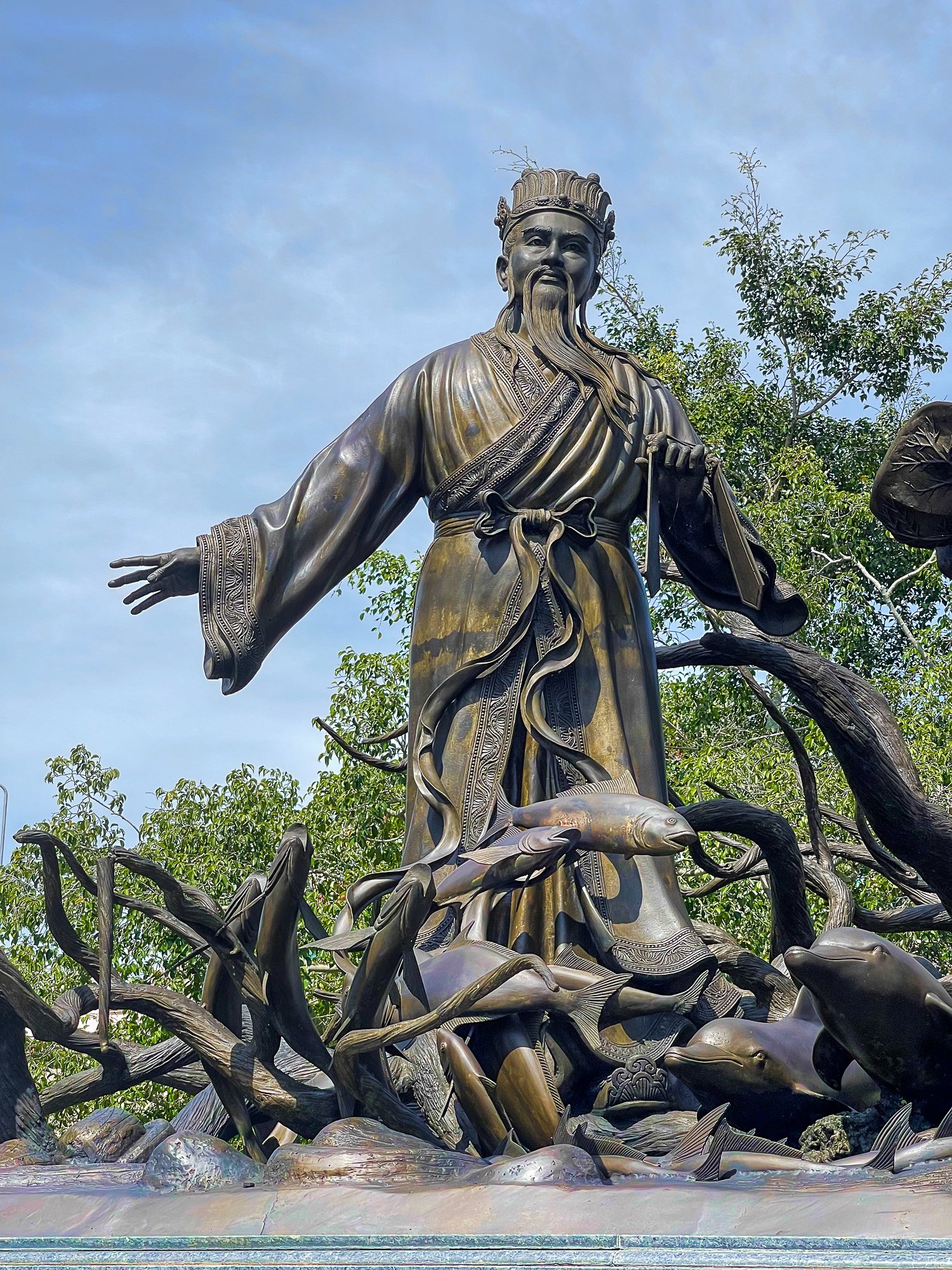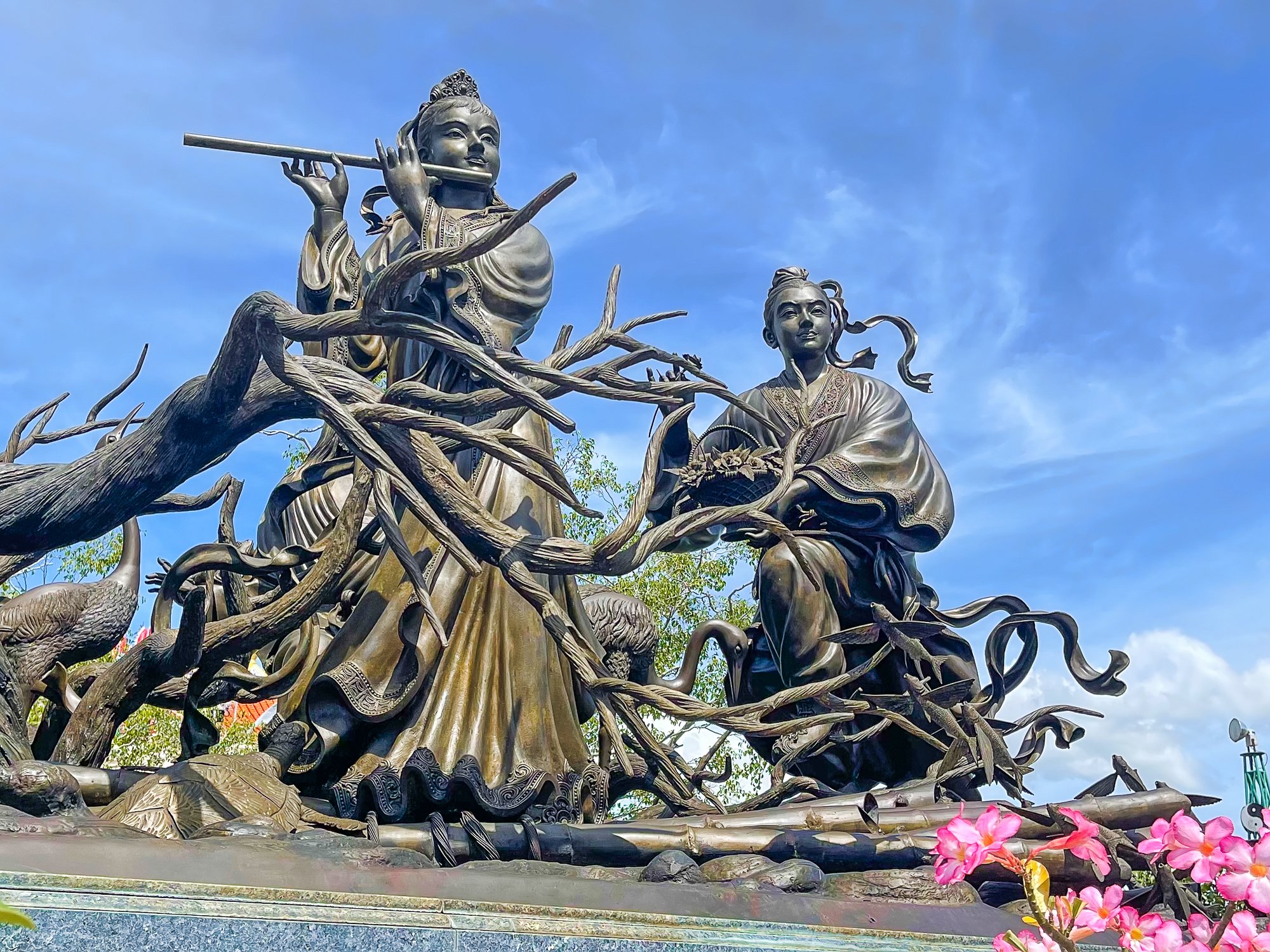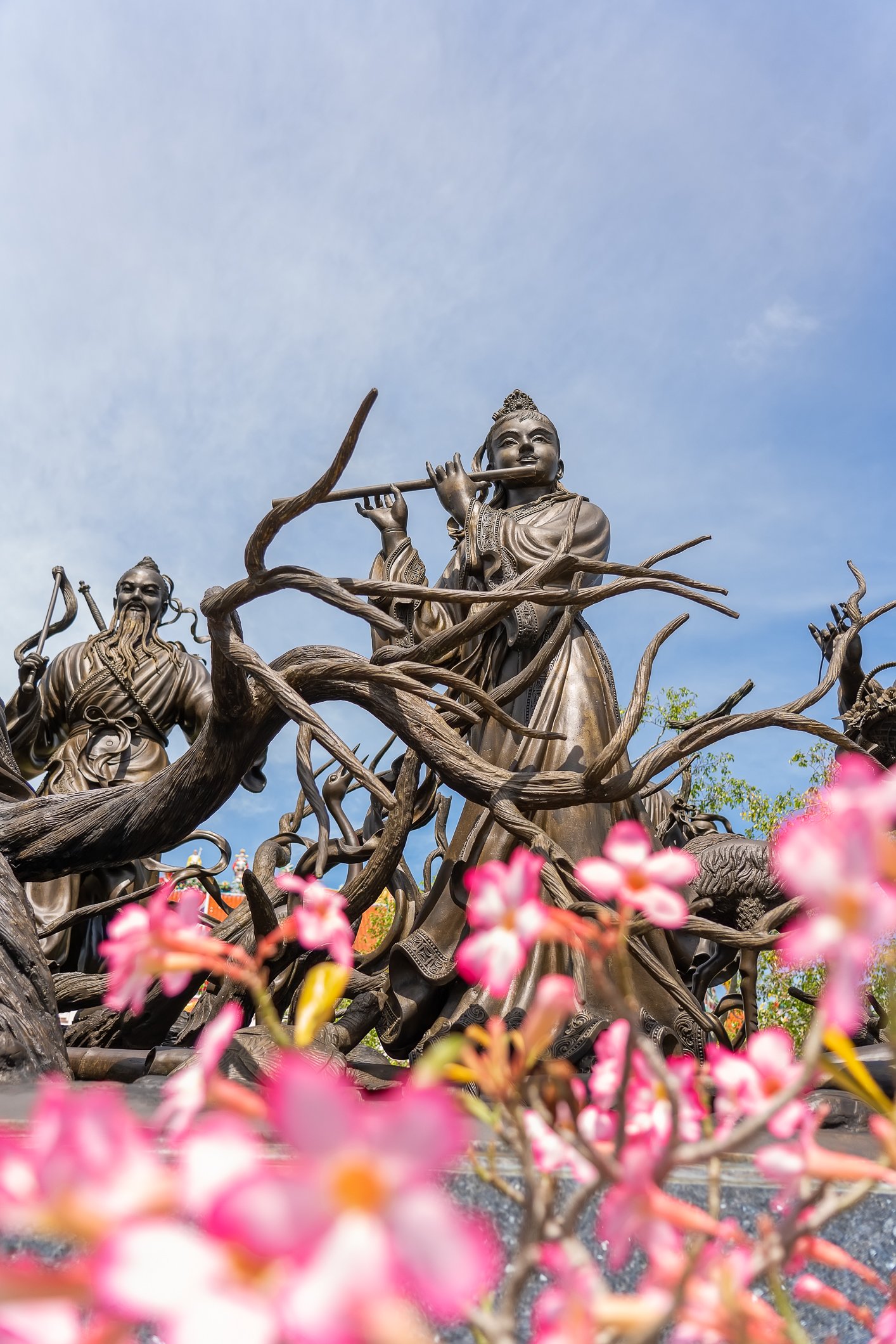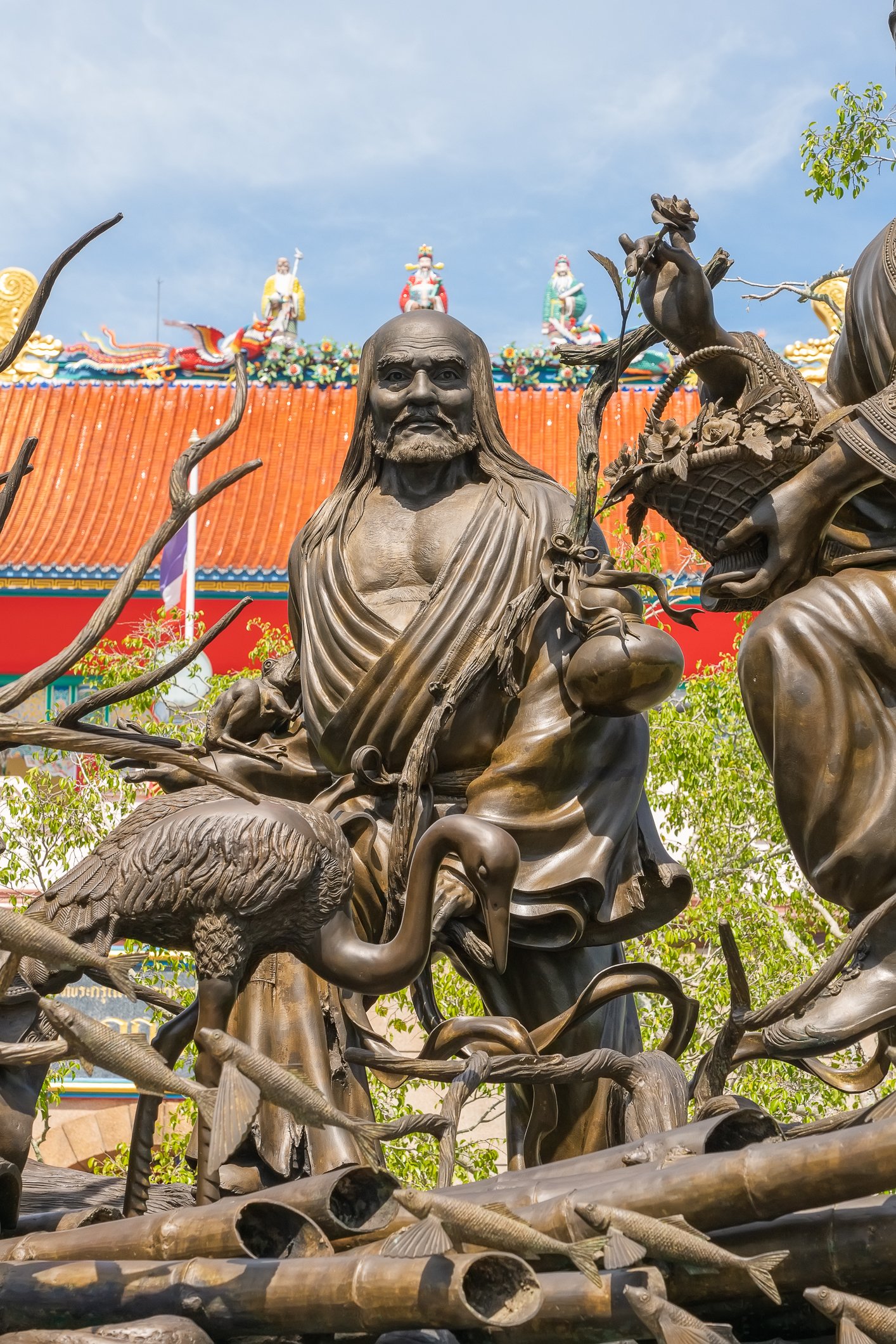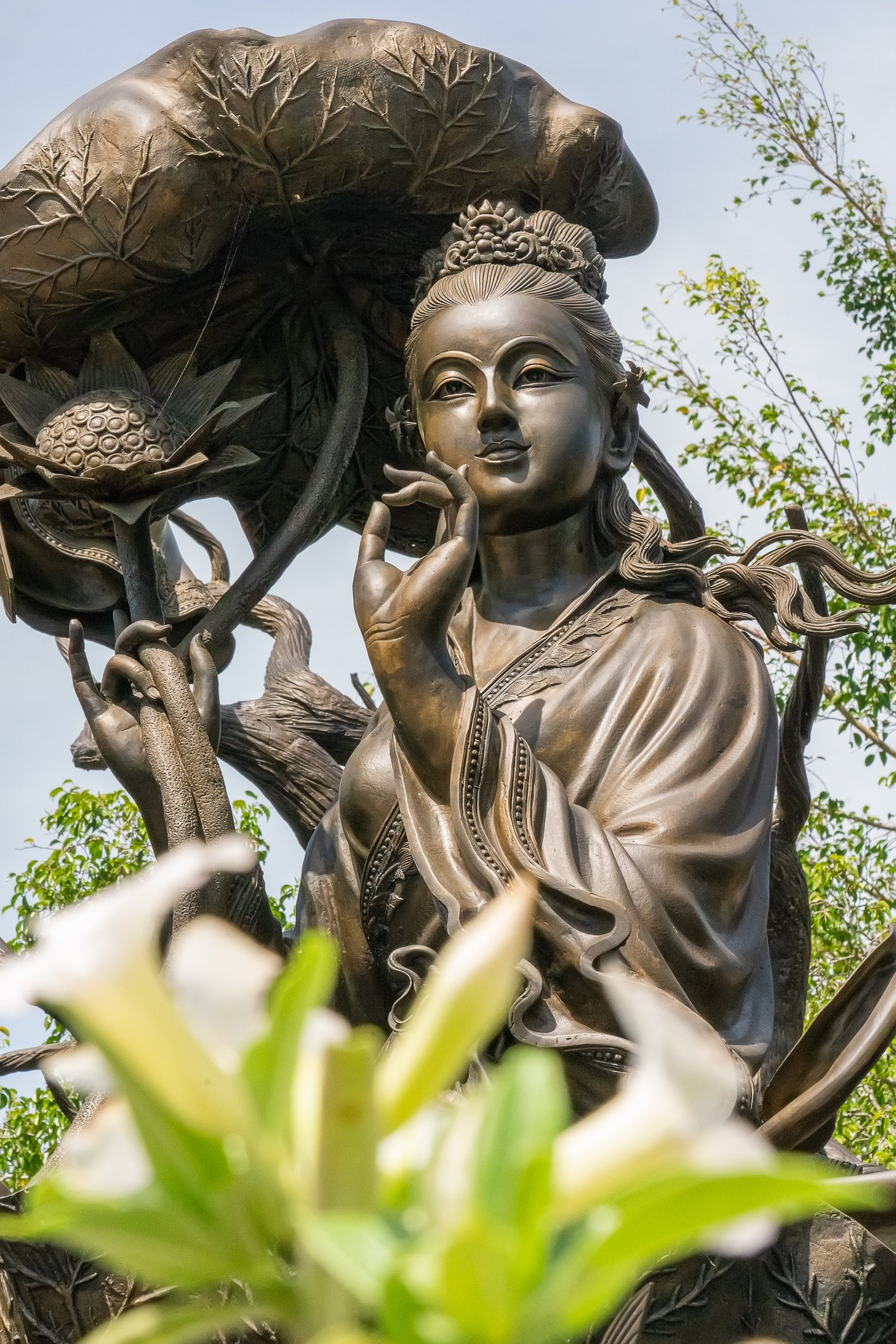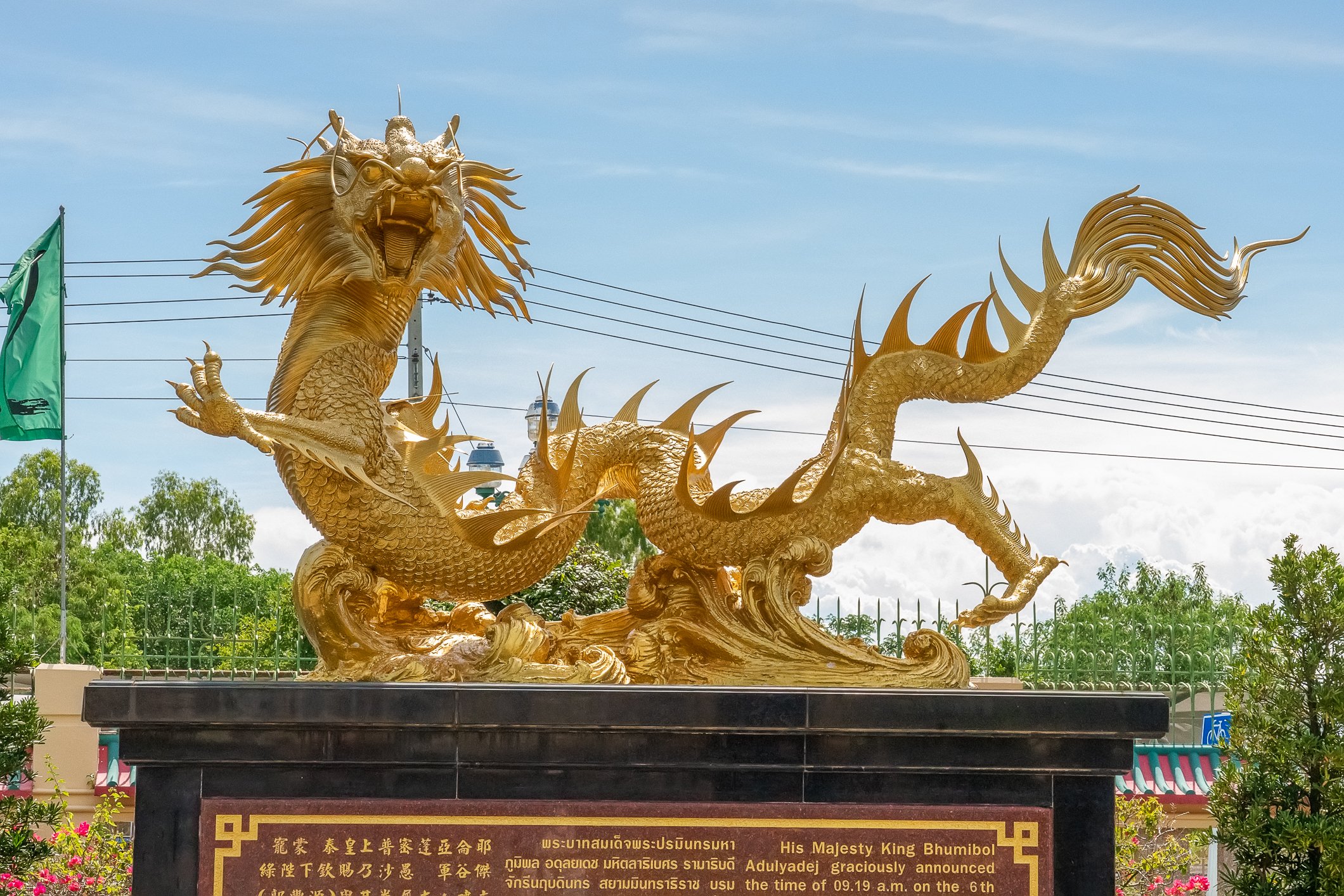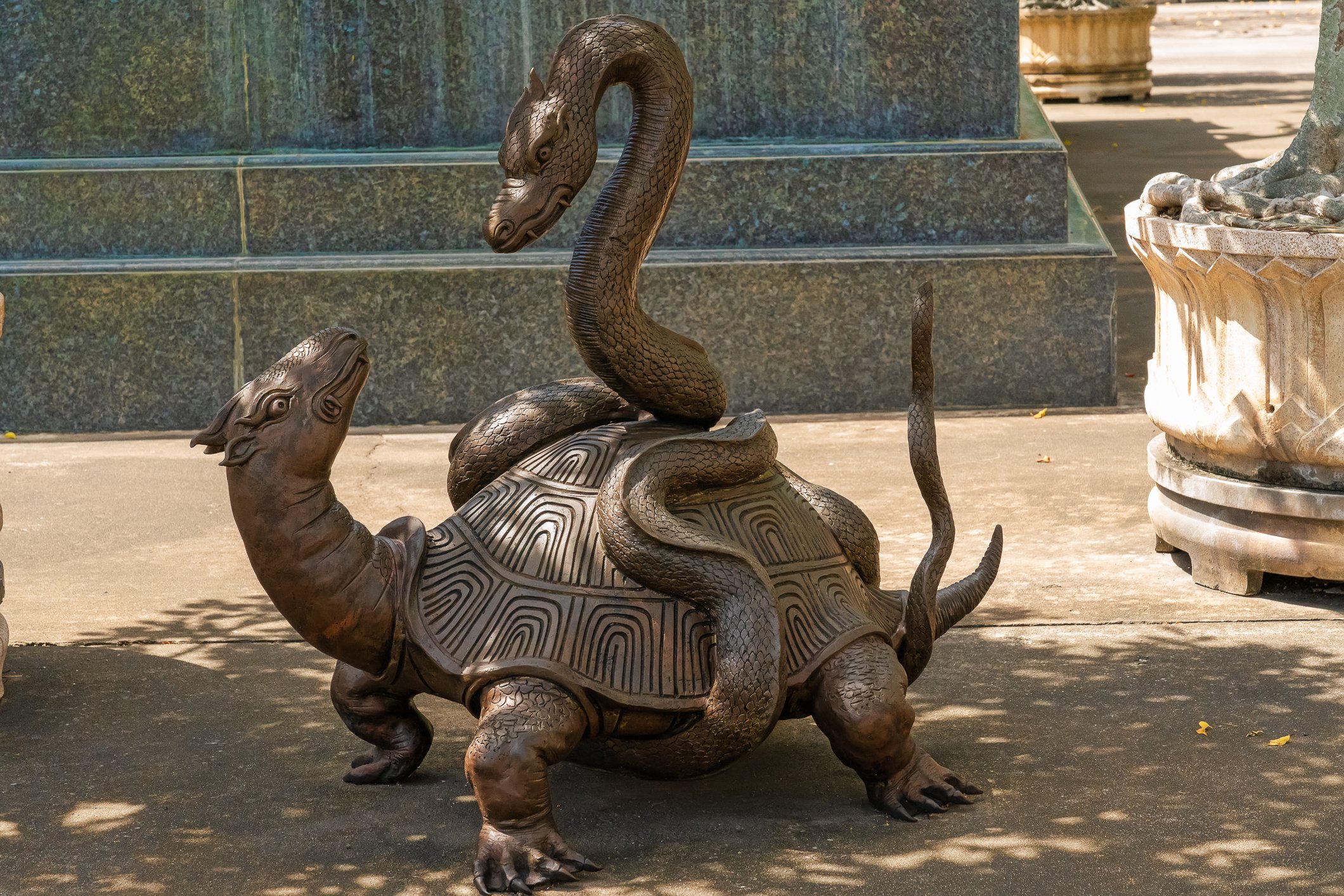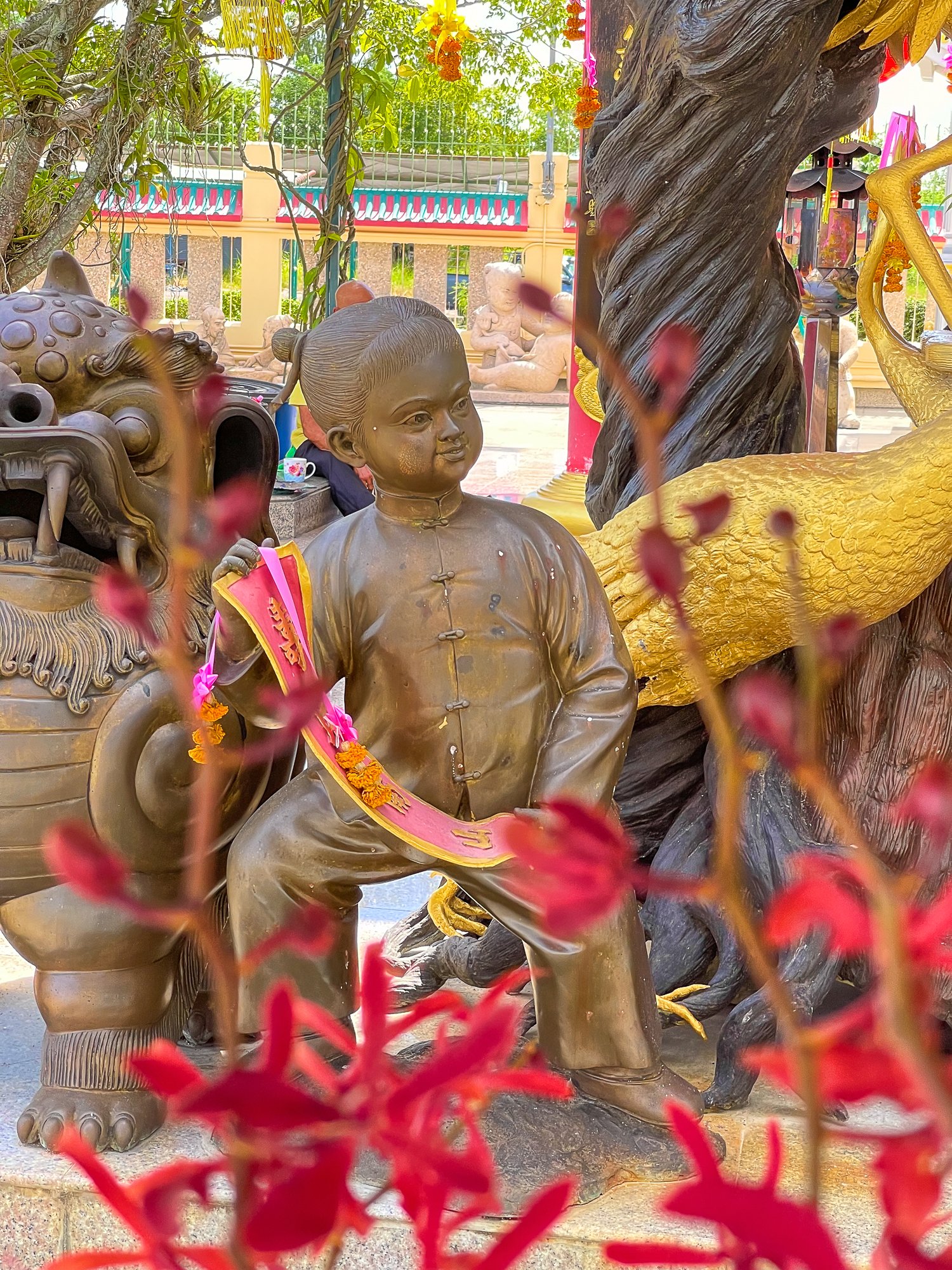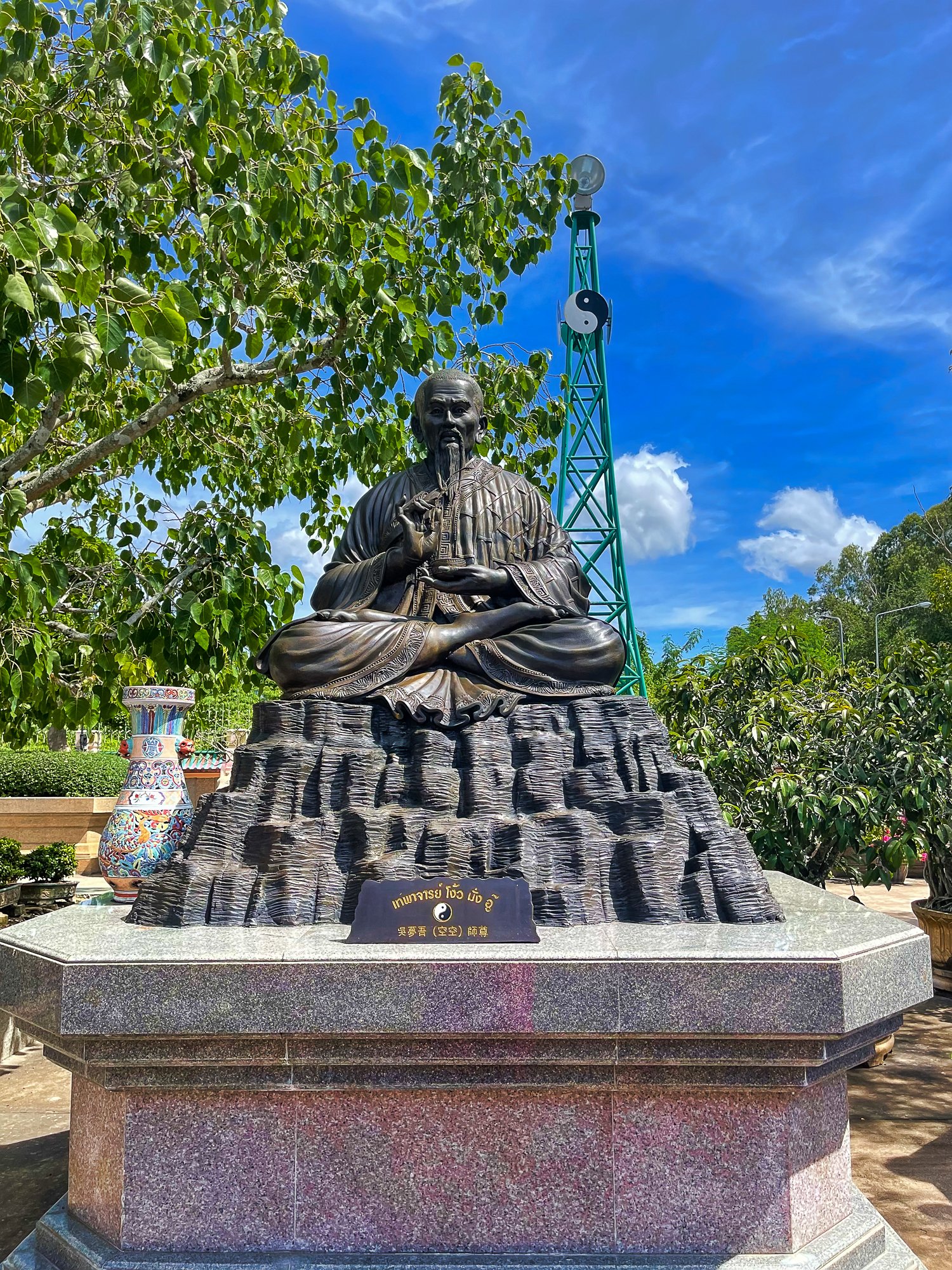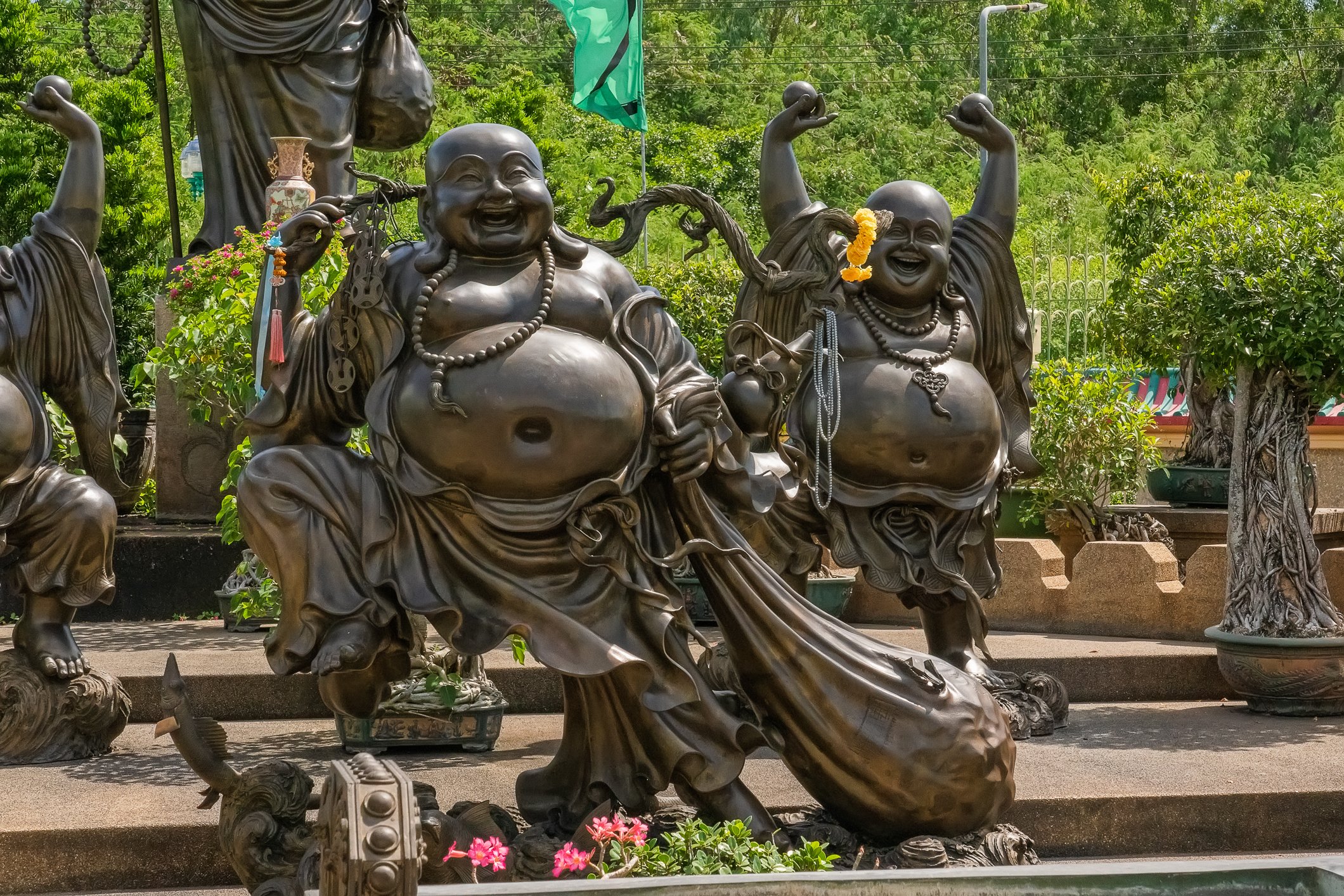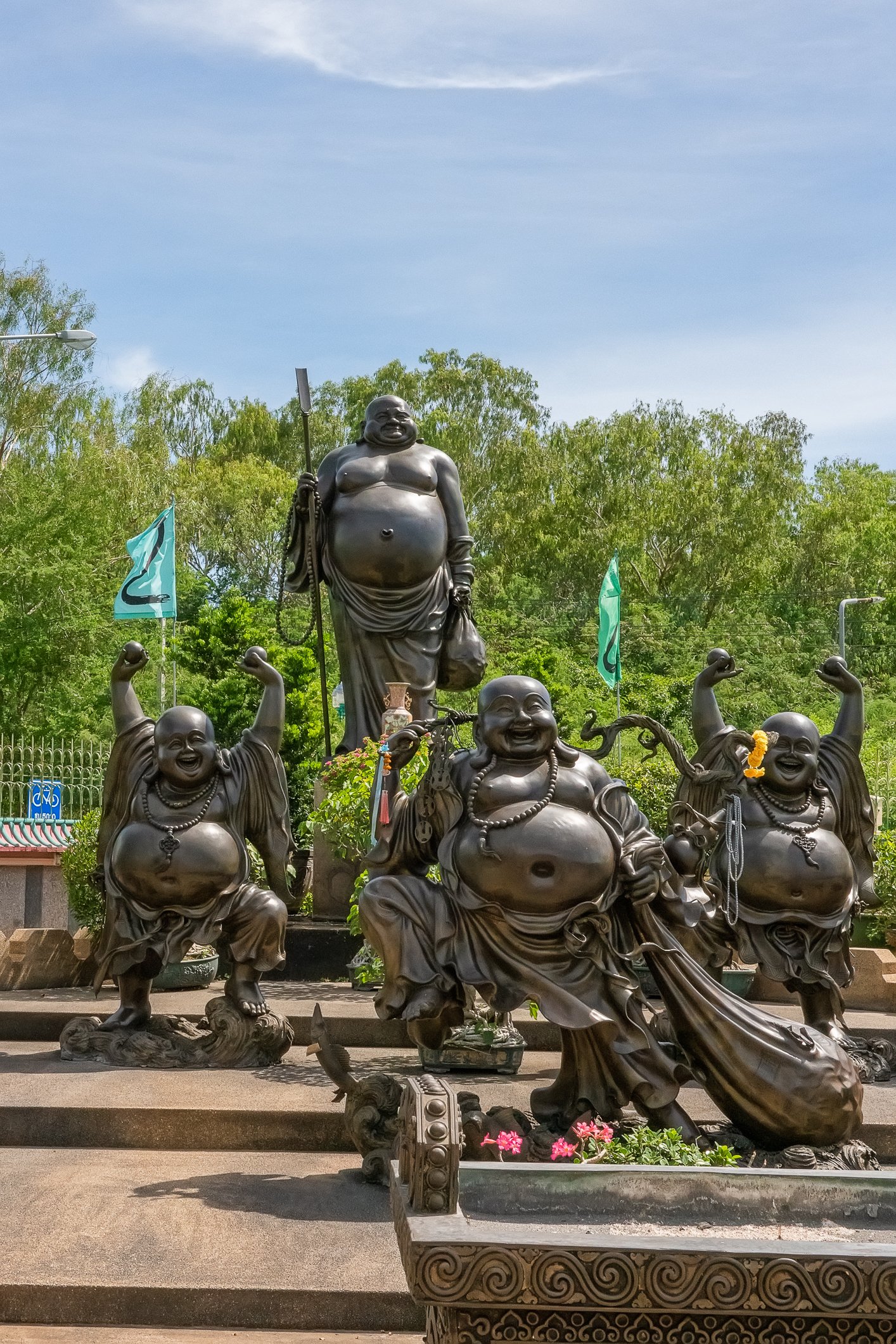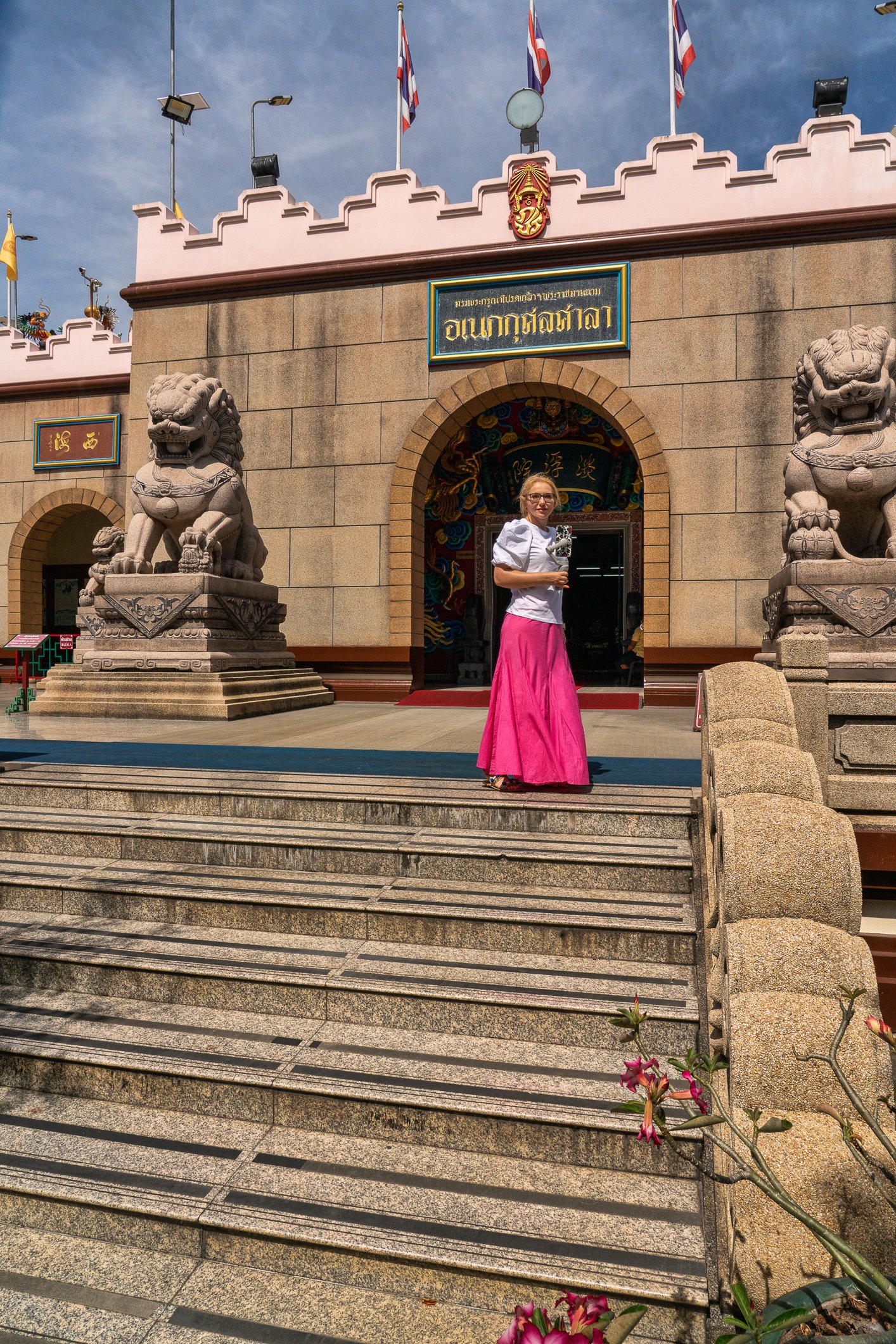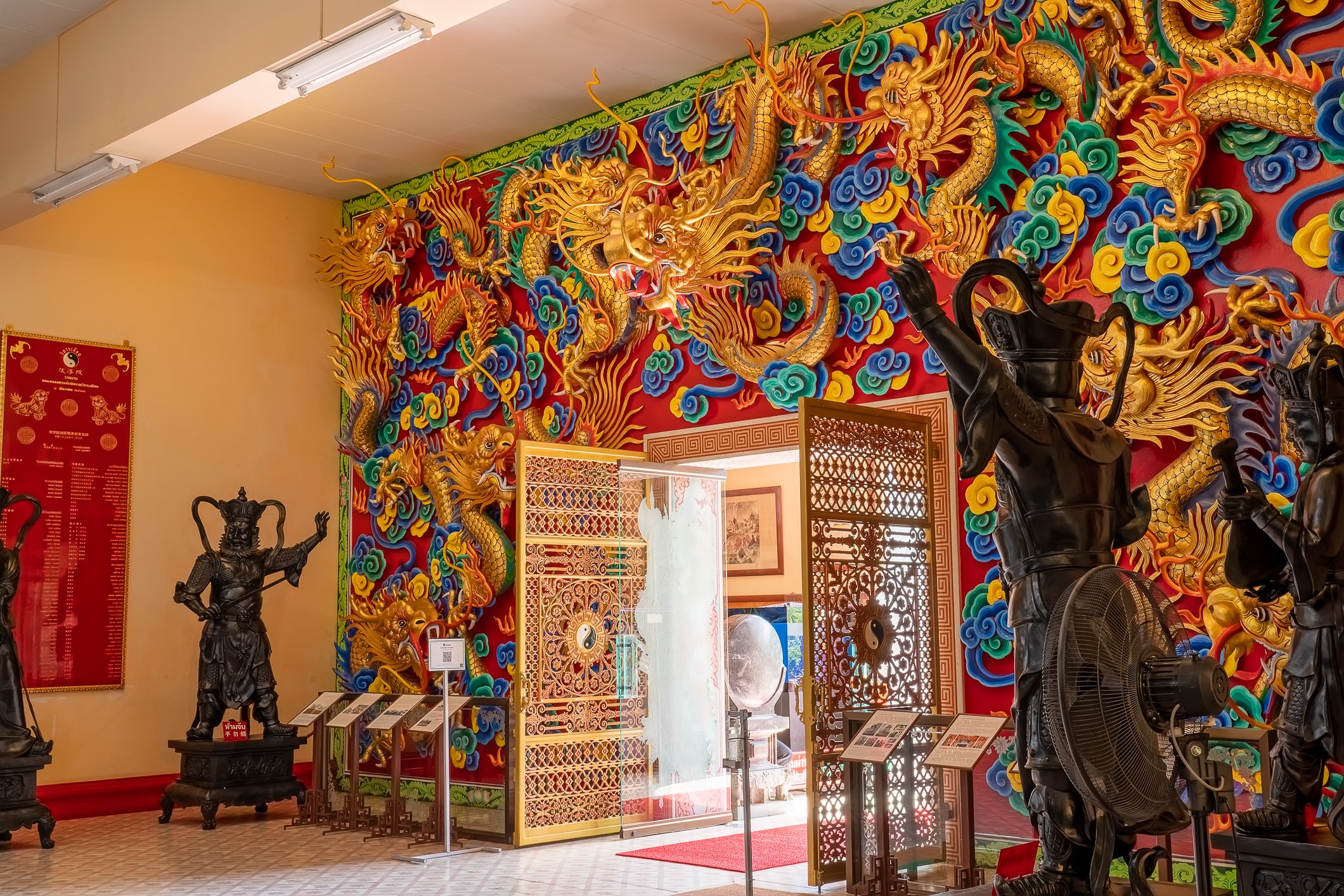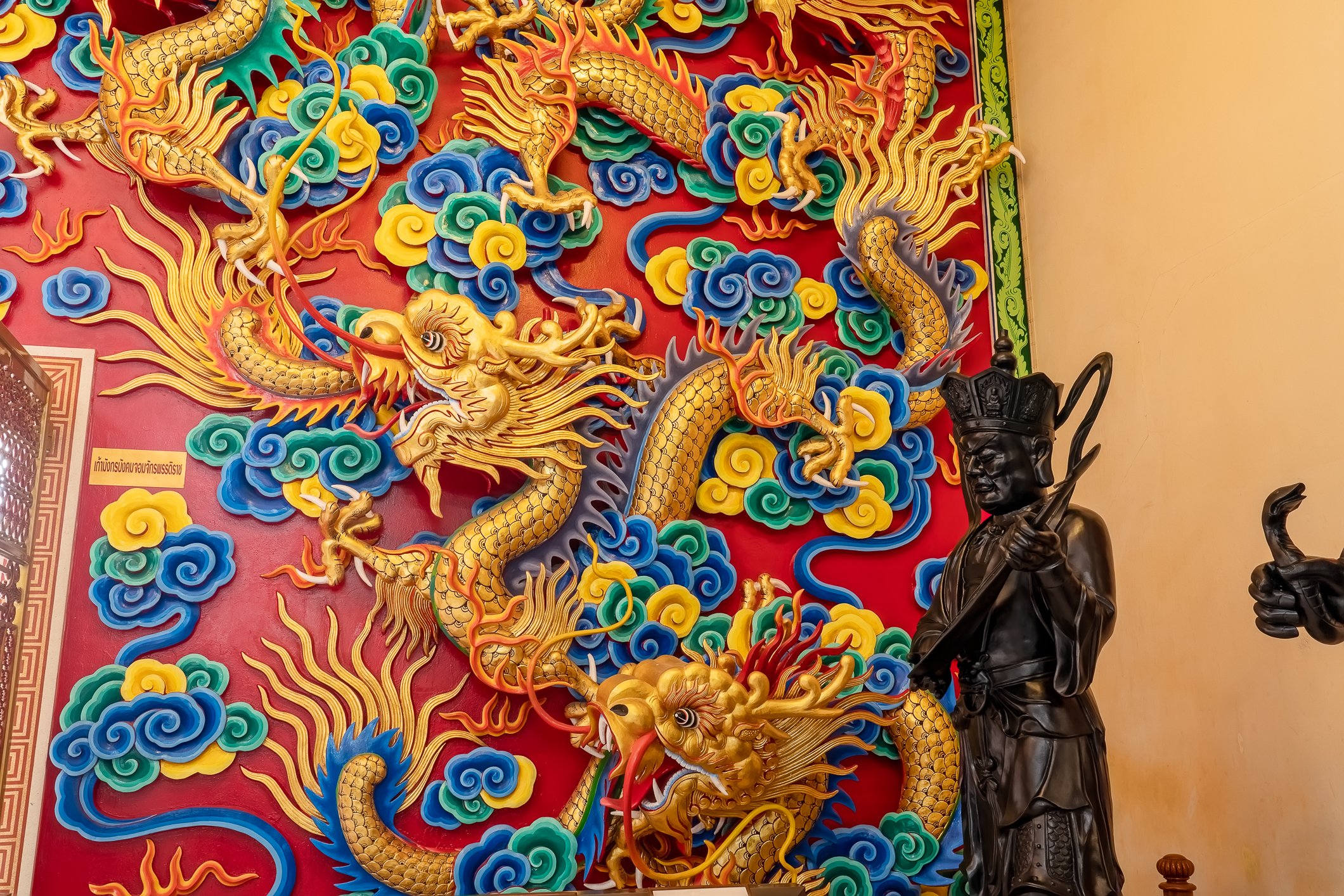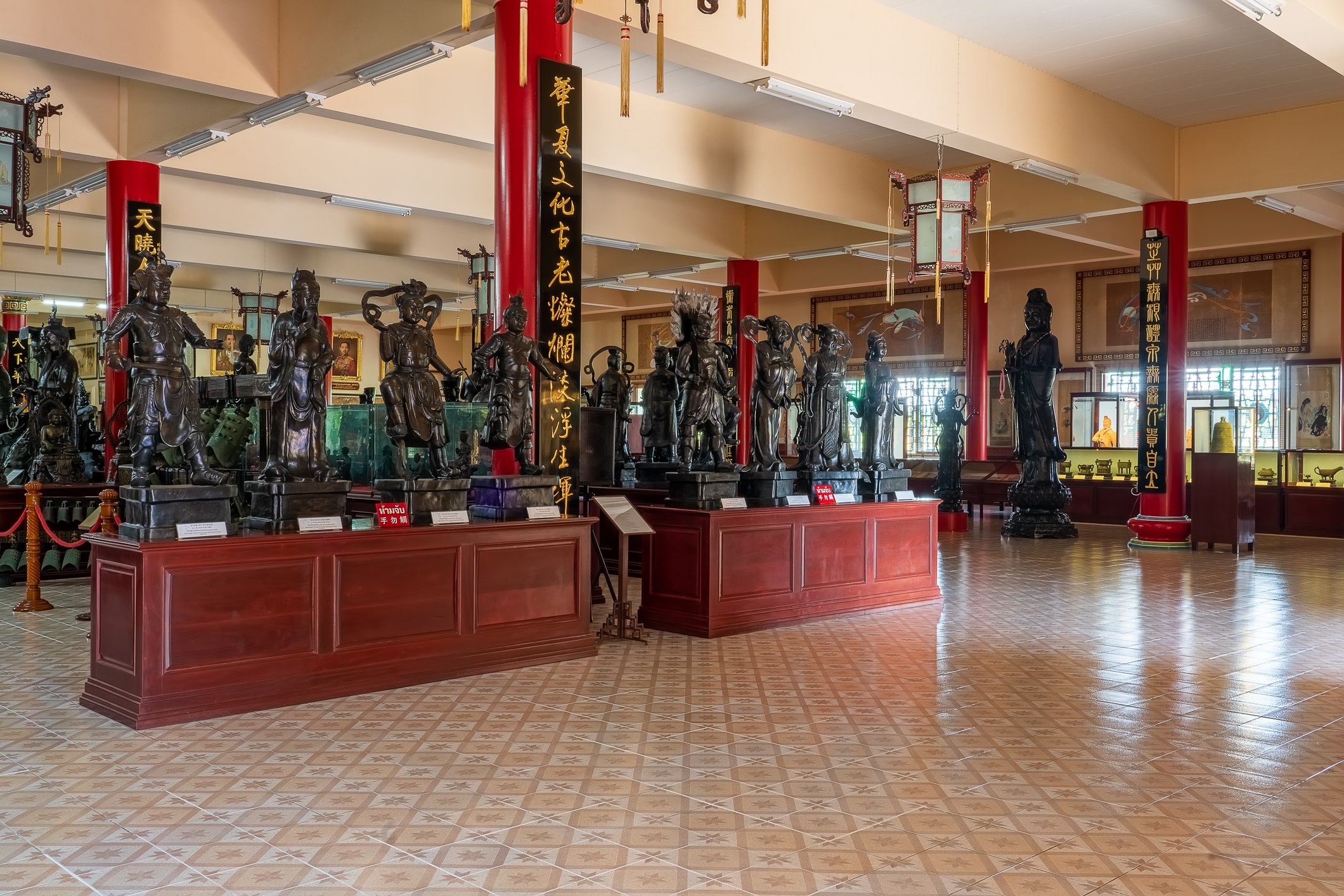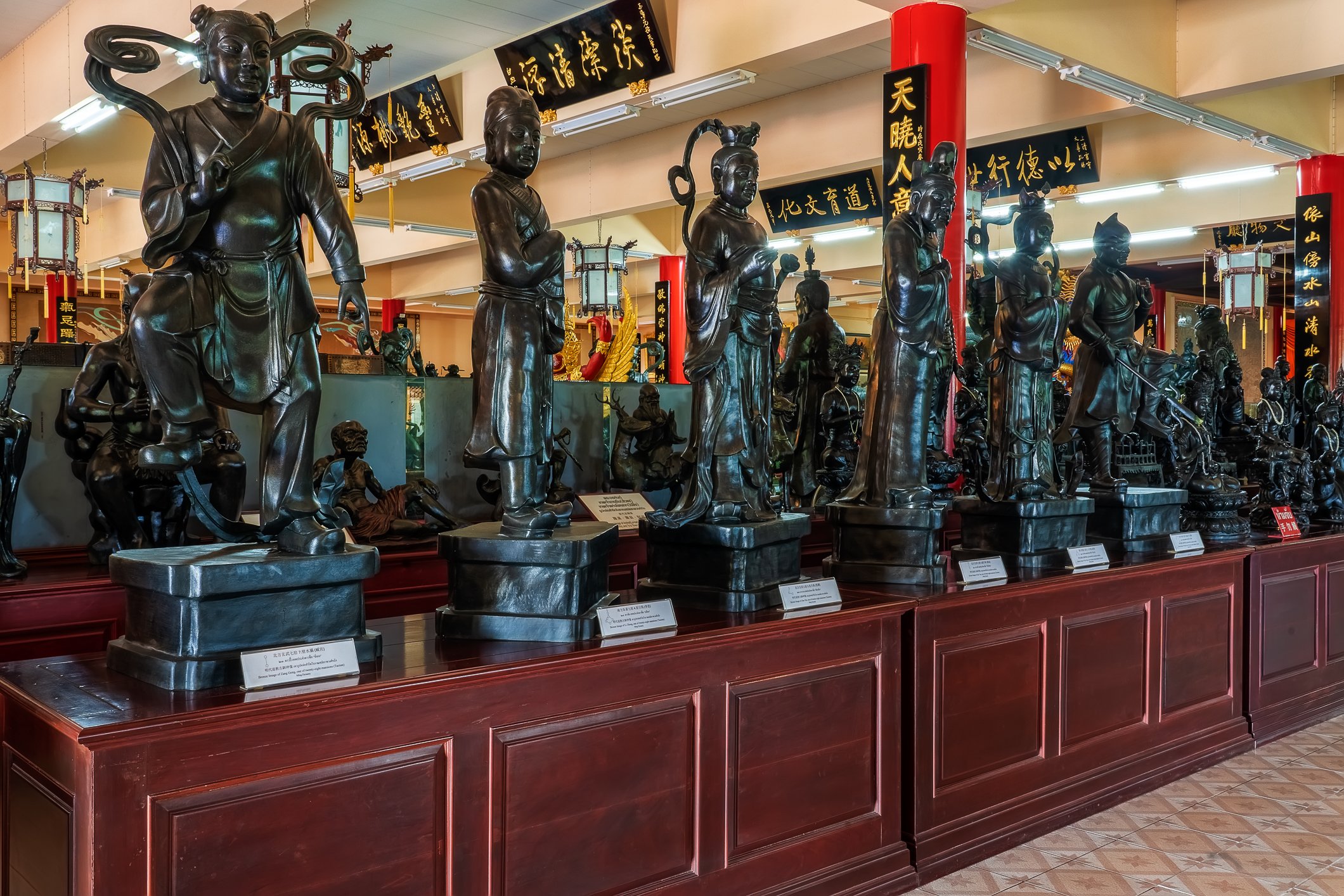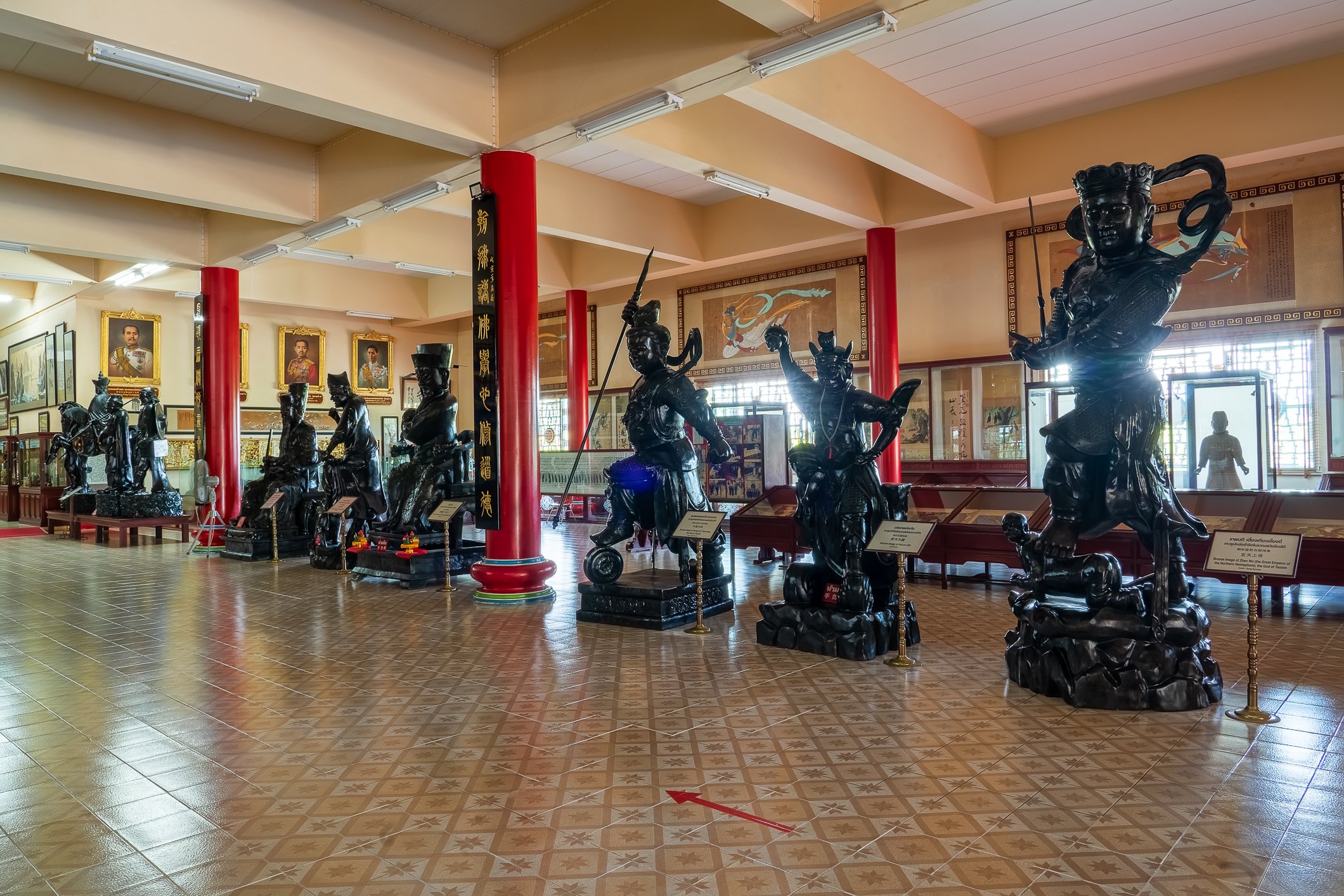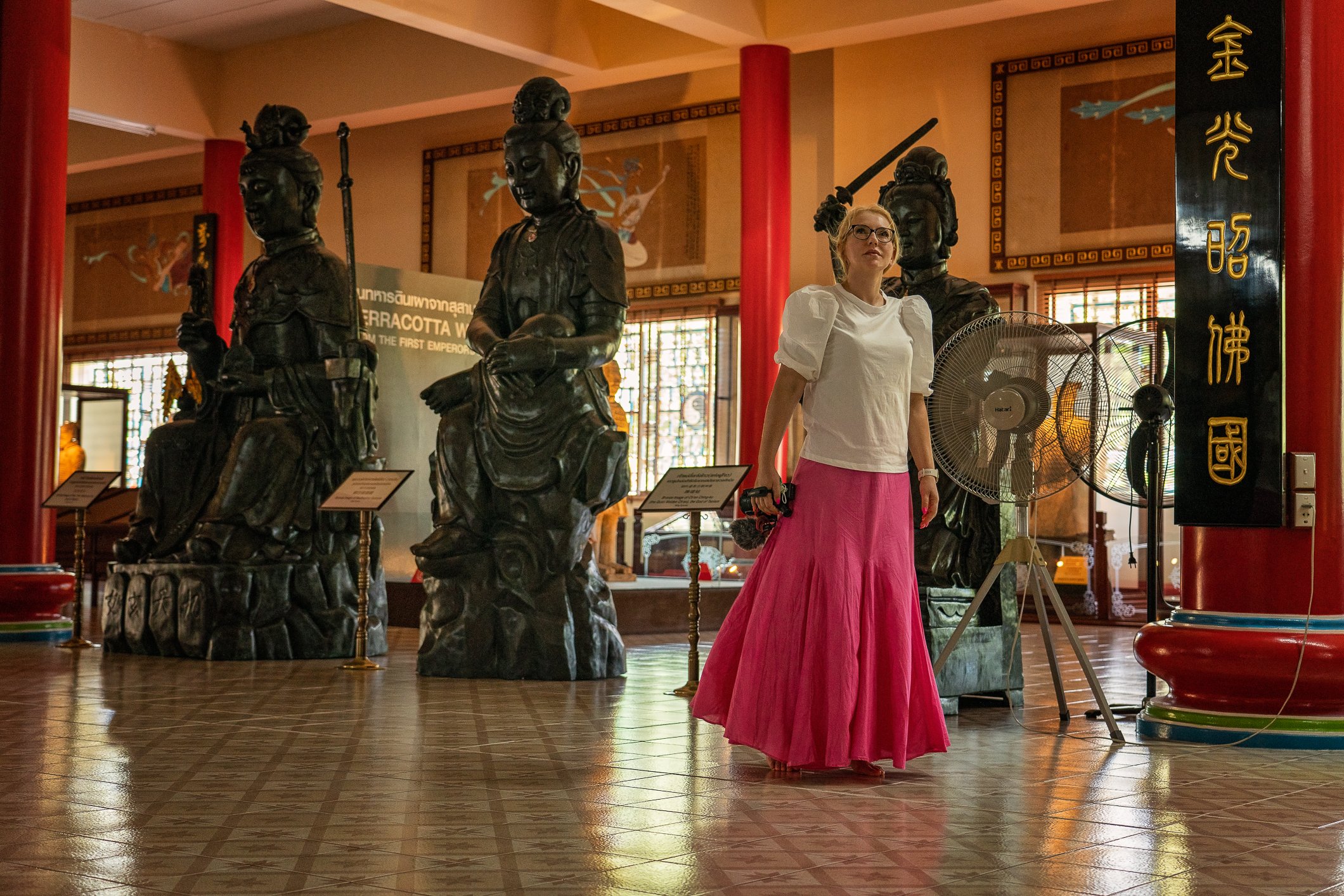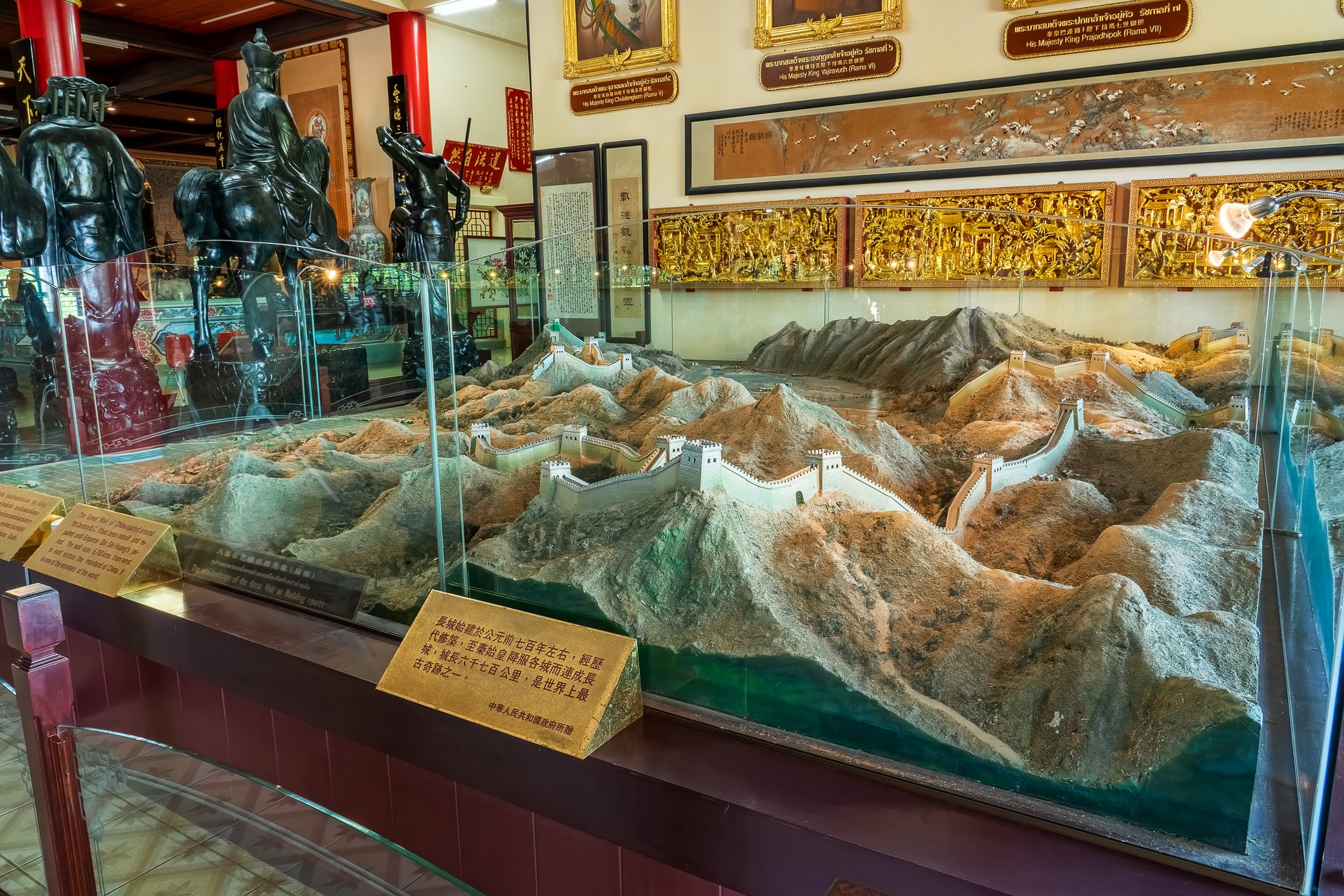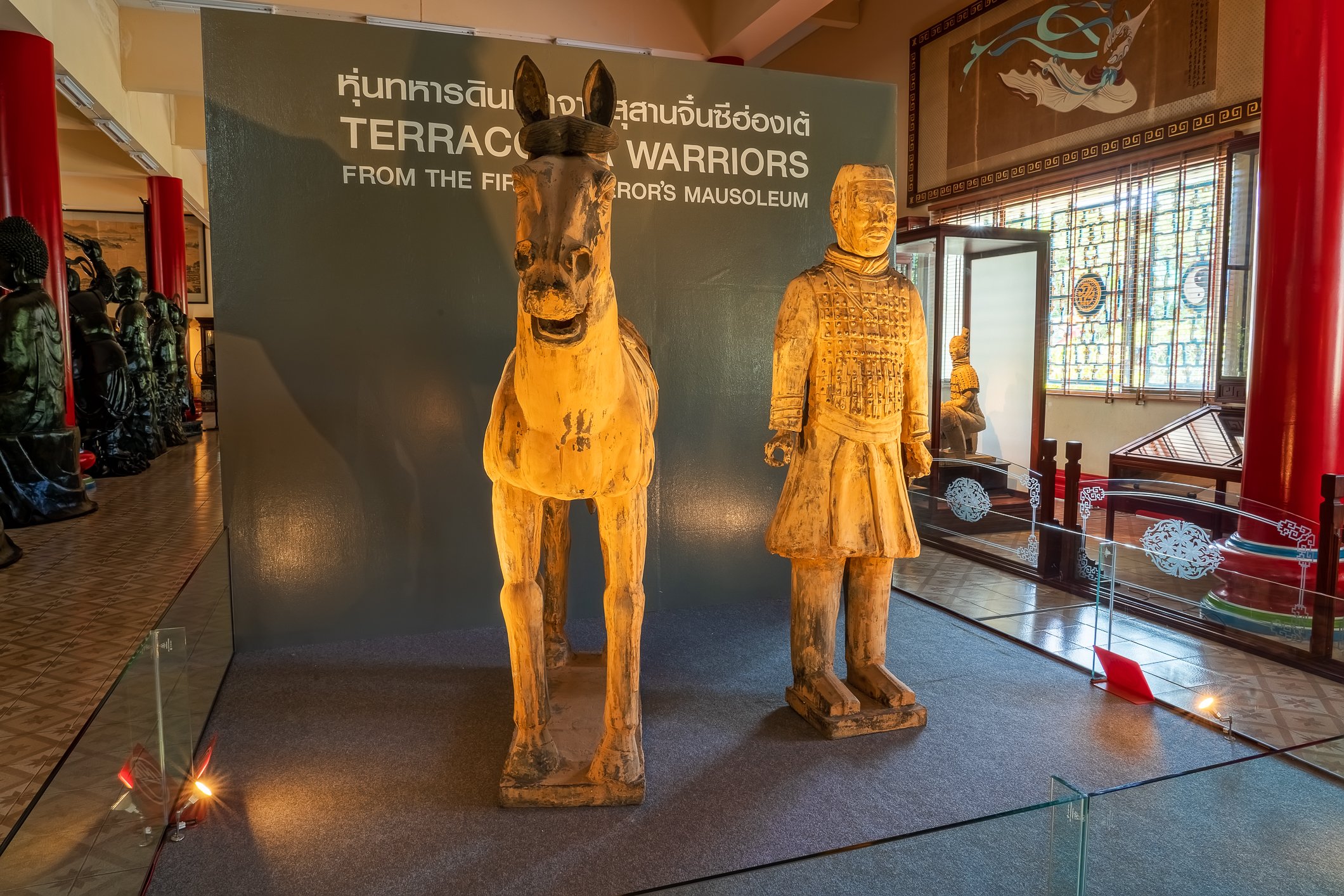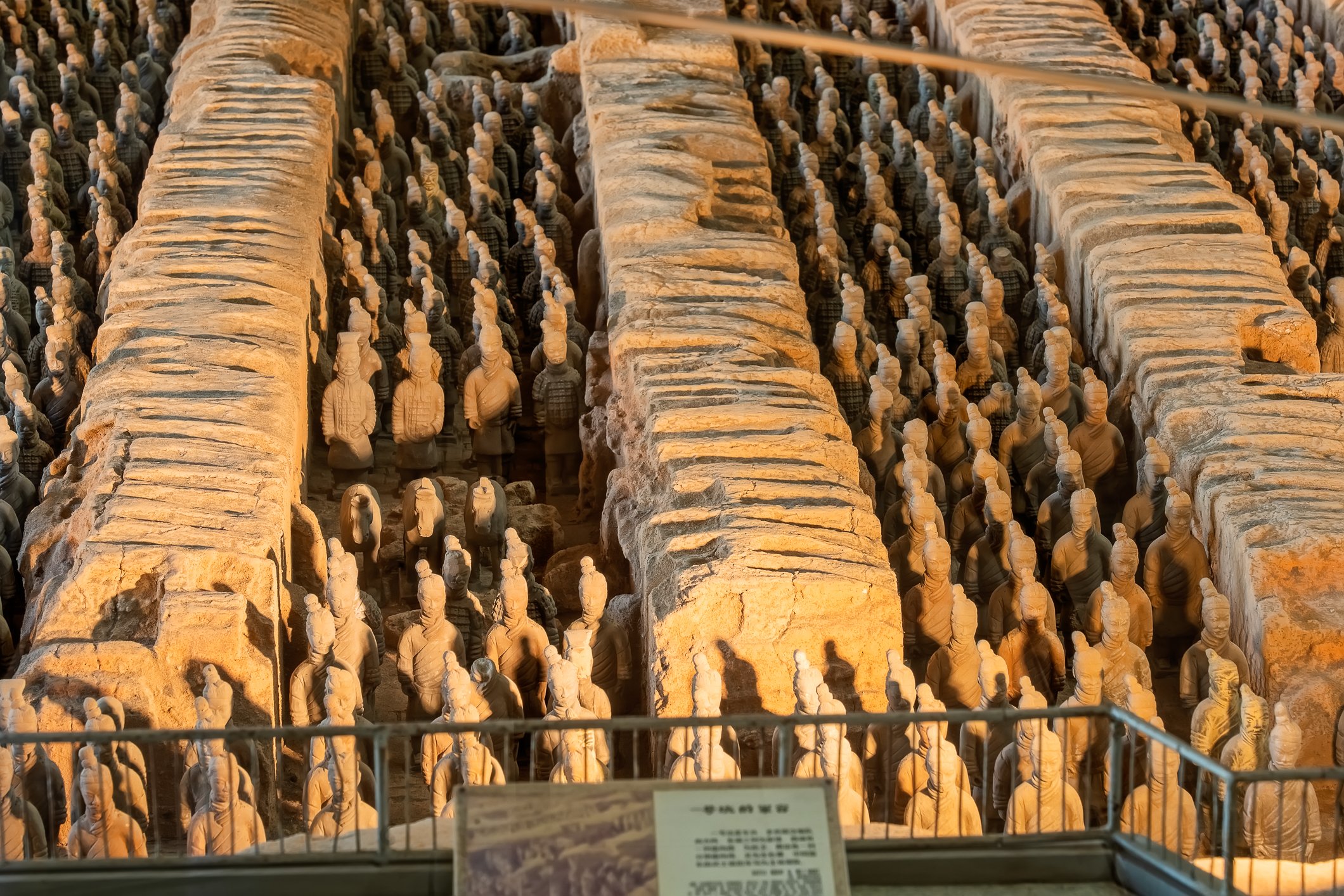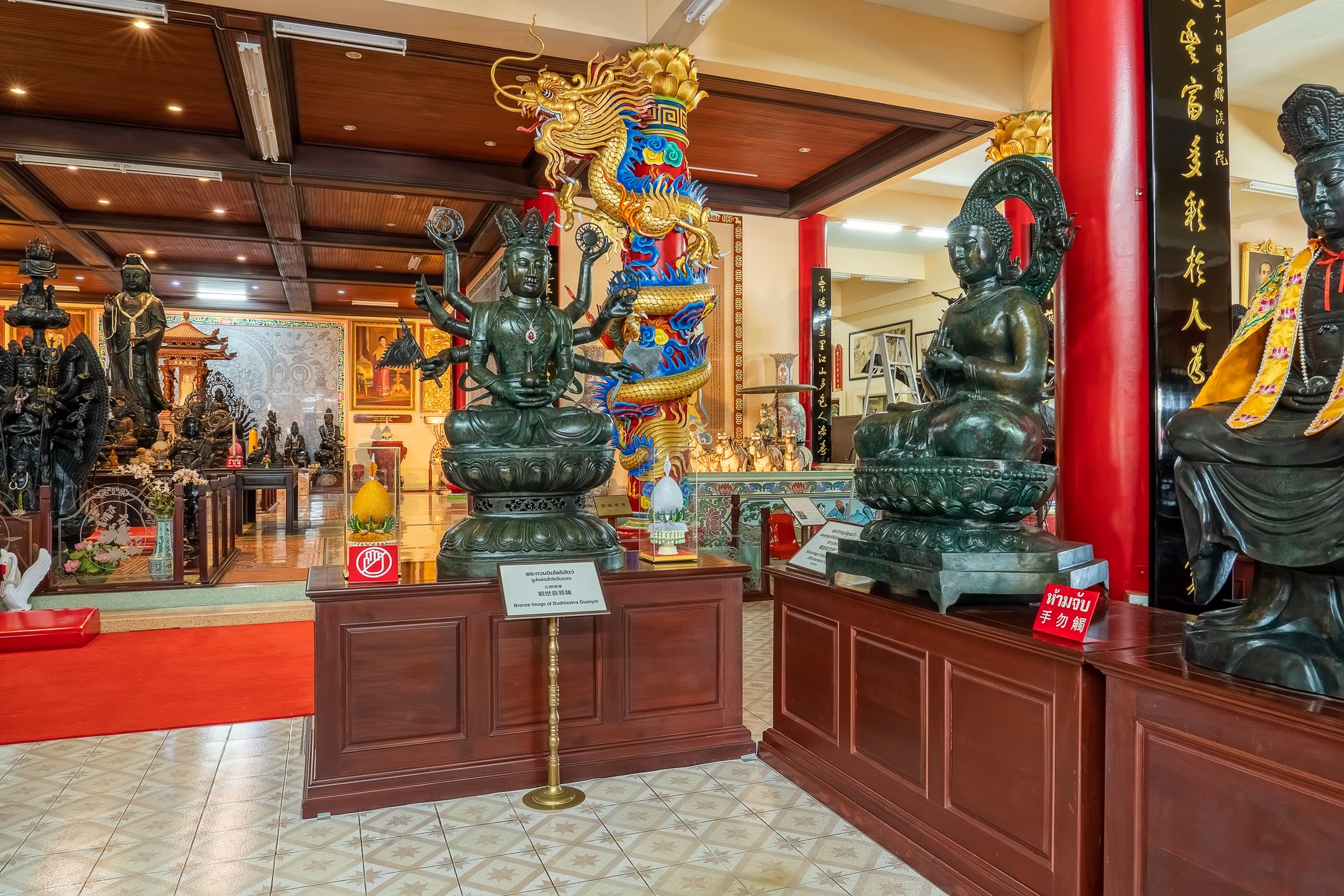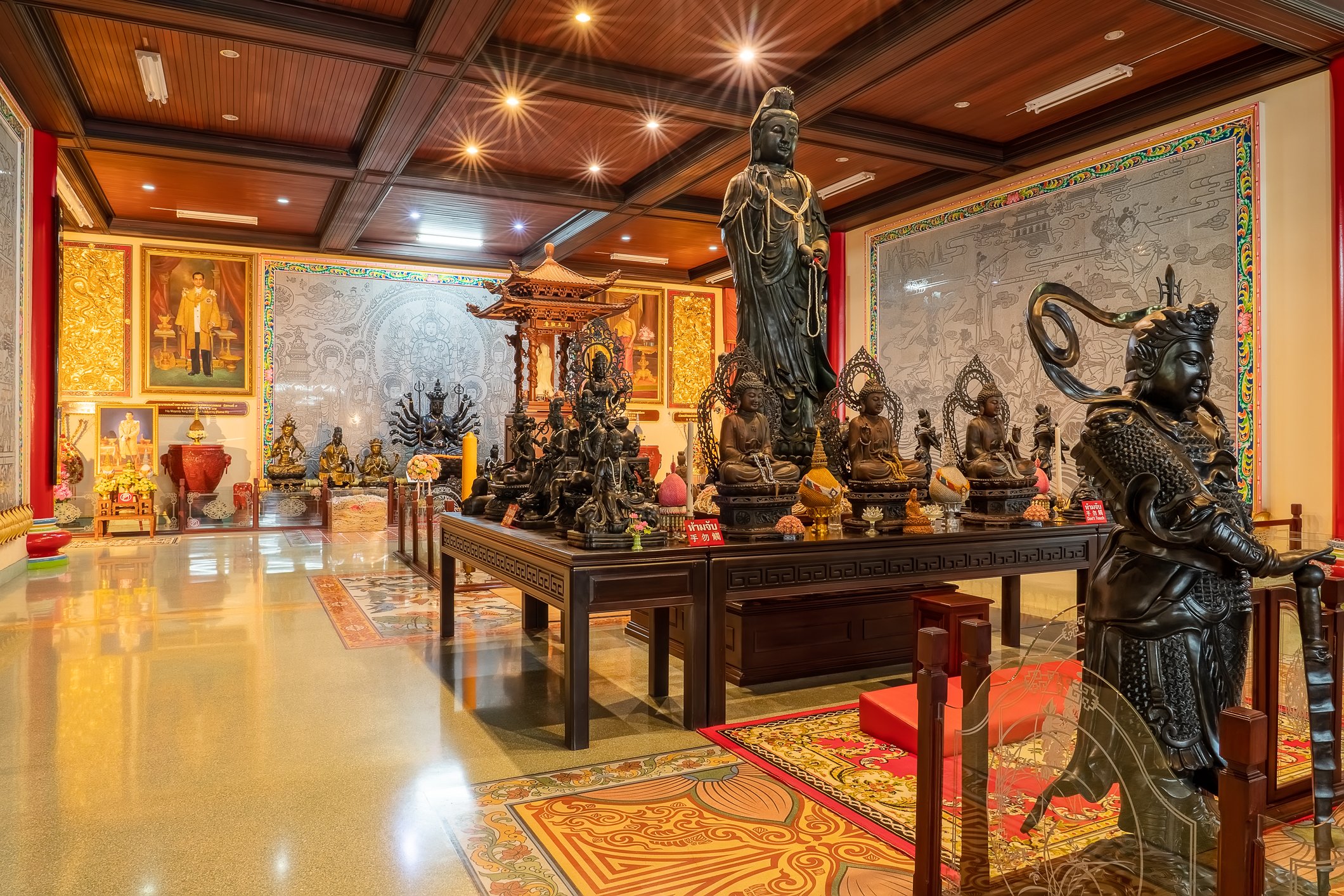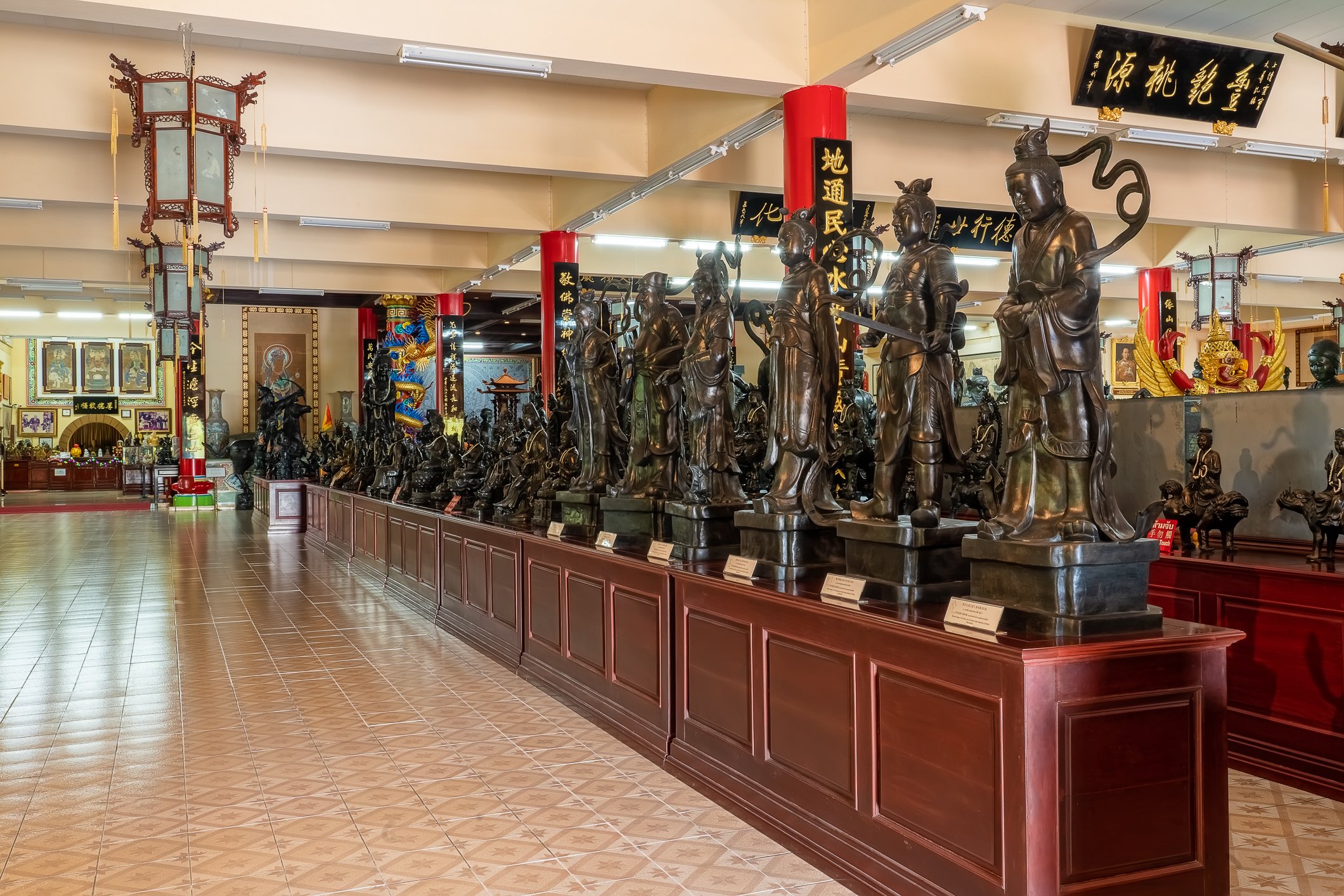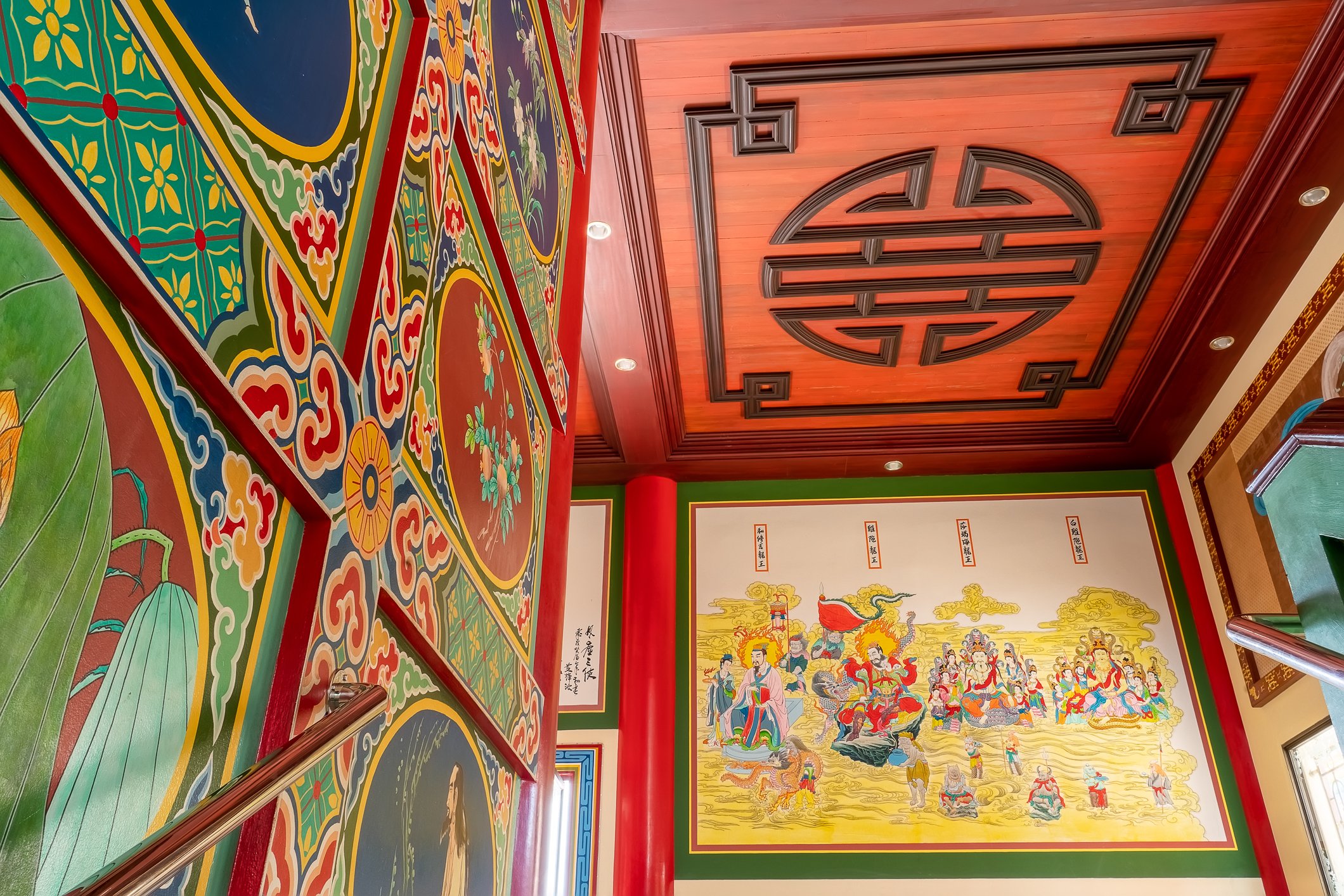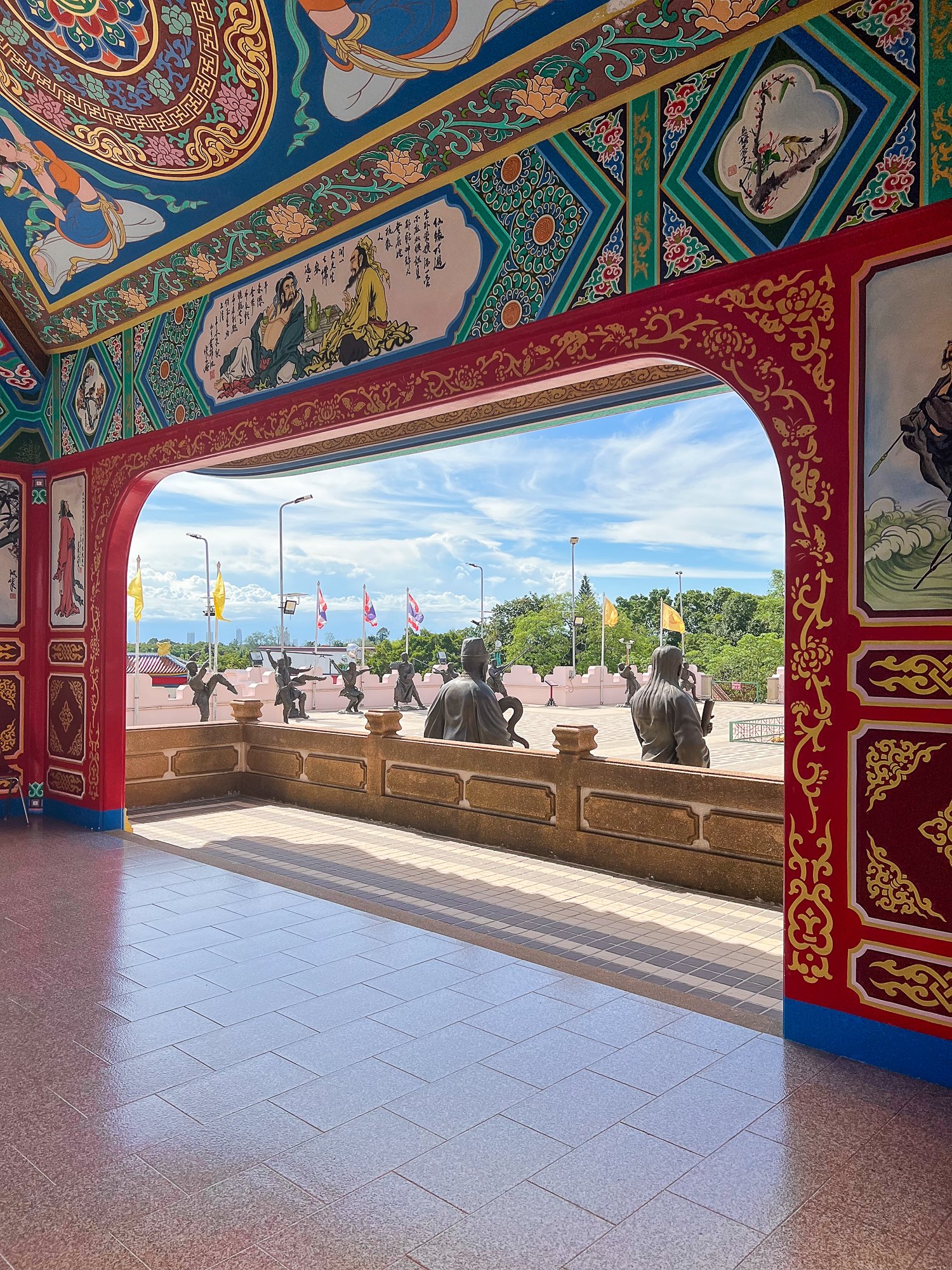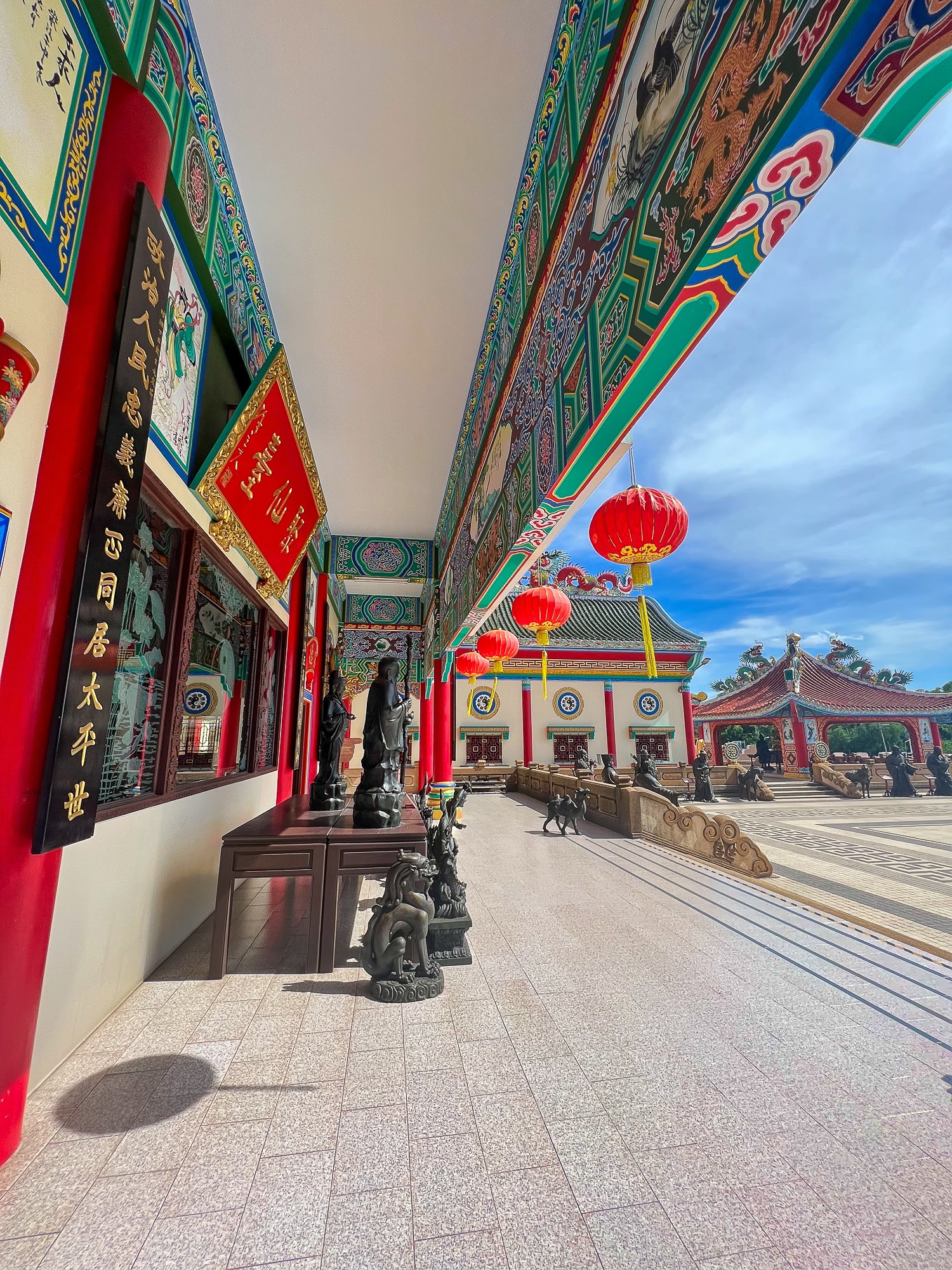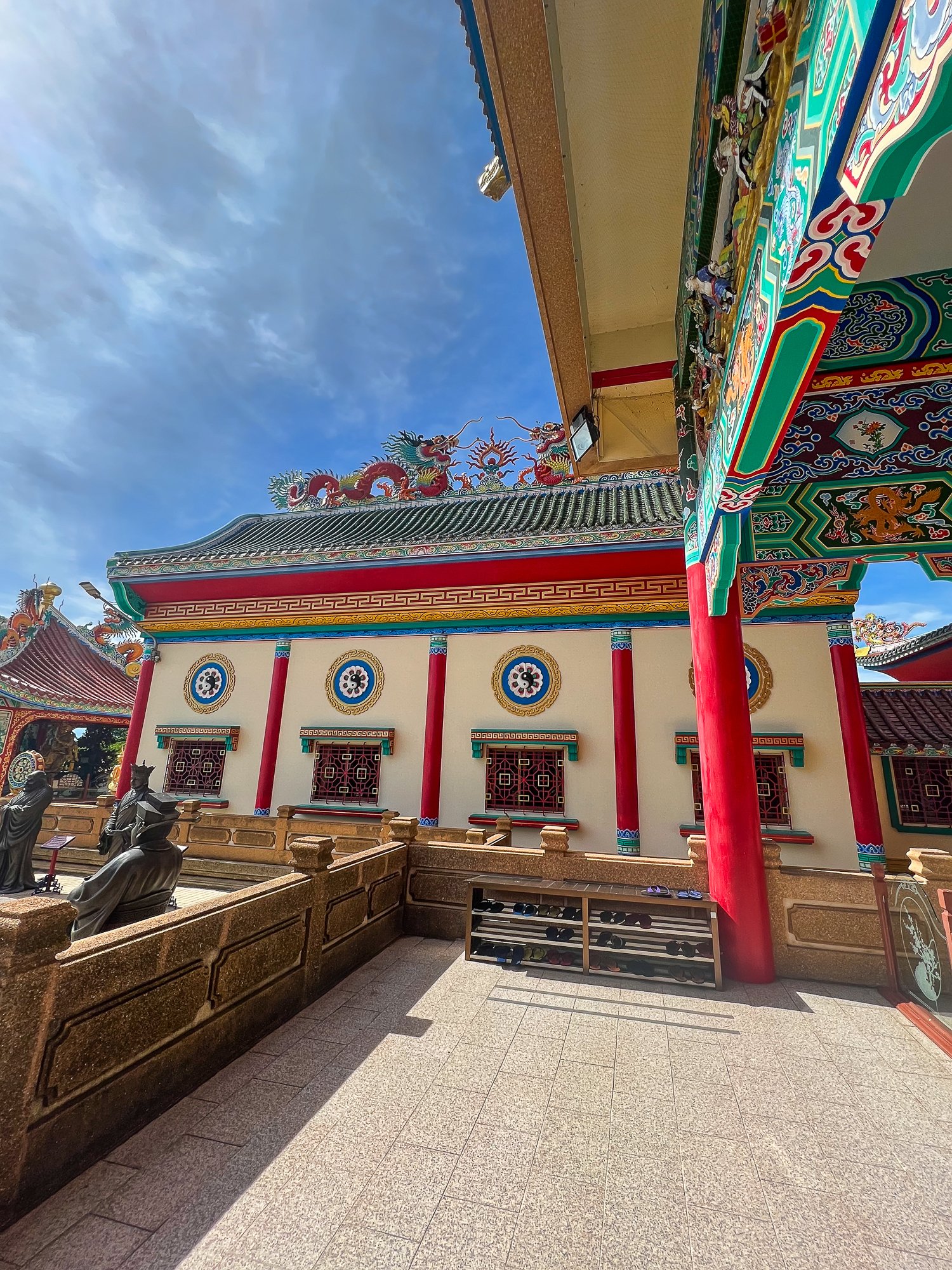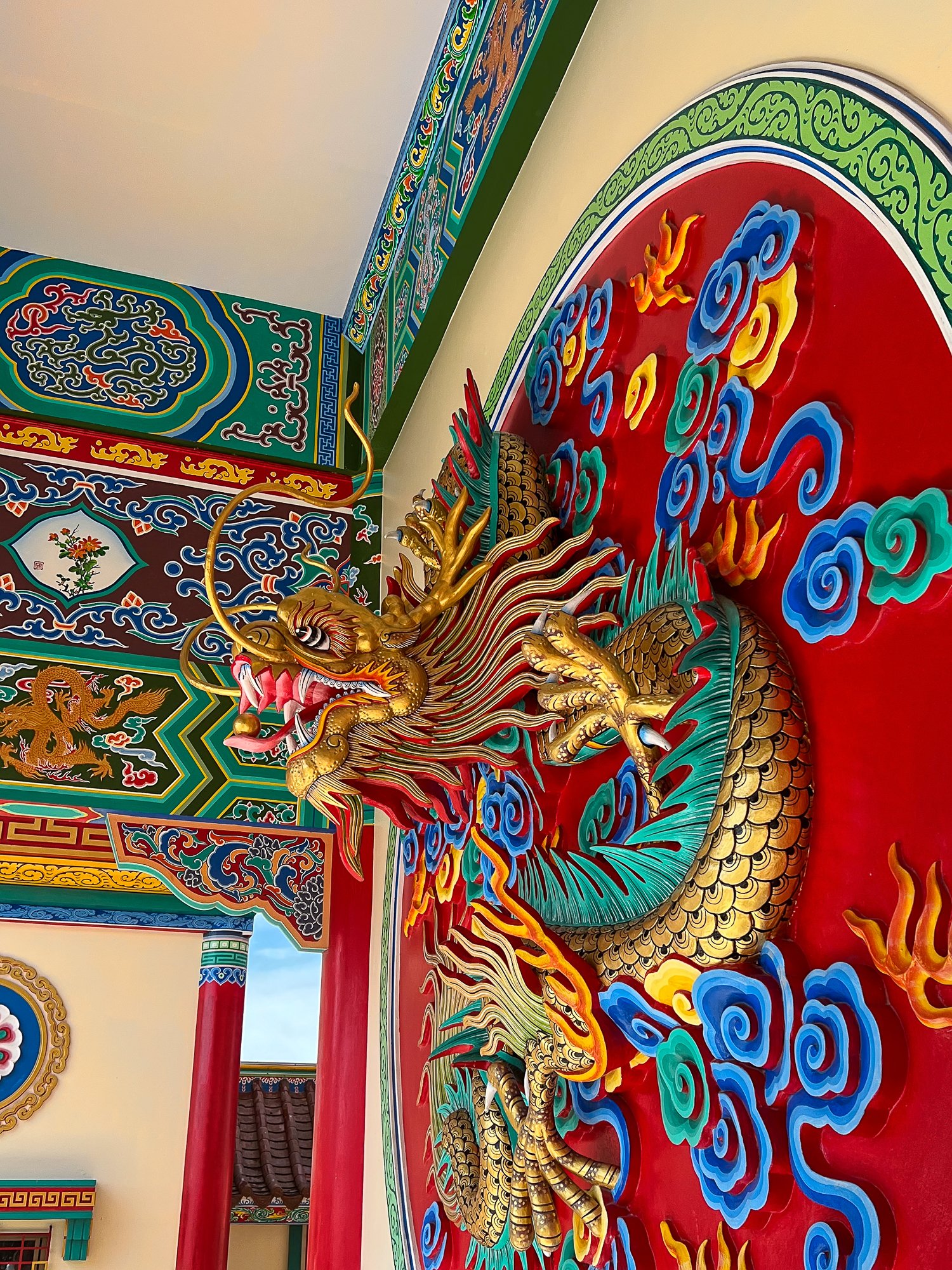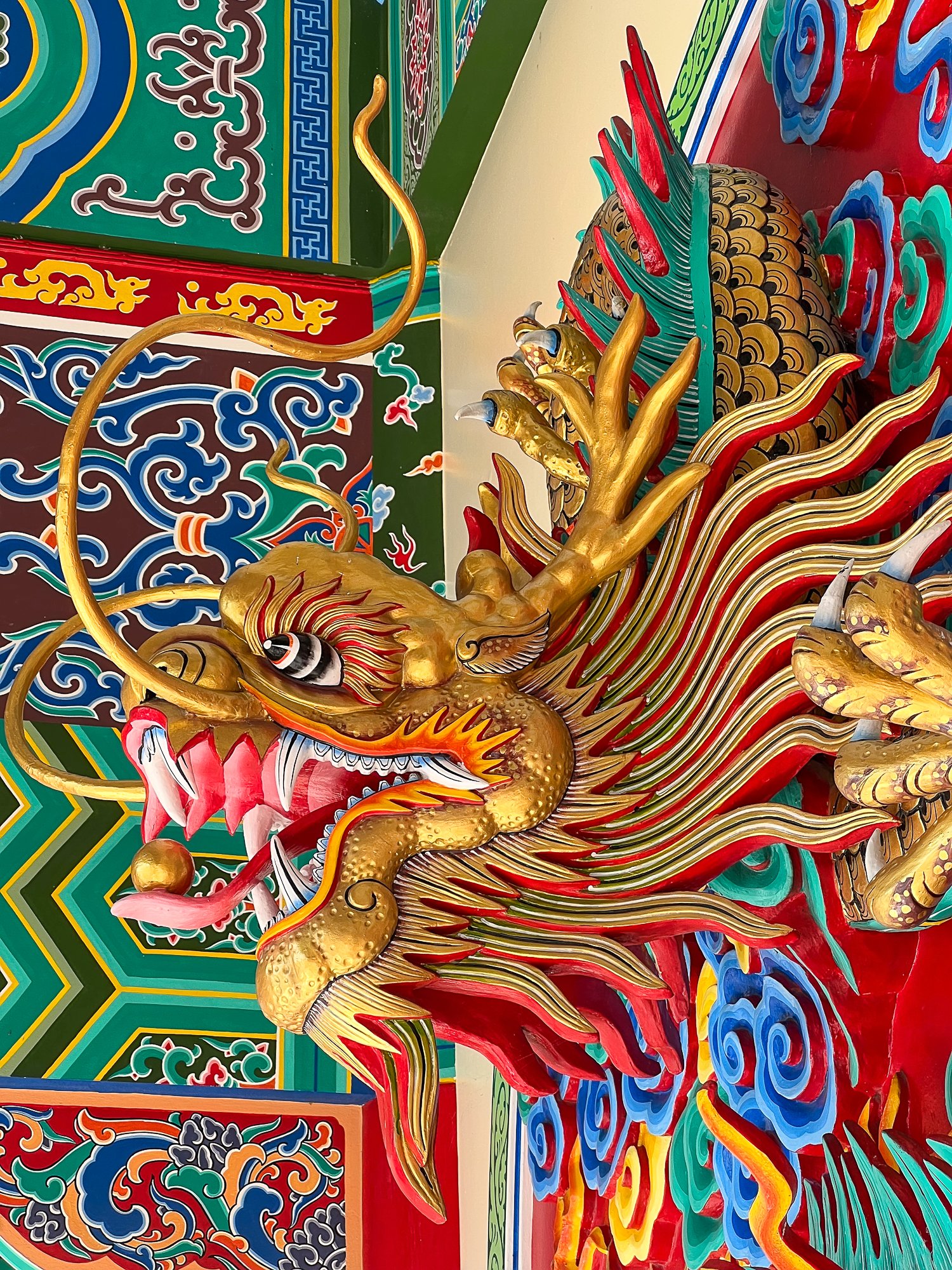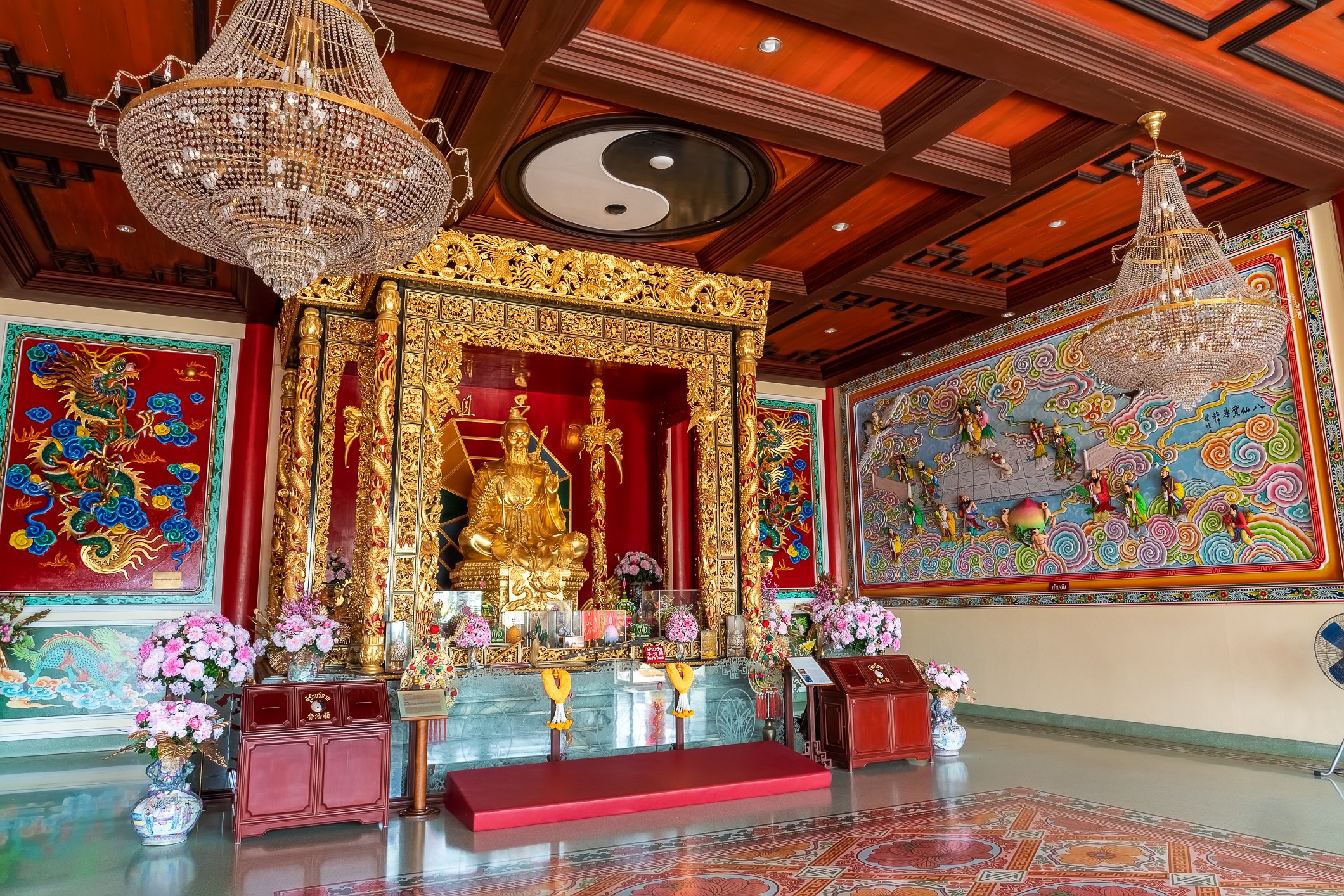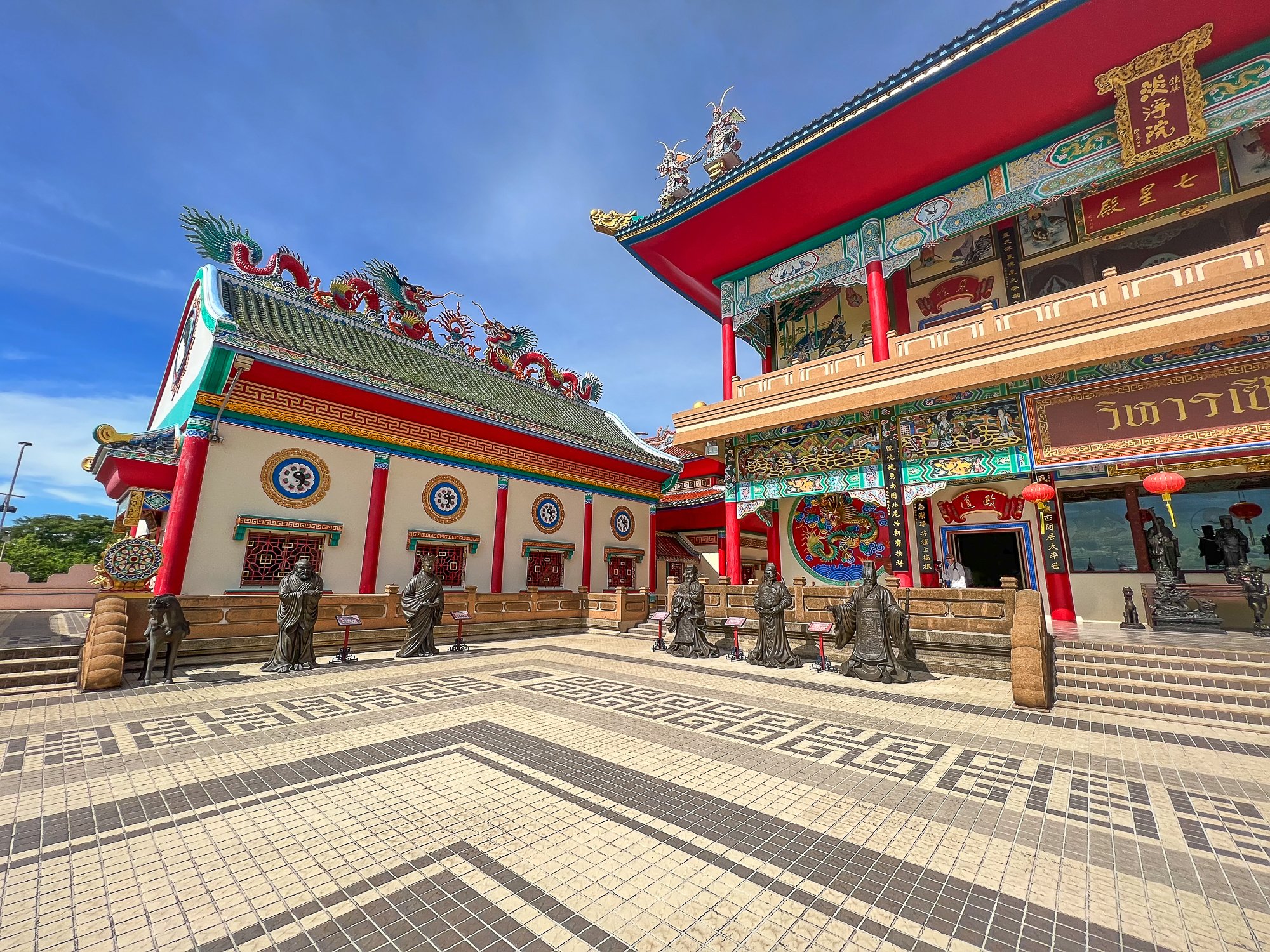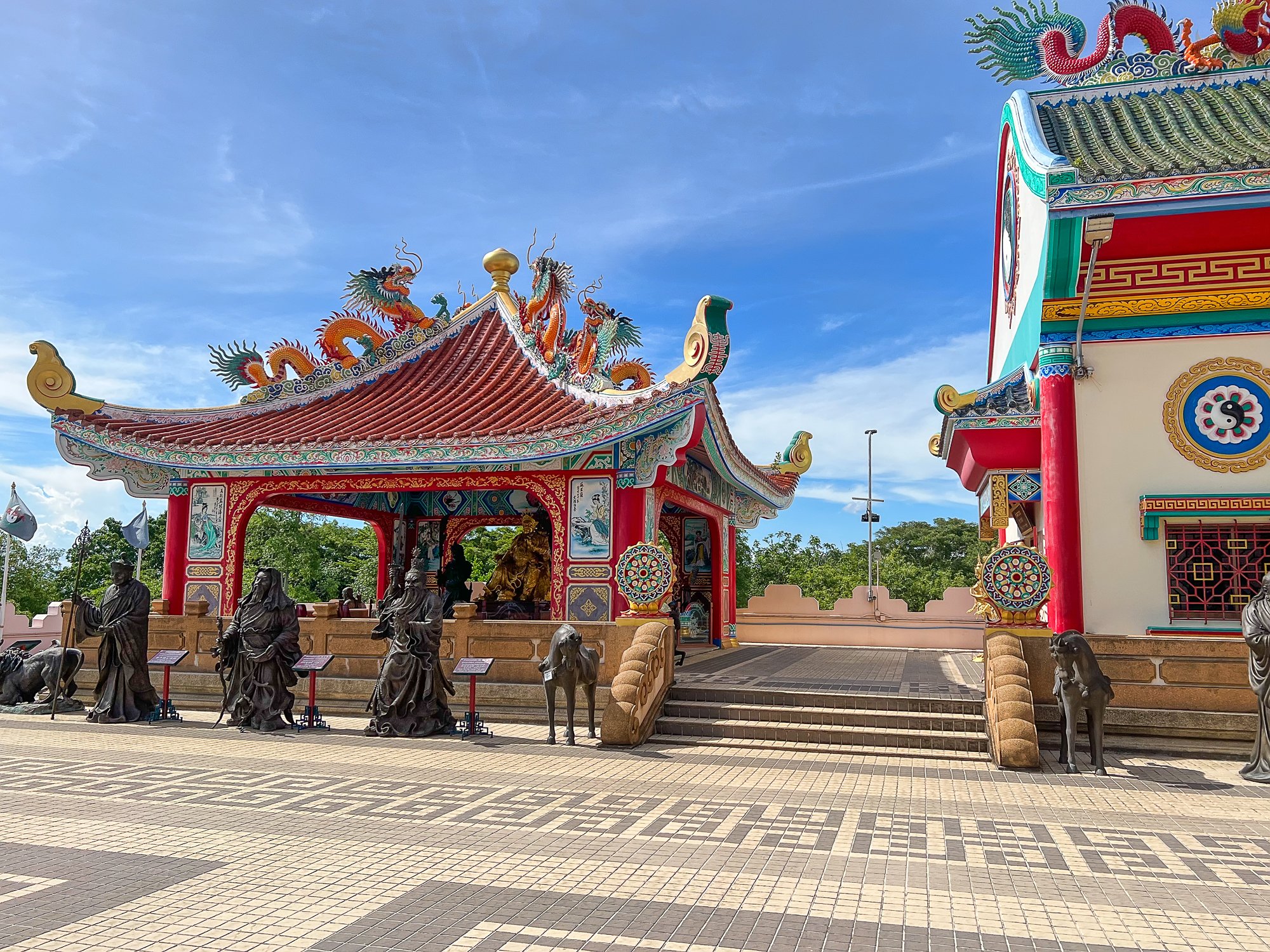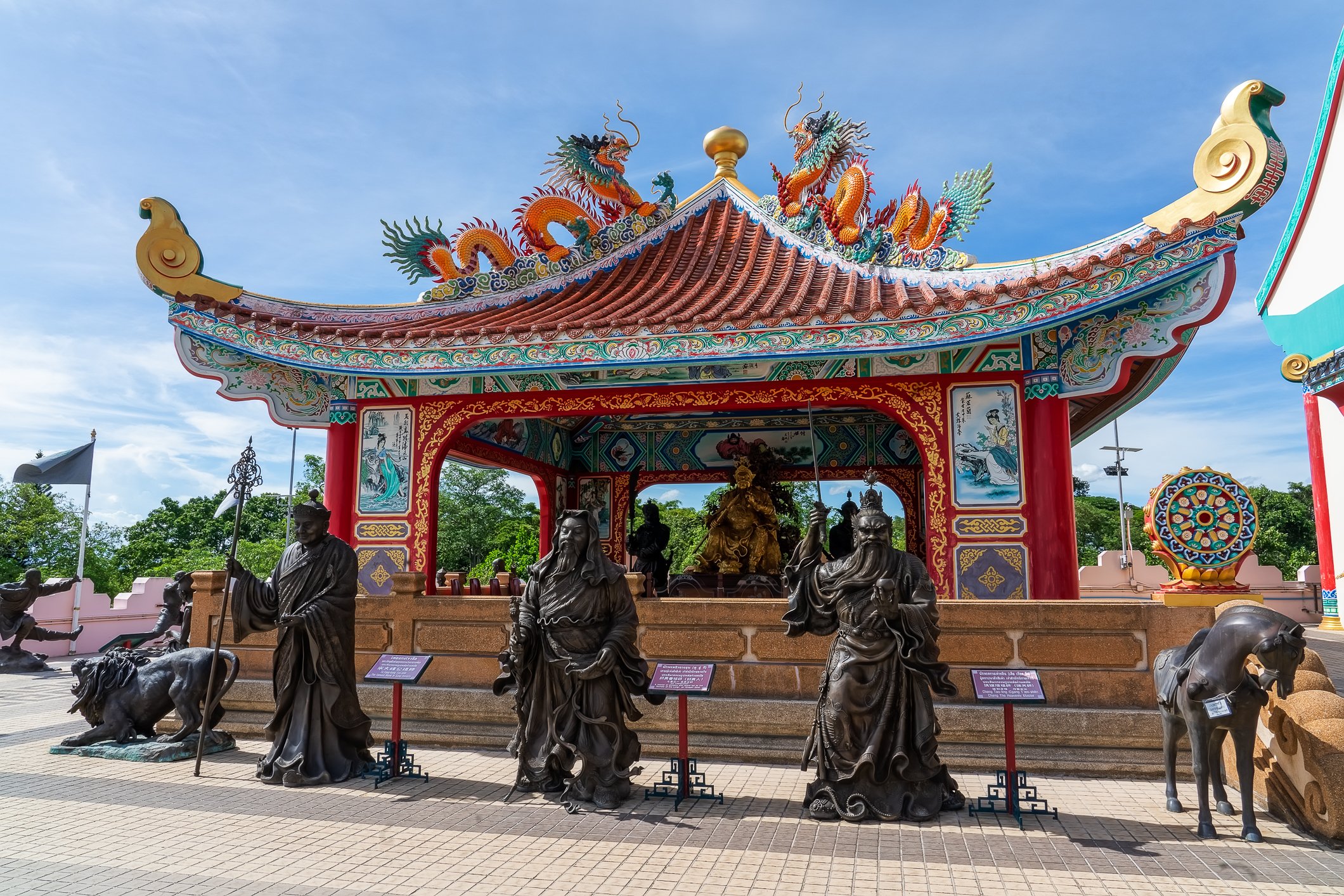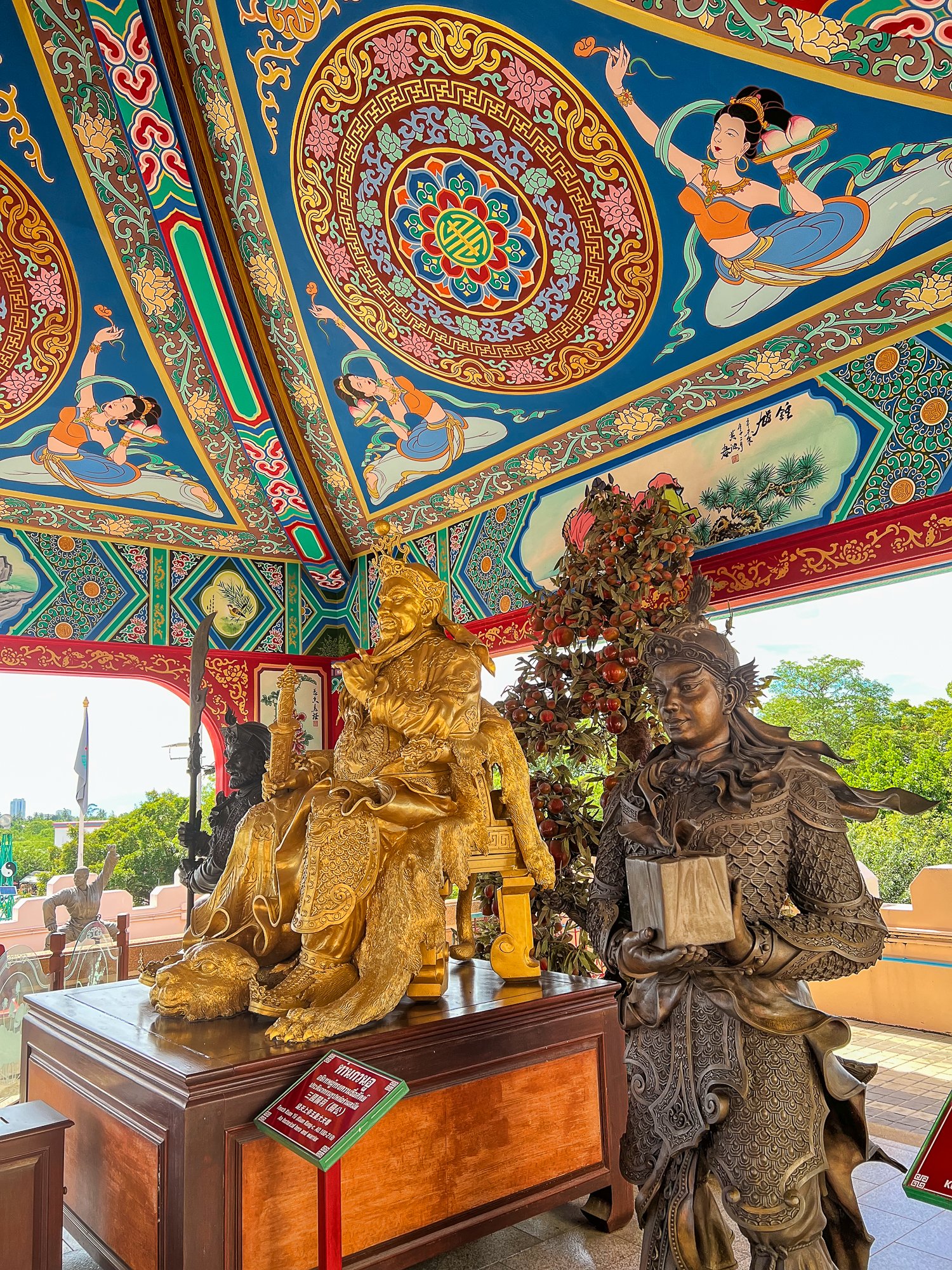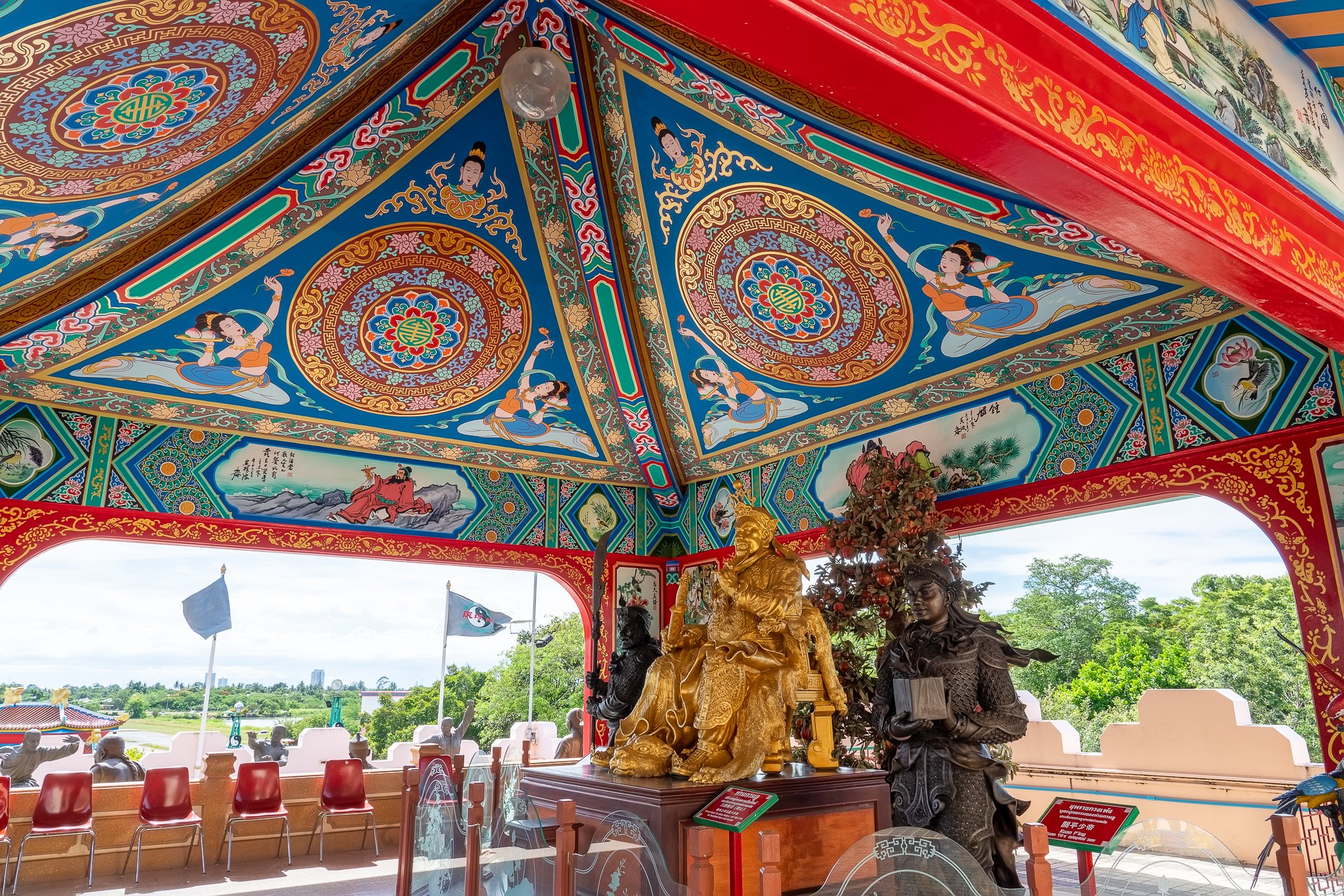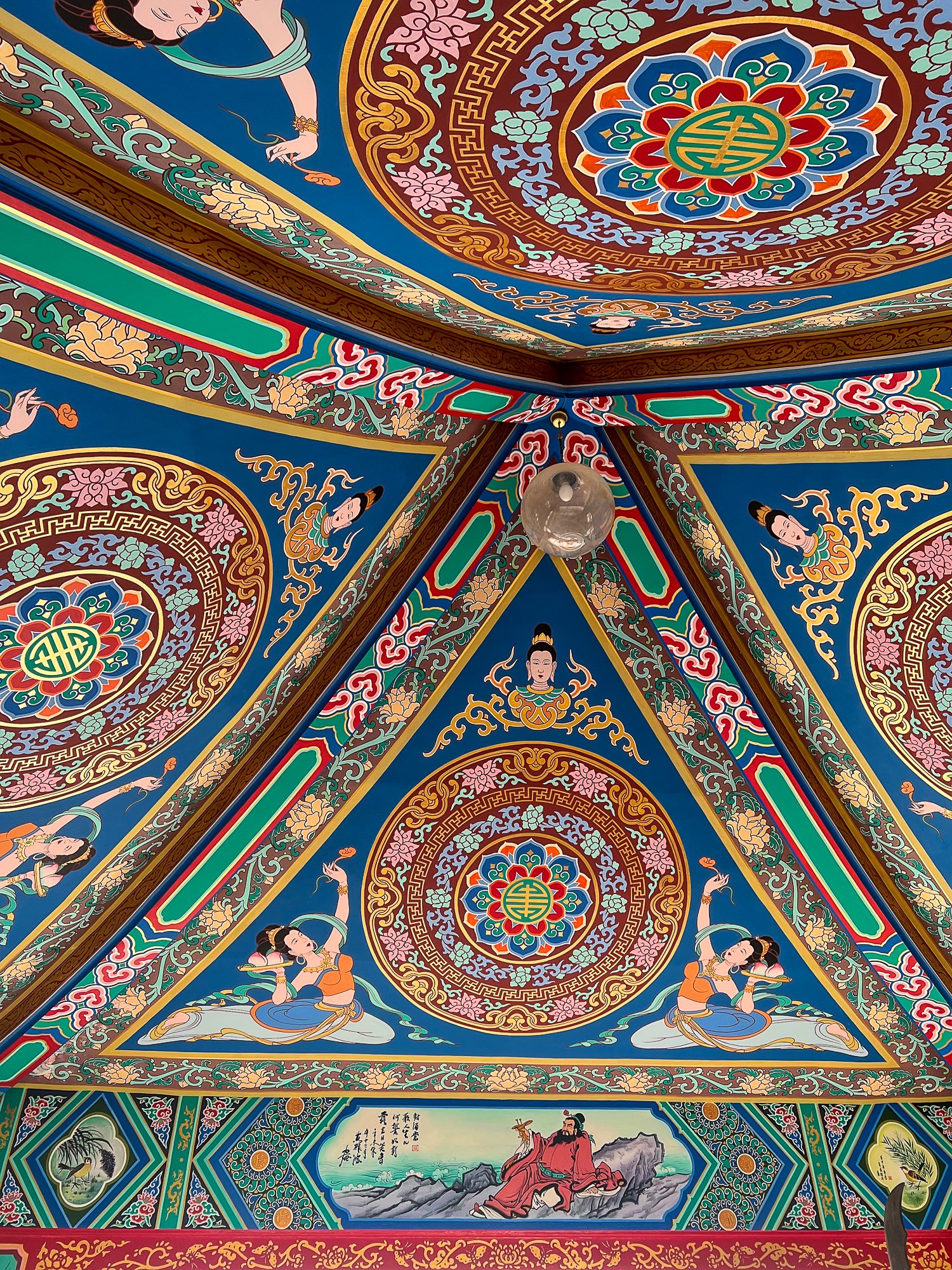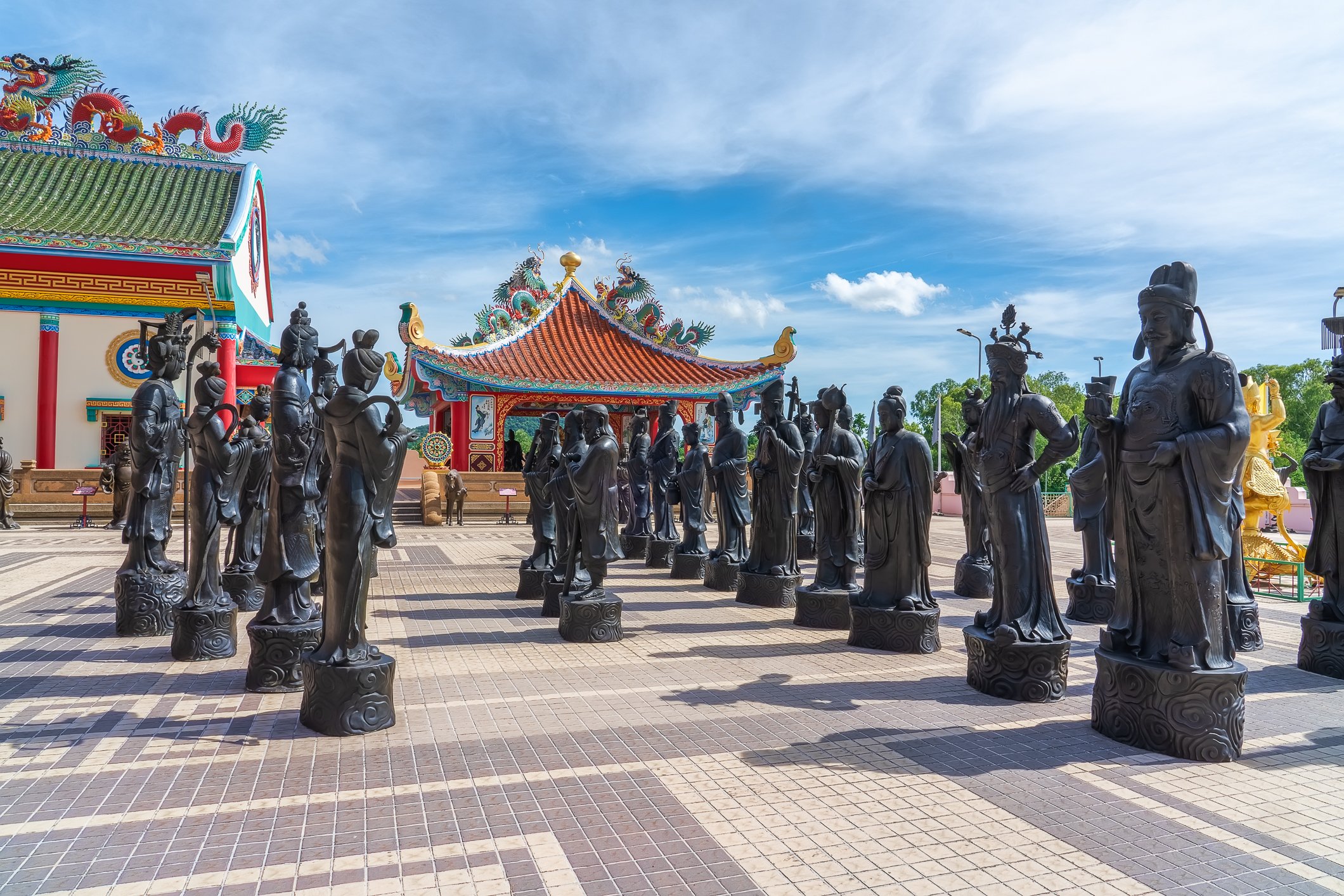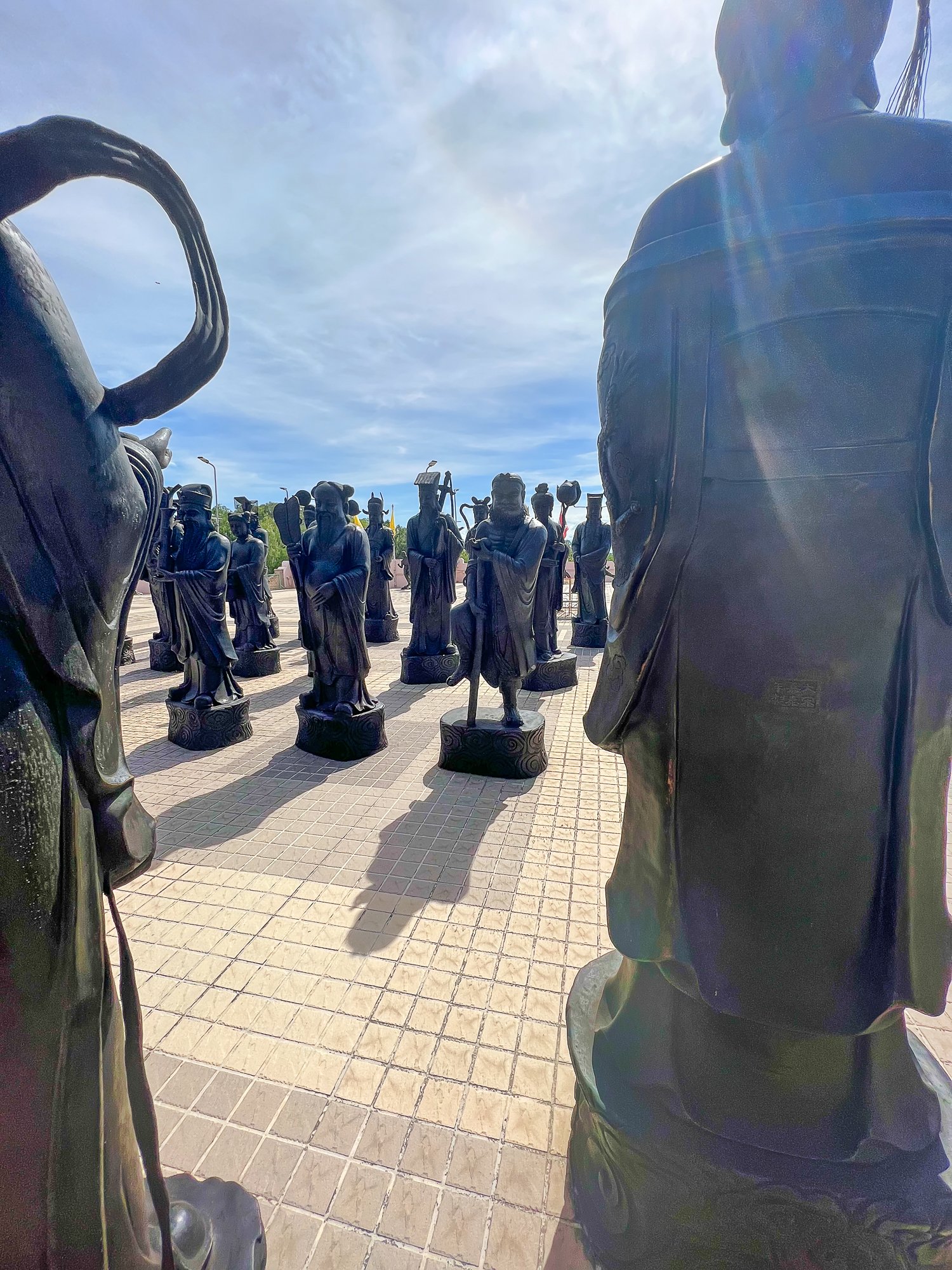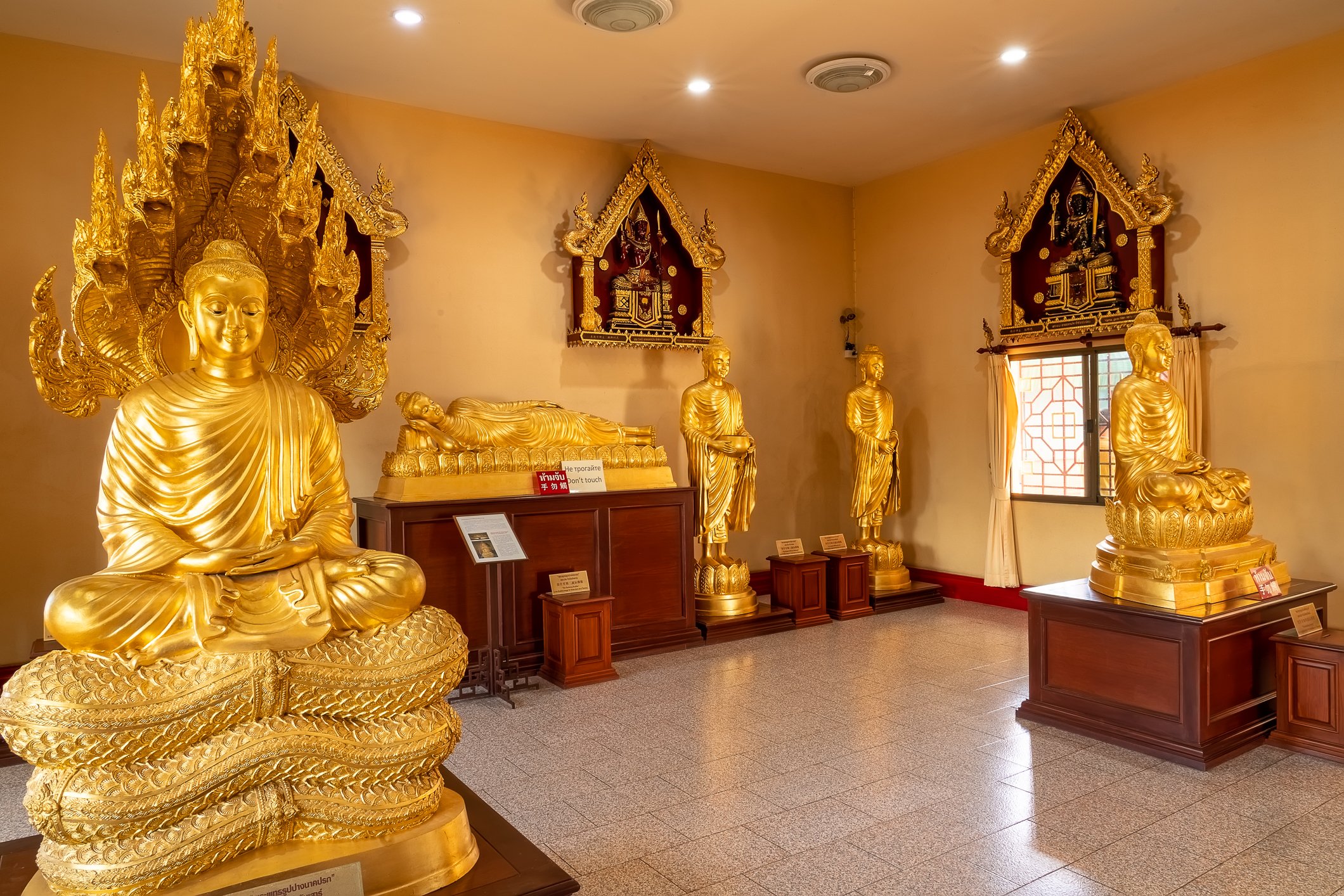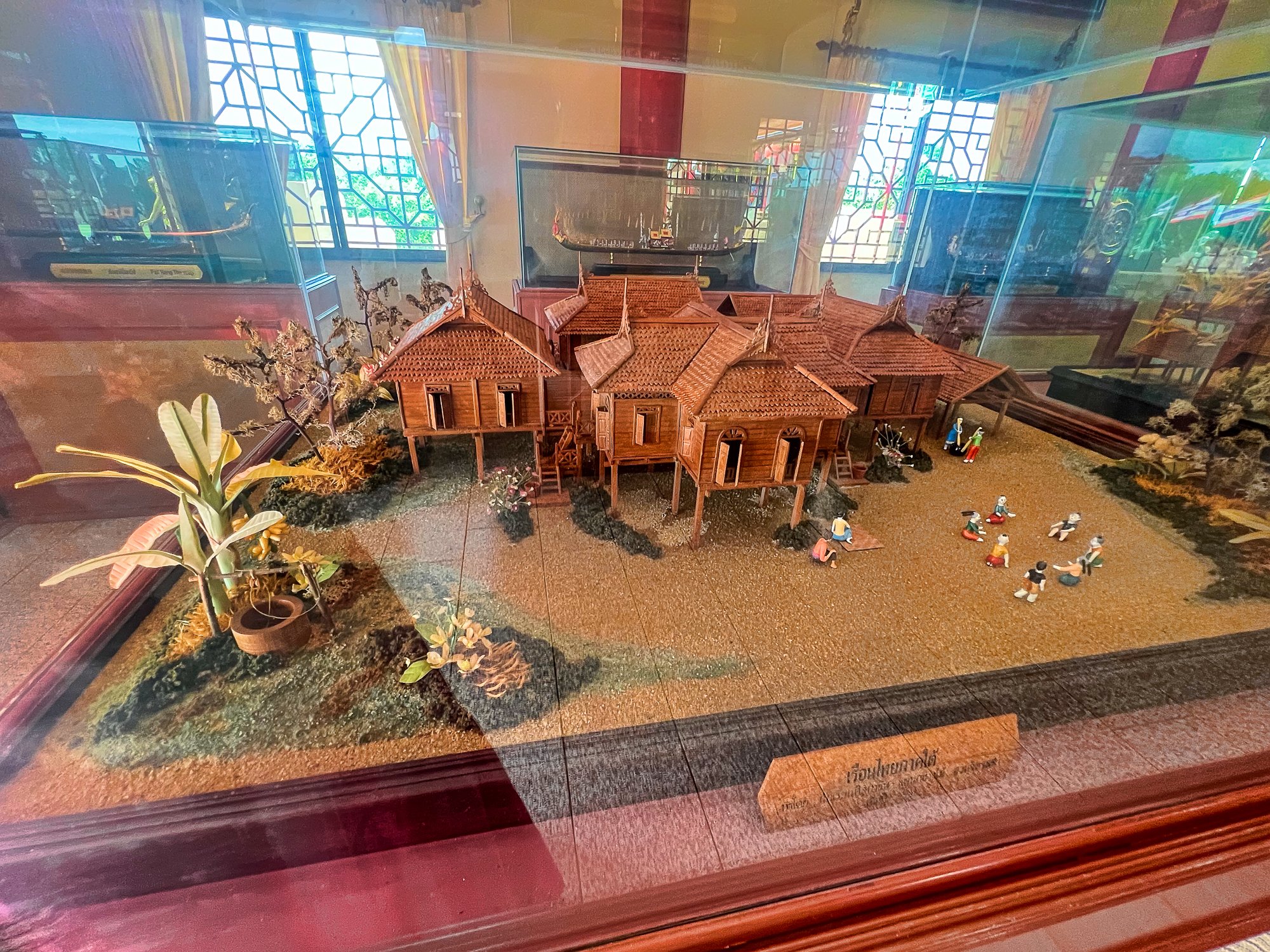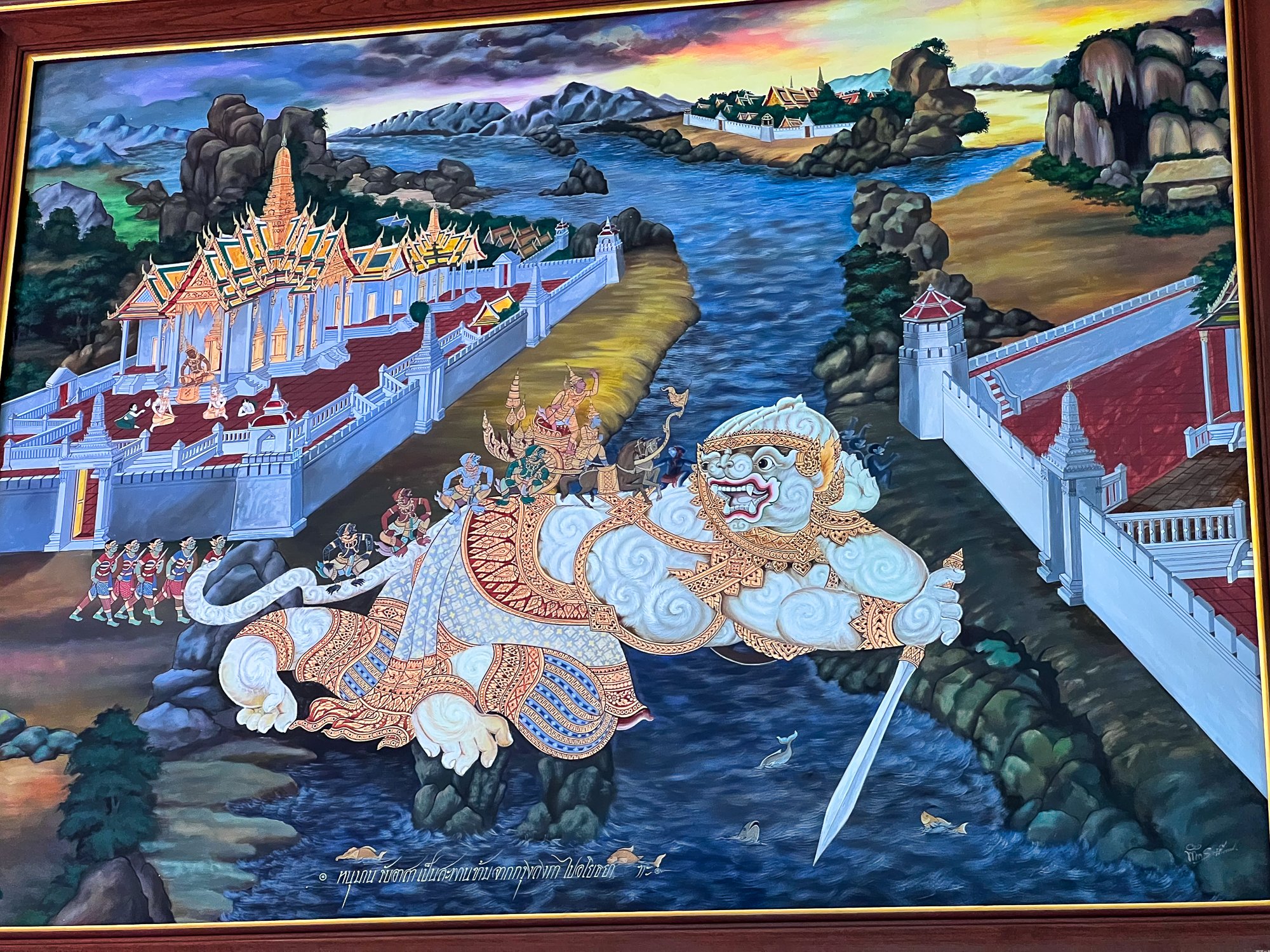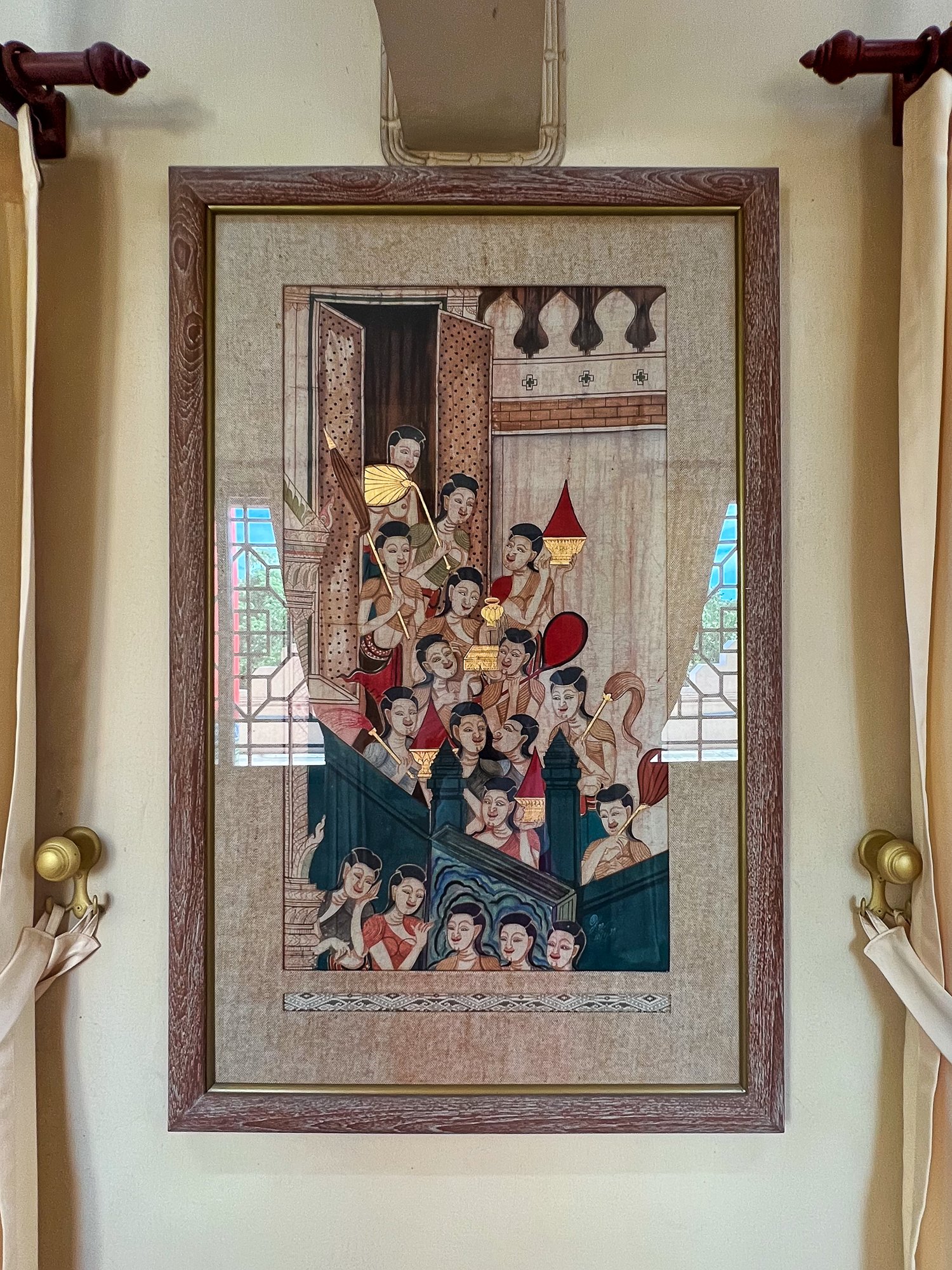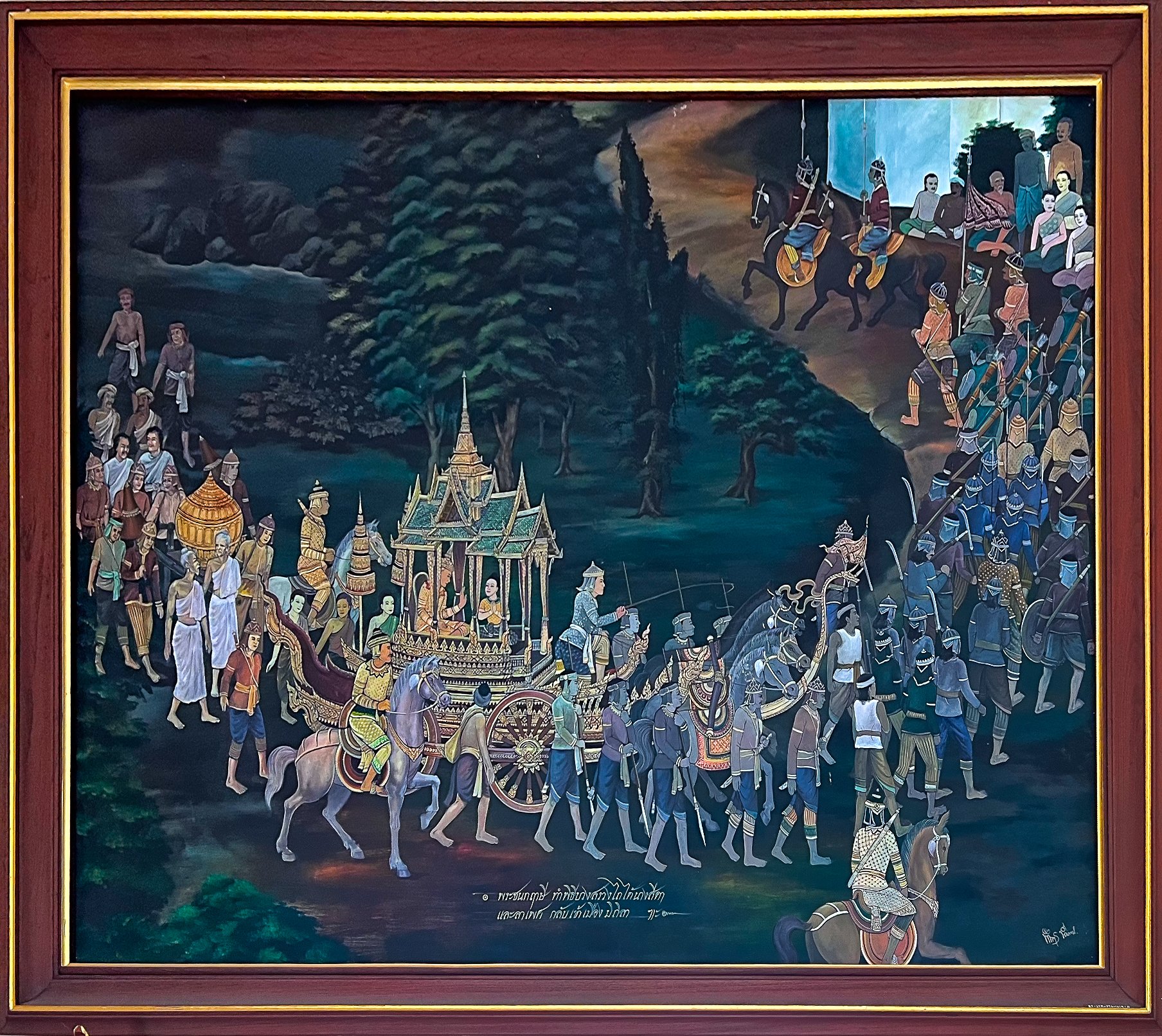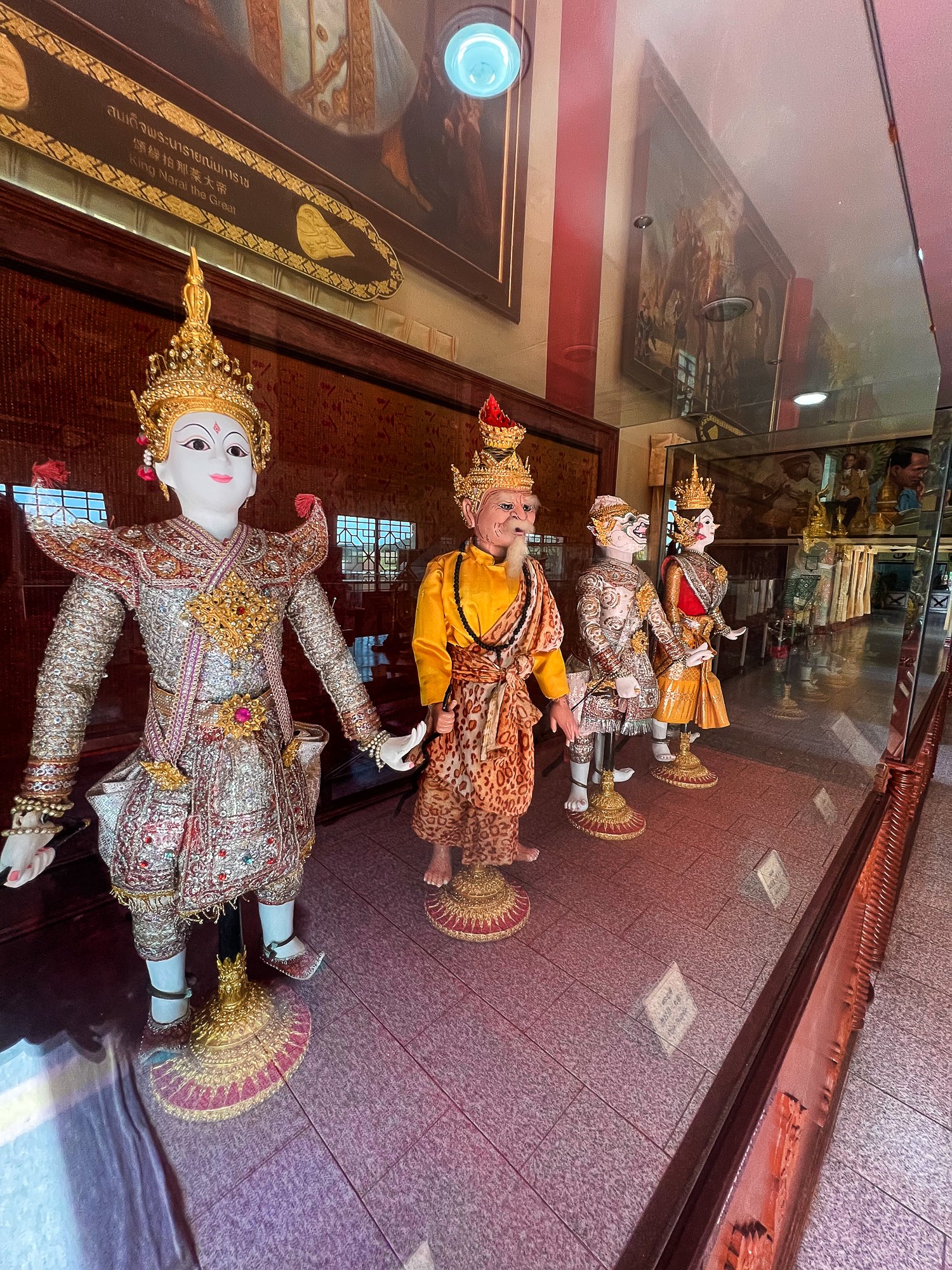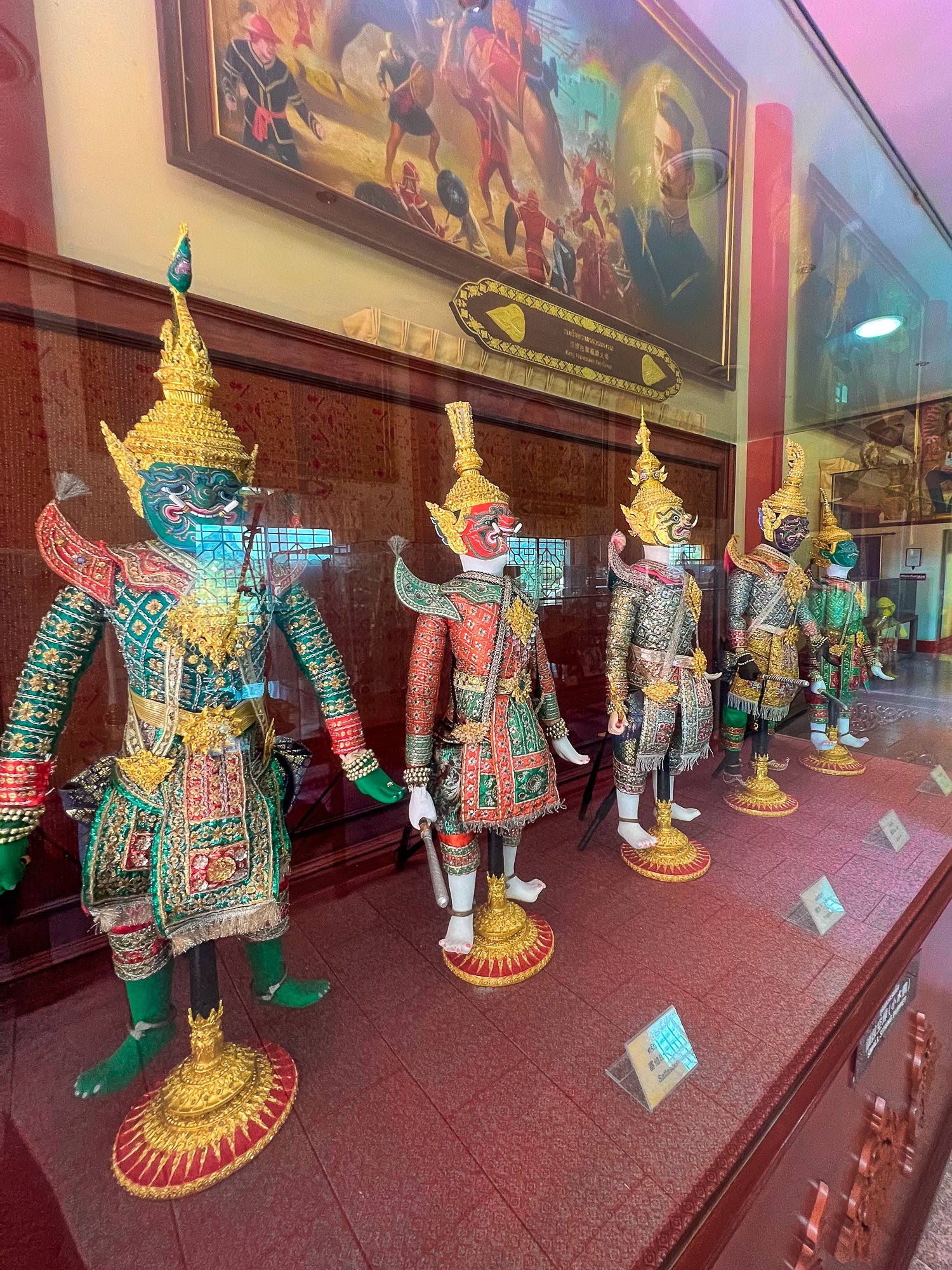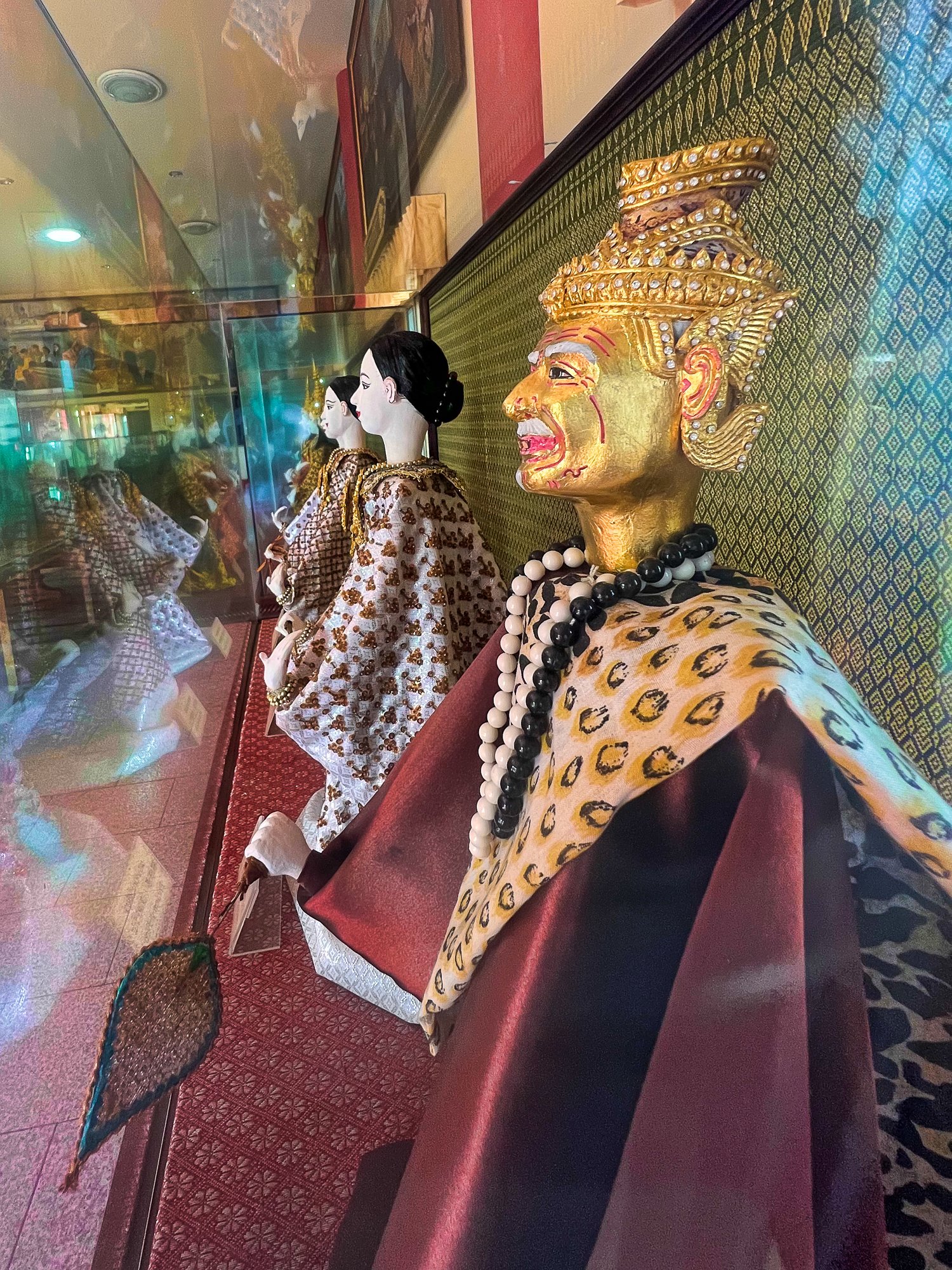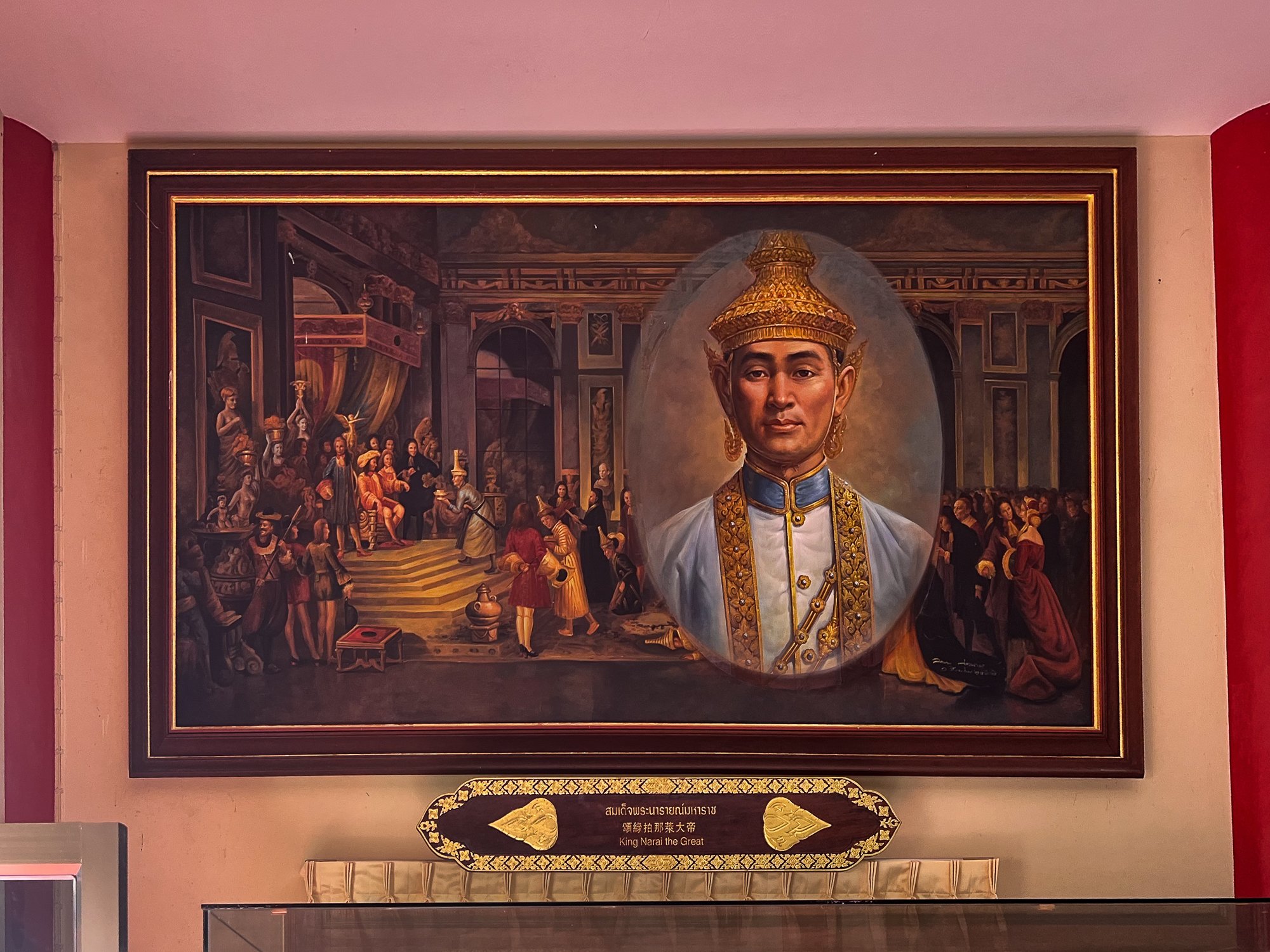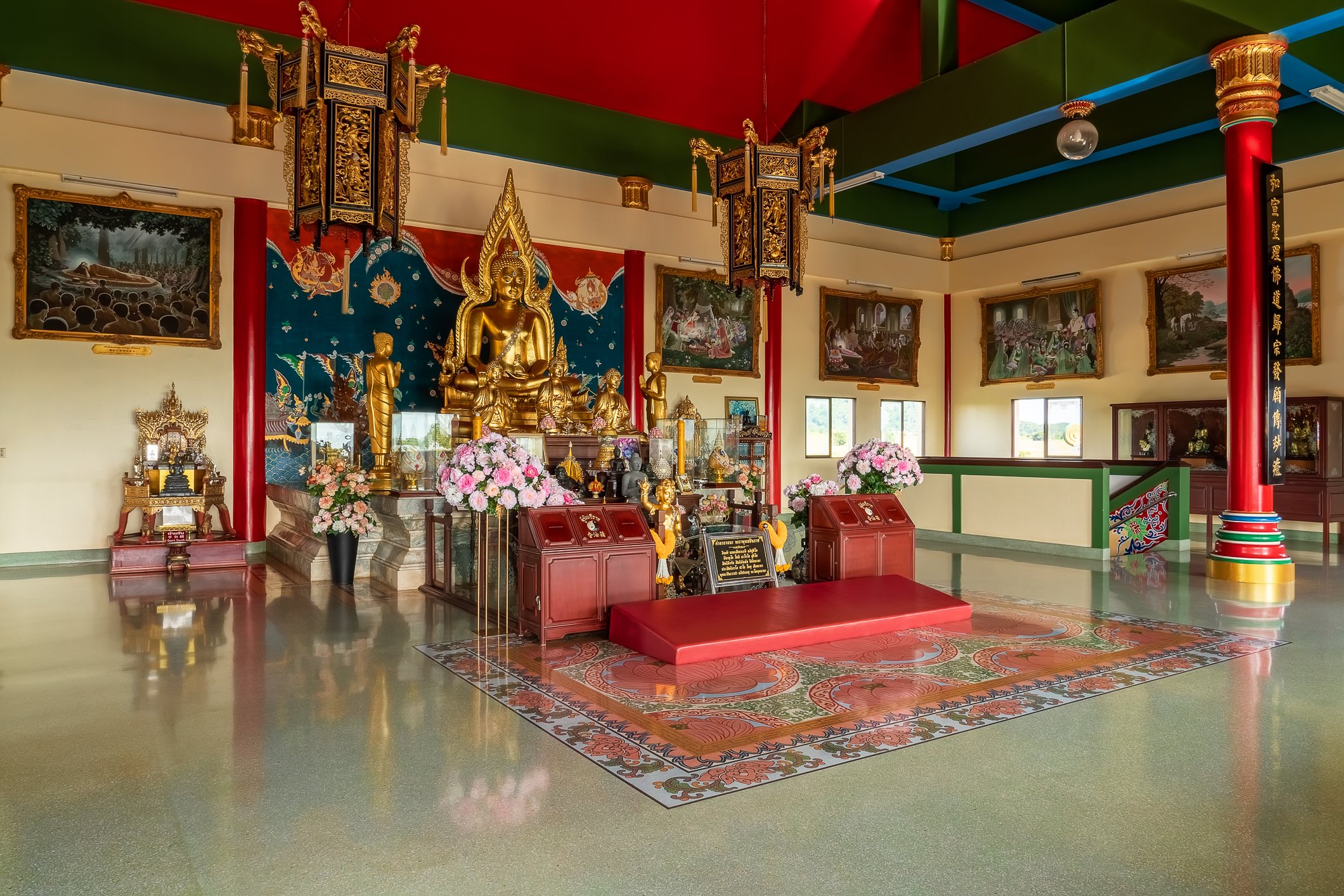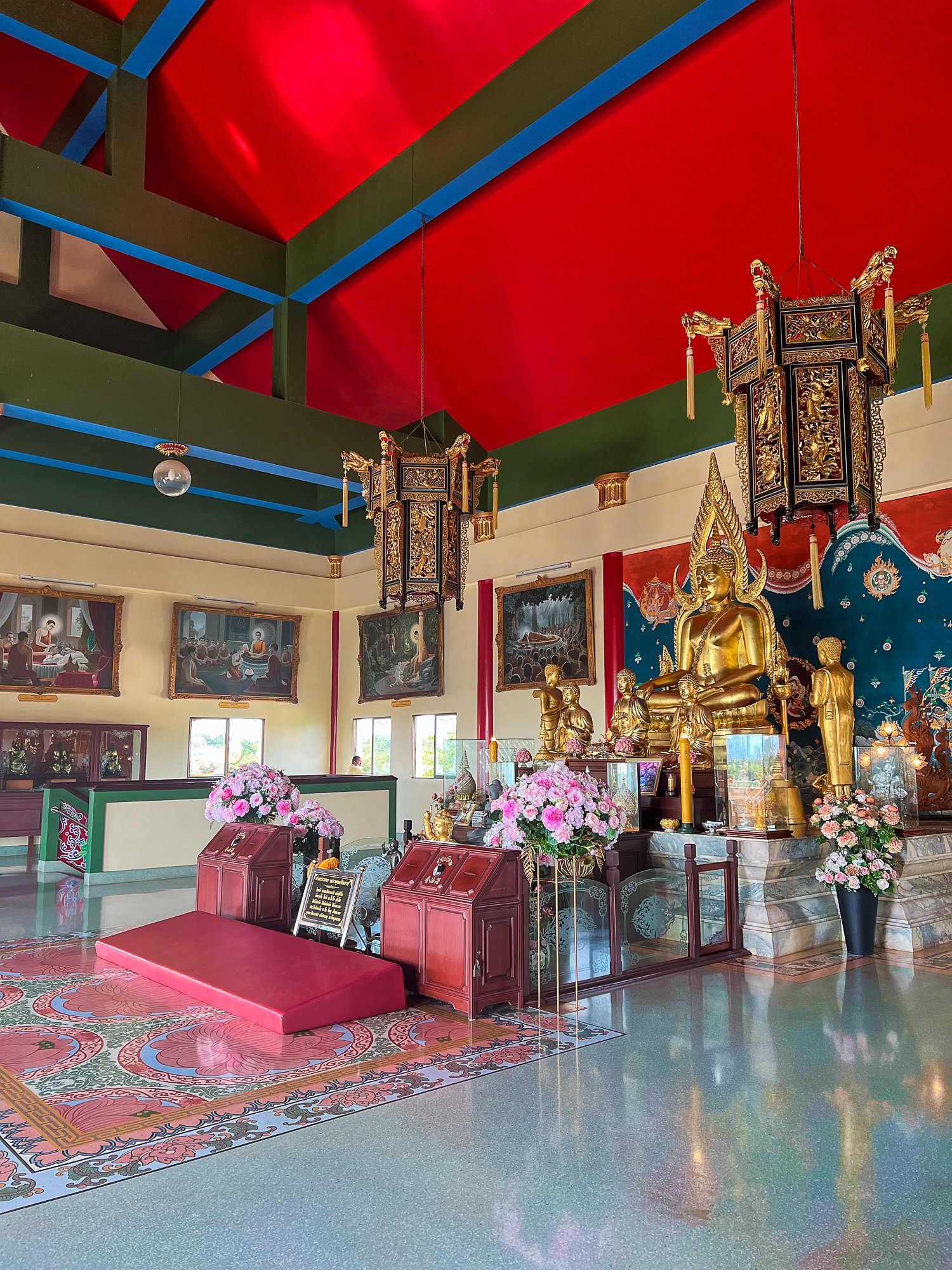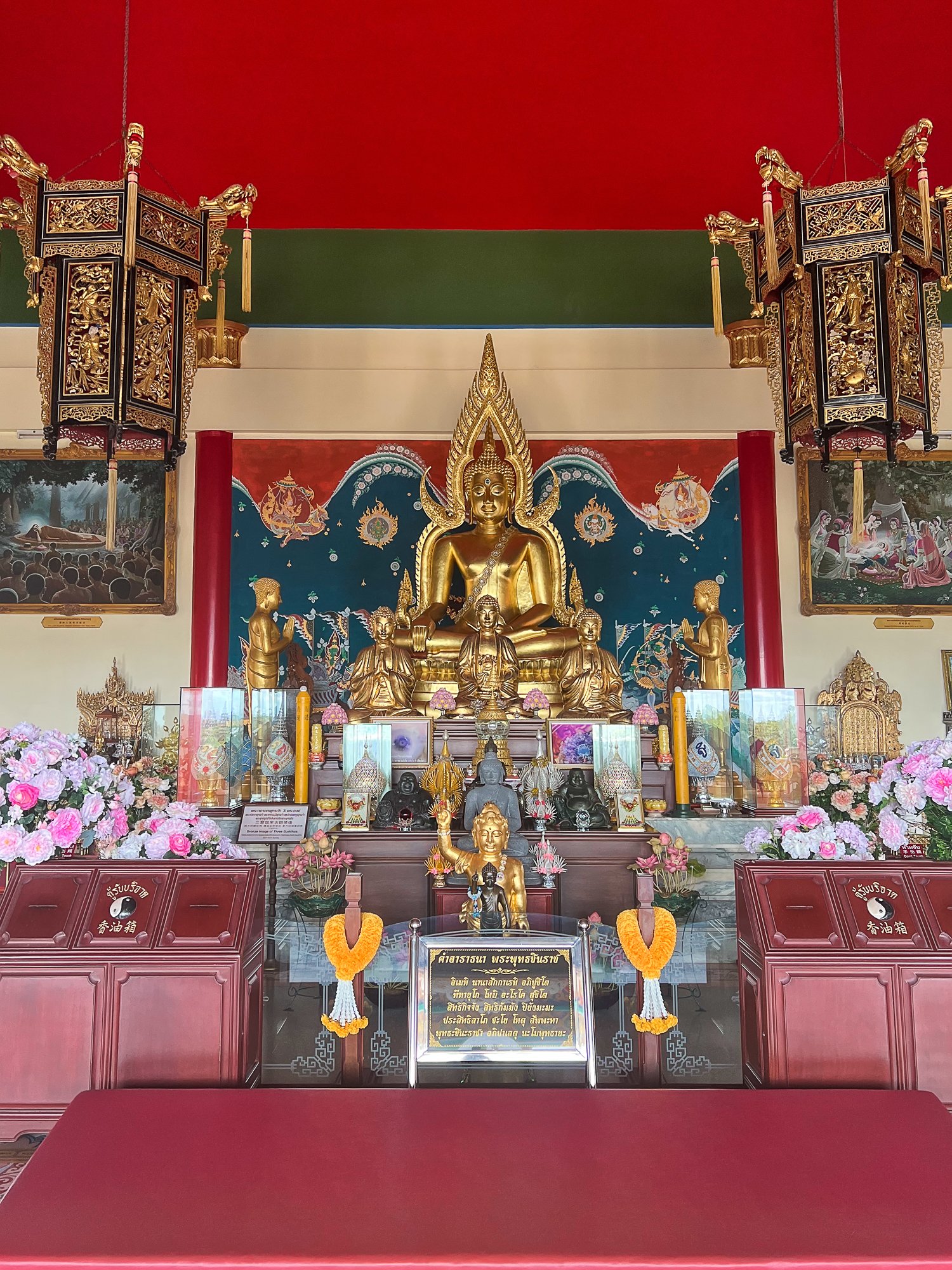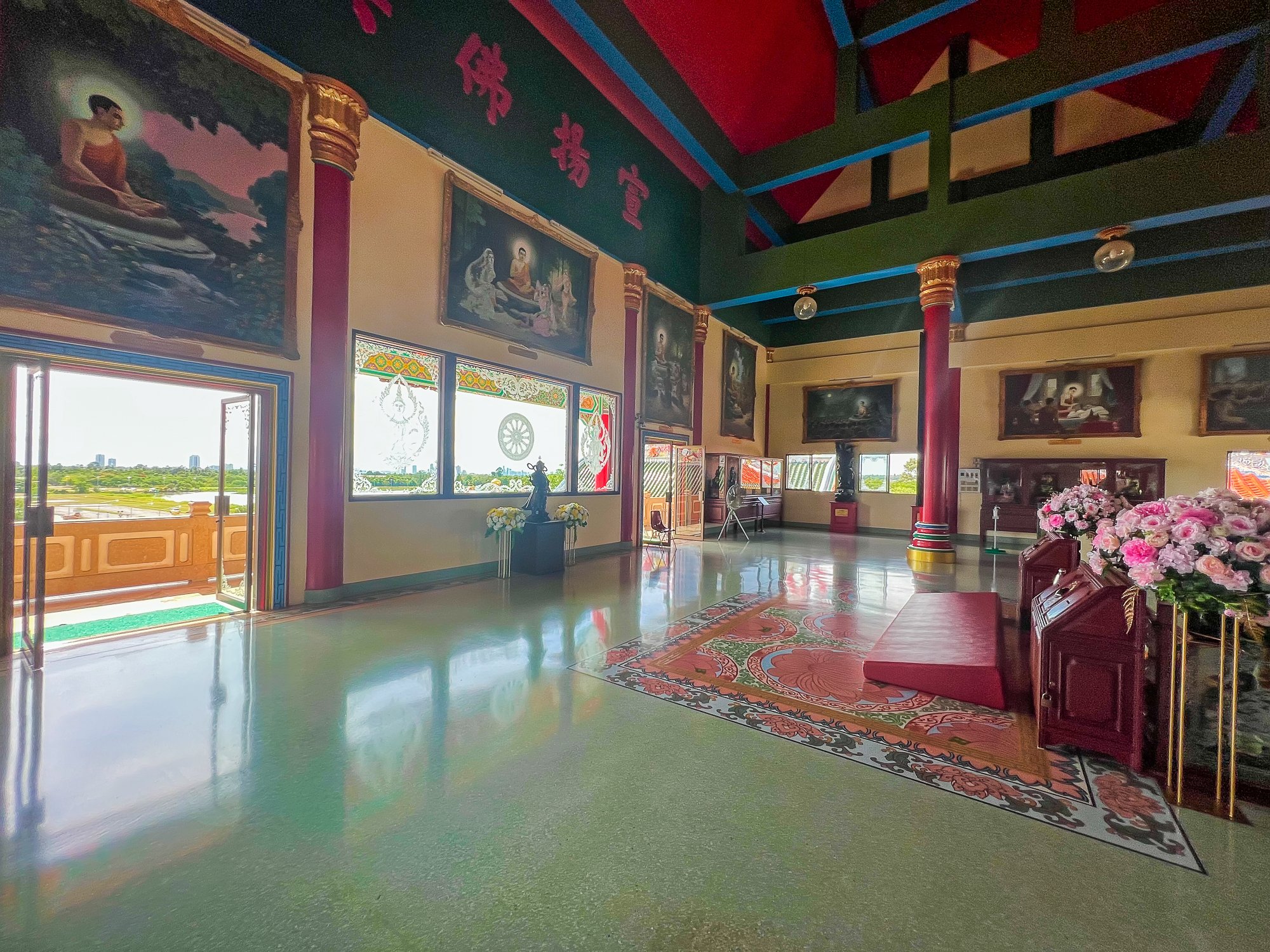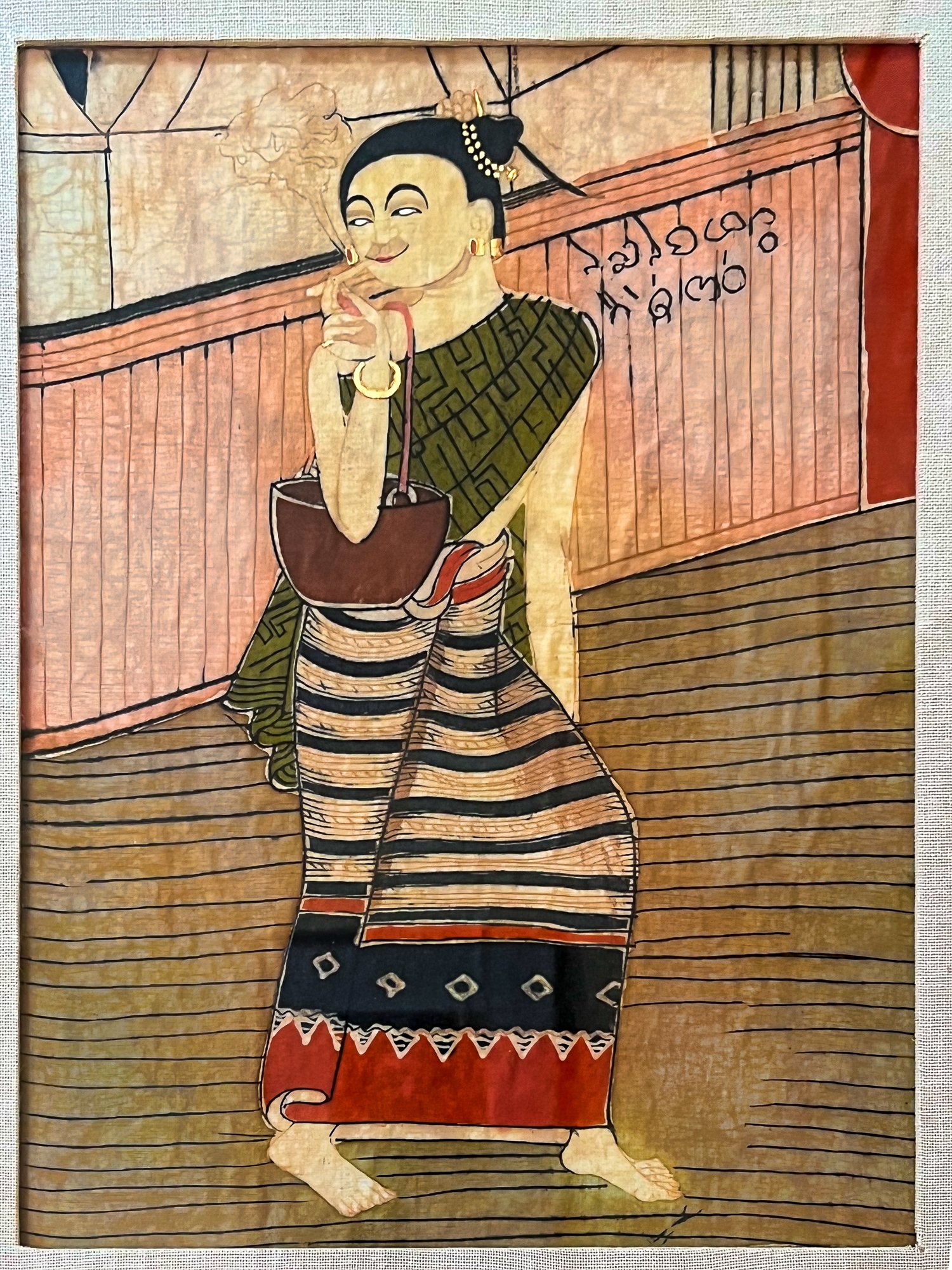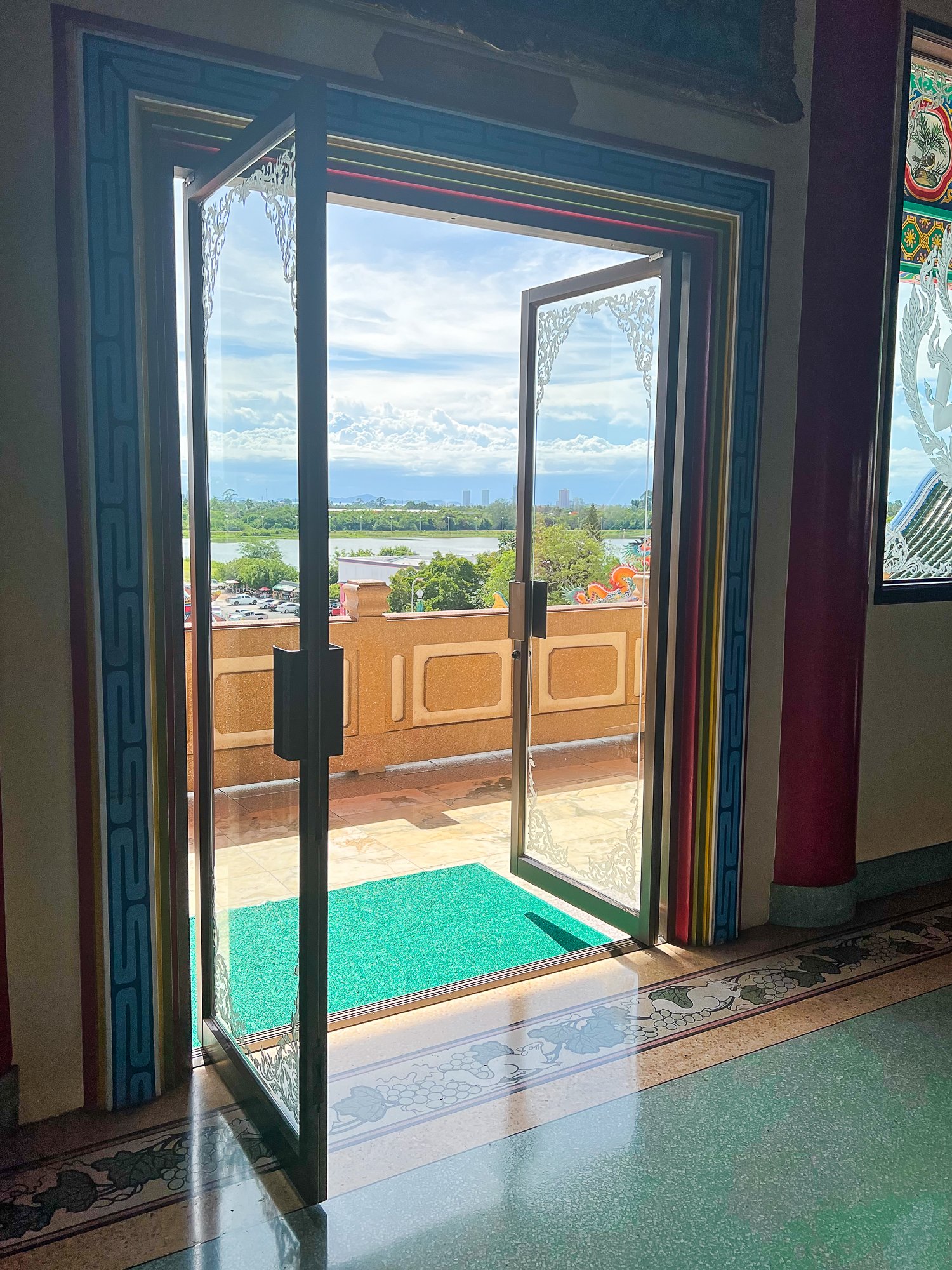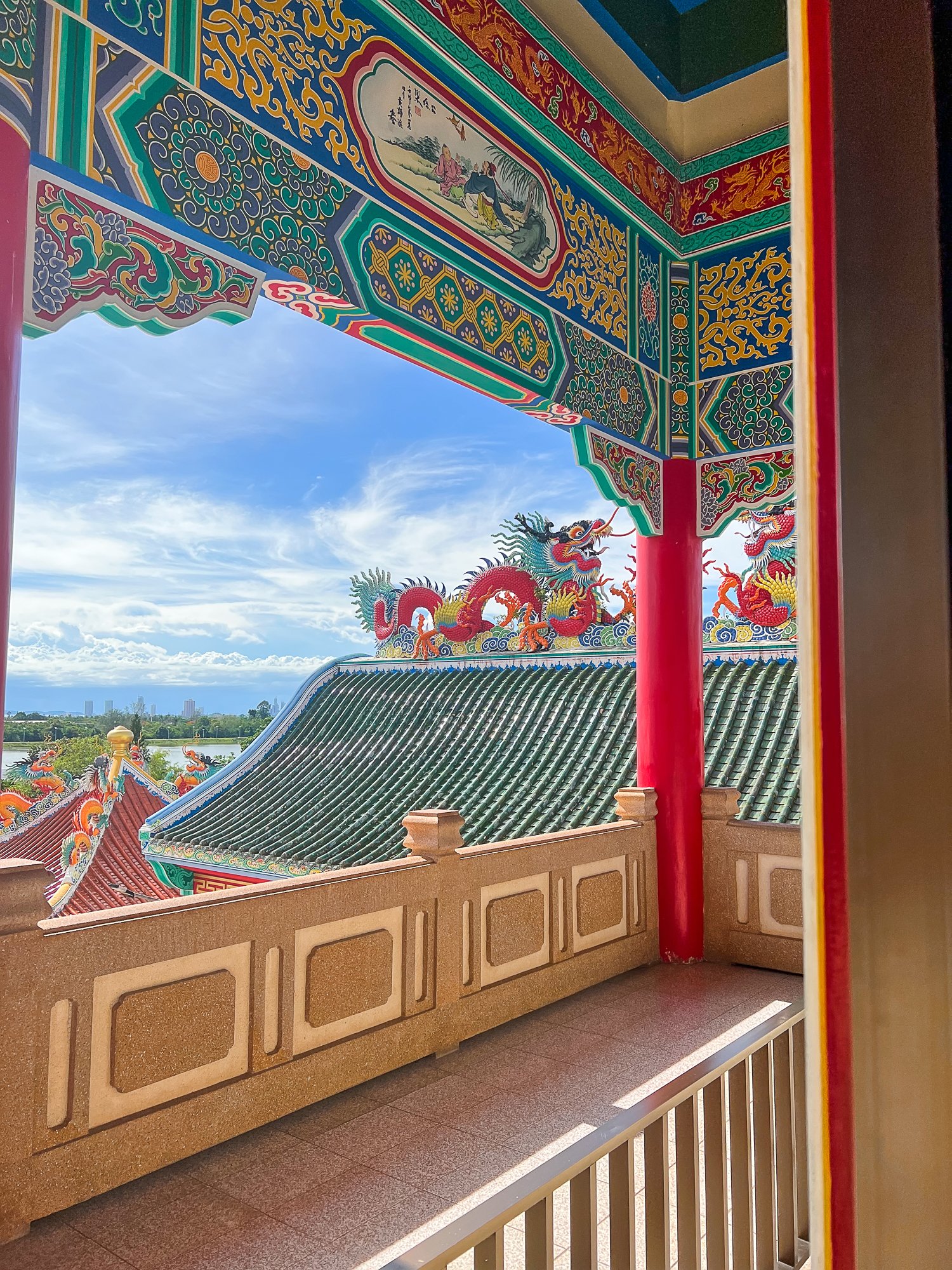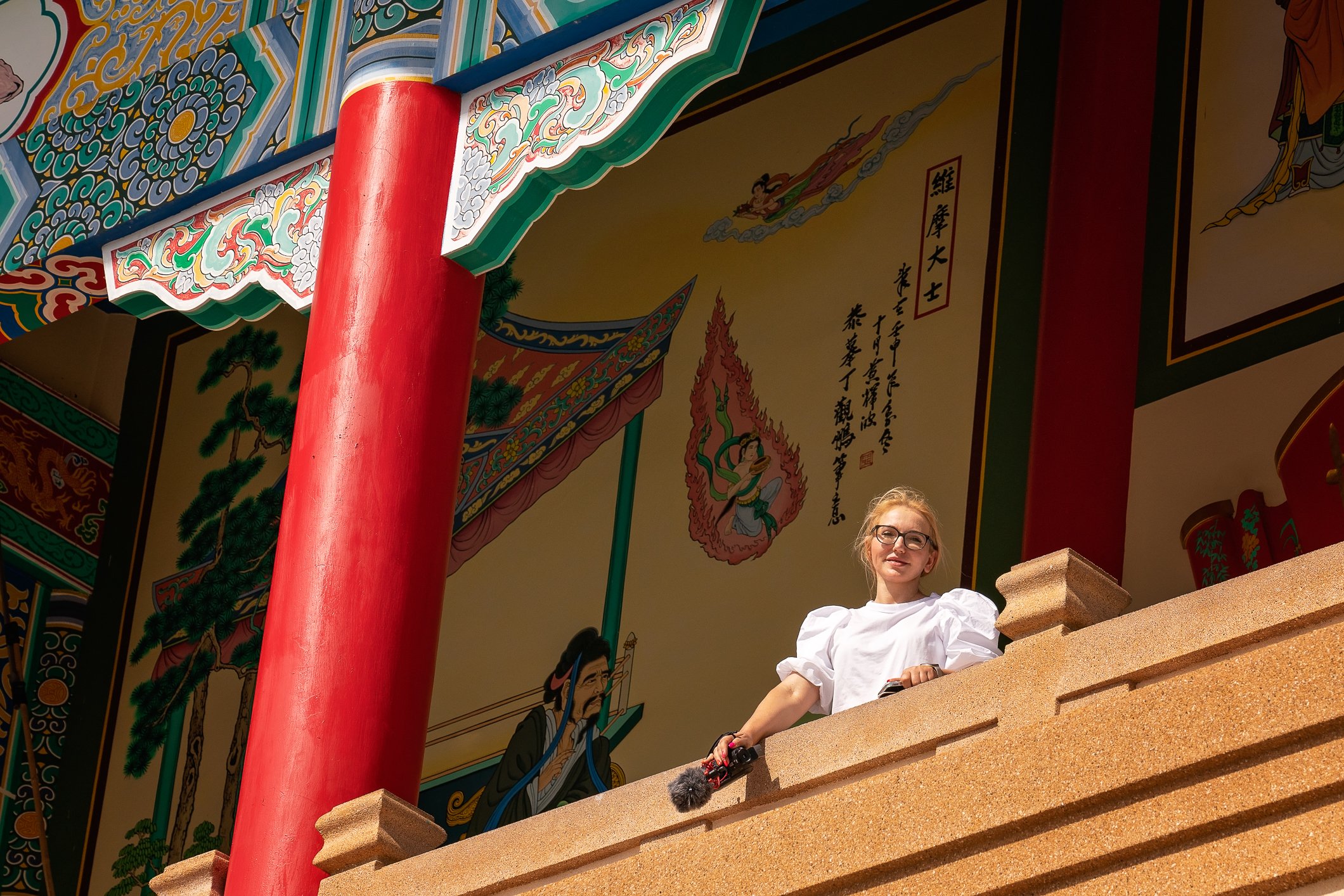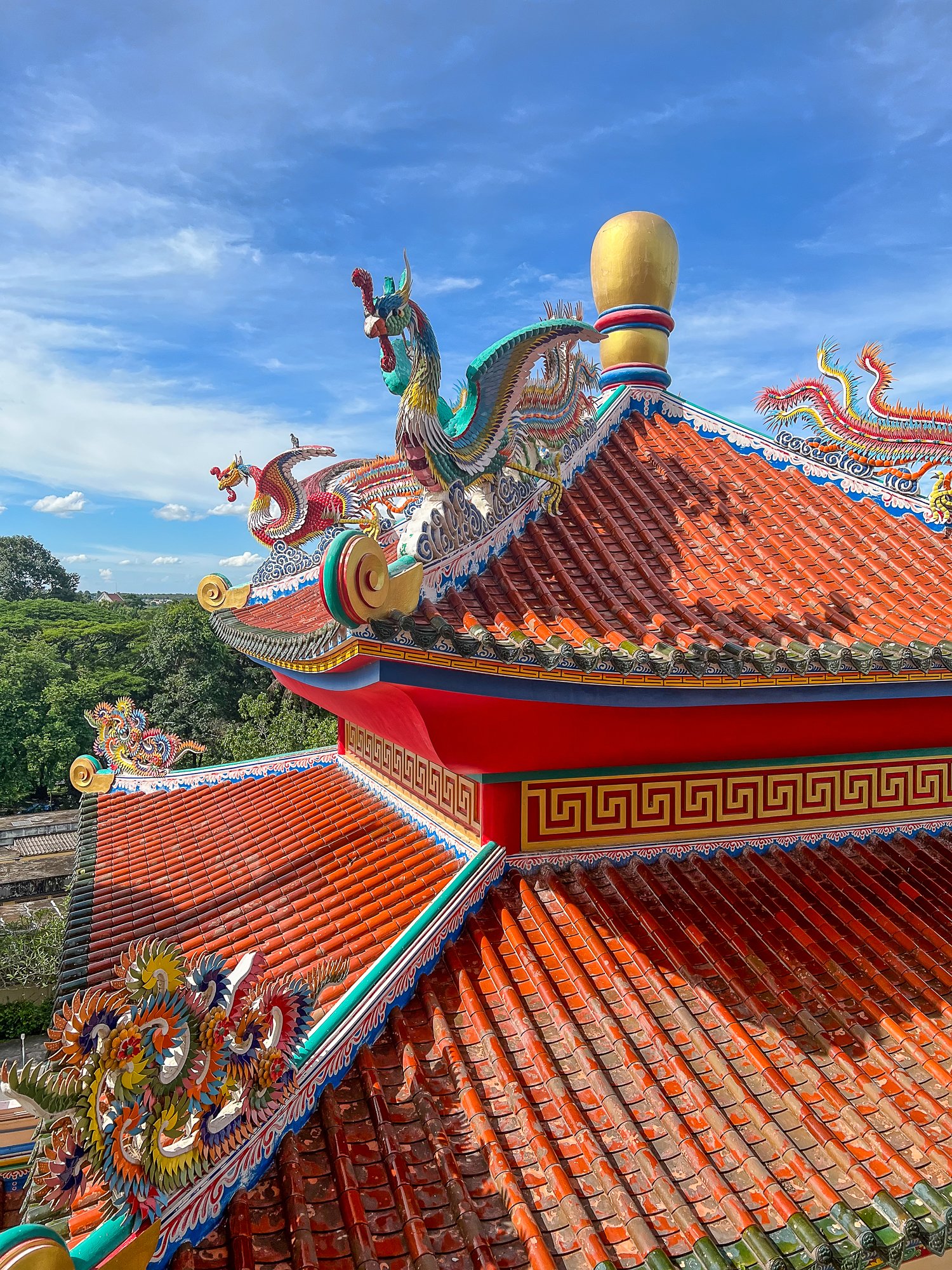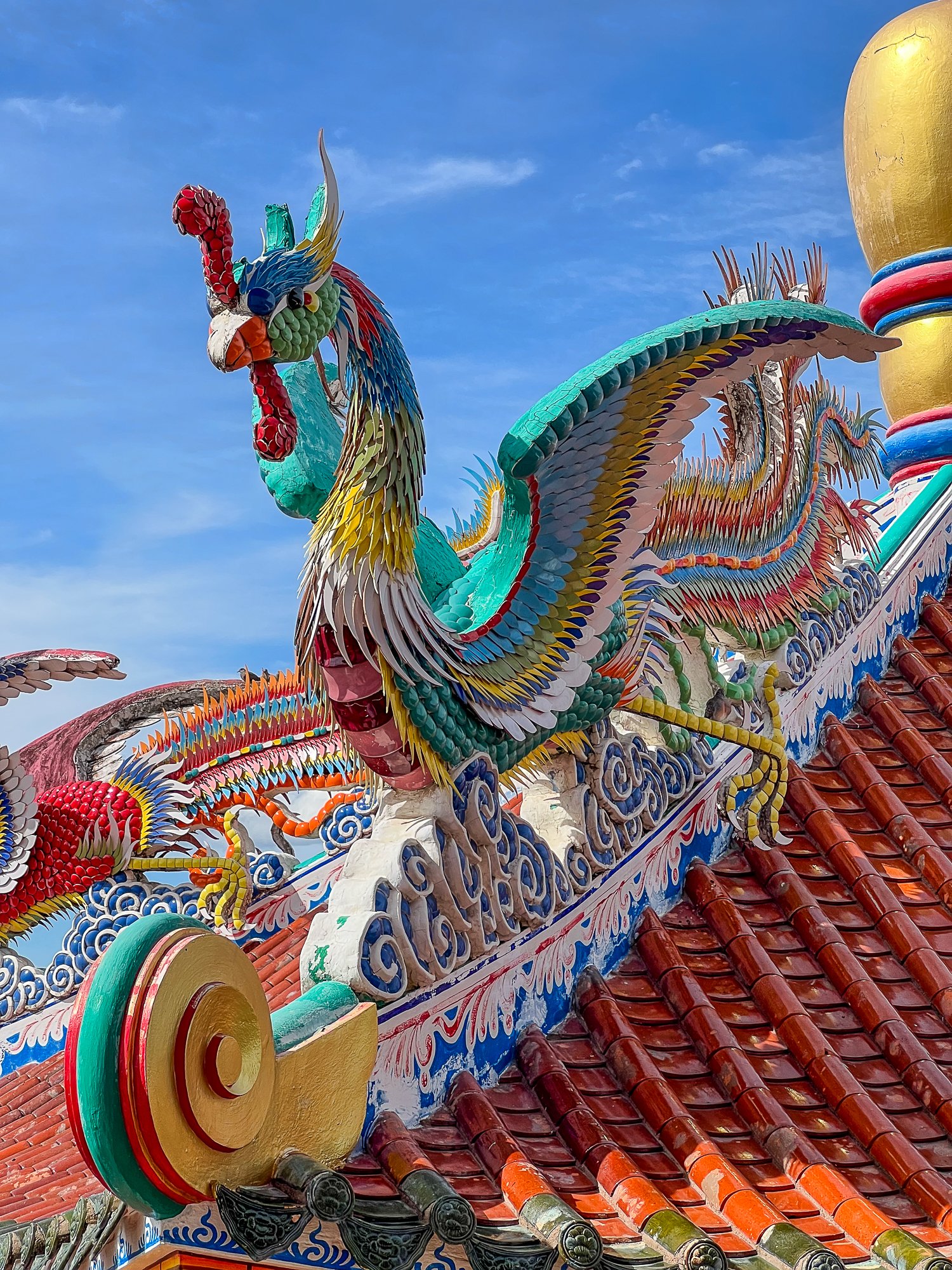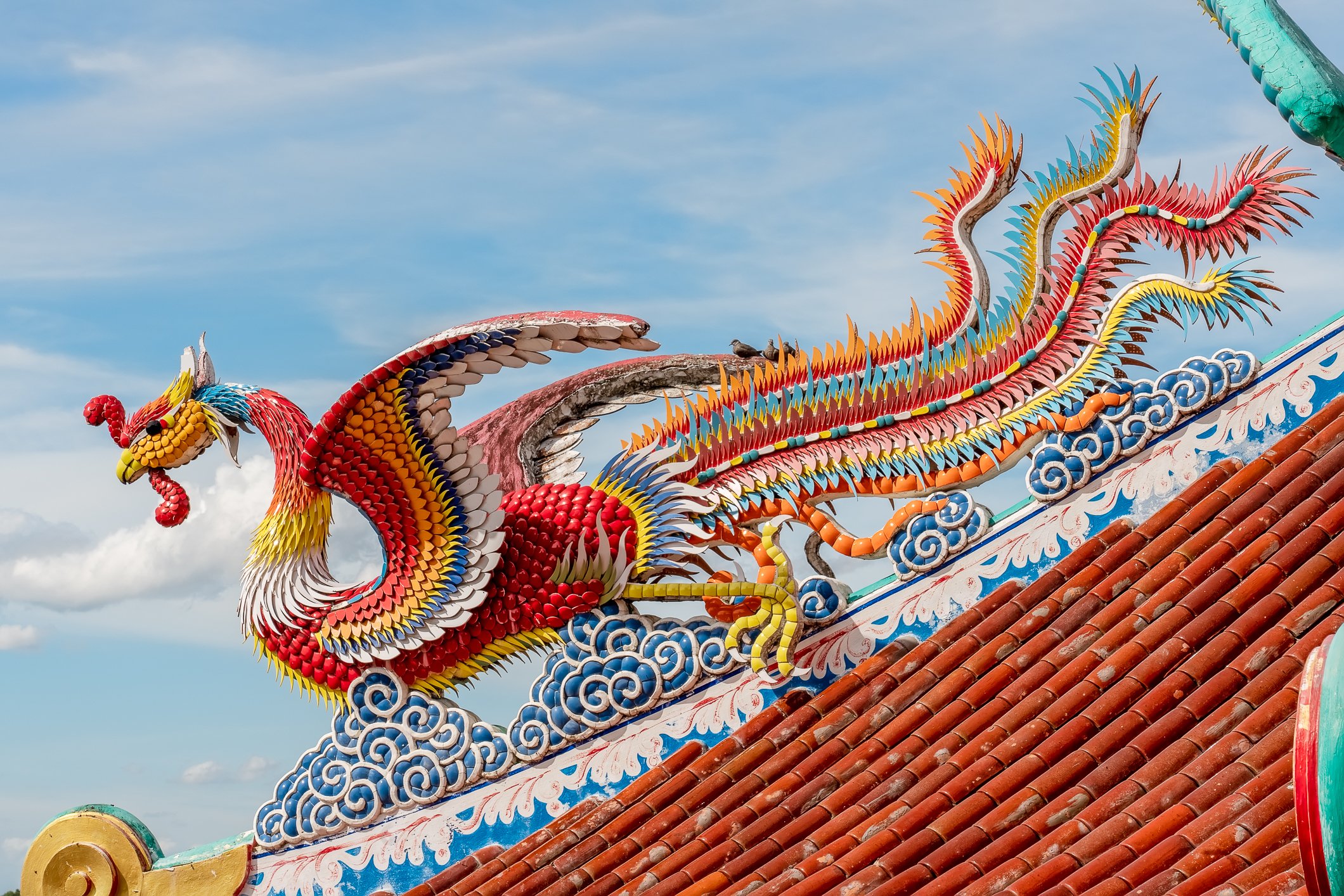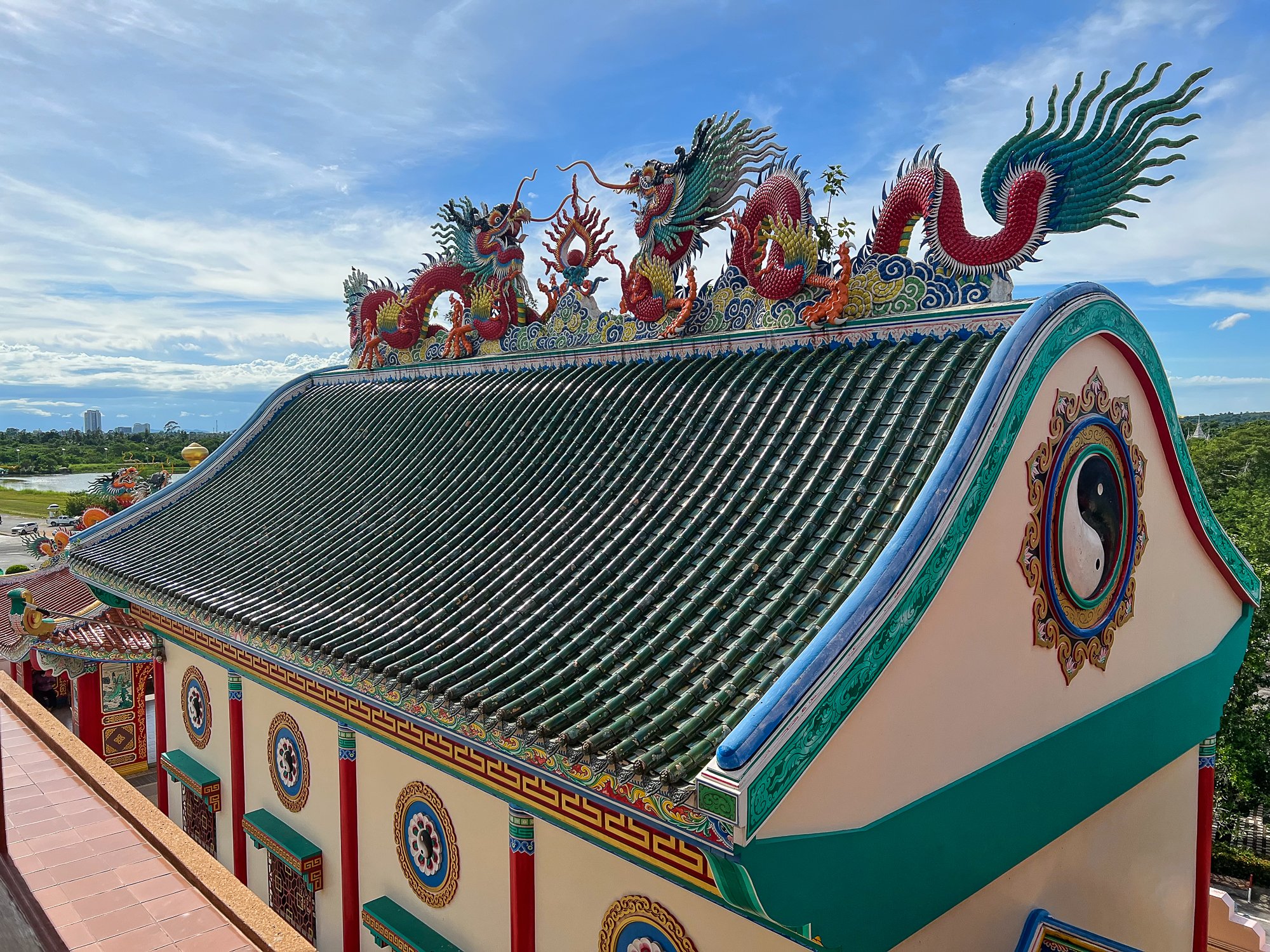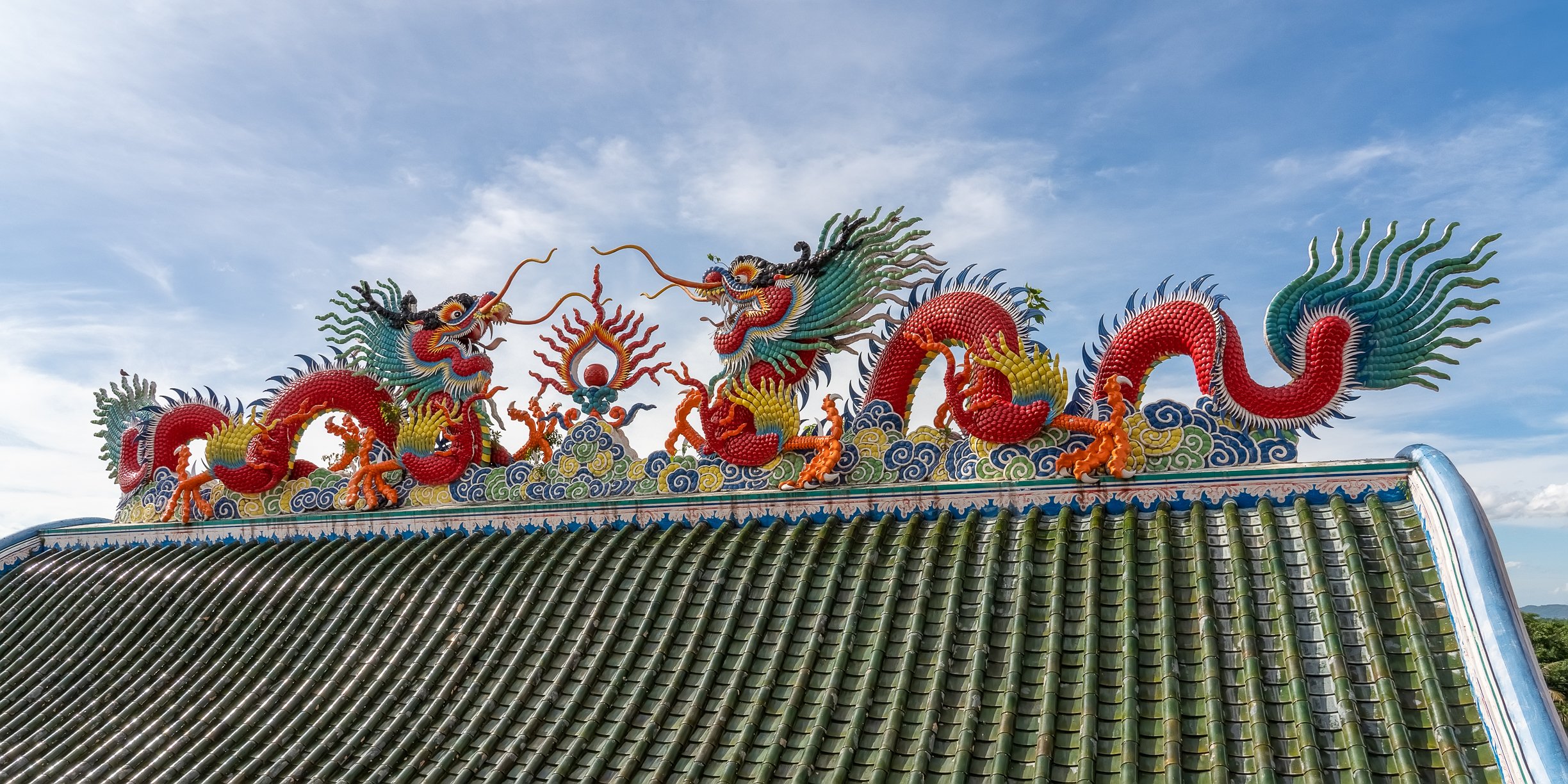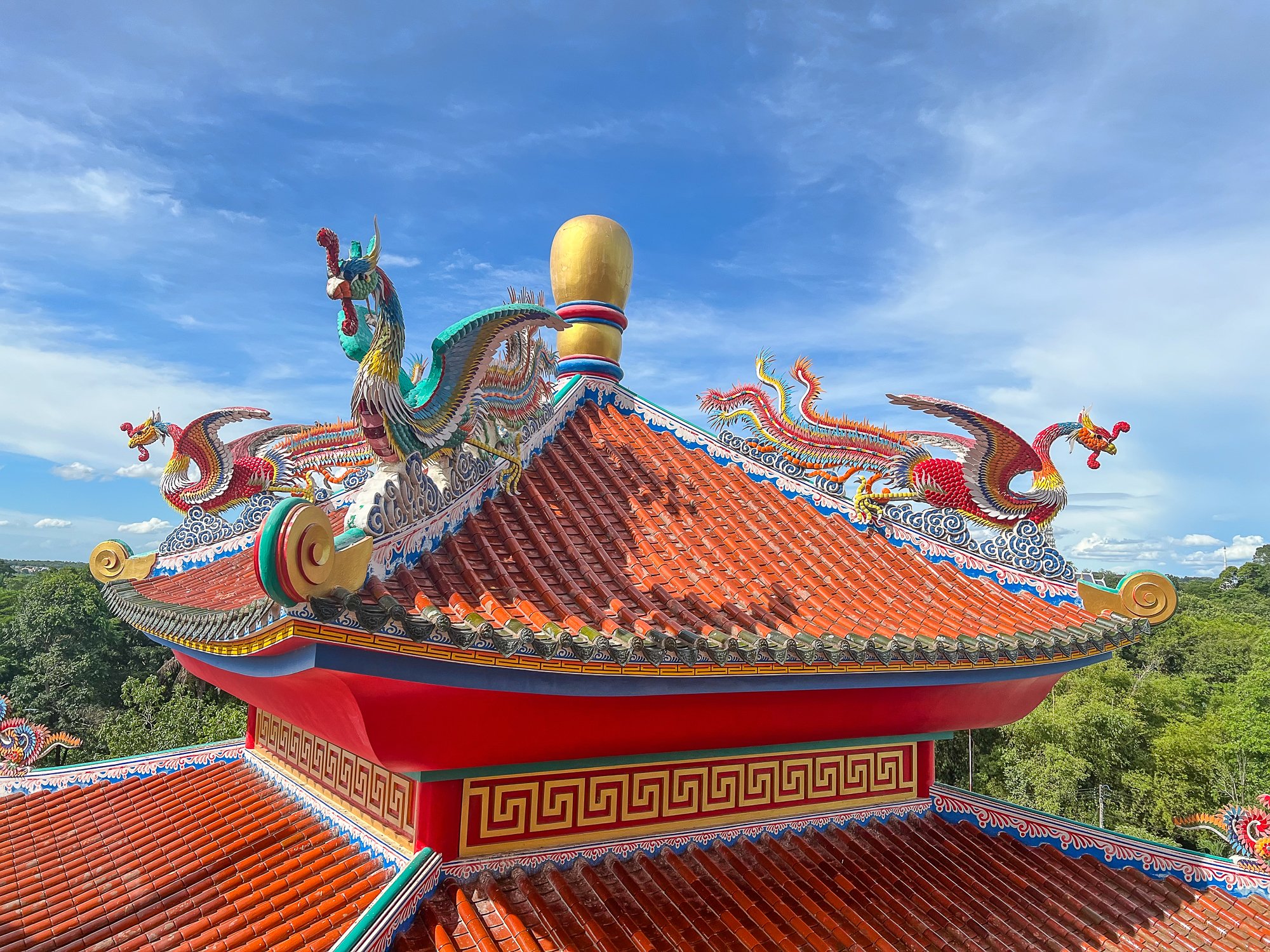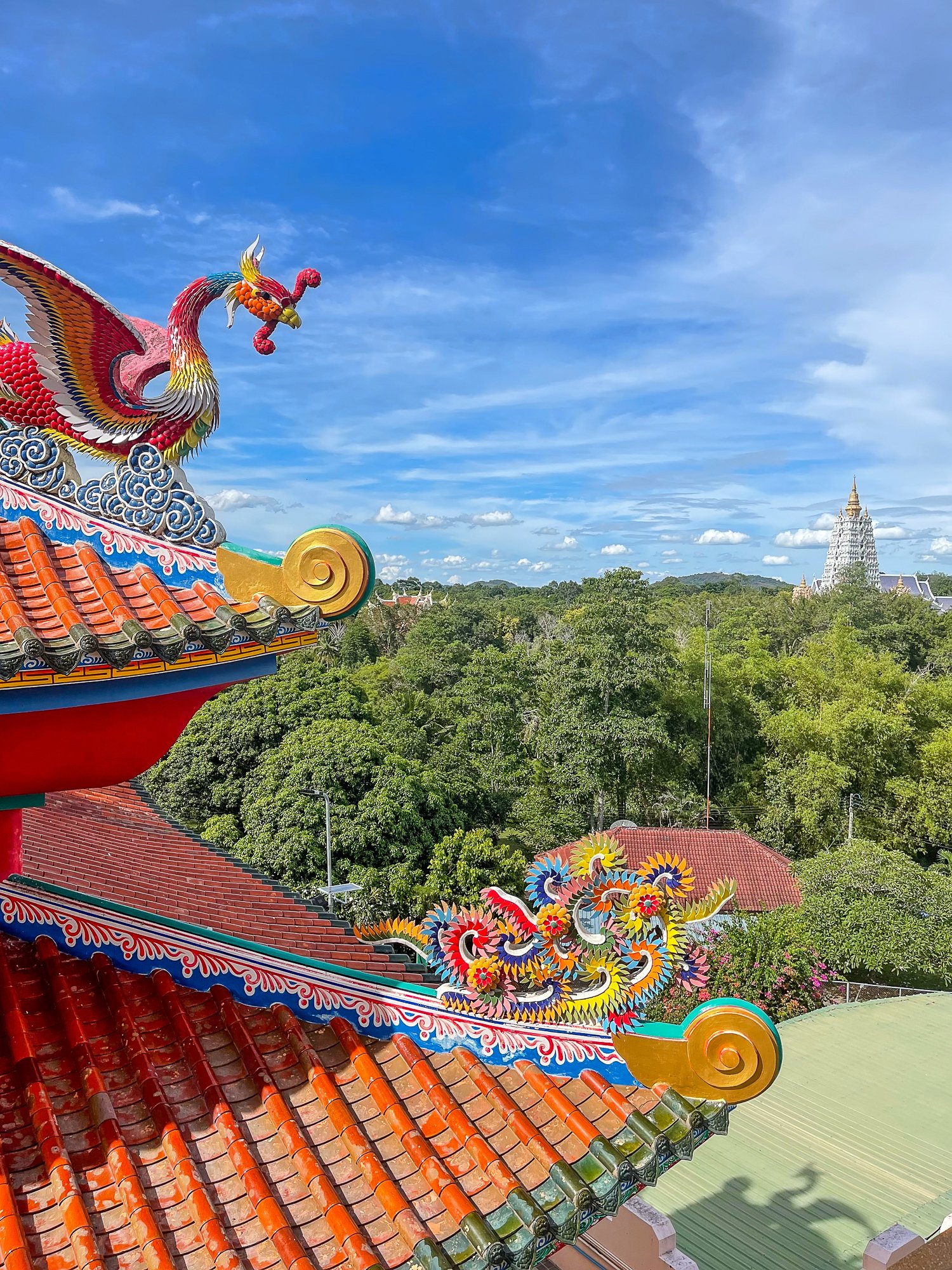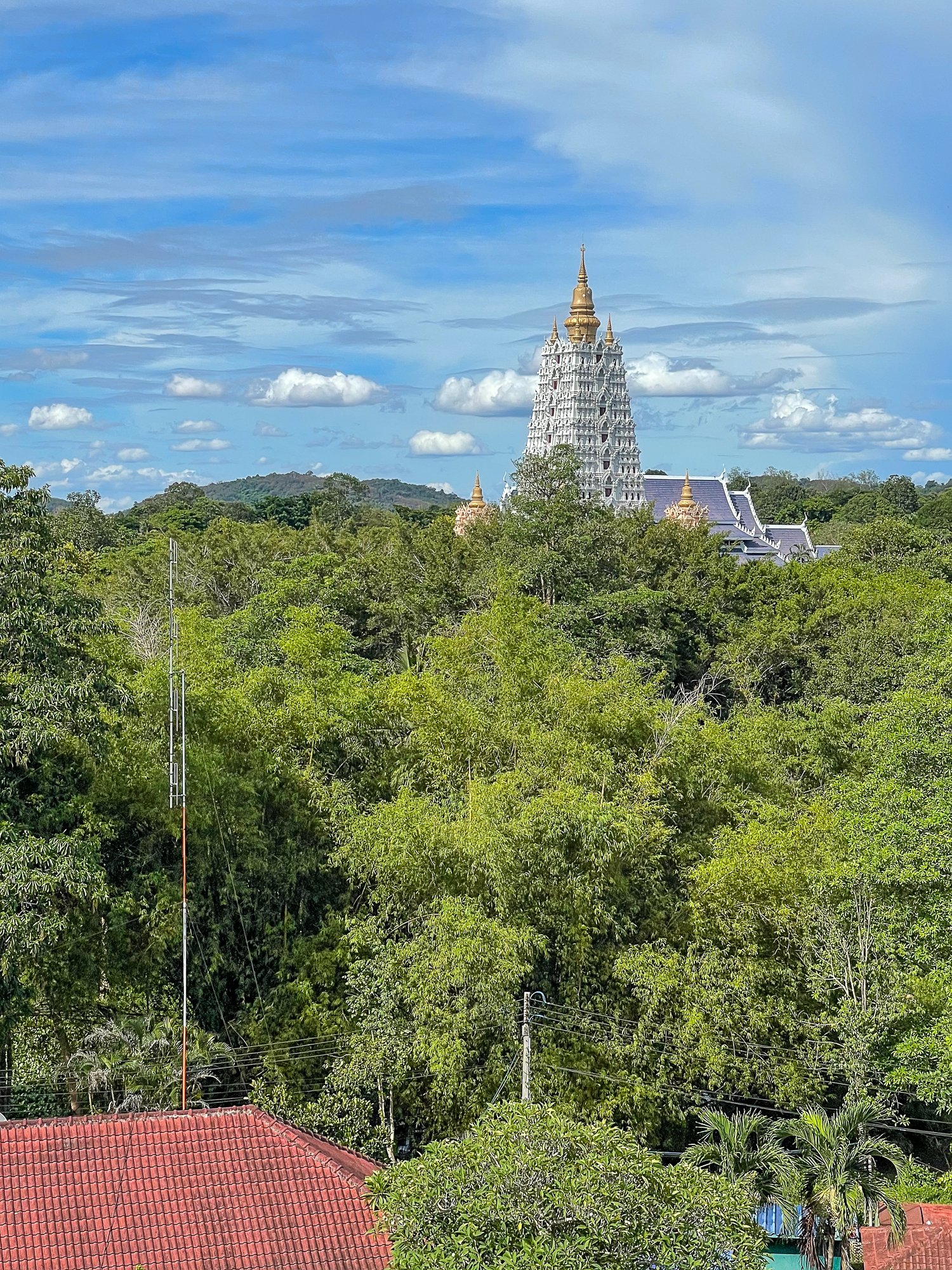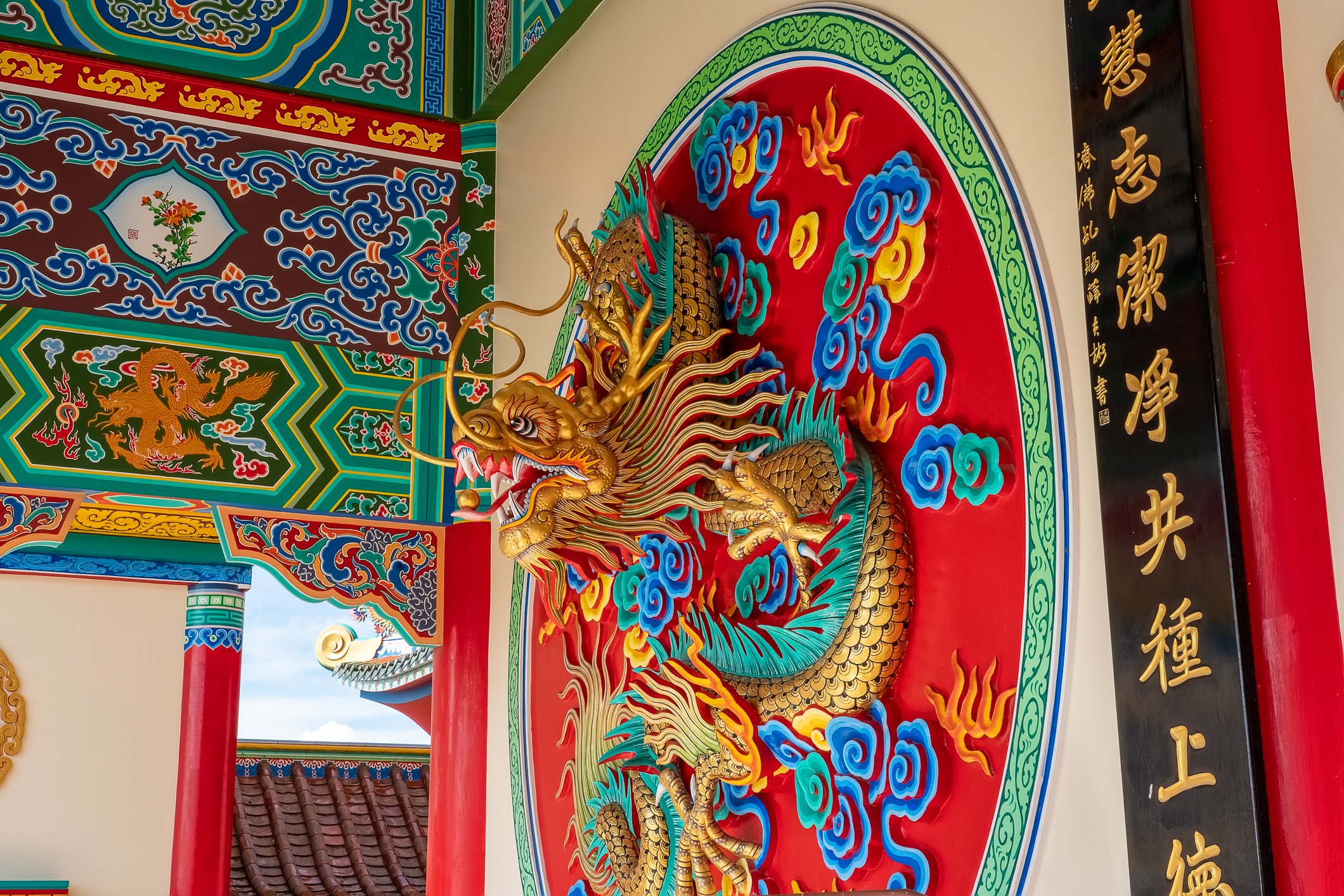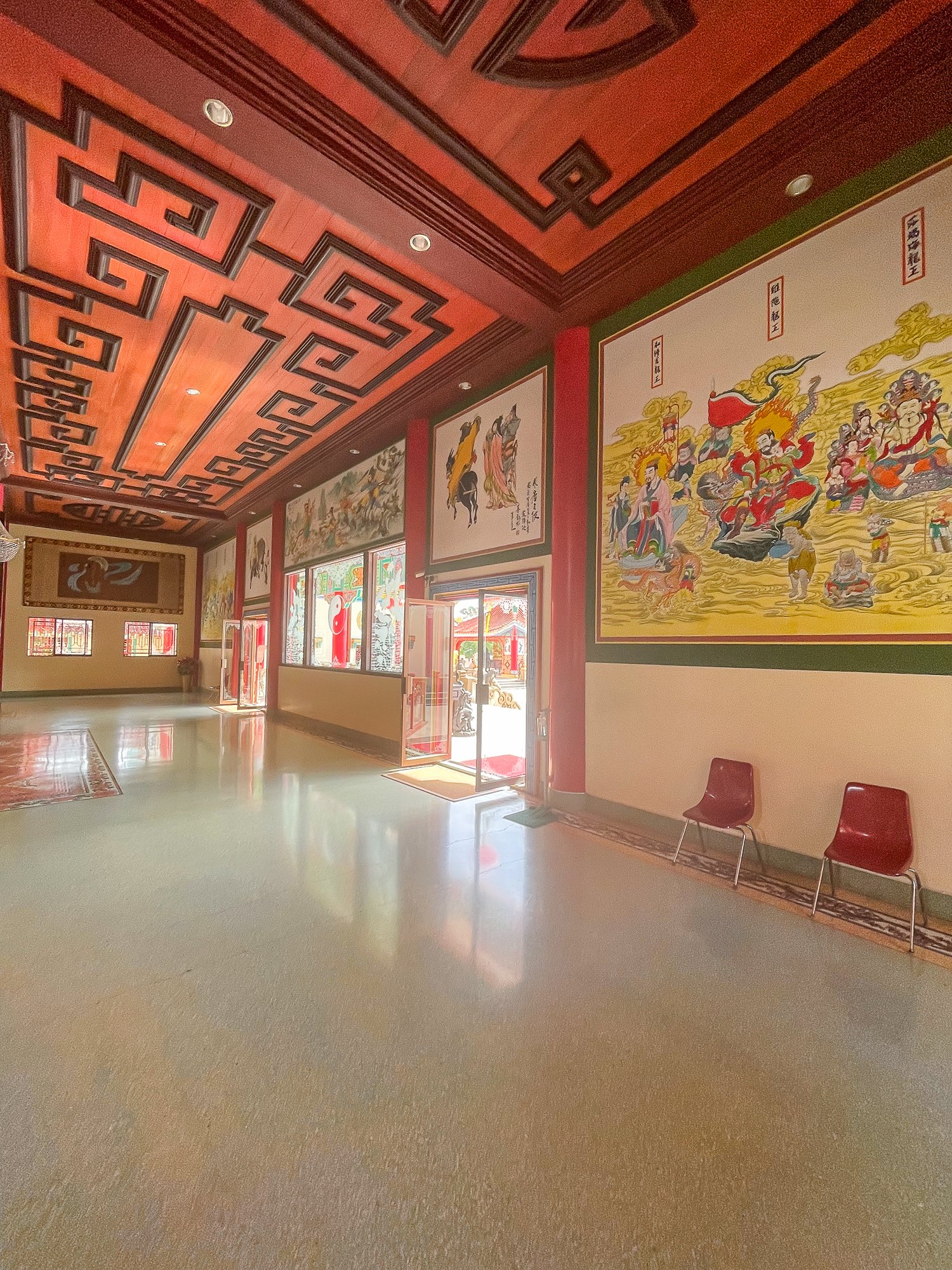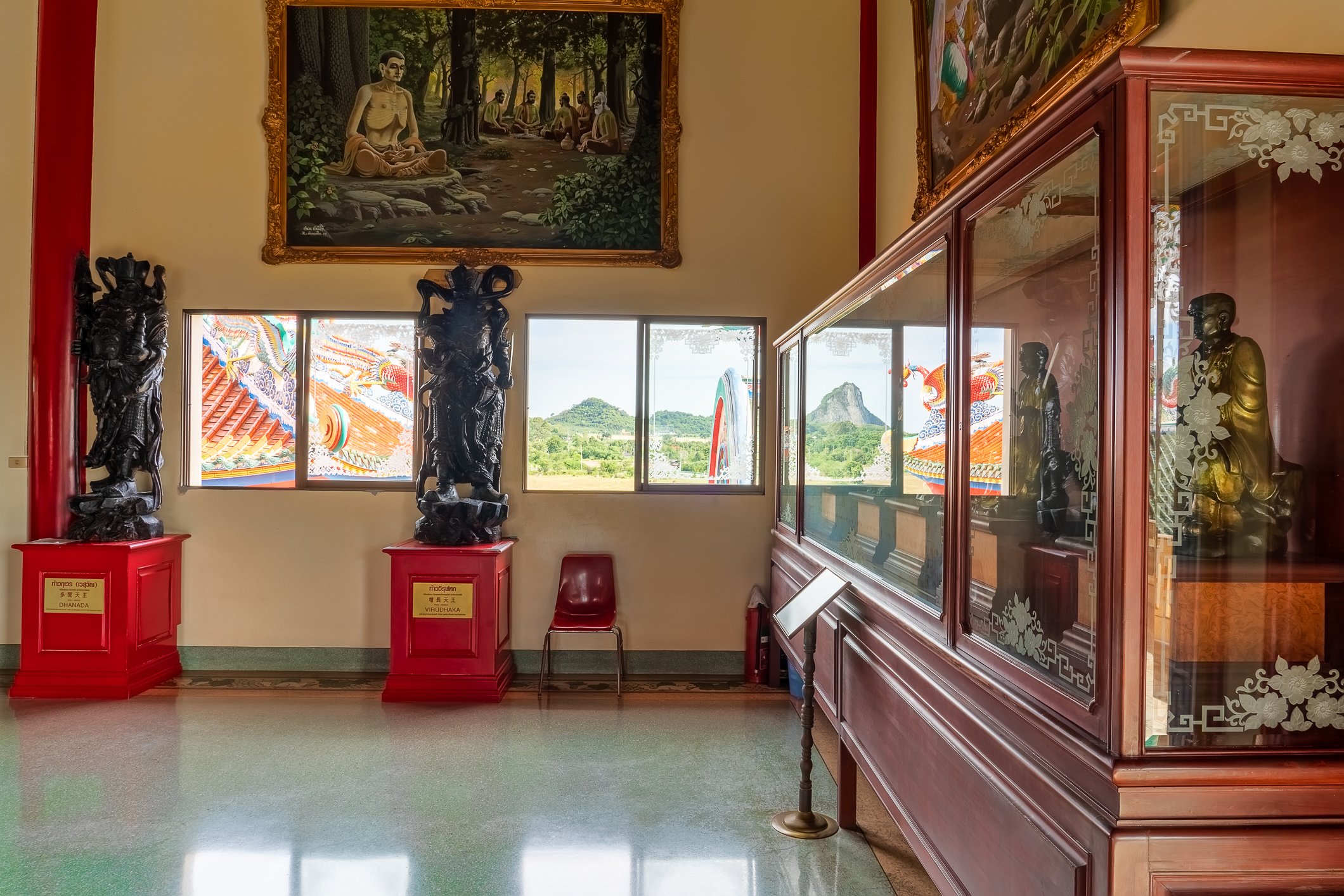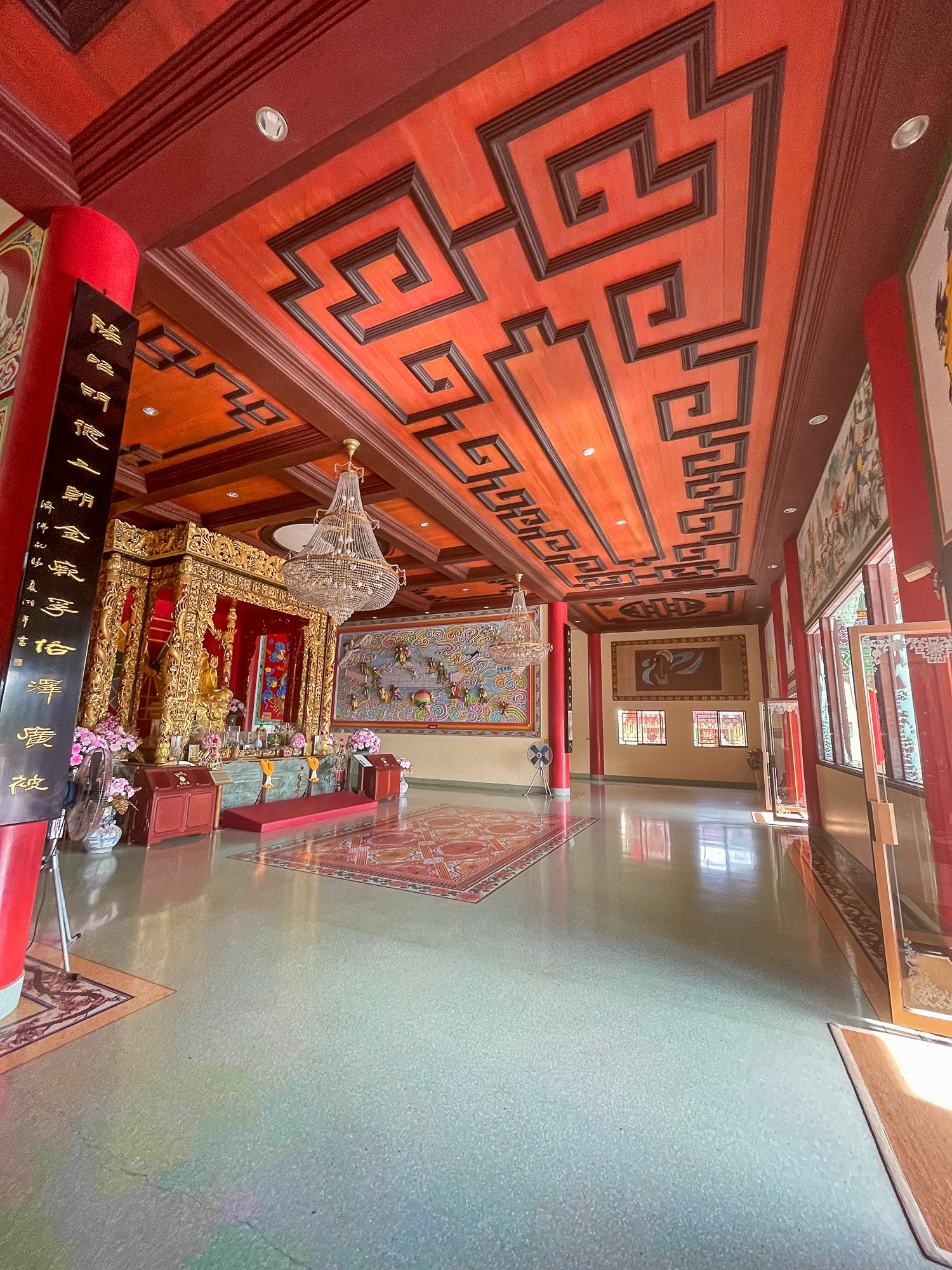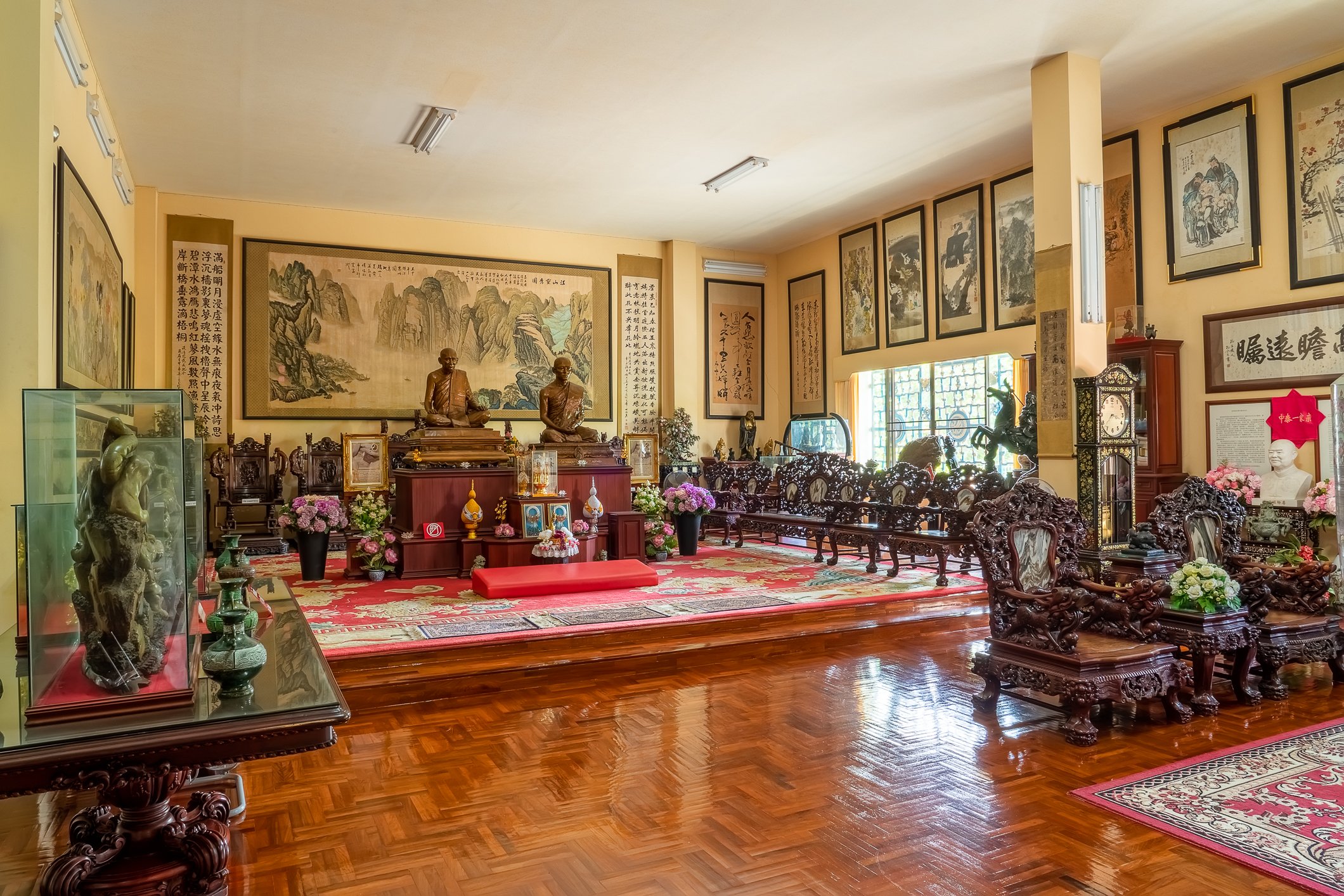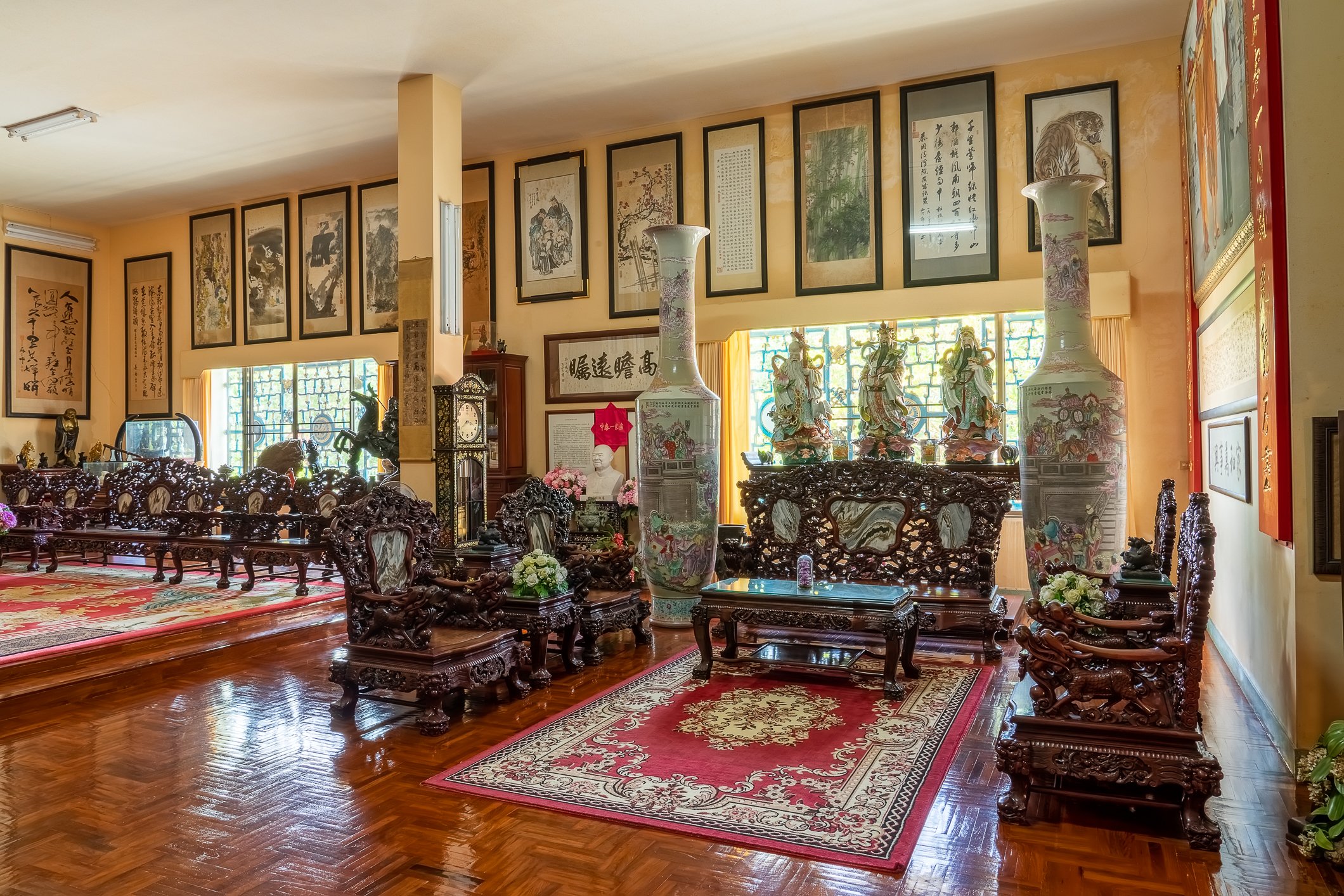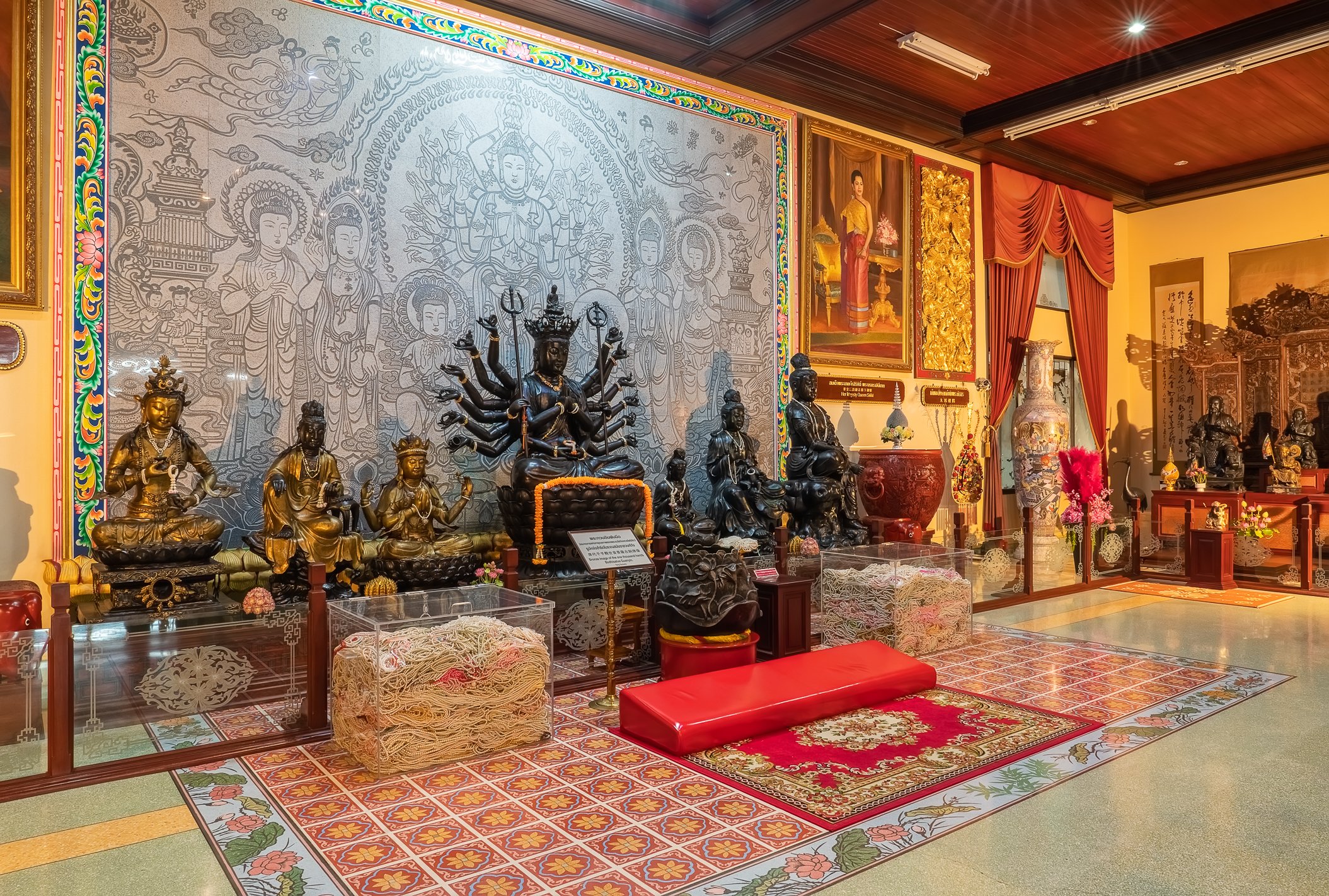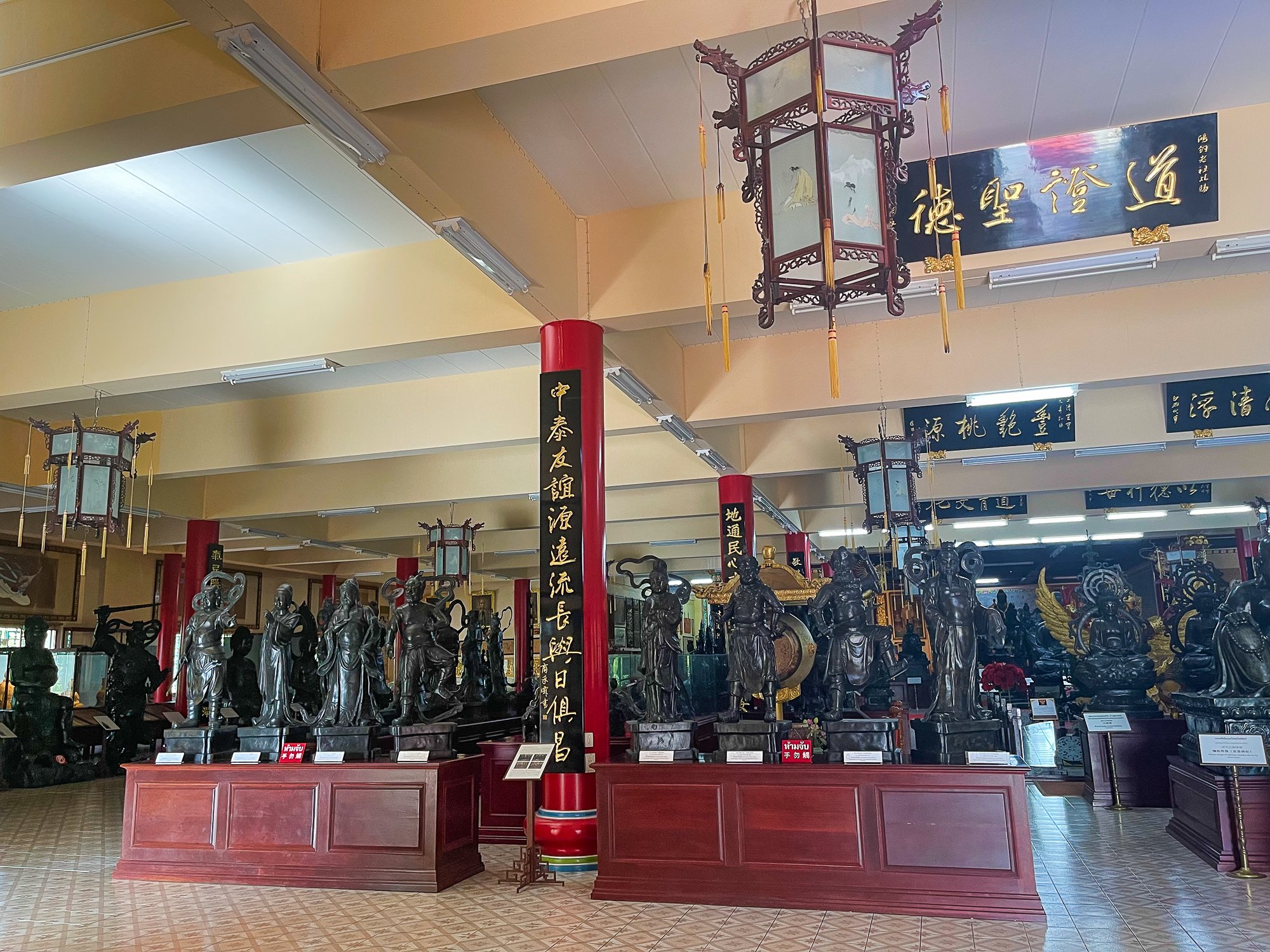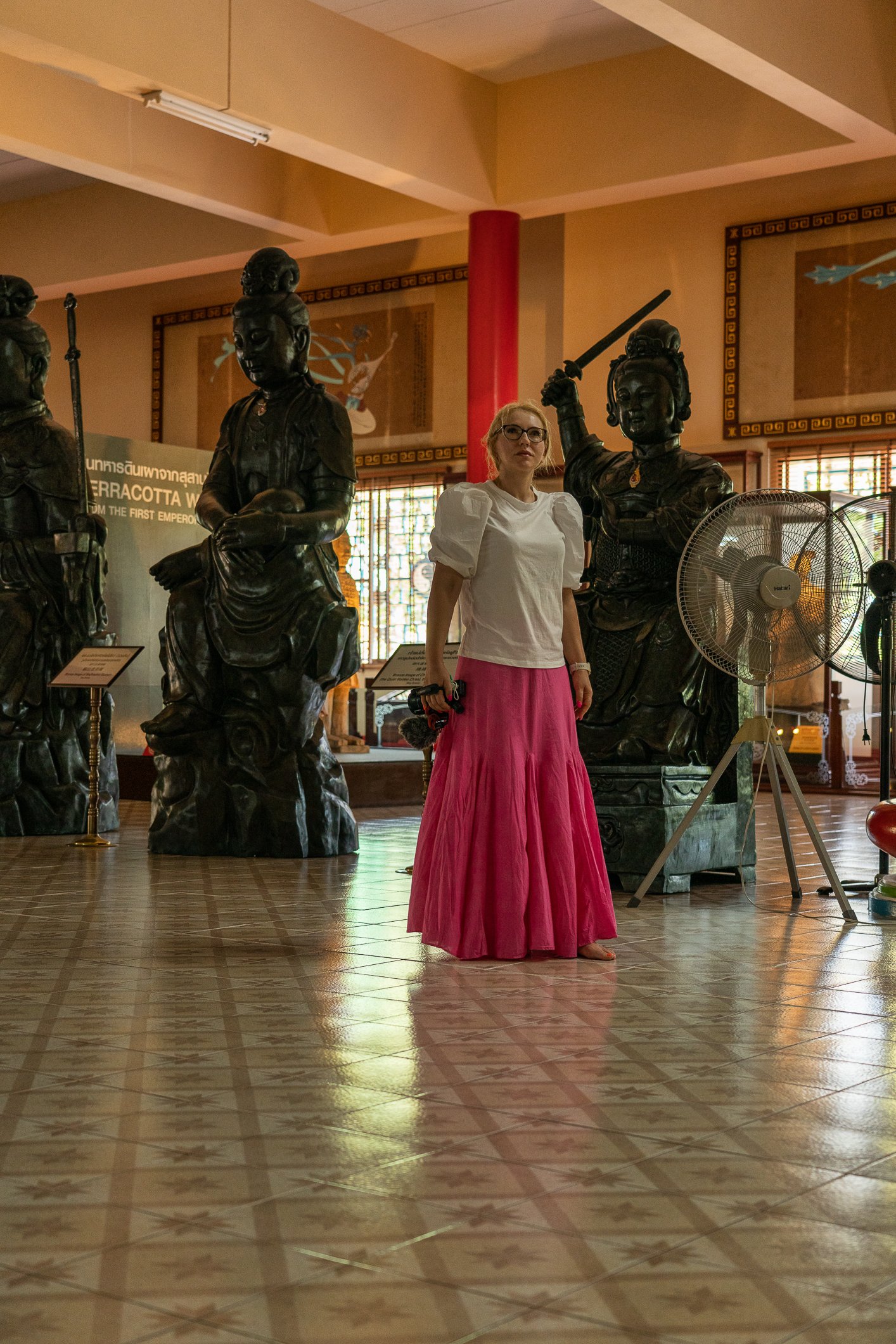Next to the Main Hall stands the elegant five-storied pagoda. It represents the five elements in Buddhist cosmology: earth, water, fire, wind, and space.
The current structure dates from 1973. While it looks traditional on the outside, it’s built with a modern steel-and-concrete frame for durability. It stands 53.32 meters tall and was relocated to the left side of the Main Hall after World War II—it used to stand on the right.
Obok Głównej Sali stoi smukła, pięciopoziomowa pagoda. Reprezentuje pięć elementów w buddyjskiej kosmologii: ziemię, wodę, ogień, wiatr i przestrzeń.
Obecna pagoda pochodzi z 1973 roku. Choć z zewnątrz wygląda tradycyjnie, zbudowana jest z nowoczesnych materiałów – stali i betonu. Ma 53.32 metra wysokości. Przed wojną stała po prawej stronie głównego budynku świątyni, ale po odbudowie umieszczono ją po lewej.
In front of the Main Hall is the omikuji corner, where visitors can draw traditional fortune slips. It’s open 24/7—even when the temple itself is closed. To draw an omikuji, you shake a metal box until a numbered stick falls out. Then you find the corresponding drawer and take your fortune. There are seven levels of luck, from daikichi (大吉excellent luck or great blessing) to daikyou (大凶terrible luck). If you like your fortune, you take it home. If you don’t like it and you don’t want it to come true, tie the omikuji to a wire rack nearby to leave the bad luck behind in hope to find a better one.
Przed głównym budynkiem świątyni znajduje się punkt omikuji, czyli miejsce z tradycyjnymi wróżbami. Wróżby można losować przez całą dobę, nawet gdy sama świątynia jest zamknięta.
Aby znaleźć swoją wróżbę, potrząsa się metalowym pojemnikiem, aż wypadnie patyczek z numerkiem. Znajduje się wowczas szufladkę z tym samym numerkiem i wyciąga los. Istnieje siedem poziomów szczęścia – od daikichi (wielkie błogosławieństwo) po daikyou (wielki pech).
Jeśli wróżba jest pomyślna – zabierasz ją ze sobą do domu. Jeśli nie, można przywiązać ją do stojaka, zostawiając zły los za sobą.
There are several smaller shrines and statues scattered throughout the temple grounds. We pass by Yakushidō Hall, built around 345 years ago. It is one of the oldest surviving buildings in the entire complex.
A short walk brings us also to Awashimadō Hall, dedicated to Awashima Myojin, a deity associated with women’s health, childbirth, and protection. Every year on February 8th, the traditional ritual of Harikuyō is performed here. Used and broken sewing needles are gently inserted into blocks of tofu or konjac and offered with gratitude, giving the humble tools symbolic rest after a lifetime of service.
Nearby, a small landscaped stream winds through the garden, home to colorful koi carp. There are also several stone statues and figures tucked into corners or beside footpaths.
Na terenie świątyni znajduje się kilka mniejszych kapliczek i posągów. Pacerując, mijamy kaplicę Yakushidō, wzniesioną około 345 lat temu. To jeden z najstarszych zachowanych budynków w całym kompleksie.
Niedaleko znajduje się też kaplica Awashimadō, poświęcona Awashimie Myōjin – bóstwu opiekującemu się zdrowiem kobiet, ciążą i porodem. Co roku, 8 lutego, odbywa się tutaj tradycyjny rytuał Harikuyō – zużyte i złamane igły do szycia wkłada się ostrożnie w tofu lub konjac i ofiarowuje jako wyraz wdzięczności. To symboliczny gest zapewnienia tym przedmiotom odpoczynku po latach wiernej służby.
Ogrody przecina strumień, w którym mieszkają kolorowe karpie koi. Są tu także kamienne posągi i figury, ustawione przy ścieżkach lub w zakamarkach ogrodu.
A short walk to the east brings us to Asakusa Jinja, a Shinto shrine much smaller than Sensoji. Dedicated to the two brothers and their village chief who founded Sensoji, it likely dates back to the late 12th century, with the current structure built in 1649. Remarkably, it survived numerous fires, the Great Kantō Earthquake of 1923, and the 1945 firebombing, making it one of the oldest surviving structures in Tokyo.
Guarding the path to the shrine and keeping away evil spirits are two komainu (lion–dog guardians). Komainu are often found at Shinto shrines, and typically, one is depicted with an open mouth, and the other has a closed mouth, symbolizing the beginning and end of all things.
The main hall’s facade is beautifully decorated with carvings of dragon motifs, phoenixes, and kirin—symbolic animals representing peace, happiness, and divine safeguarding.
We also notice a fountain with three dragon figures under a small roof. In Japanese belief, dragons are water spirits that bring rain to ward off fire, offering protection and prosperity.
Krótki spacer w kierunku wschodnim prowadzi nas do Asakusa Jinja – świątyni shintō, znacznie mniejszej niż Sensoji. Poświęcona jest ona dwóm braciom i naczelnikowi wioski, którzy założyli Sensoji. Jej początki sięgają prawdopodobnie końca XII wieku, a obecna struktura została wzniesiona w 1649 roku. Co niezwykłe, świątynia przetrwała liczne pożary, wielkie trzęsienie ziemi w Kantō w 1923 roku oraz bombardowania z 1945 roku, co czyni ją jednym z najstarszych zachowanych budynków w Tokio.
Ścieżki do świątyni strzeże para komainu – lwopodobnych psów, mających za zadanie odpędzać złe duchy. Komainu są częstym elementem świątyń shintō – jeden z nich ma zazwyczaj otwartą paszczę, drugi zamkniętą. Symbolizuje to początek i koniec wszelkich rzeczy.
Fasada głównej hali jest zdobiona rzeźbieniami przedstawiającymi smoki, feniksy i kiriny – mityczne stworzenia symbolizujące pokój, szczęście i boską opiekę.
Naszą uwagę przyciąga również fontanna z trzema smokami ukryta pod niewielkim daszkiem. W japońskich wierzeniach smoki są duchami wody, które sprowadzają deszcz chroniący przed ogniem, przynosząc ochronę i pomyślność.
Instead of heading back via Nakamise-dōri, we followed the path behind it, which was far less crowded and full of quirky souvenir shops and little eateries. From here, we turn right and are heading to Tokyo Skytree, one of the tallest structures in the world, for some breathtaking panoramic views of the city.
Practicalities: To reach Sensoji, take the Asakusa Subway Line to Asakusa Station—a short walk from the temple. The station is also served by the Ginza Line and the Tobu Skytree Line.
Zamiast wracać przez zatłoczoną ulicę Nakamise-dōri, wybraliśmy ścieżkę biegnącą za nią – znacznie mniej uczęszczaną, za to pełną oryginalnych sklepików z pamiątkami i małych knajpek. Stamtąd odbijamy w prawo i ruszamy w stronę Tokyo Skytree – jednej z najwyższych konstrukcji na świecie – by podziwiać zapierającą dech w piersiach panoramę miasta.
Informacje praktyczne: aby dotrzeć do Sensoji, należy wsiąść w linię metra Asakusa i wysiąść na stacji Asakusa – to tylko krótki spacer od świątyni. Stacja ta jest również obsługiwana przez linię Ginza oraz Tobu Skytree Line.
































